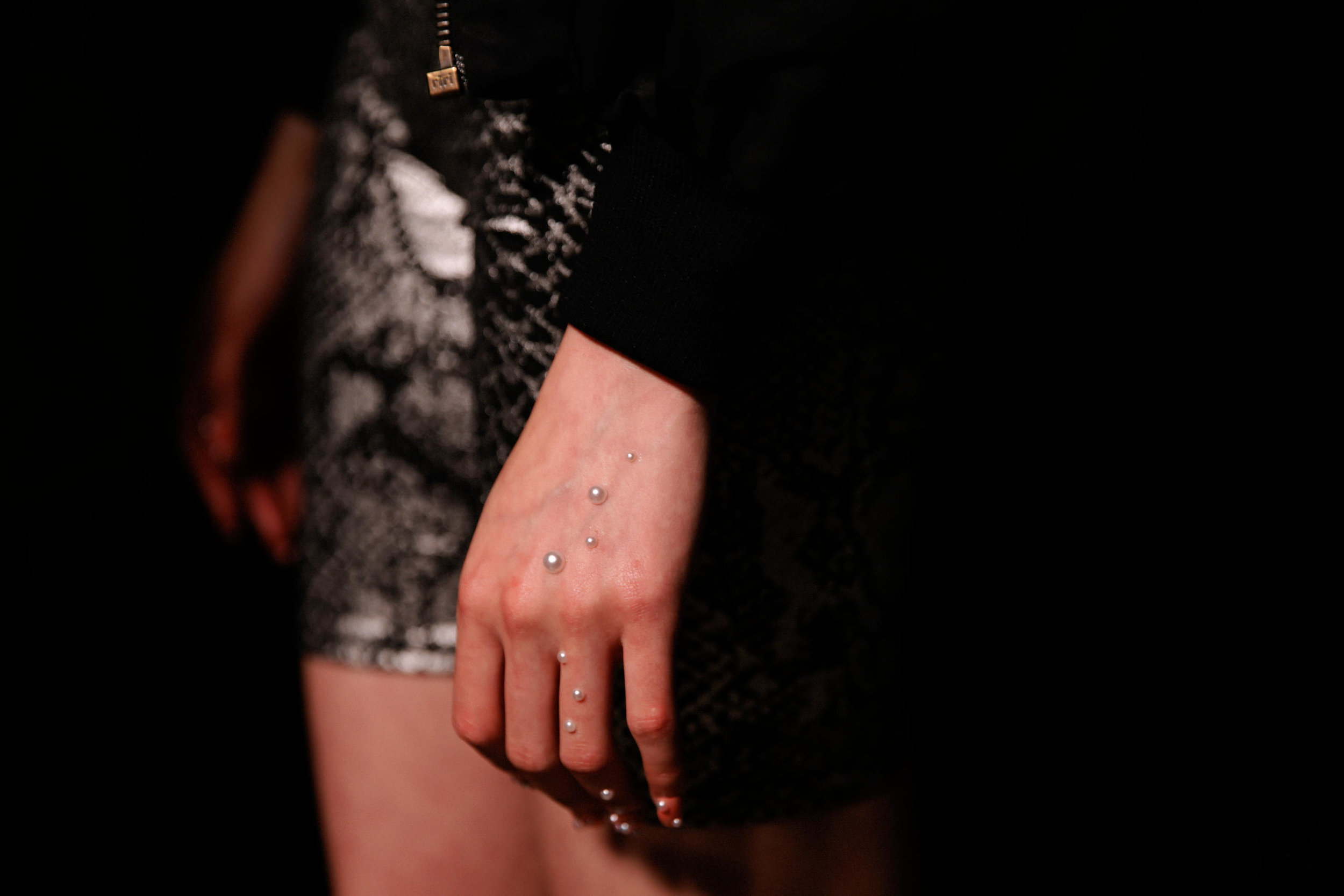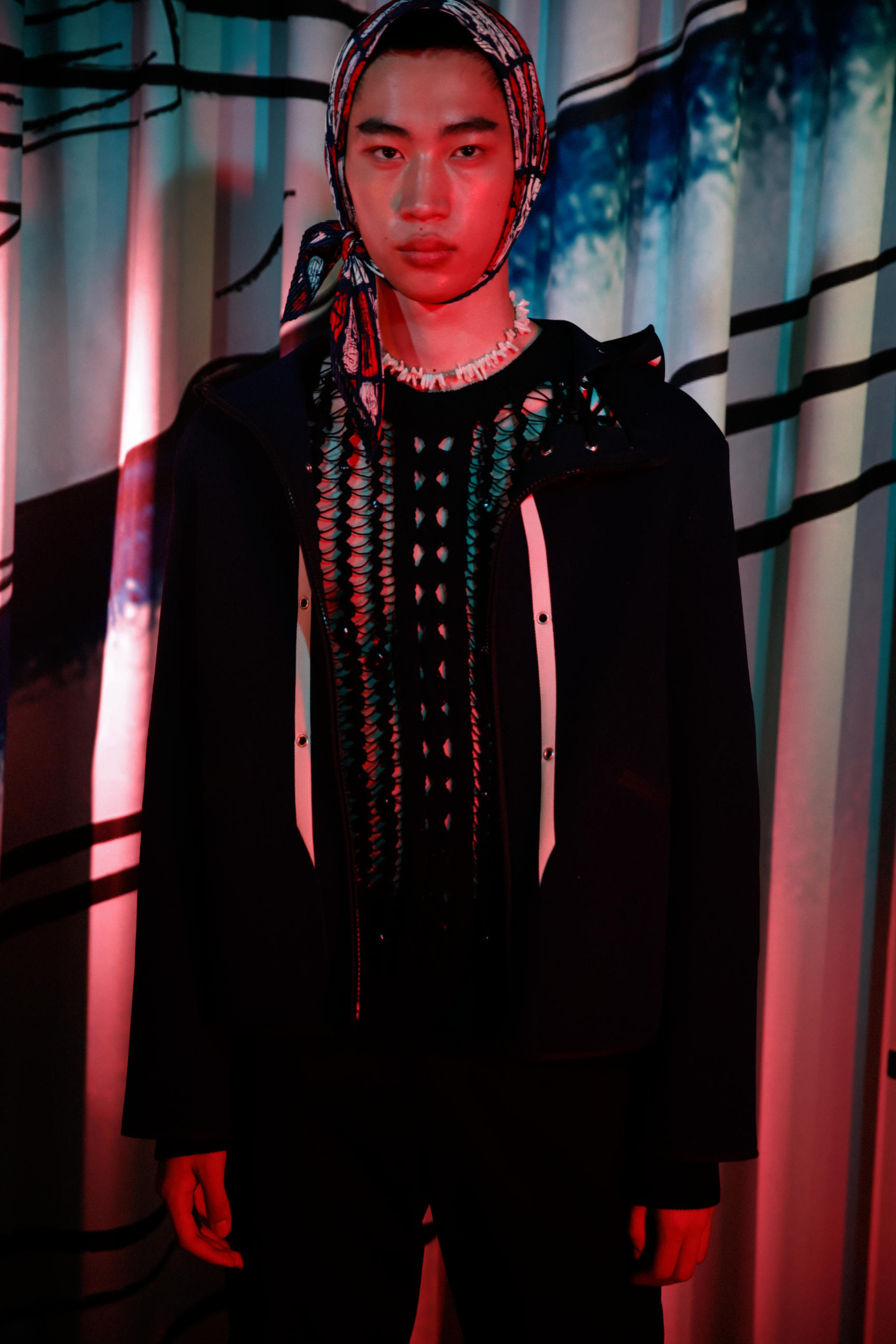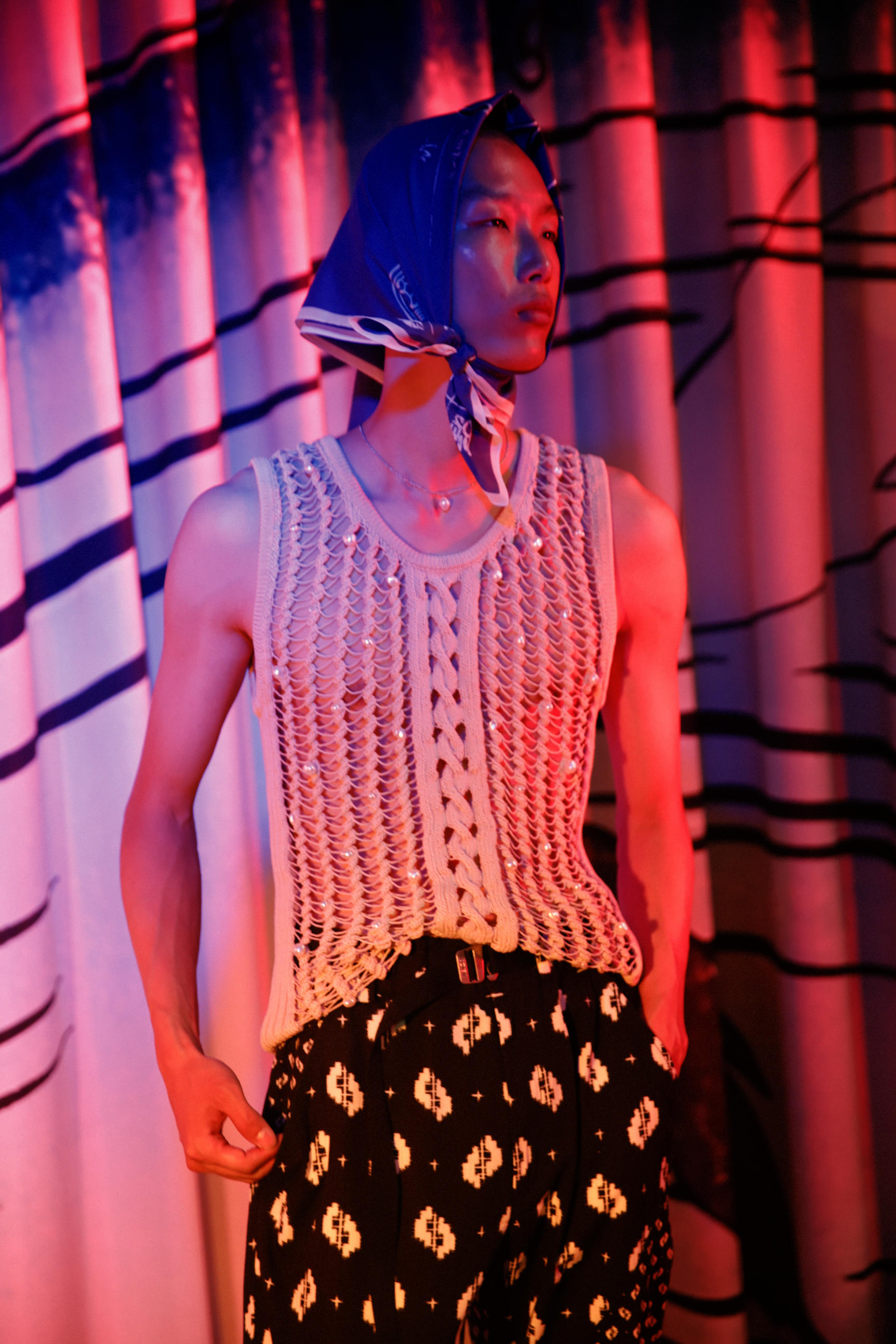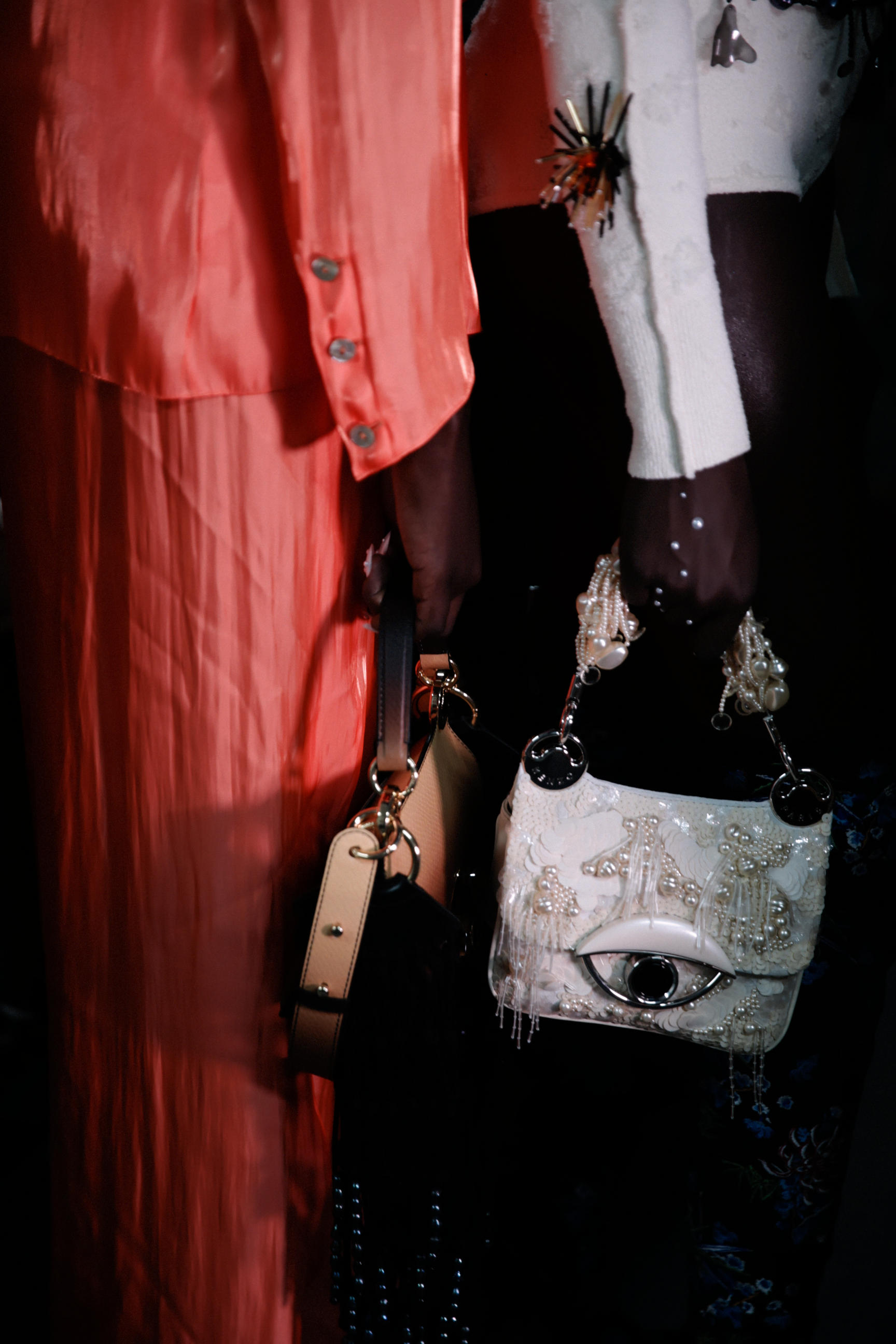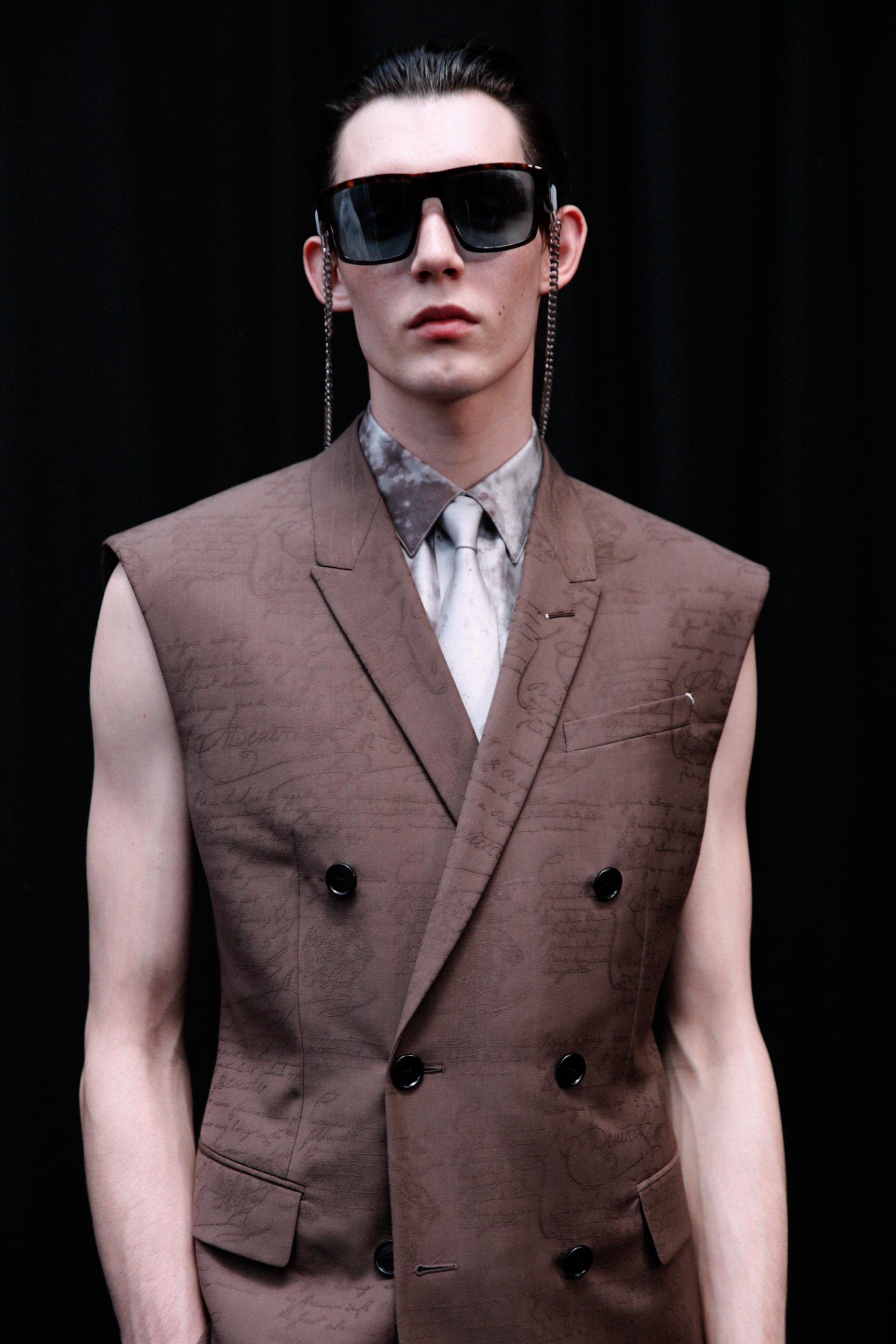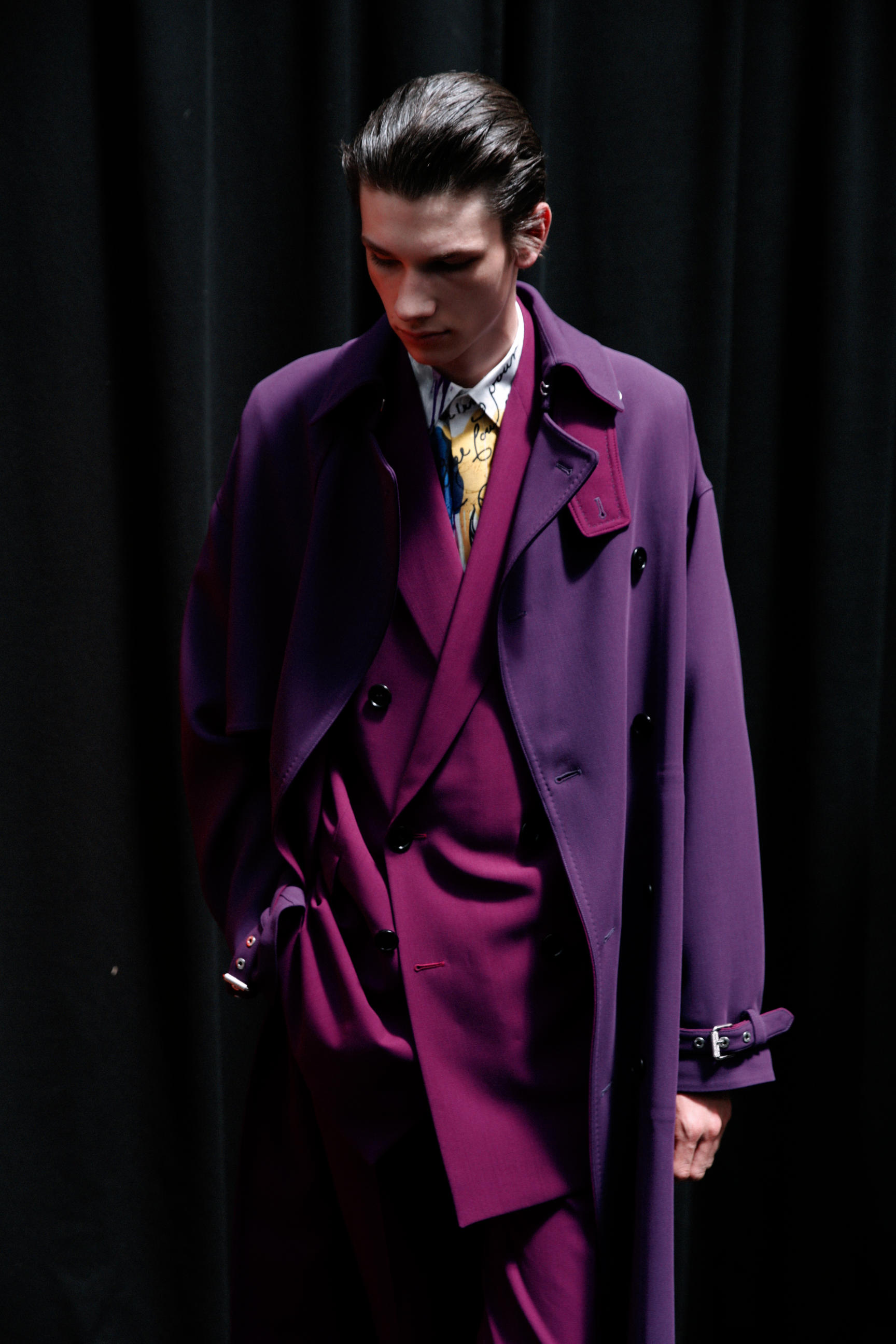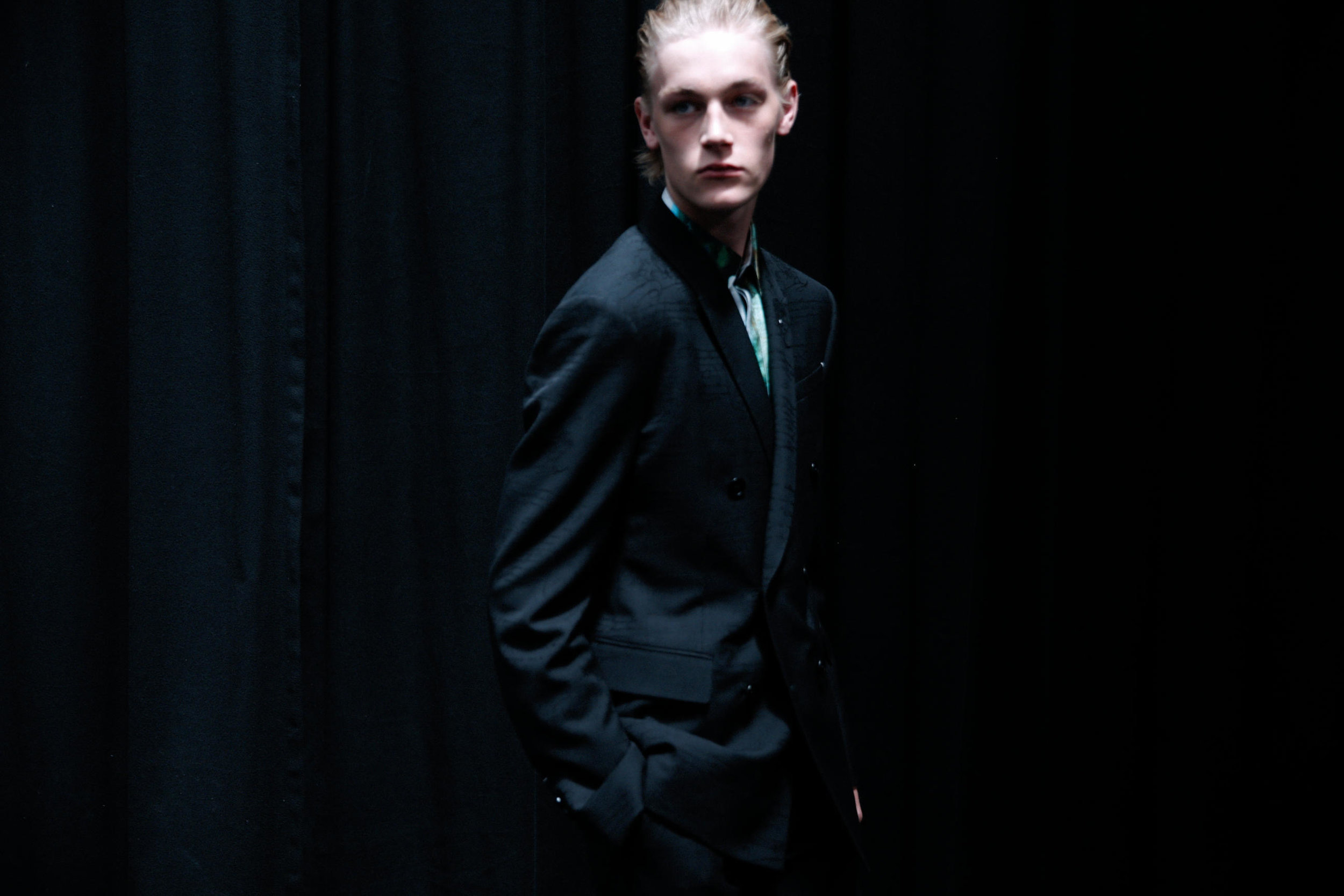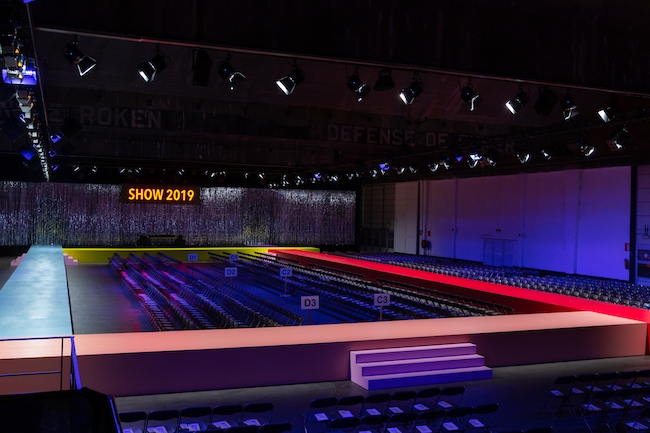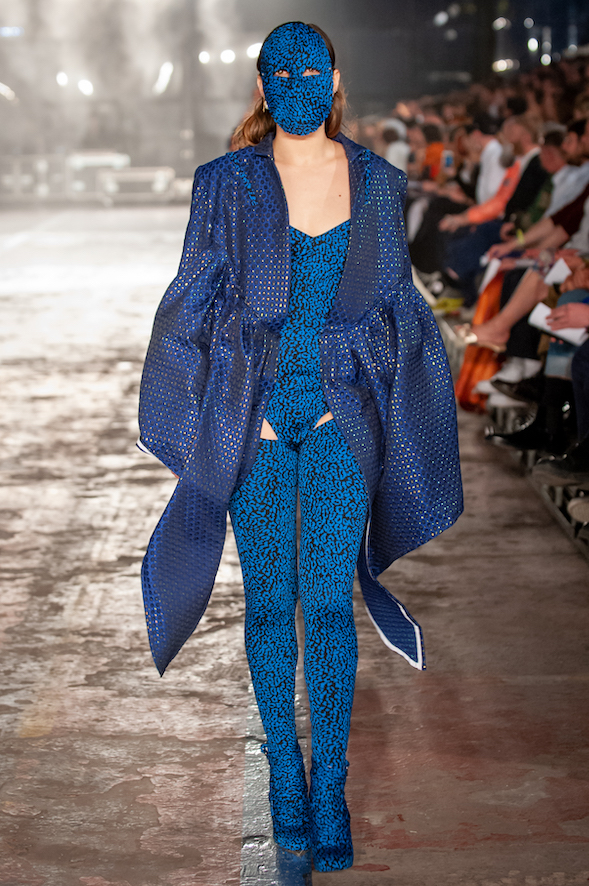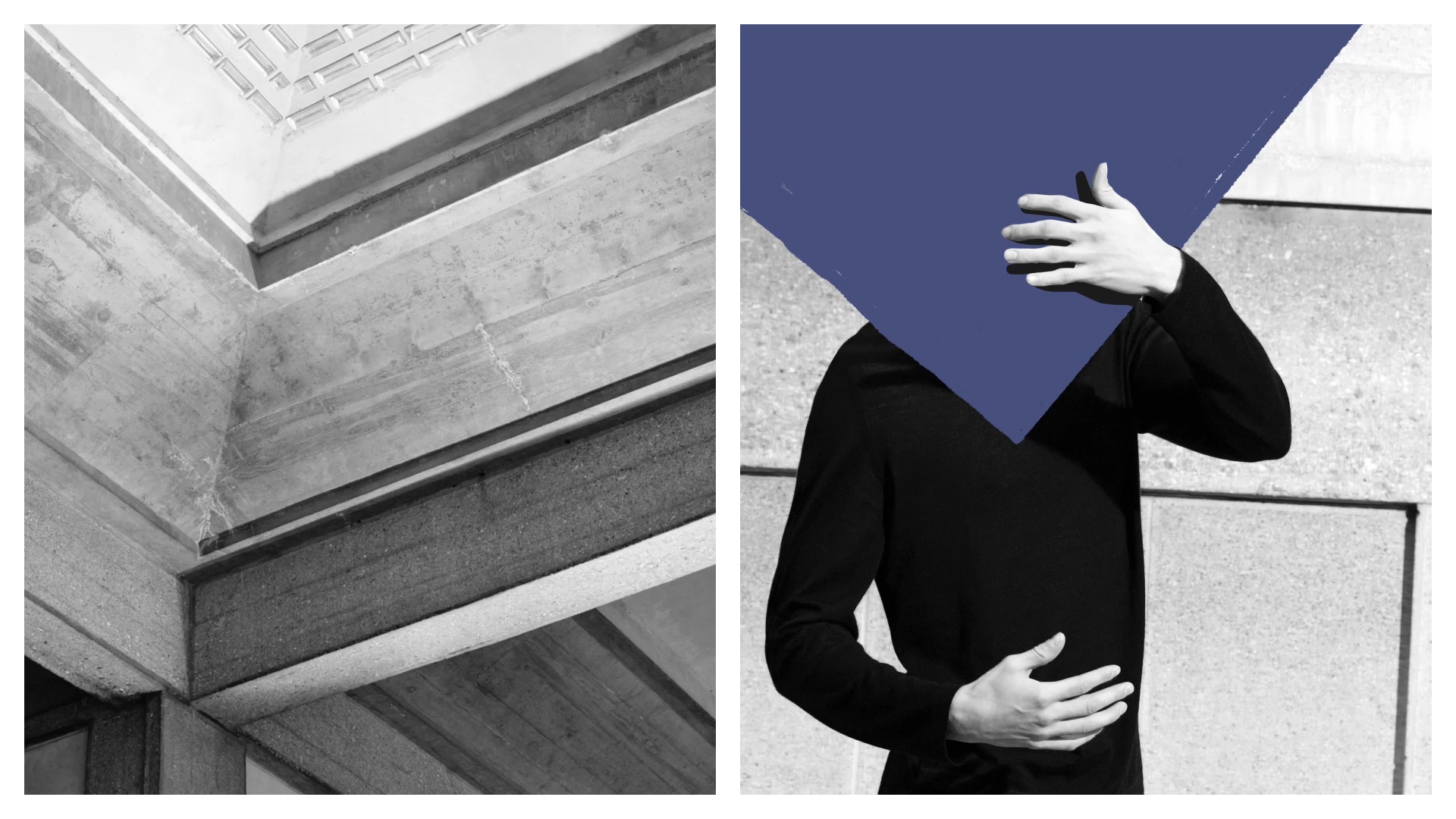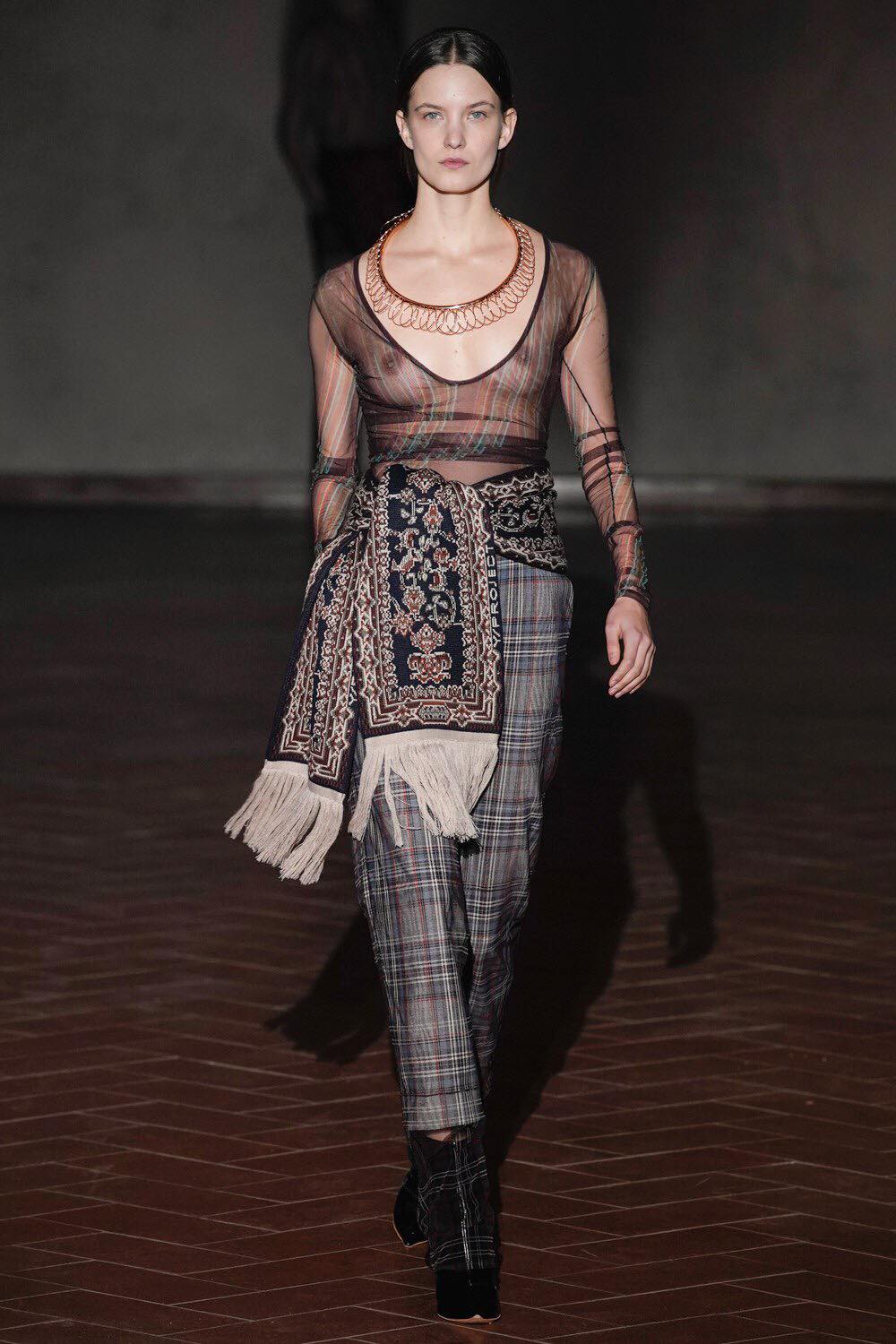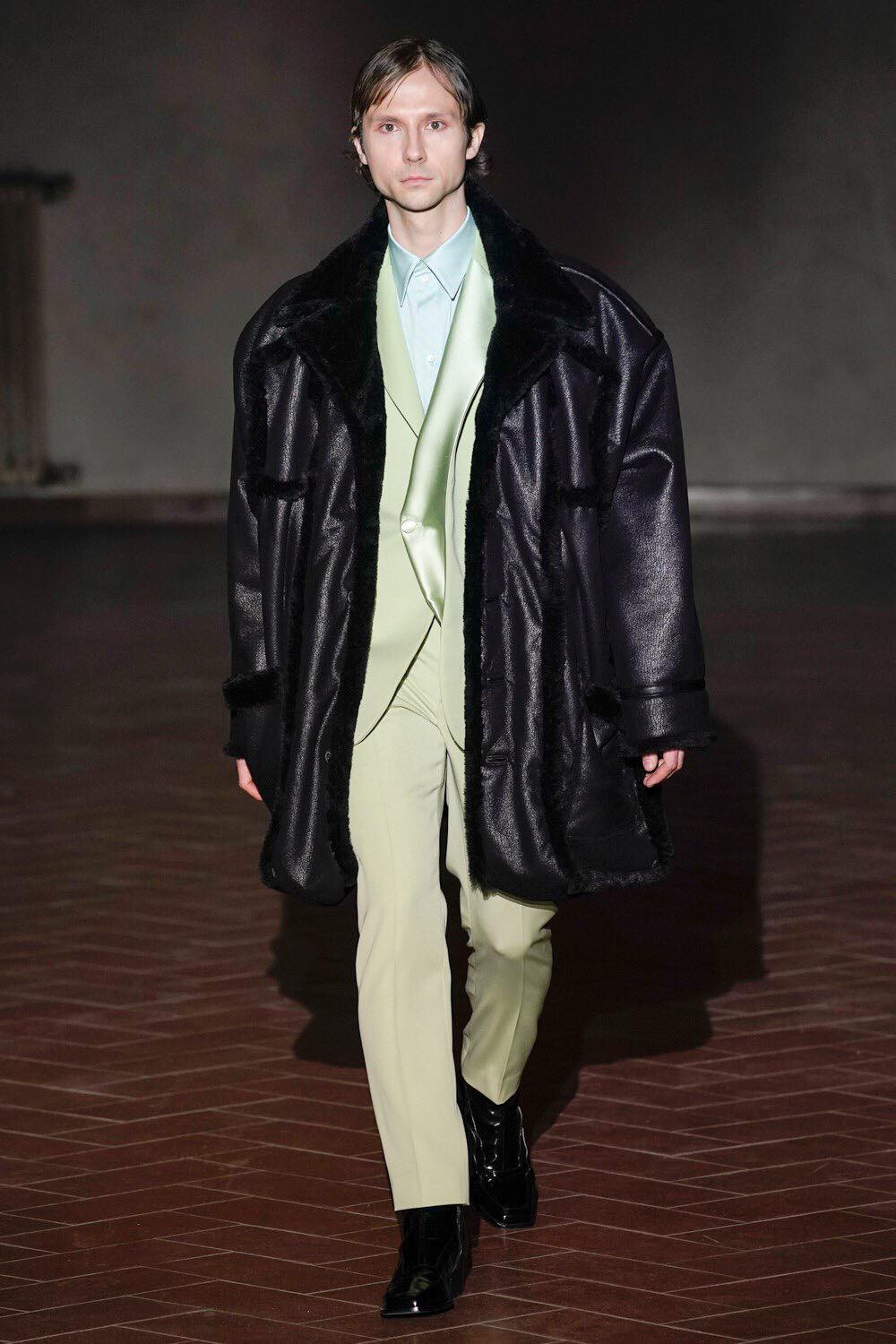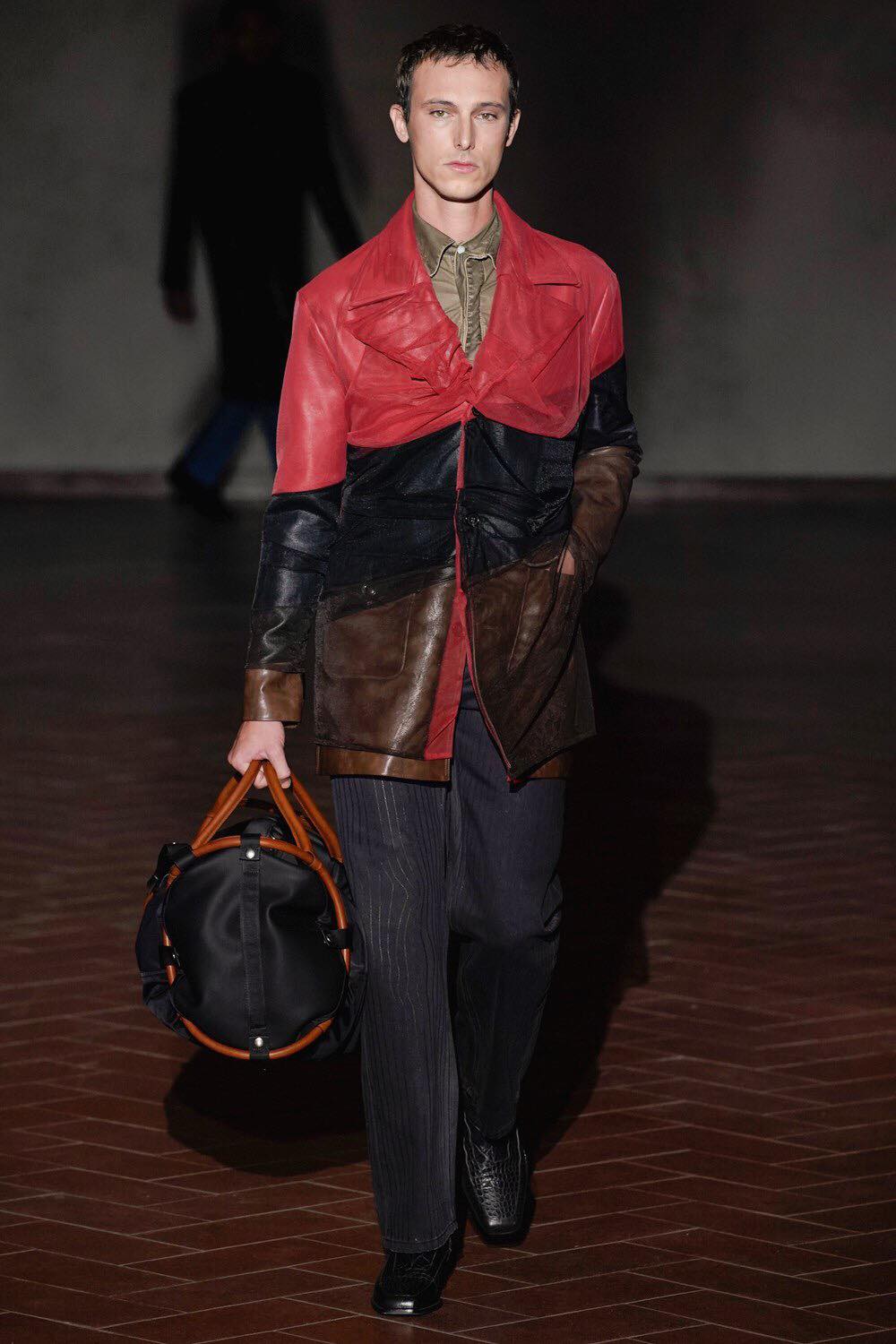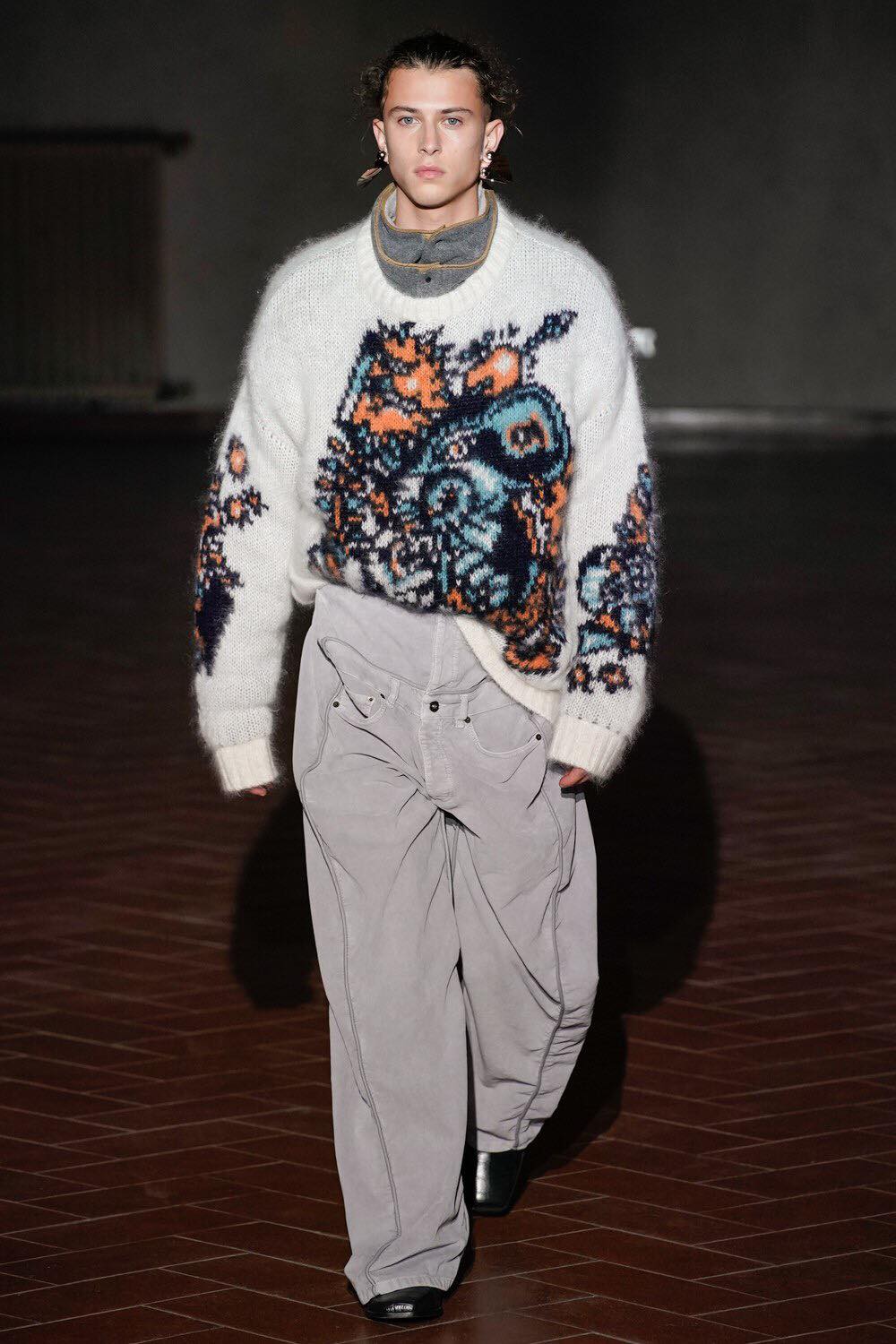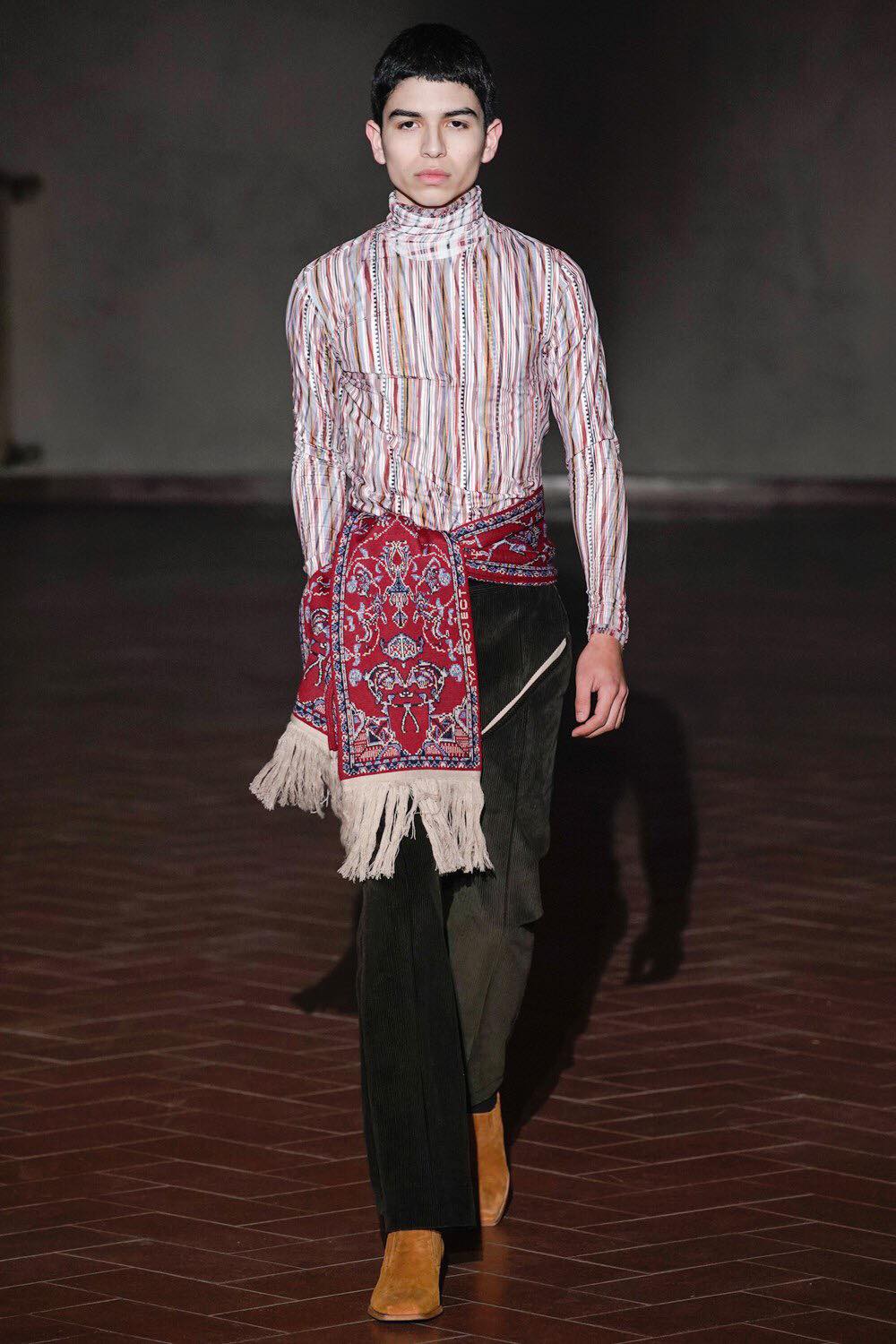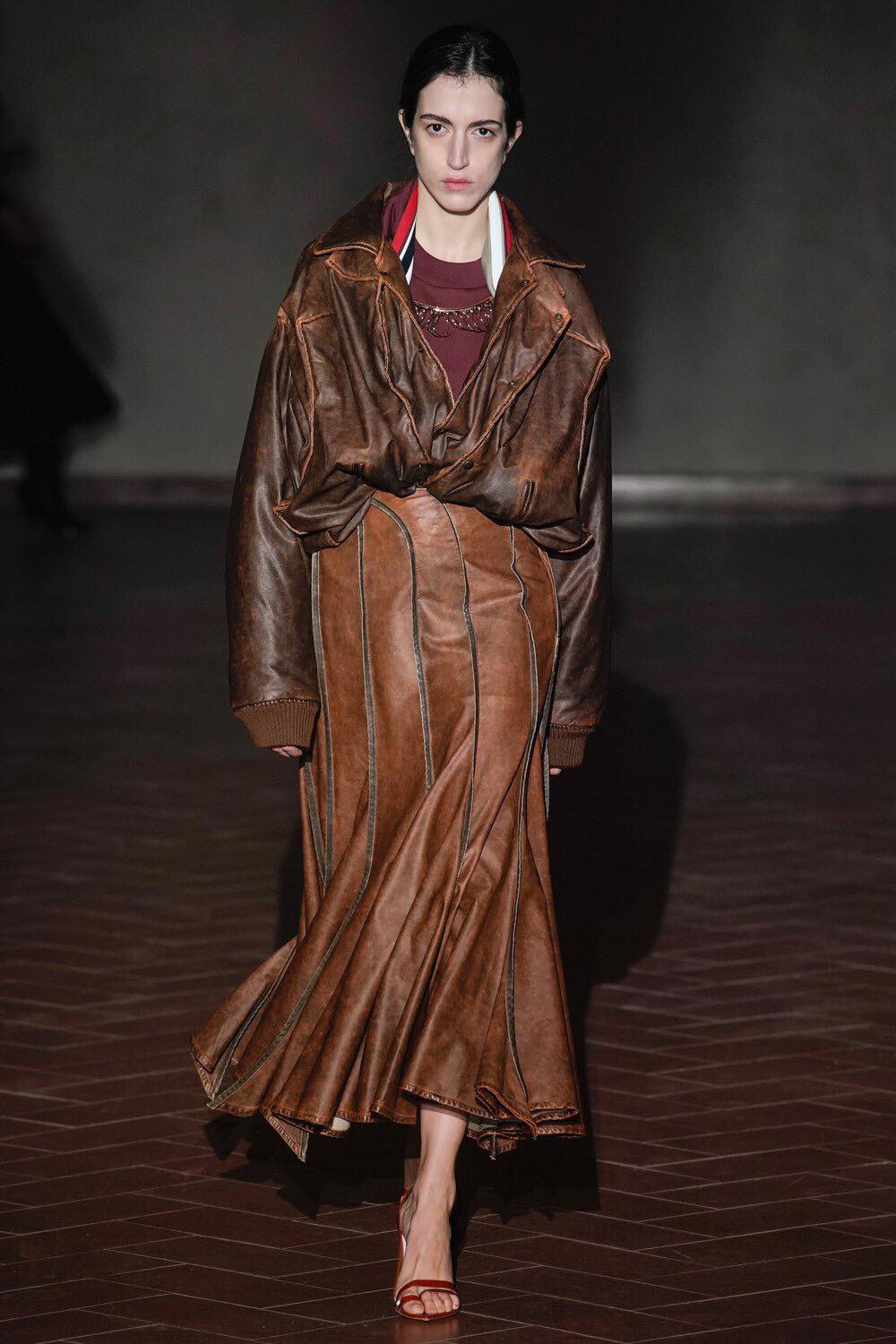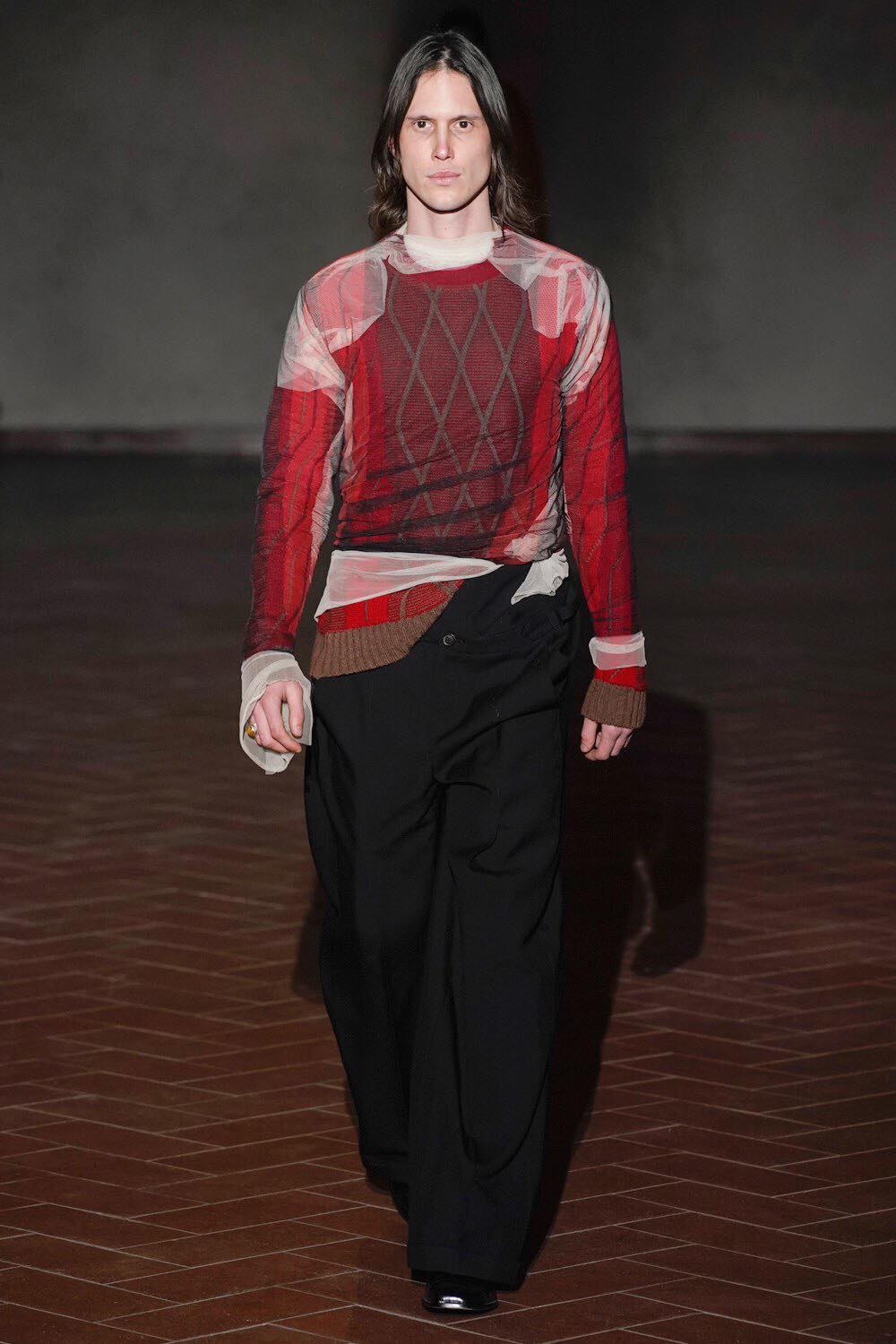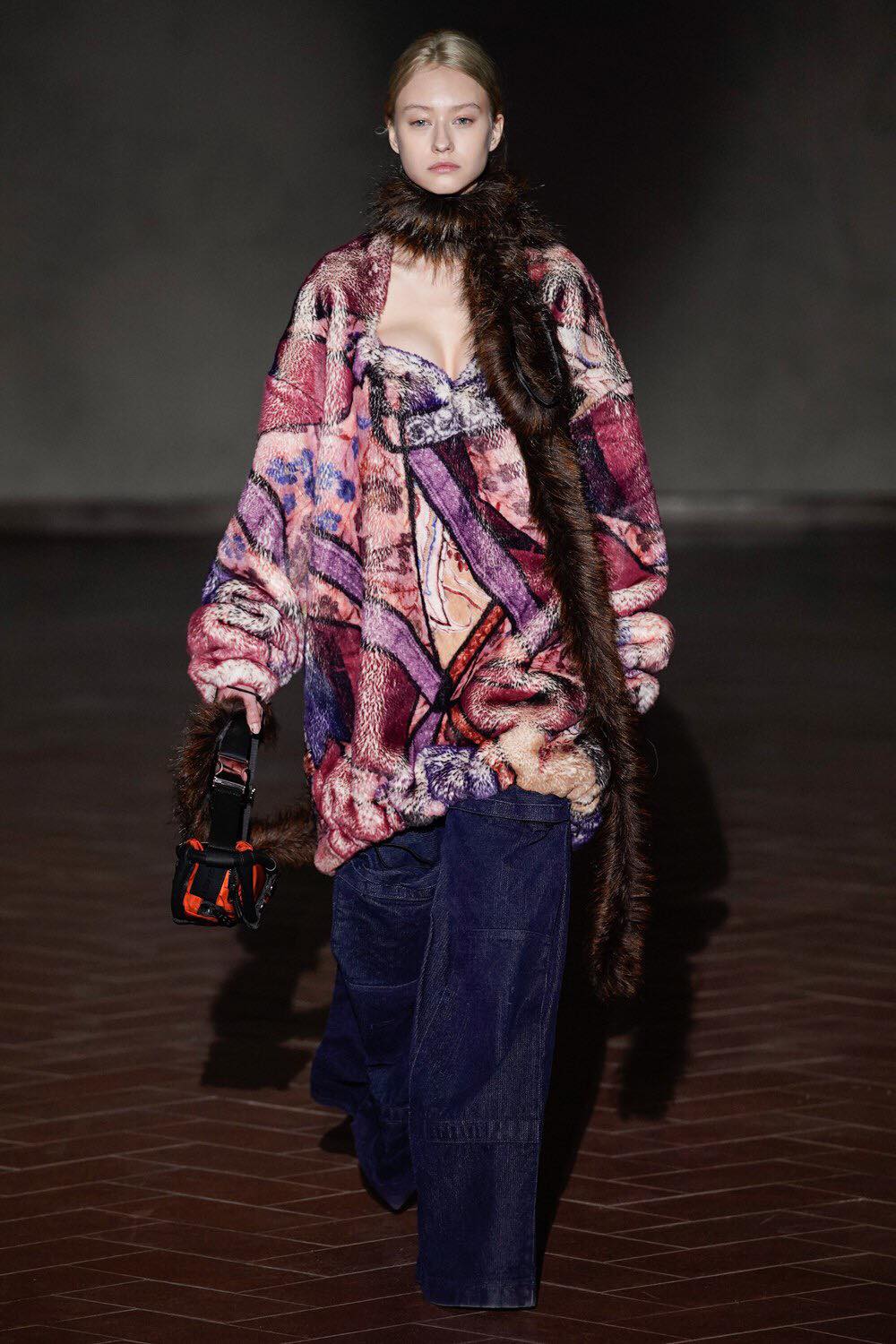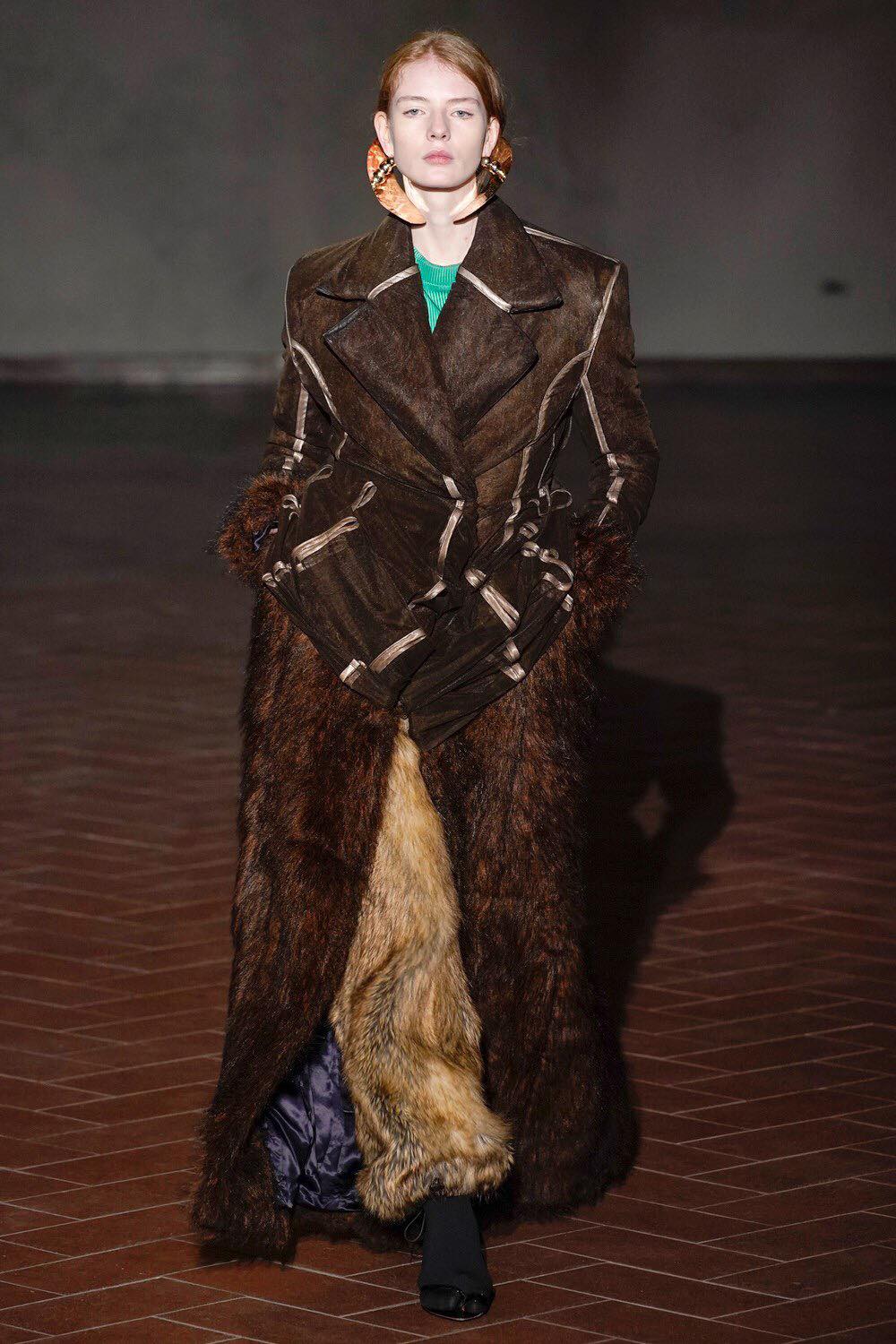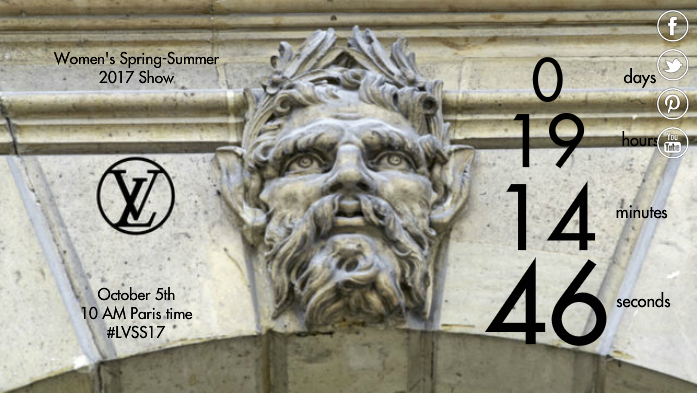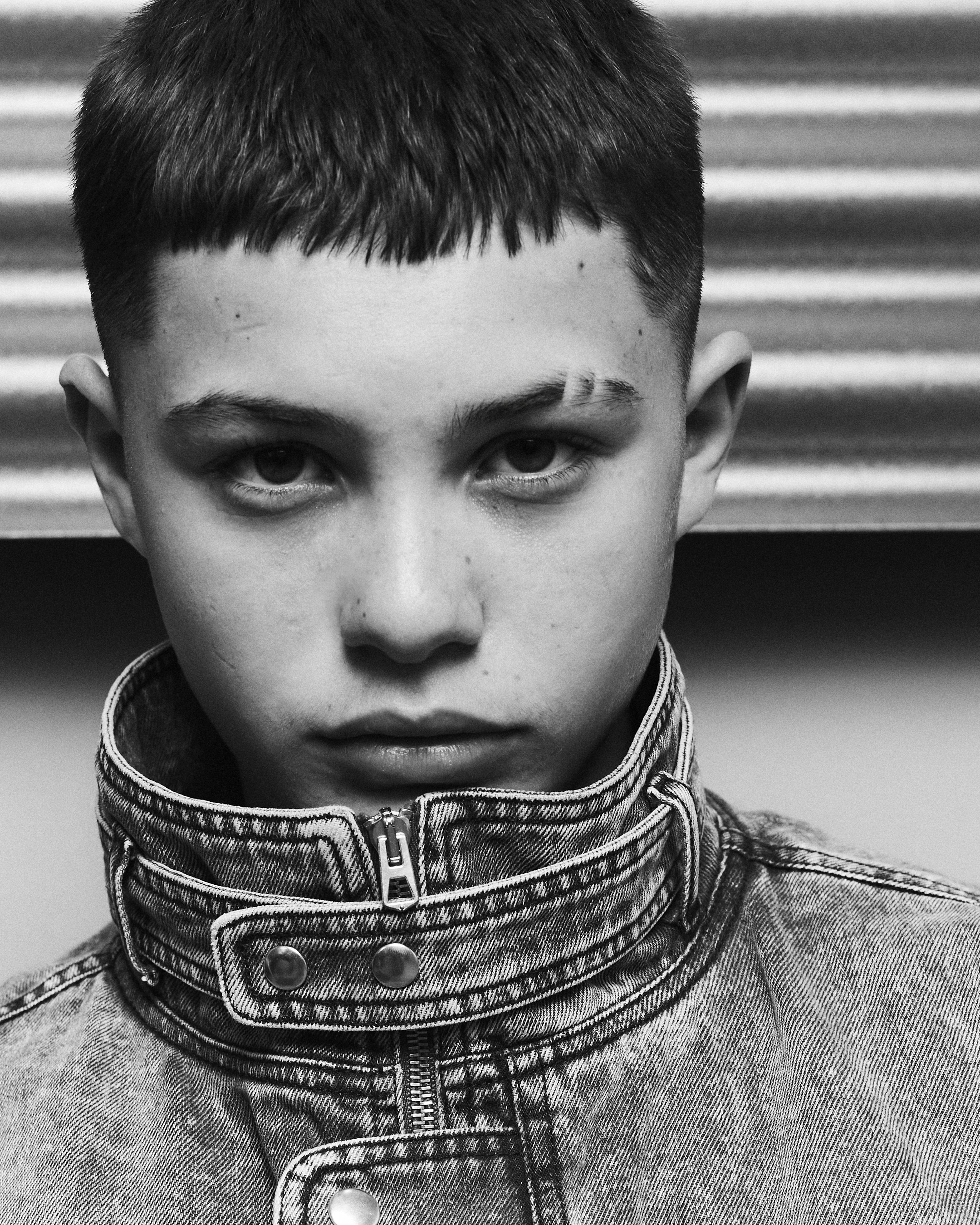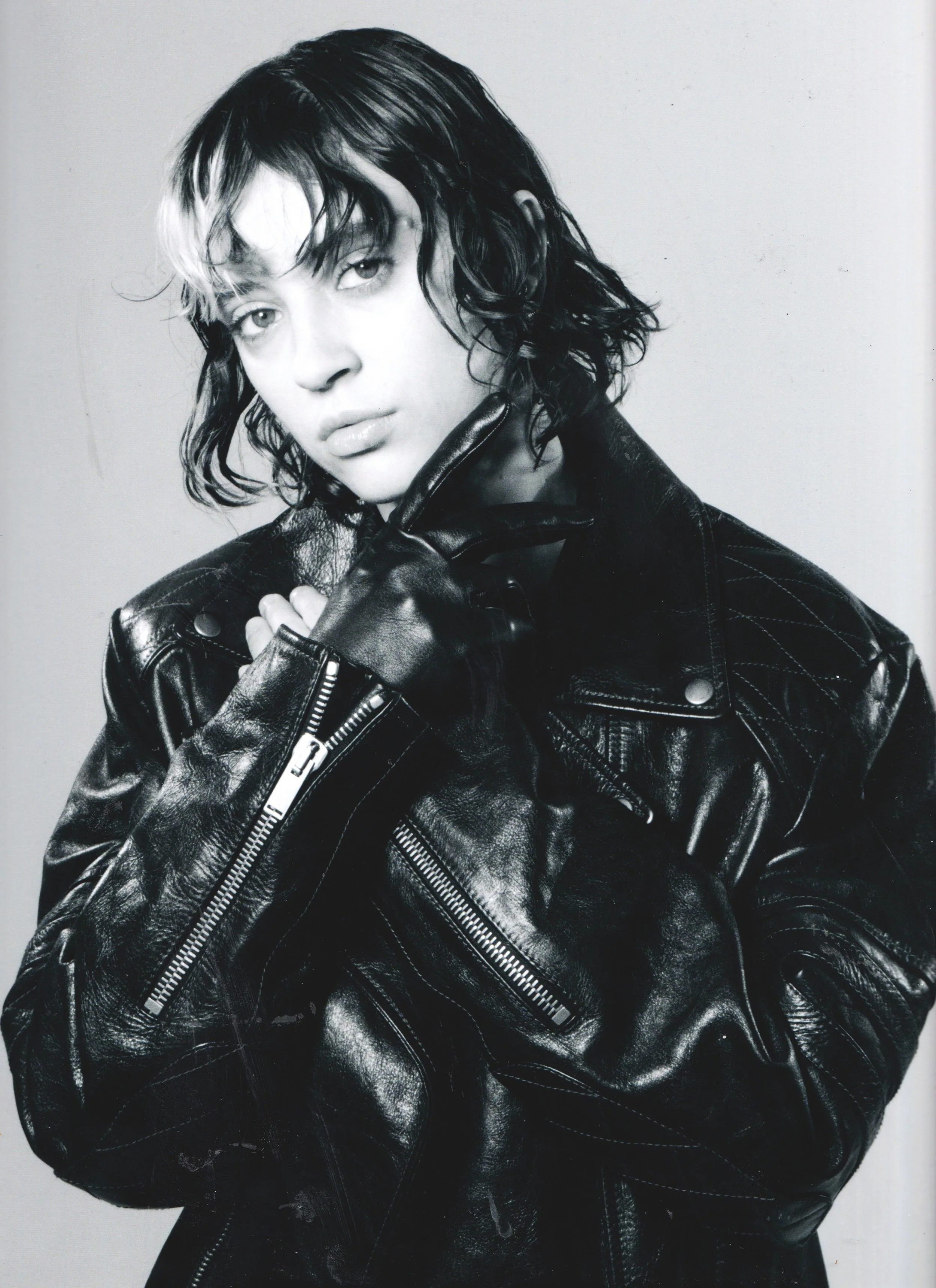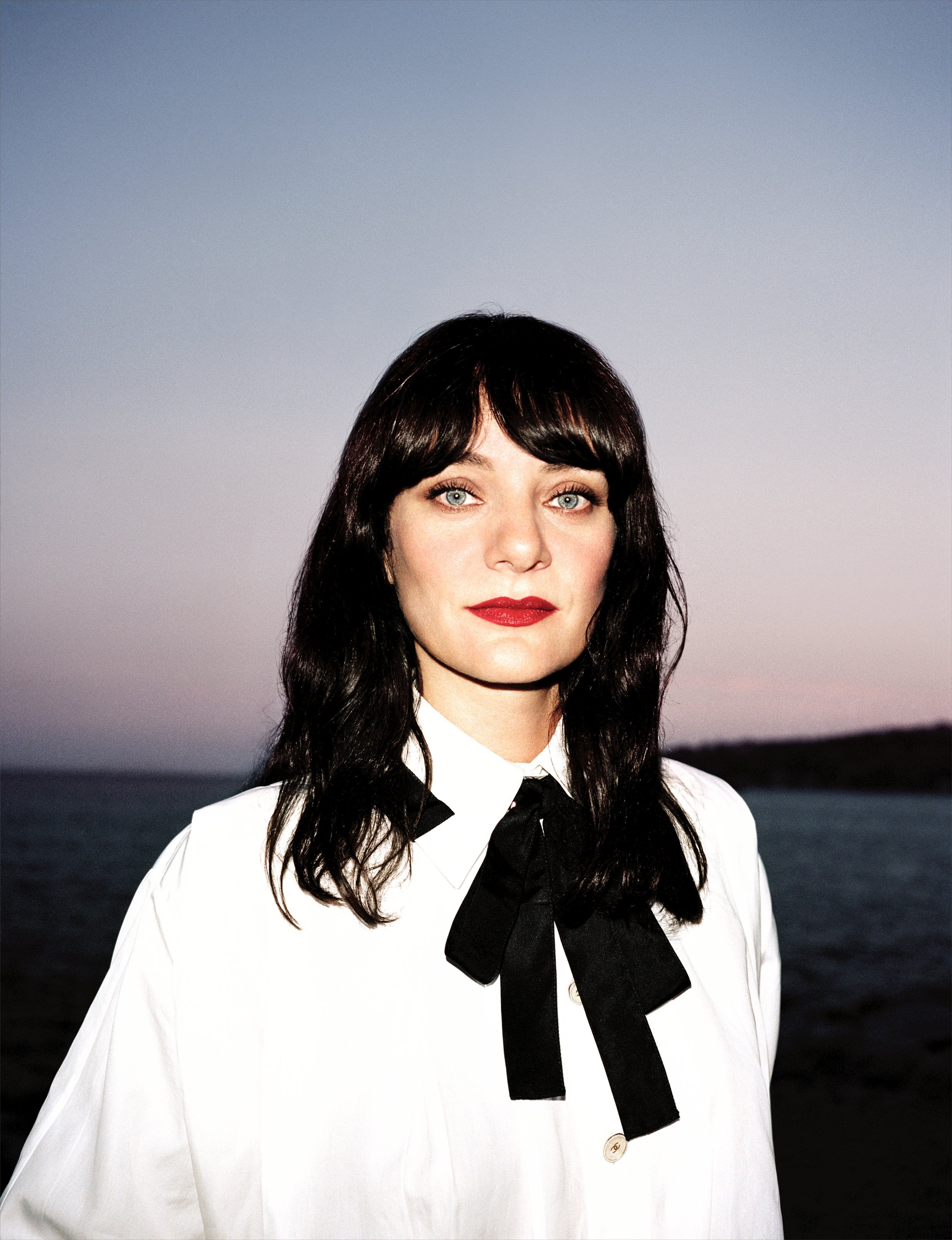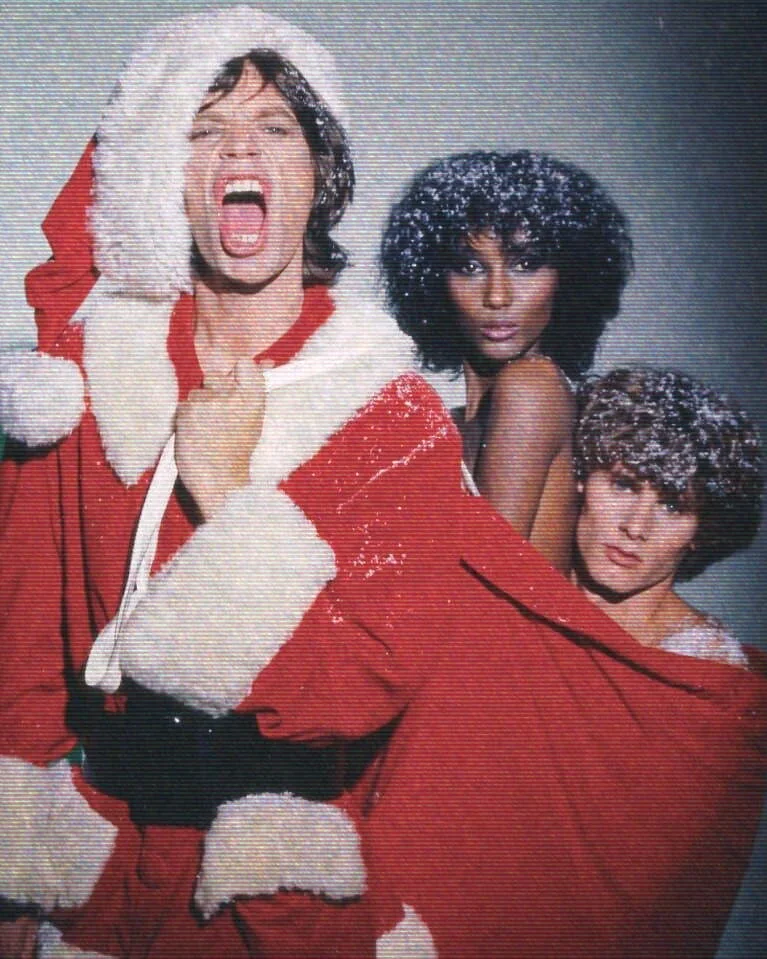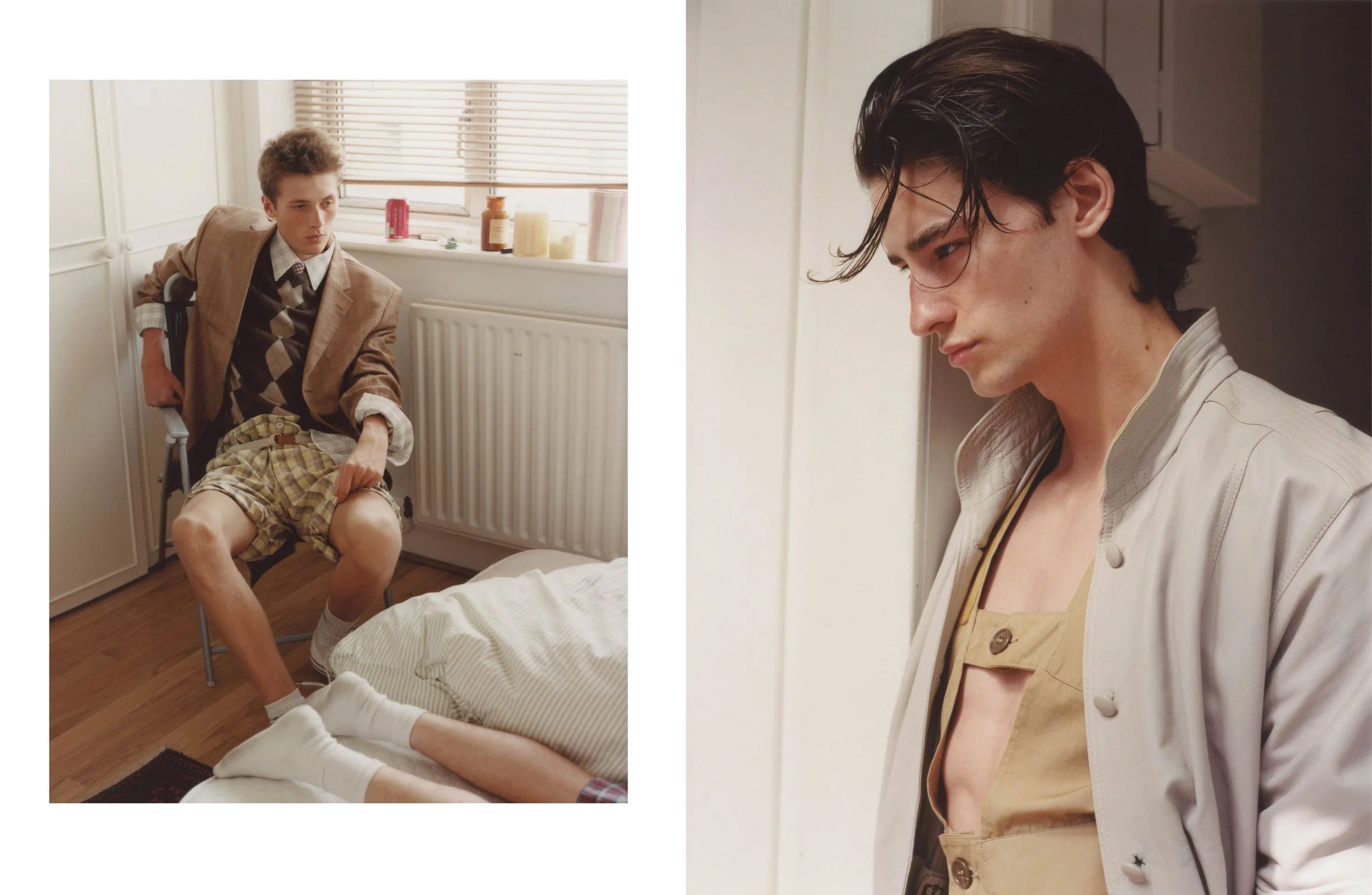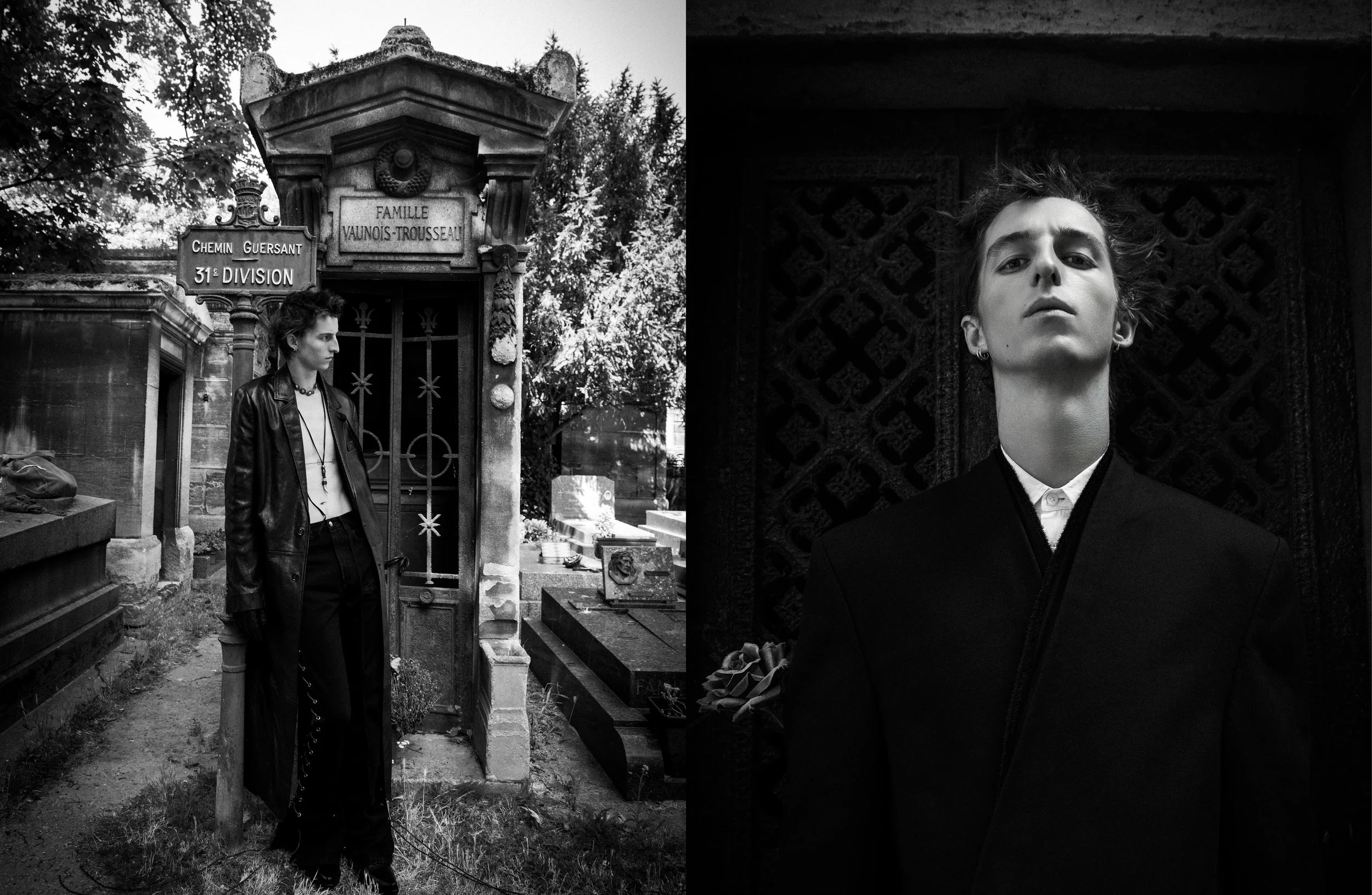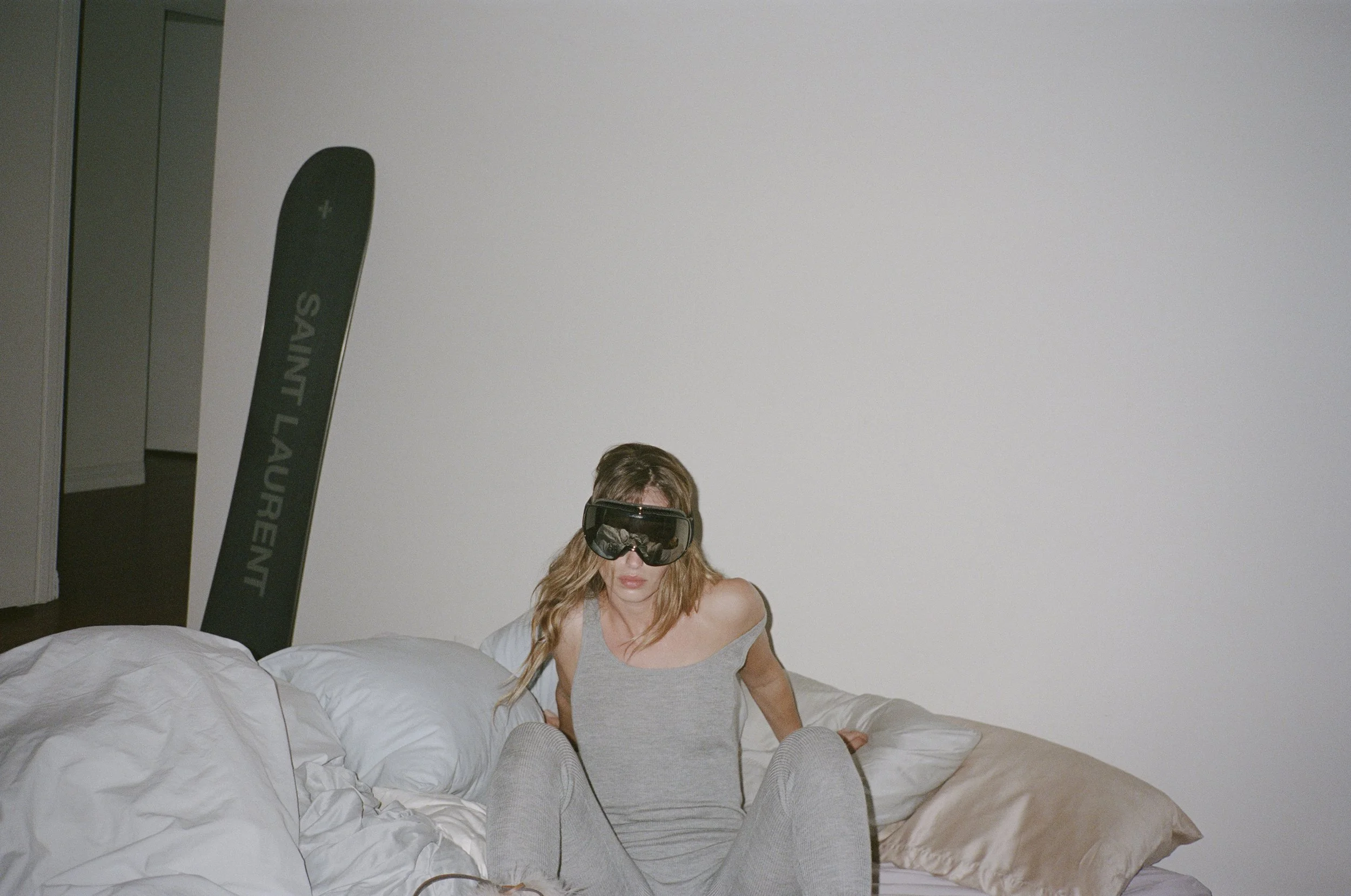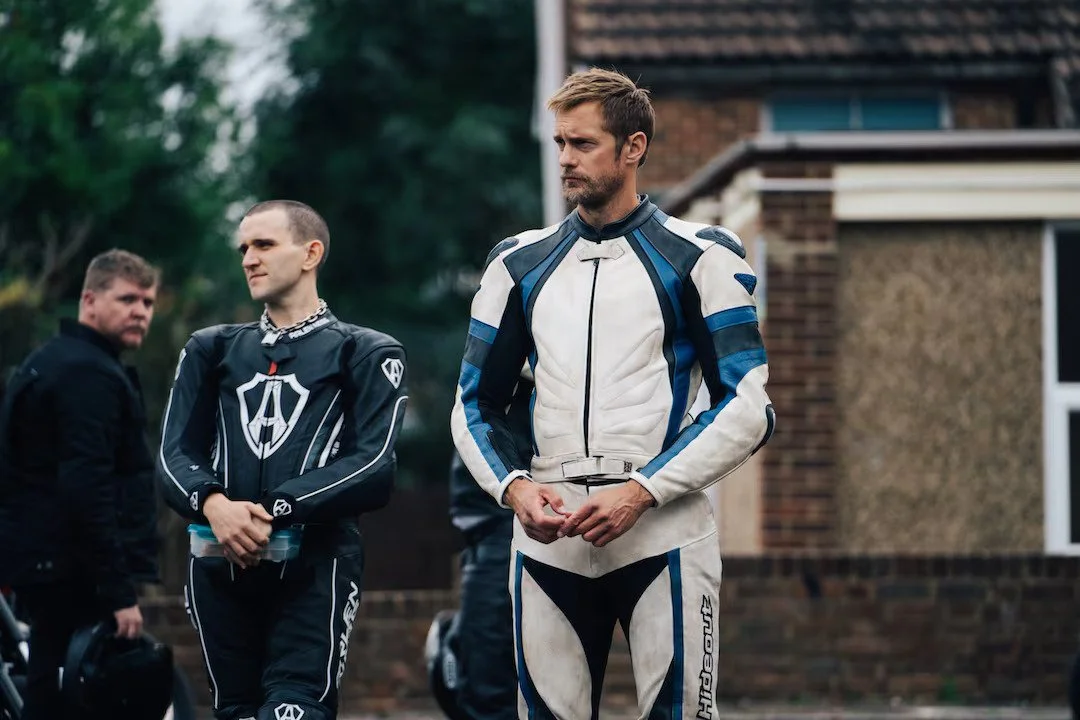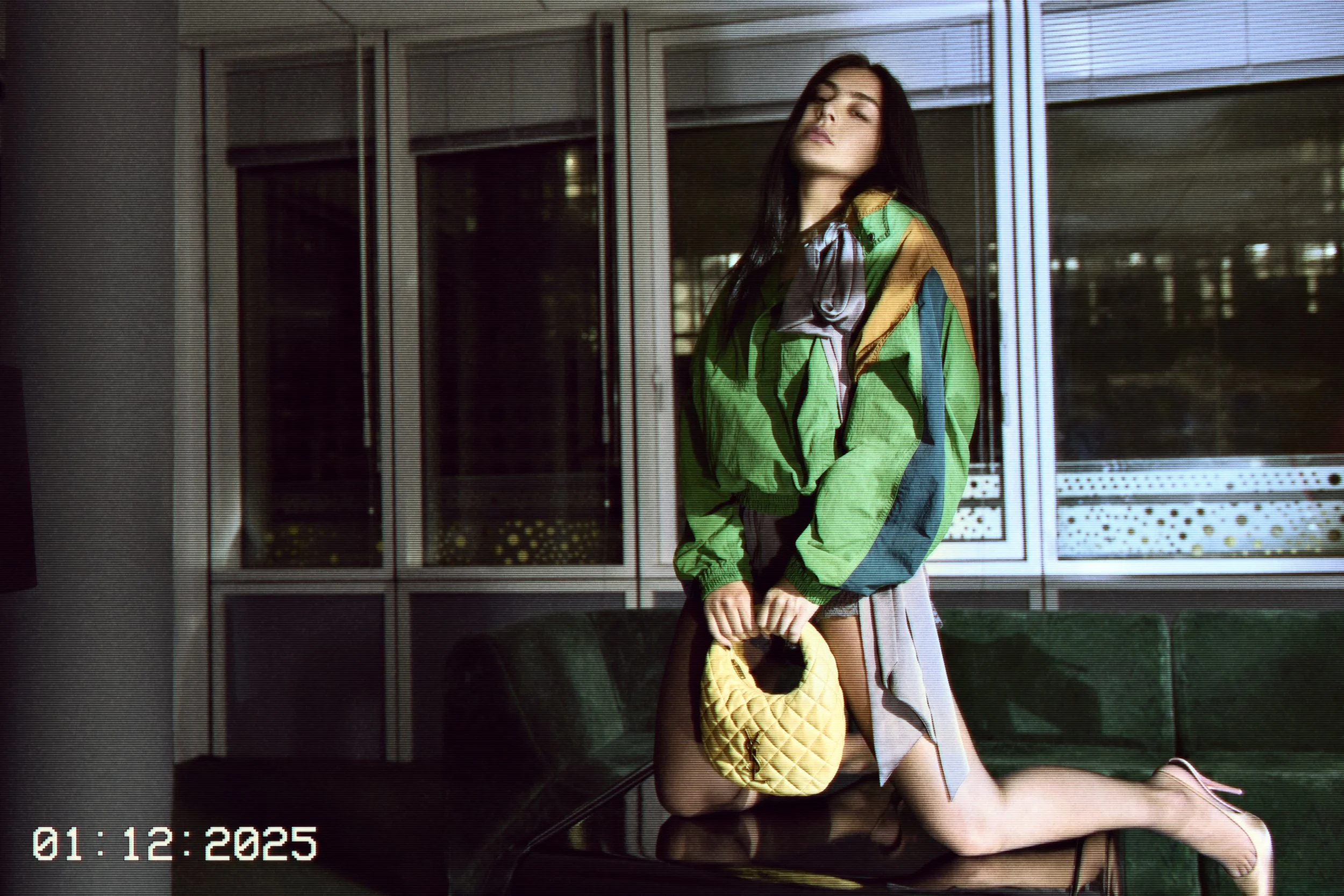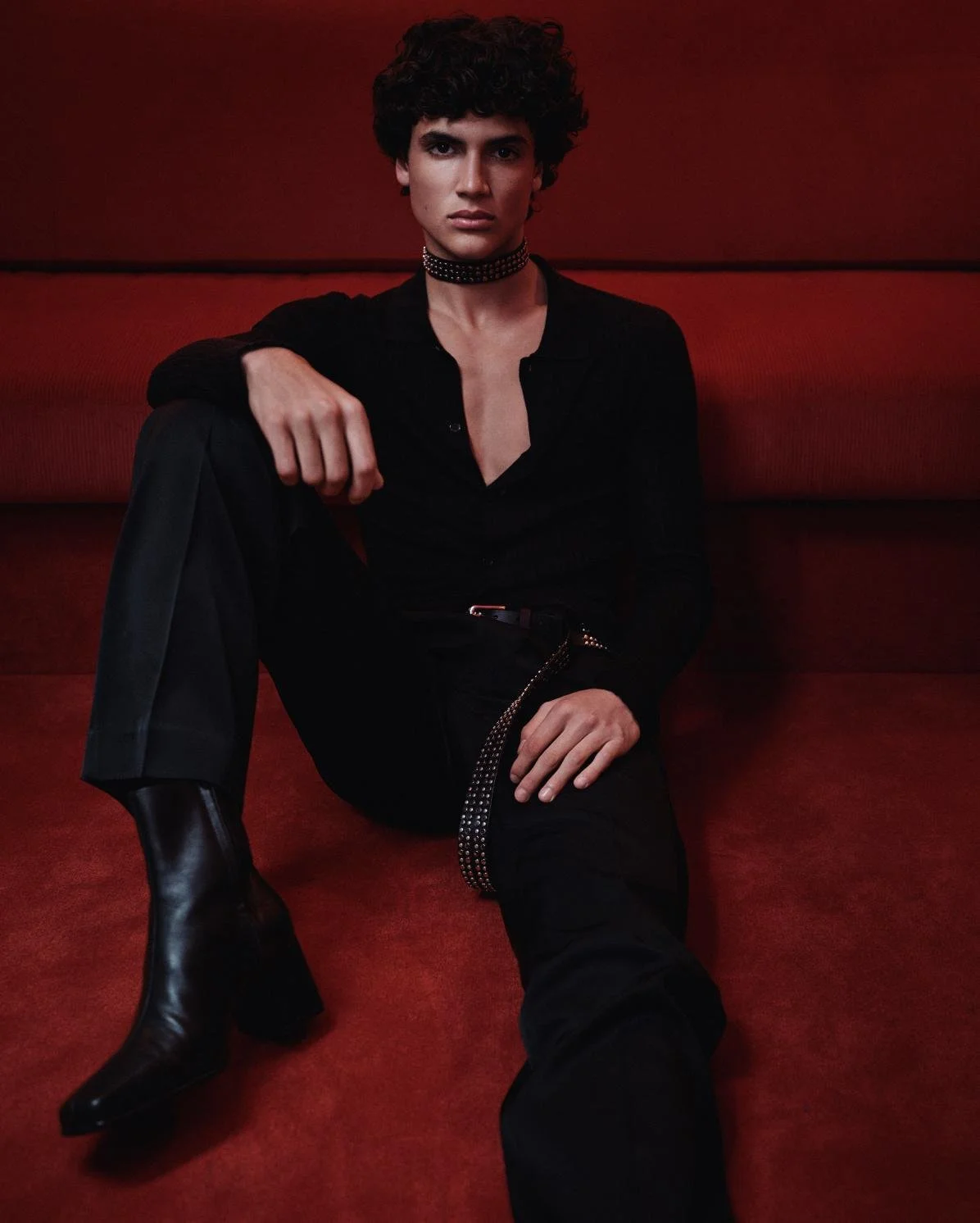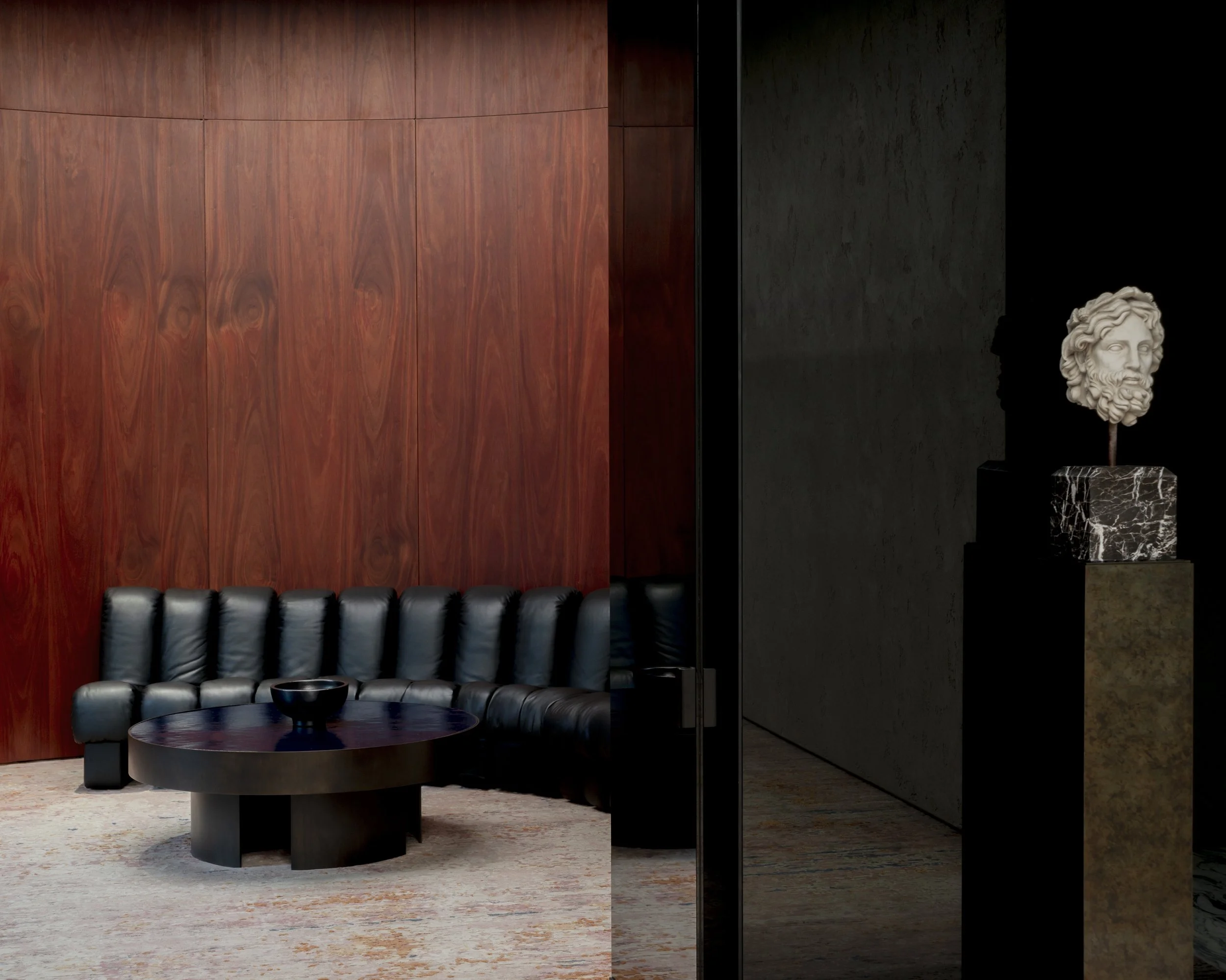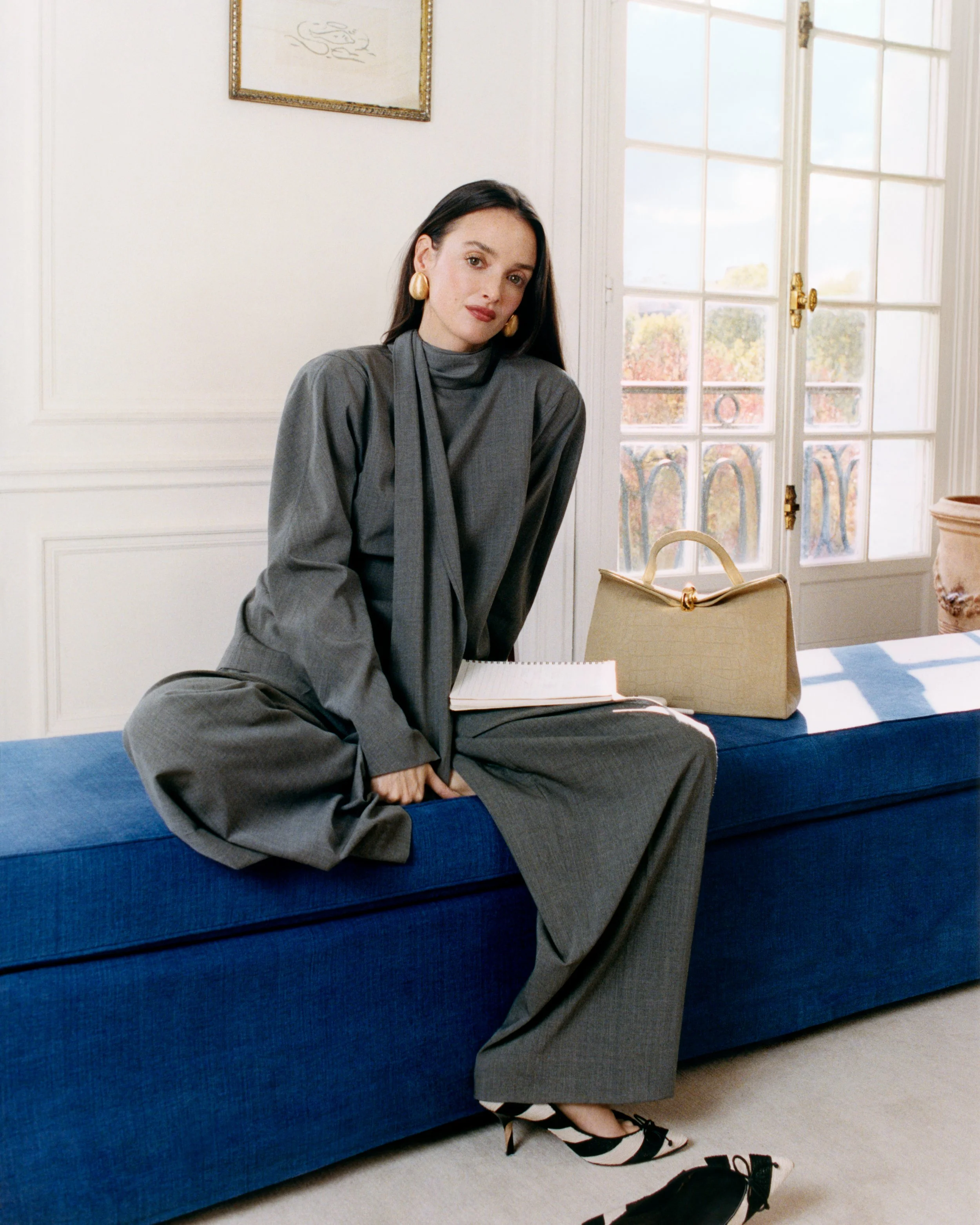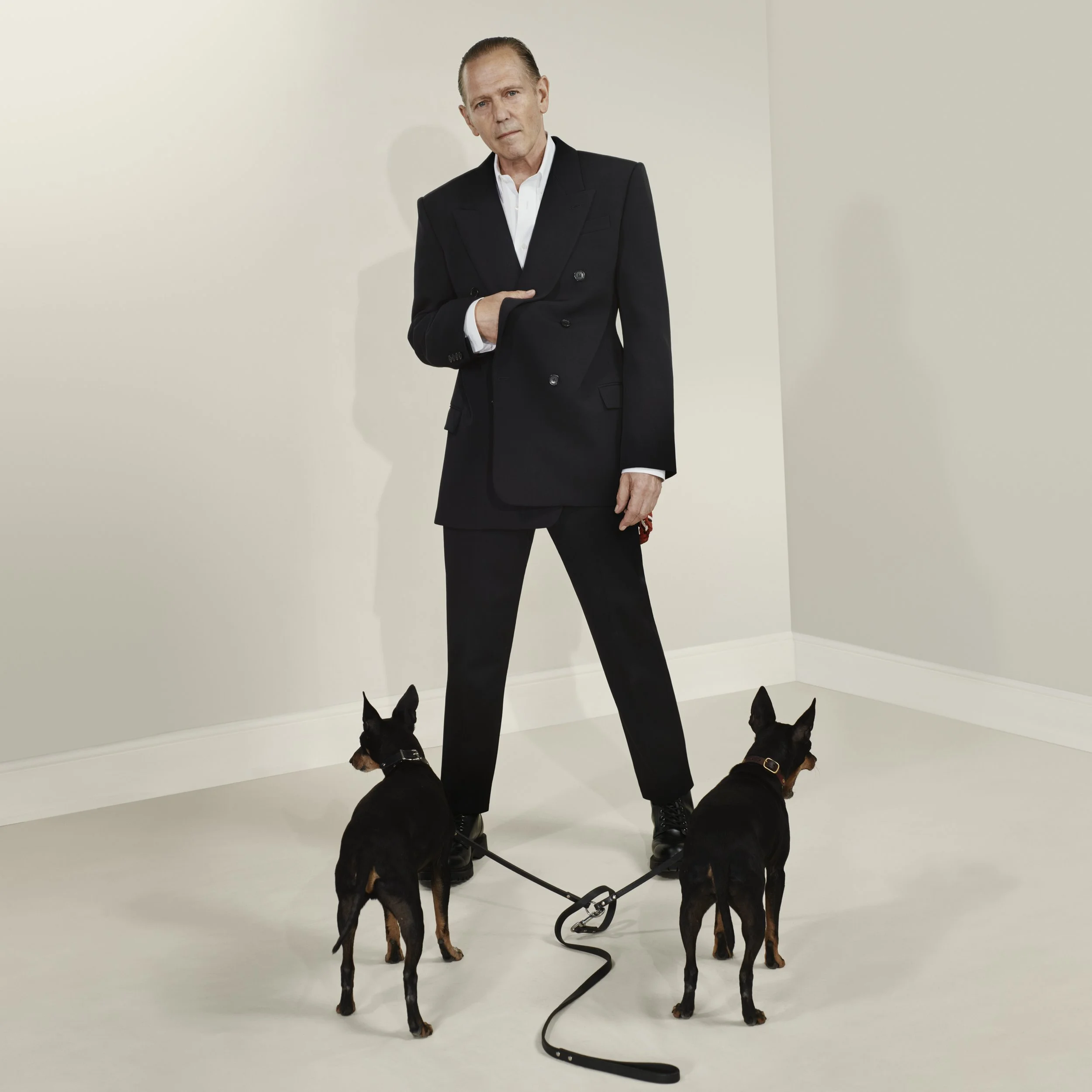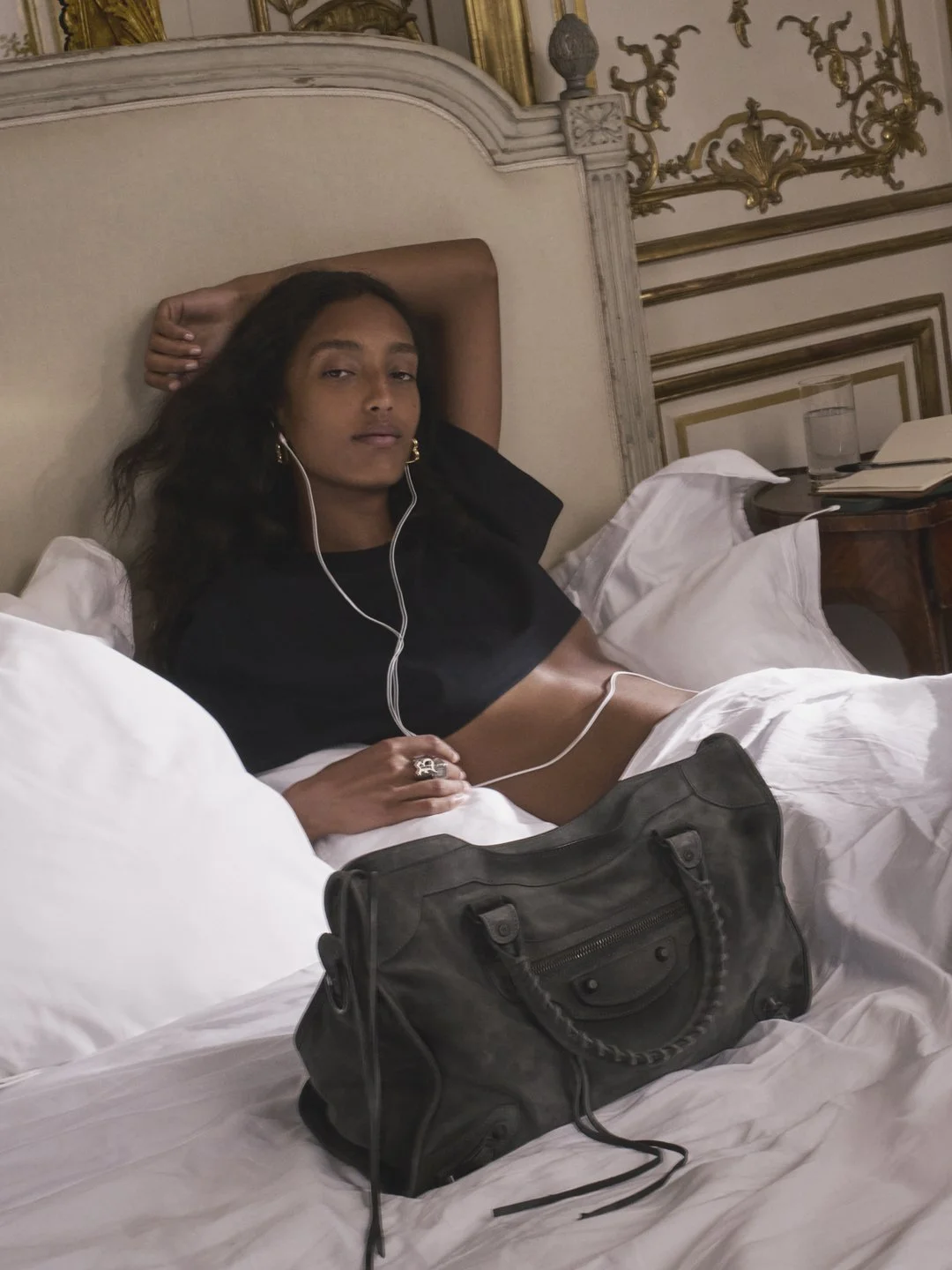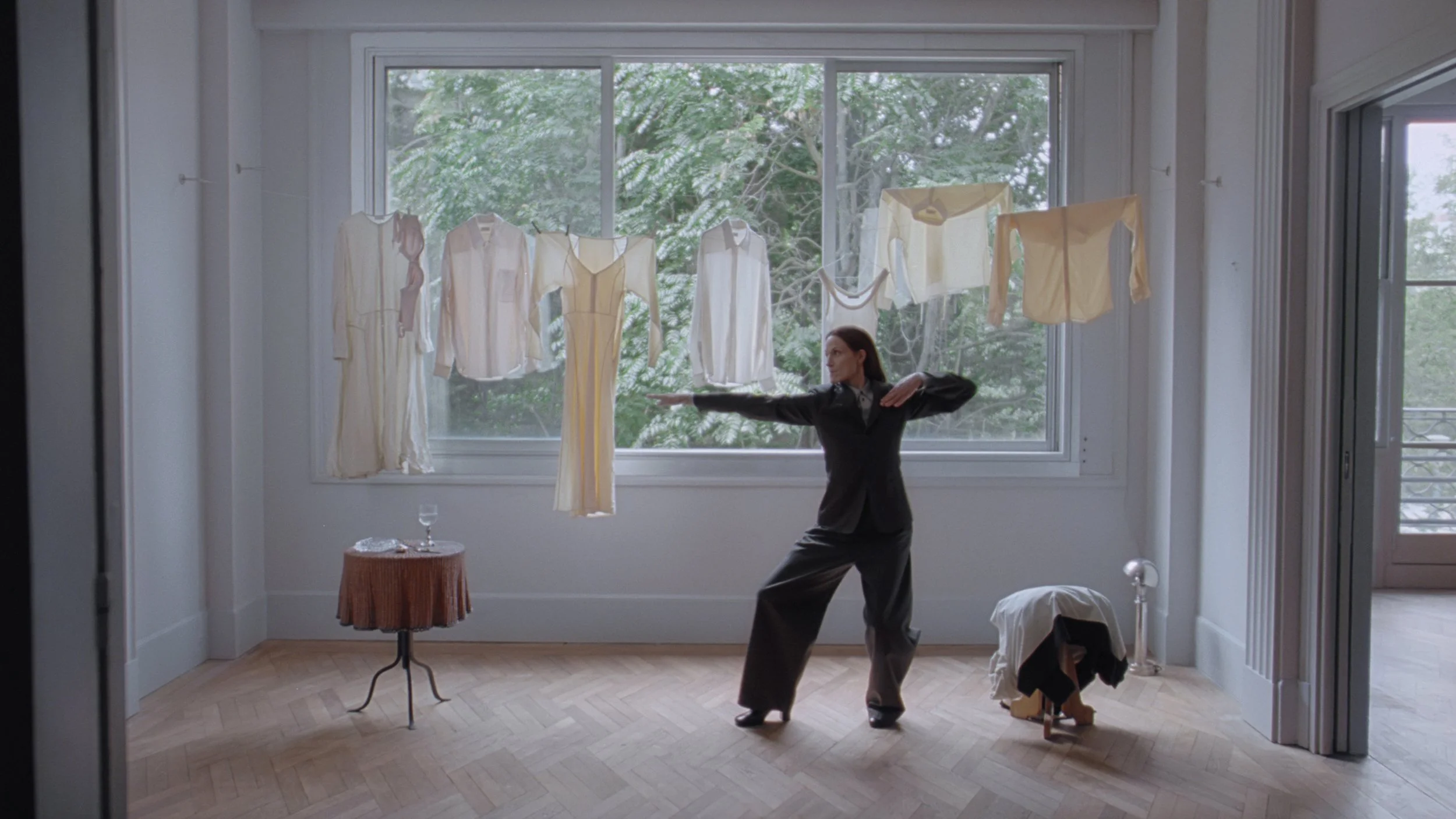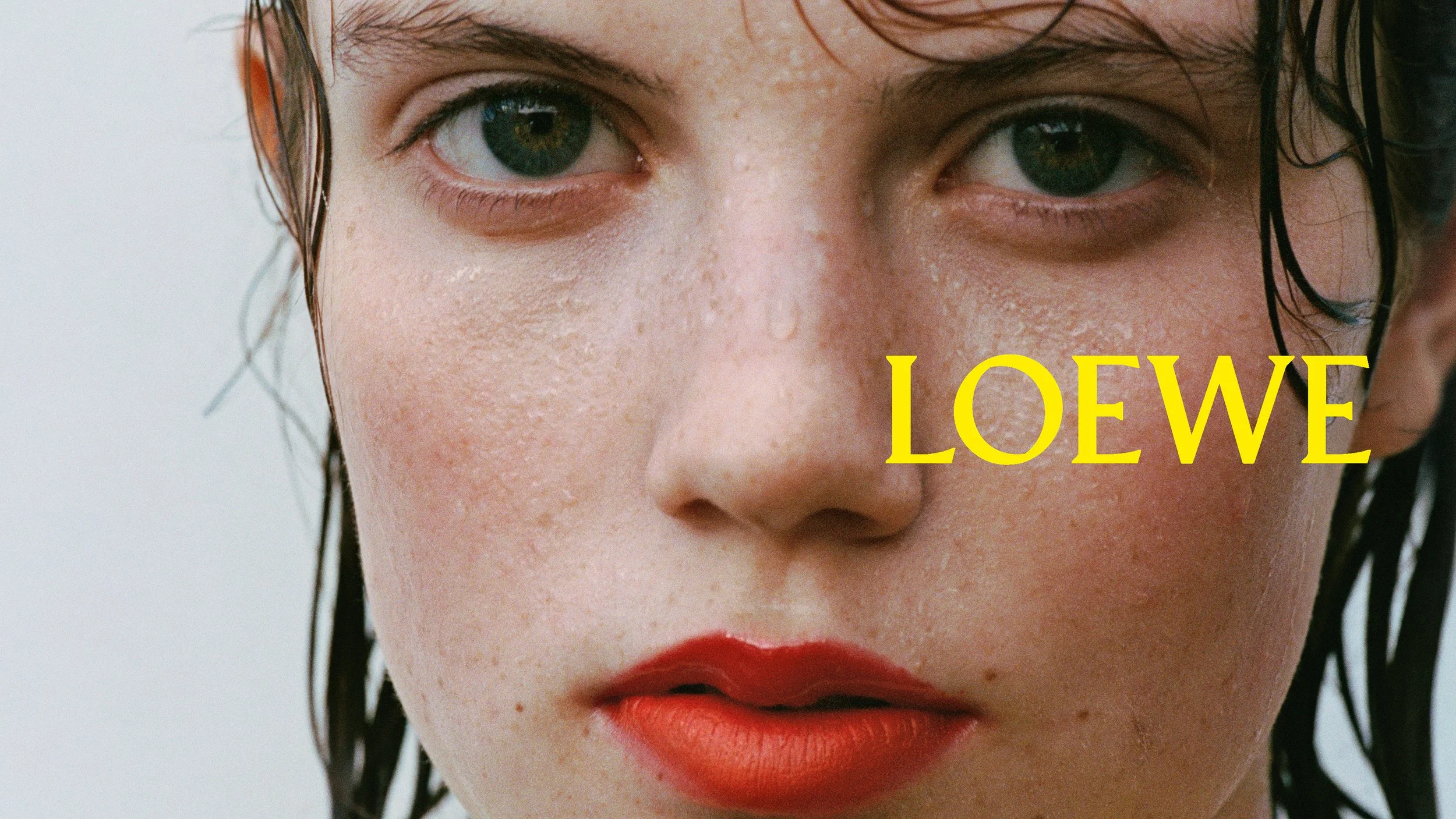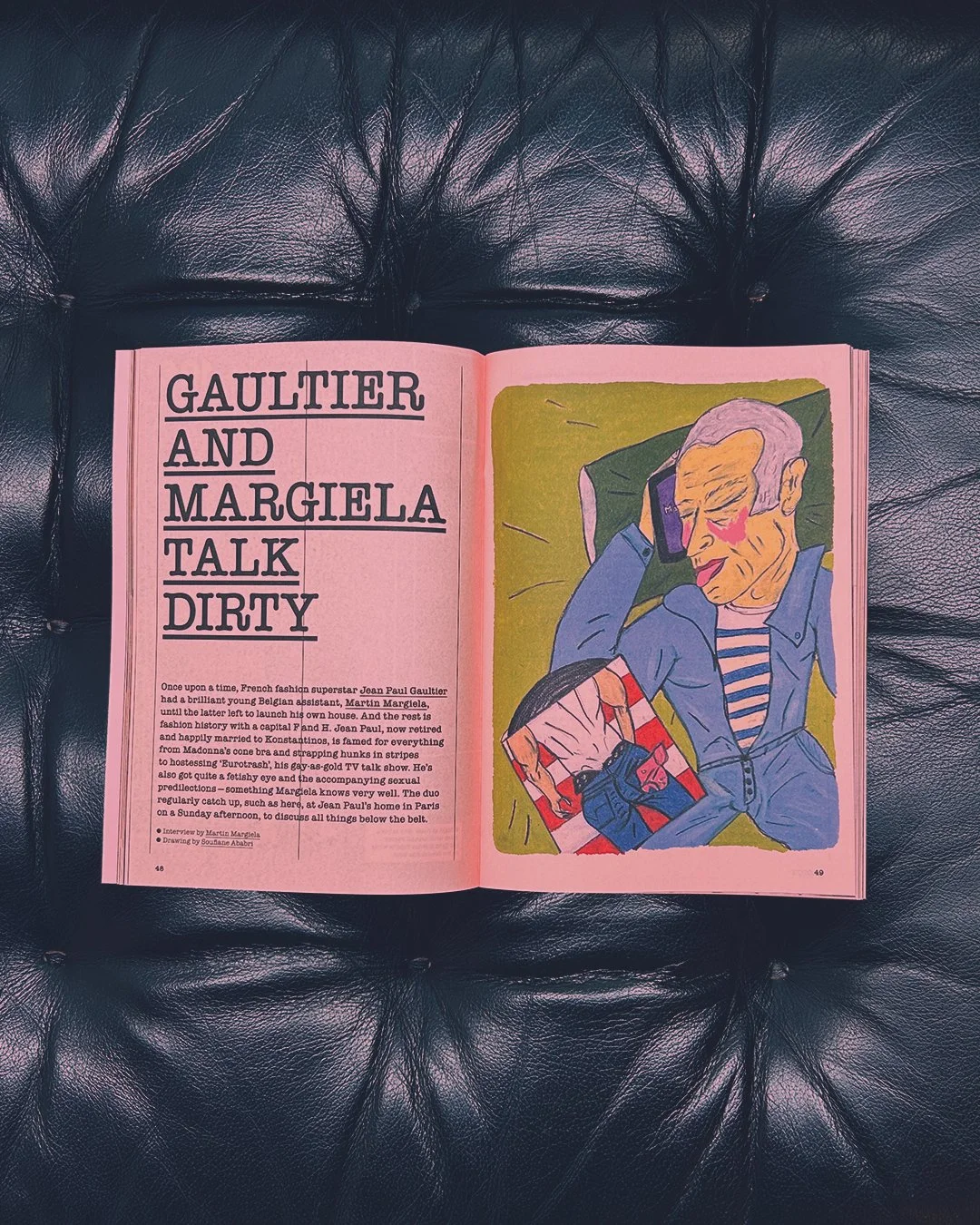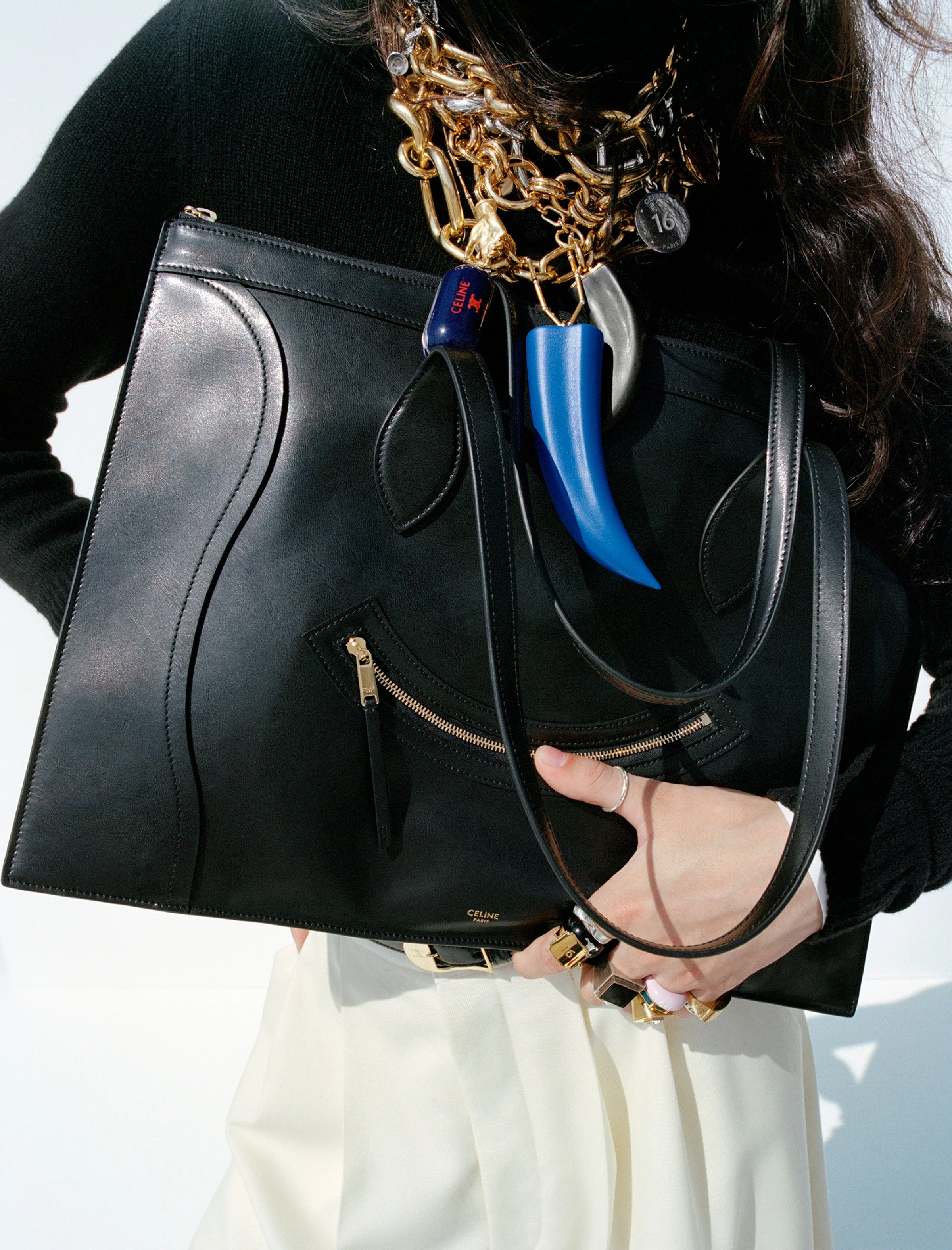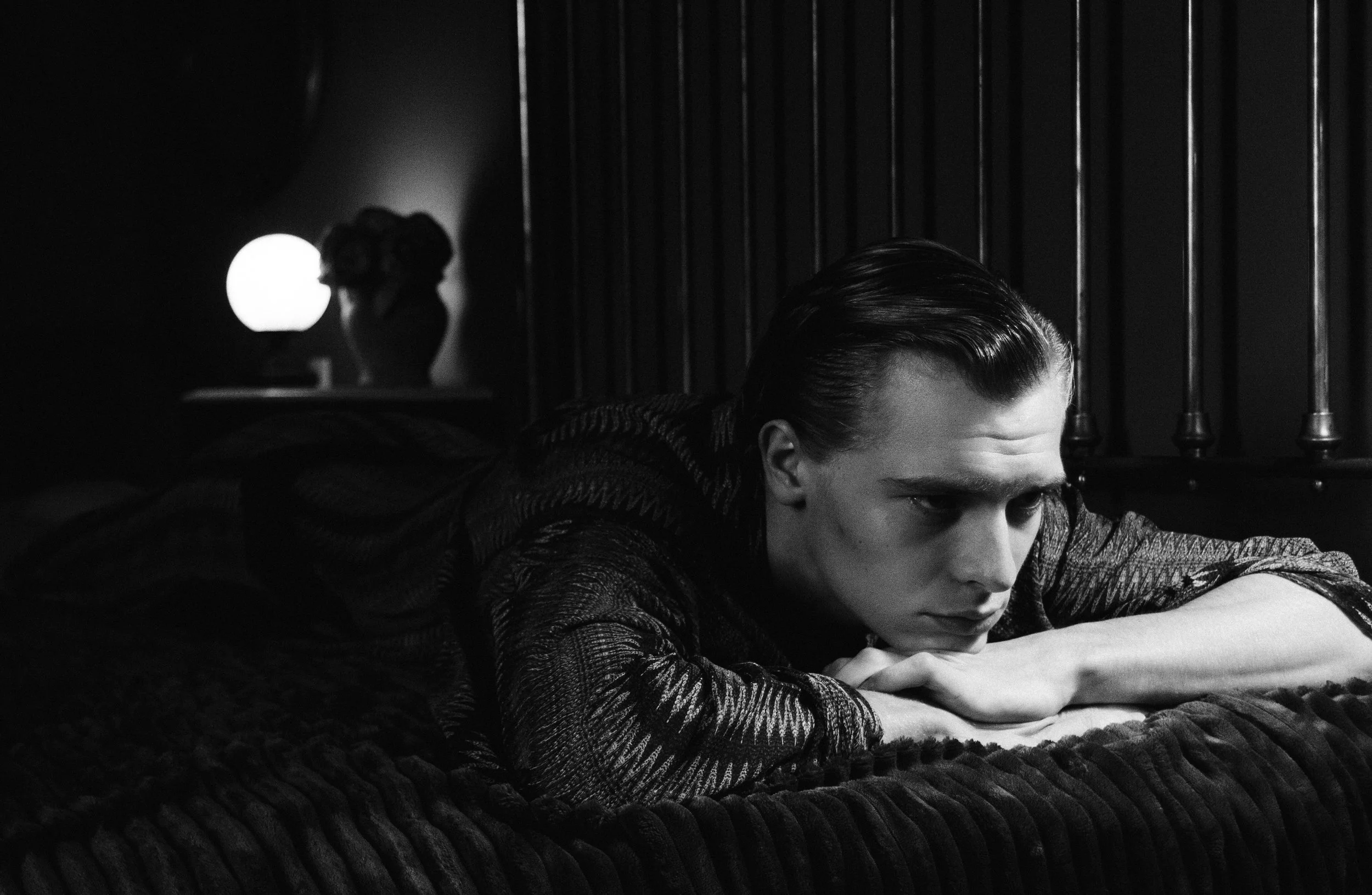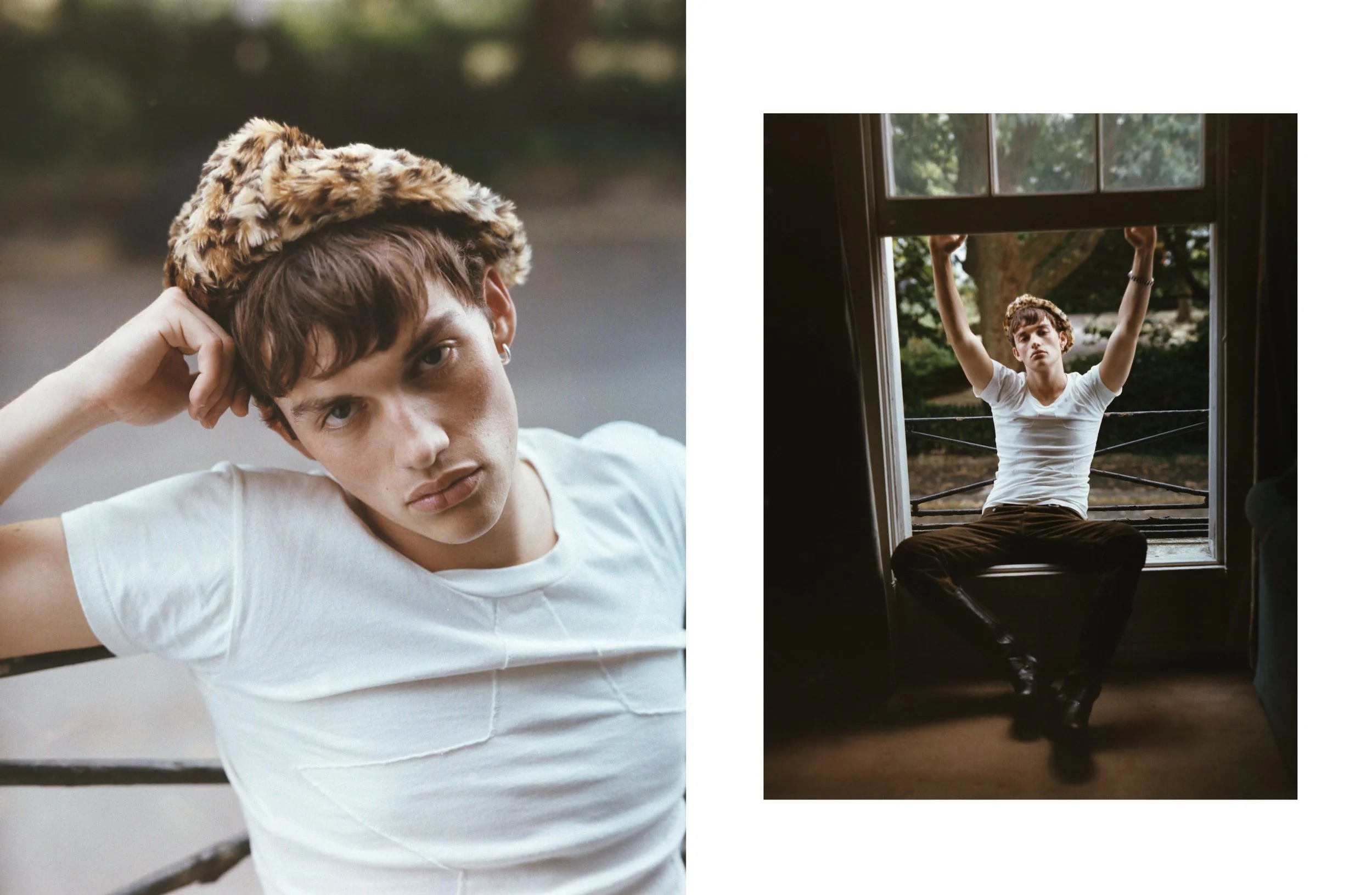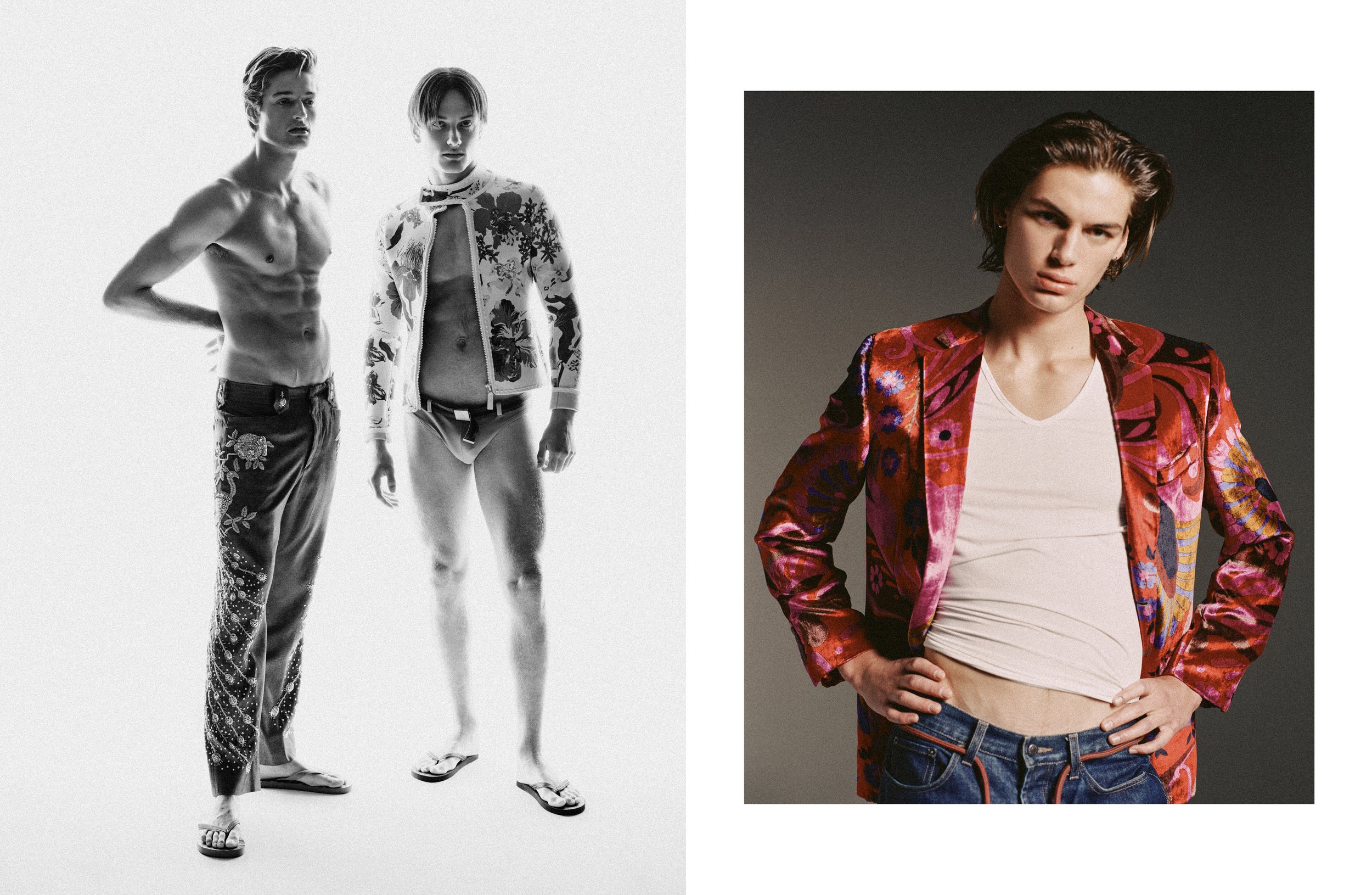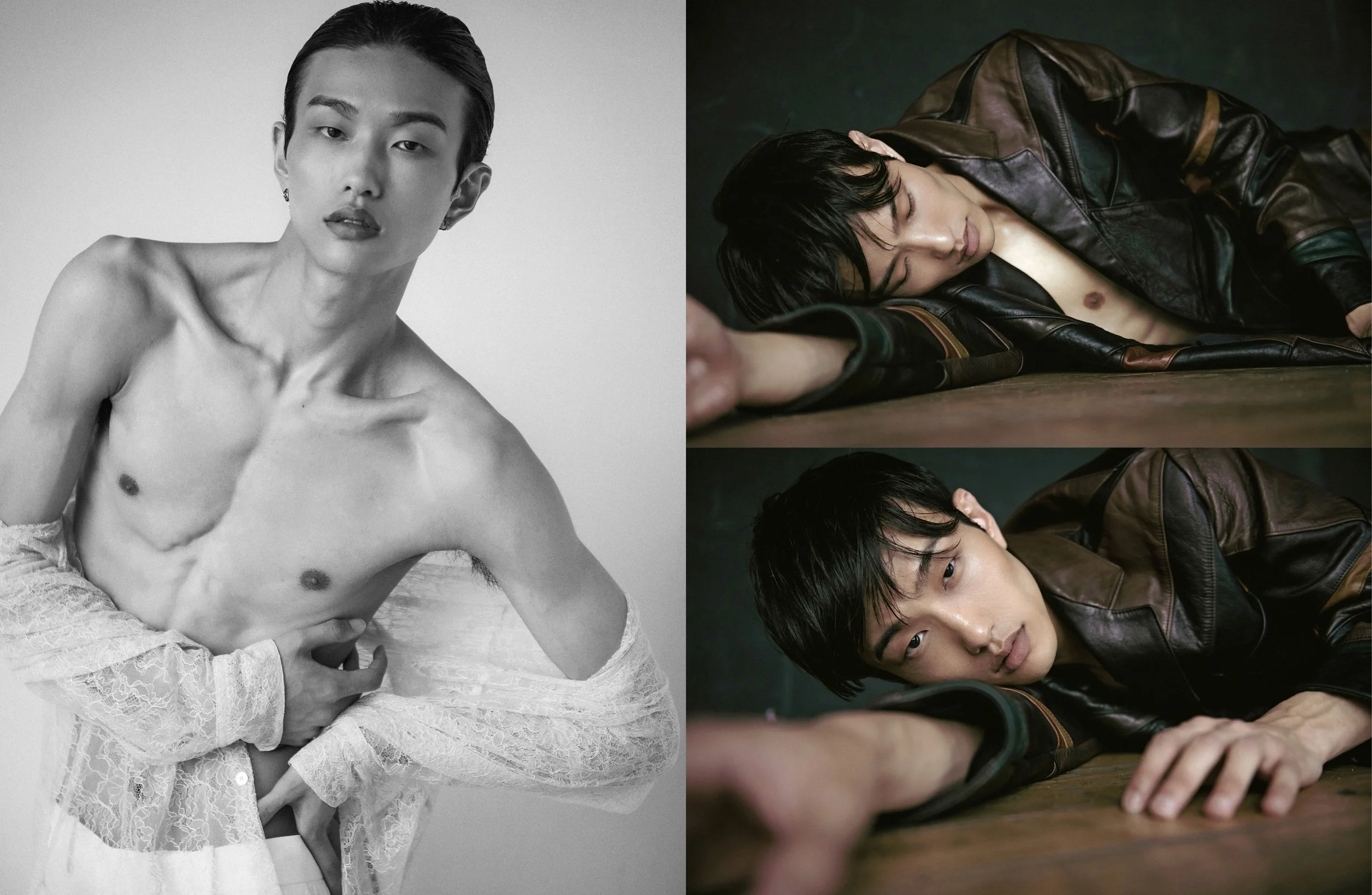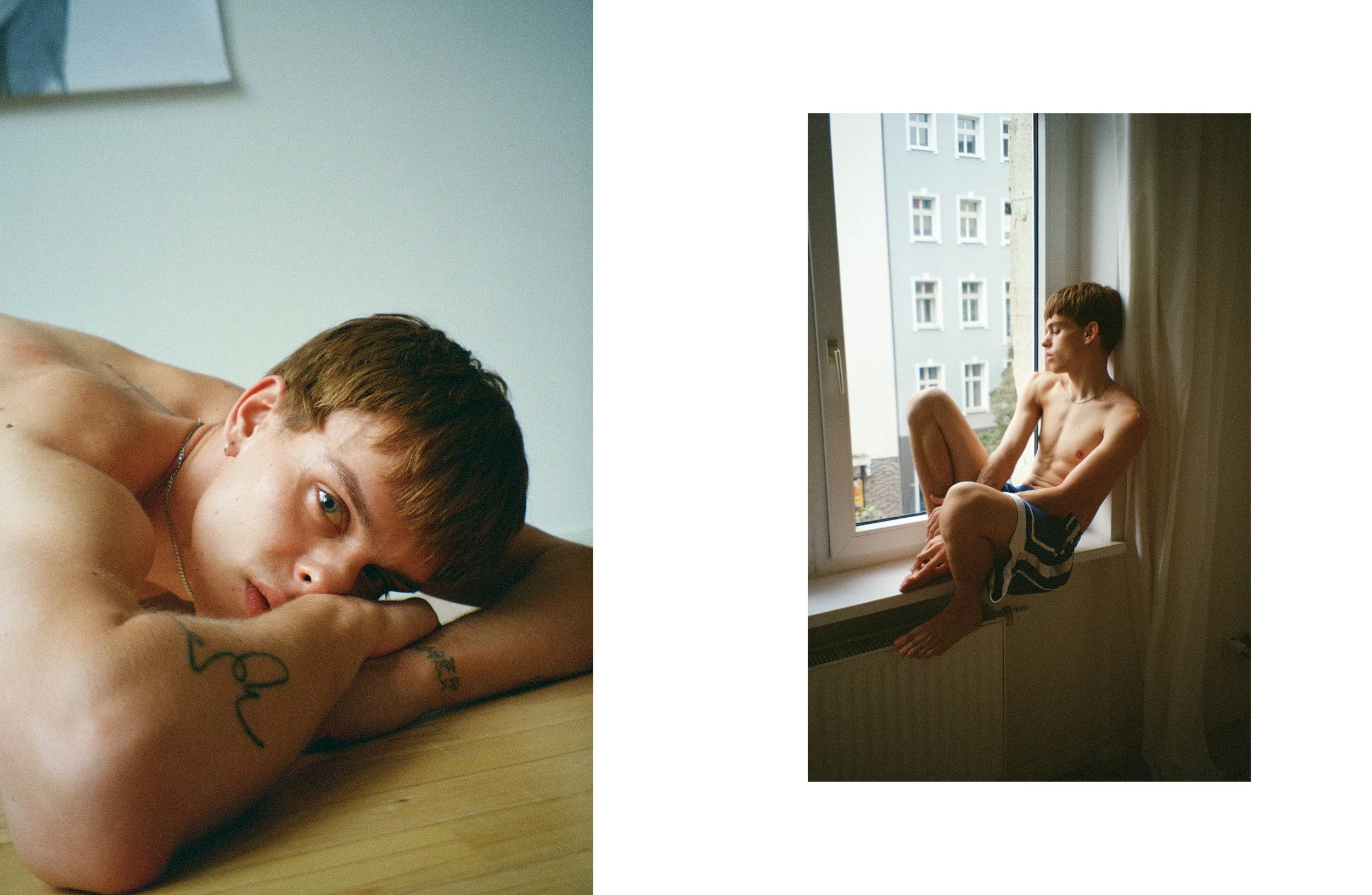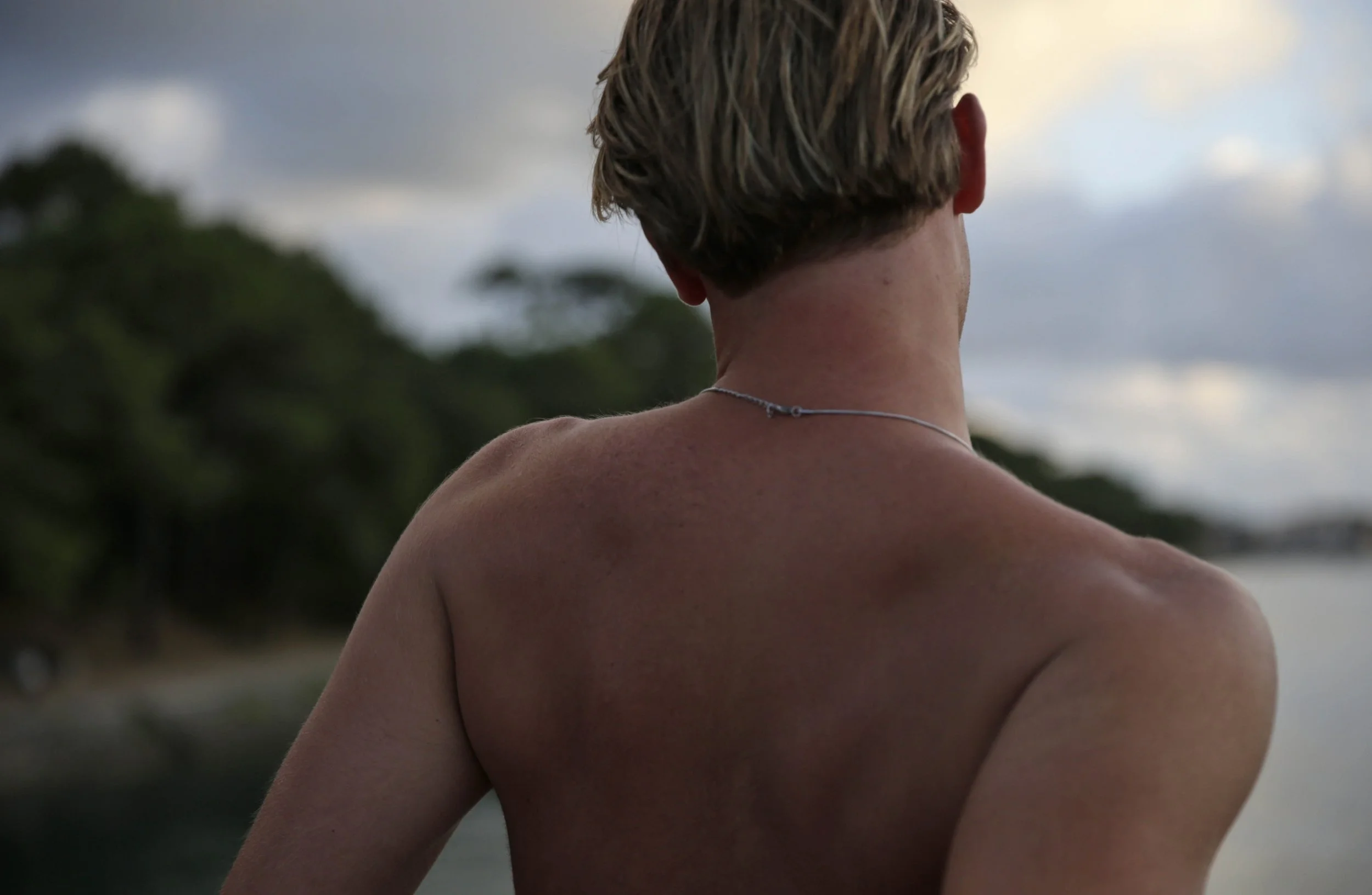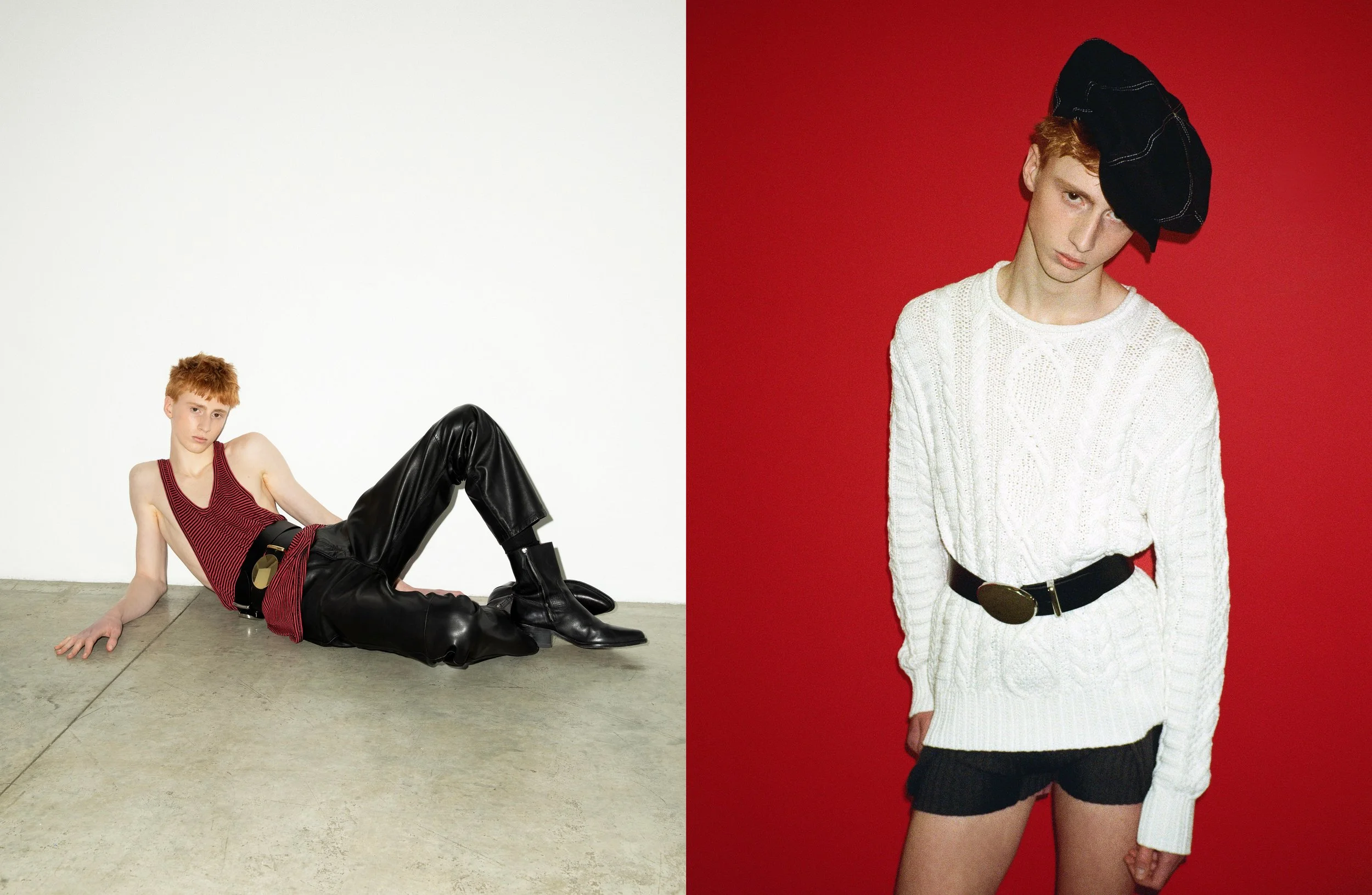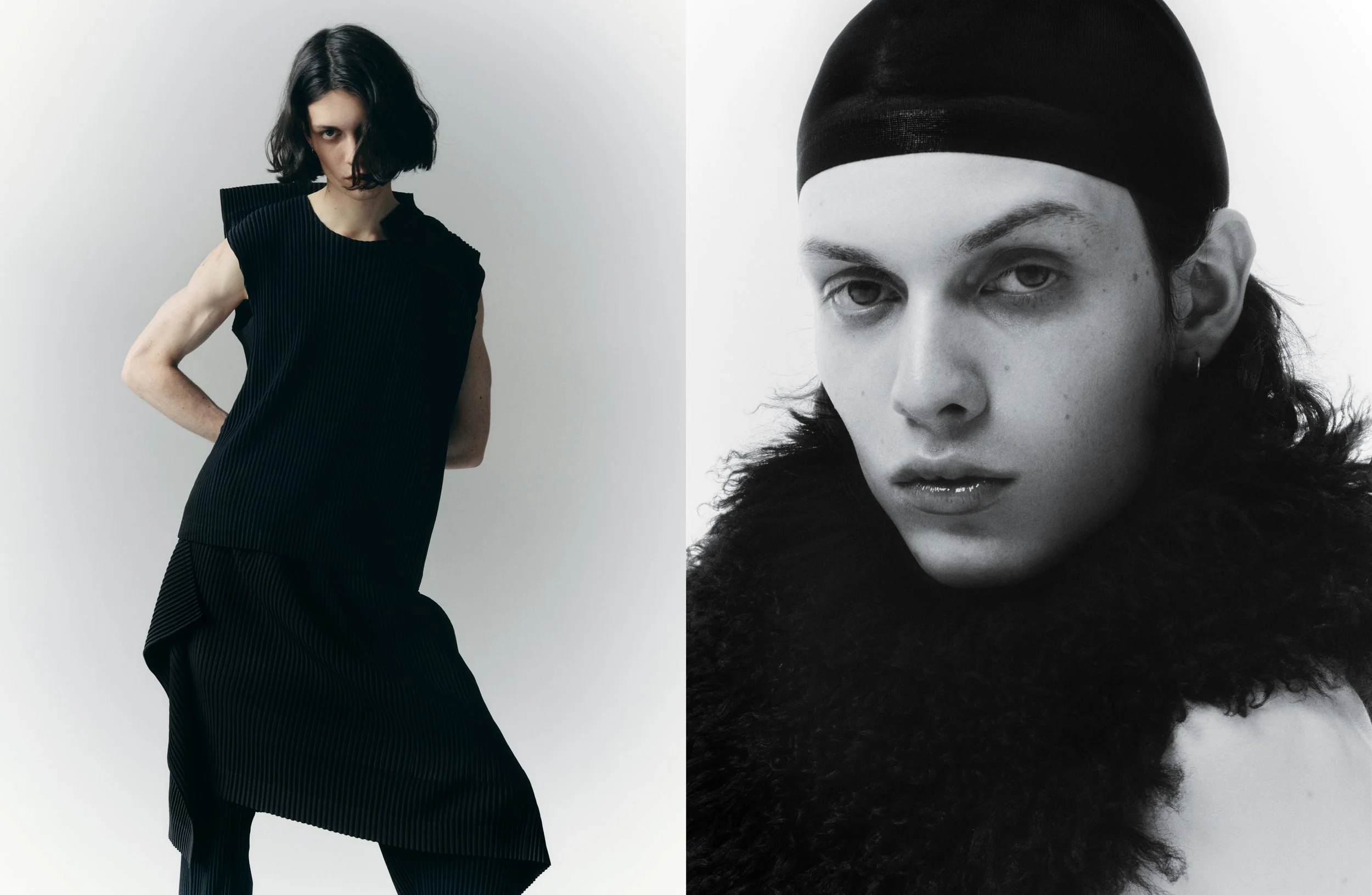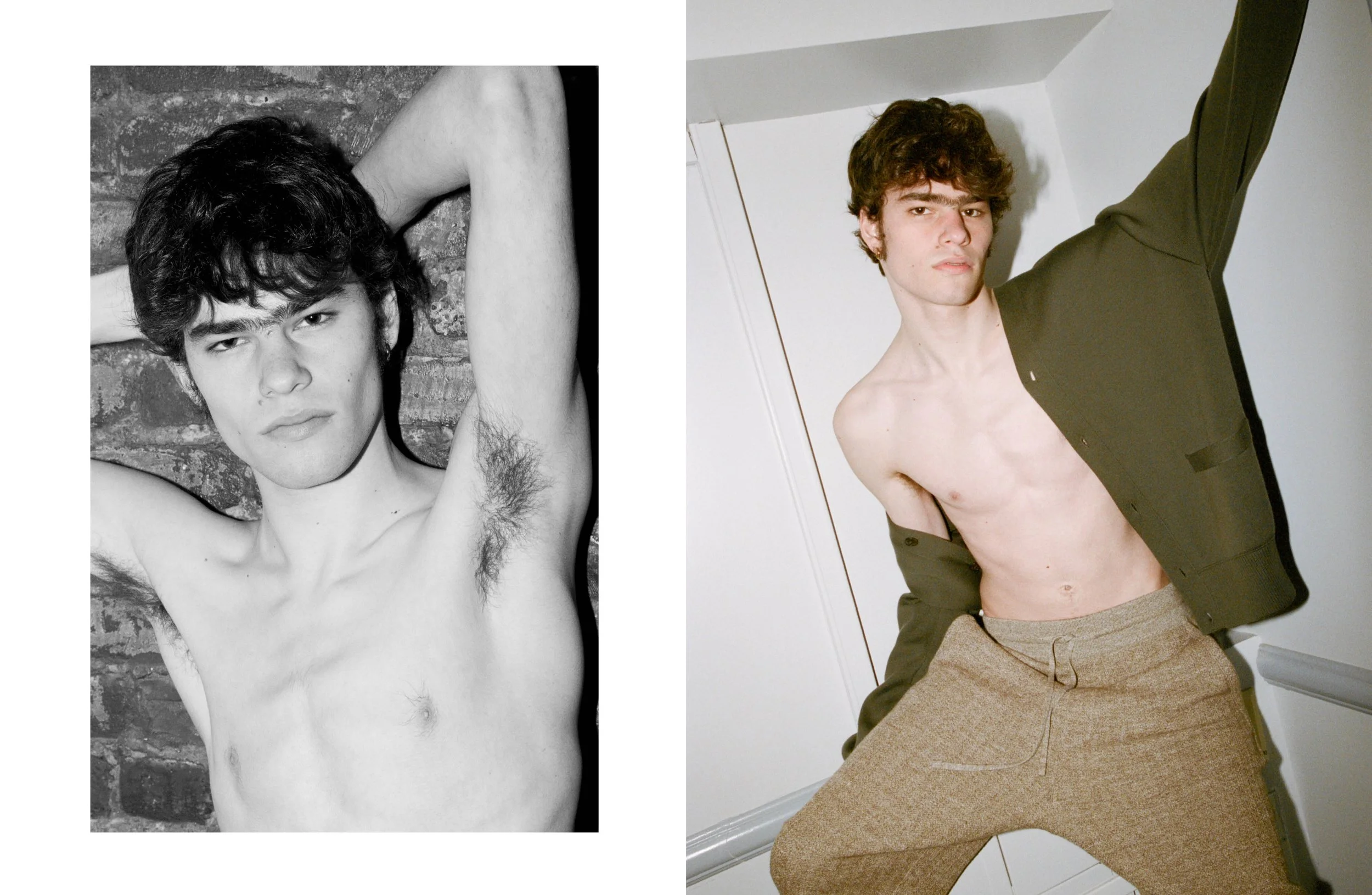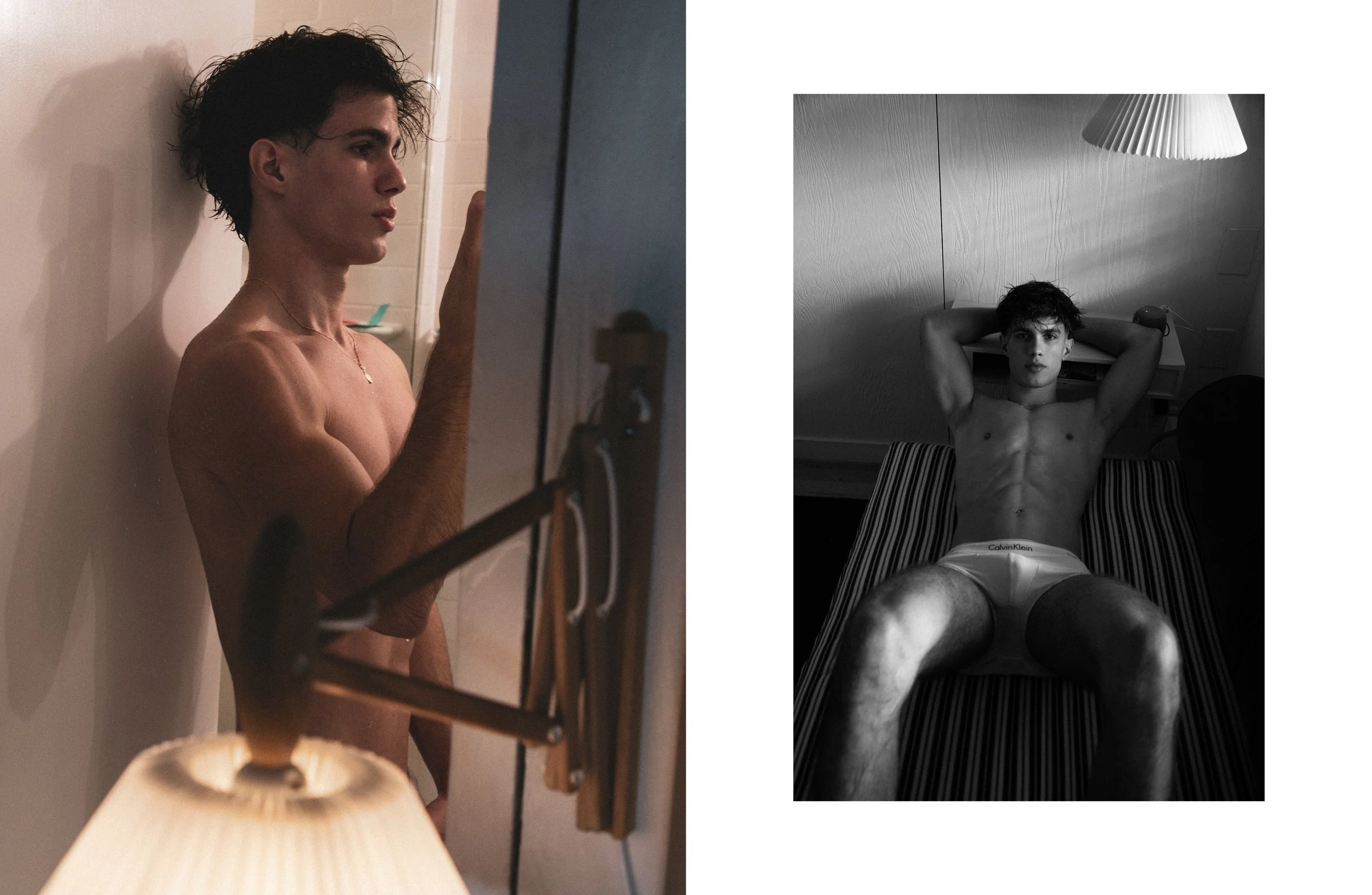LOUIS VUITTON SS20 / LiveStreaming
HERMES SS20 / LiveStreaming
A TOUCHING FAREWELL AT KENZO
When it was announced earlier this month that Carol Lim and Humberto Leon would unveil their last collection for Kenzo in Paris, you knew their show would be memorable. It was, in fact, a true spectacle, complete with models, dancers, musicians, and a soulful performance by Solange Knowles.
Kenzo Takada himself sat front row to watch a collection that paid homage to Japan’s ancestral traditions and its breathtaking coasts. The sea was the main source of inspiration for the designers, who invoked the resilient spirit of sailors and super heroes, on the hunt for their next treasure. Mixing traditional sailing motifs with technical fabrics found in scuba diving, Lim and Leon chose neoprene to craft matching jackets and pants, as well as a wet effect creased jersey. Sheer pieces were printed with mermaids, prawns and sea lilies. Ikat prints, sun-bleached denims and liquid look viscose were used for men and women alike, creating a nice harmony between the two lines.
The American designers are famous for merging sportswear with sleeker lines and their reinterpretation of suiting was right on trend. Beautiful pastel tones added softness to the most structured styles, and a sense of romance defined the last womenswear looks, which were surprisingly intricate and embellished. A fully embroidered skirt -covered with stunning pearls and sequins- was worn with a simple cropped blouse and colorful sneakers. It was the perfect illustration of what Lim and Leon have always stood for: a sense of fantasy fused with urban pragmatism.
…
/ Words by Philippe Pourhashemi /
/ Backstage pictures by Merel Hart /
SWEET LITTLE NOTHINGS AT LUDOVIC DE SAINT SERNIN
It only took a few seasons for Ludovic de Saint Sernin to turn into one of Paris’ hottest brands, quite an achievement for someone still in his late 20s. De Saint Sernin’s vision is strong, subversive, humorous and uncompromising. His last show gathered industry insiders who clearly showed their support, such as Rick Owens, Balmain’s Olivier Rousteing and Willy Vanderperre who shot the designer’s last campaign.
Ludovic de Saint Sernin’s work is about intimacy, gender -and above all skin- a dismantling of our society’s archetypes to propose a new and sensitive approach towards men and women alike. If the French designer sees beauty in fragility, he’s also challenging the social norms of conformity and suffocating standardization. His incredibly sensual show underlined a Kunderian lightness of being, which was evidenced by his choice of tactile materials, such as breezy taffeta, silk satin or sheer organza.
De Sernin took on certain codes to reformulate them his way, such as military-inspired styles for instance. A belted nude colored trench was worn as an outfit against bare skin, with a pair of matching leather sandals and nothing else. Reworked cargo pants were tight on the hips and flared at the bottom, hugging every possible curve. He even paired one of those with a nude, asymmetrical bandage top, a nod to the early 1990s. Other references to that era were also clear, from Alexander McQueen’s infamous ‘bumsters’ to Helmut Lang’s exposed nipple tops, but de Saint Sernin offered the ultra low waist pants covered with Swarovski crystals and reworked the classic polo shirt with an erotic cutout.
He also presented his own version of sleek tailoring, focusing on body-conscious suits, which featured no pockets and concealed buttons. Avoiding unnecessary details to underline sharply cut lines is one of the designer’s signatures, borrowing from the sexiness of womenswear to avoid traditional men’s finishes. When a model came out wearing a simple towel wrapped around his waist, it offered an instant breather to a delighted audience. In a fashion landscape filled with logos, celebrity lines and trying way too hard clothes, de Saint Sernin’s reductionist and intelligent approach could be the way forward.
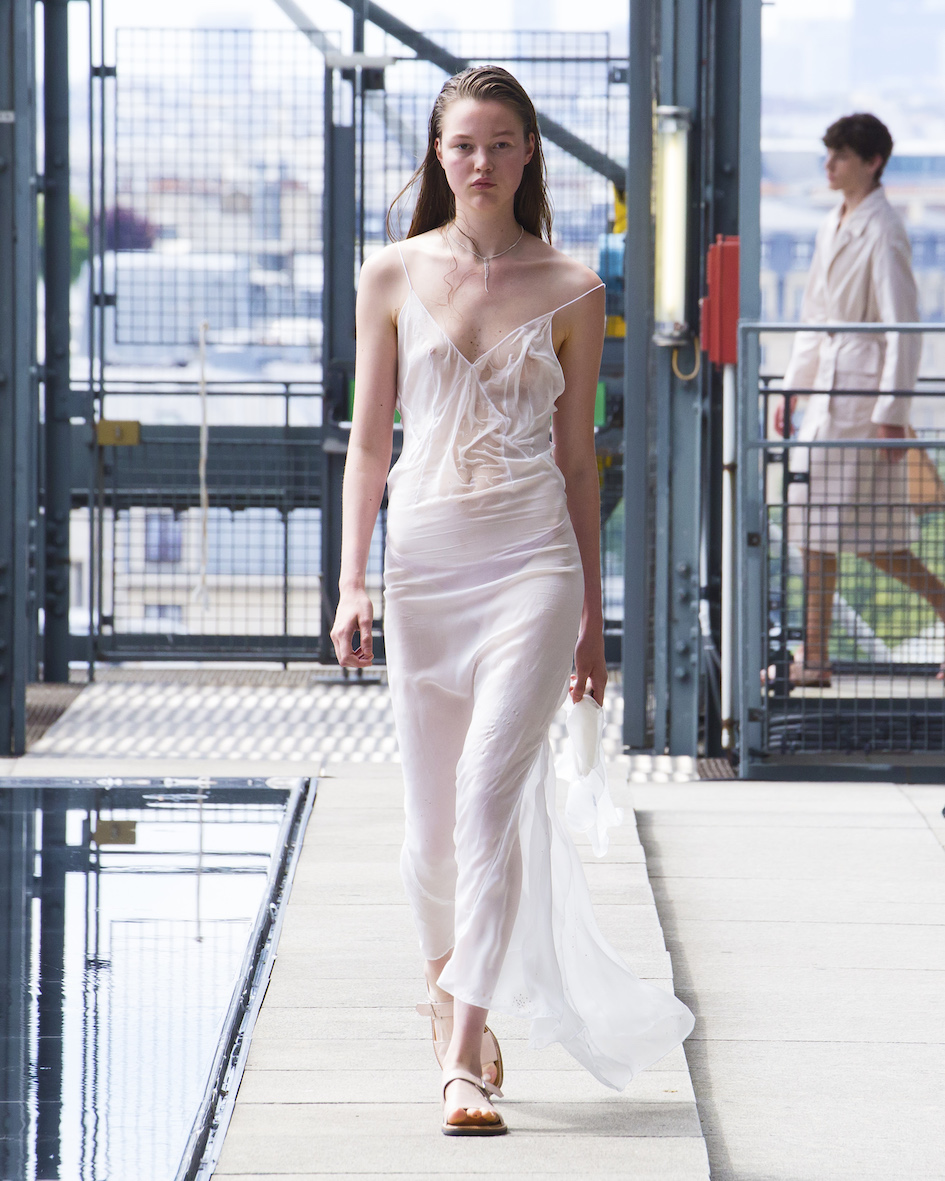
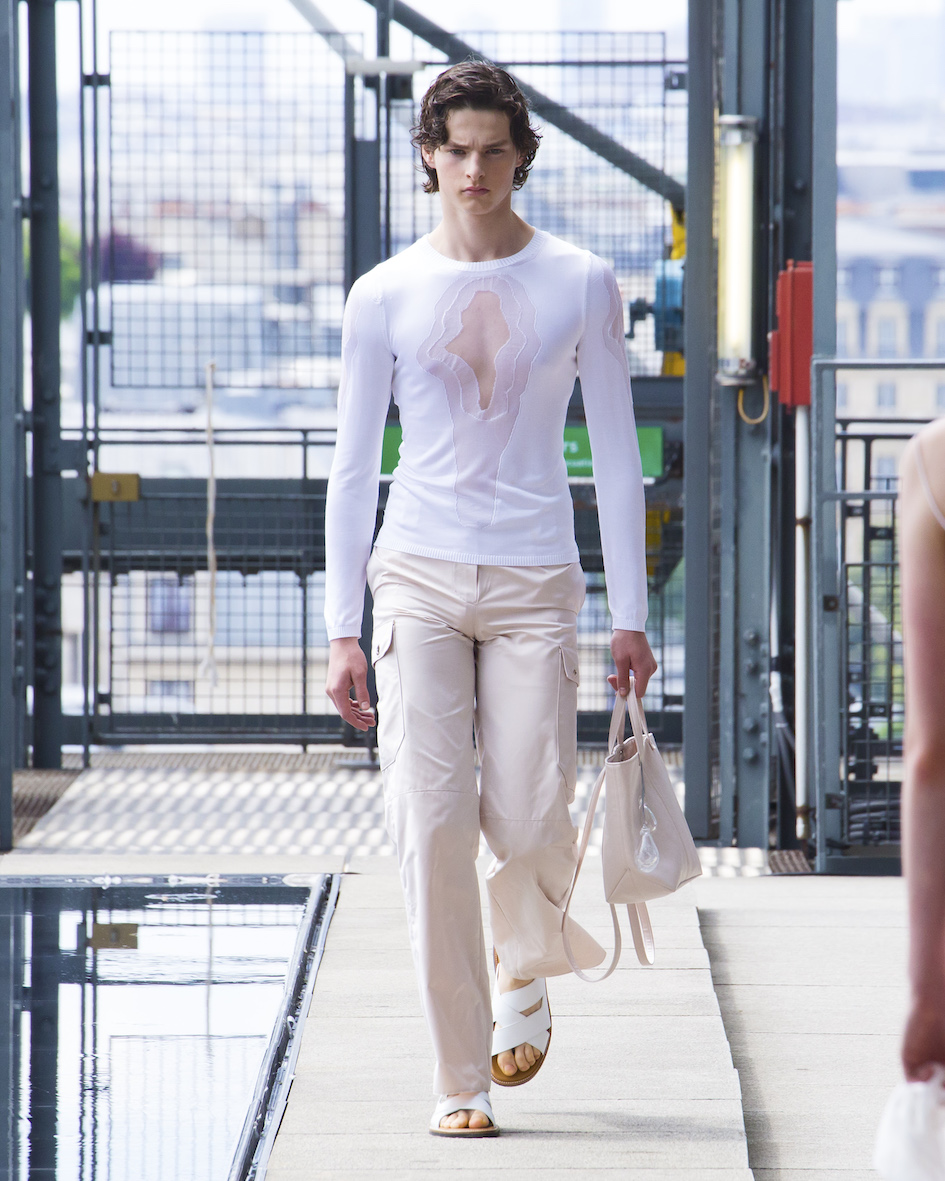
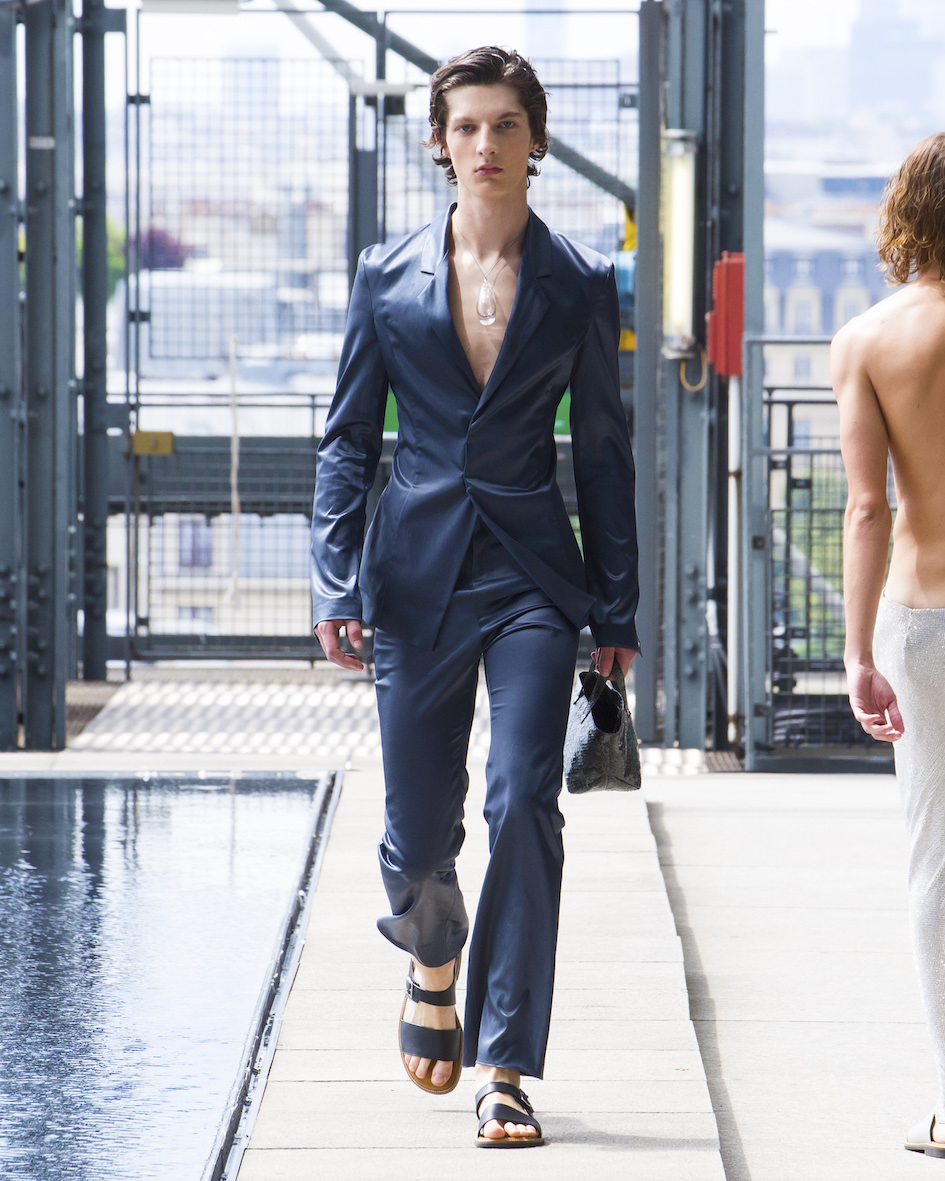
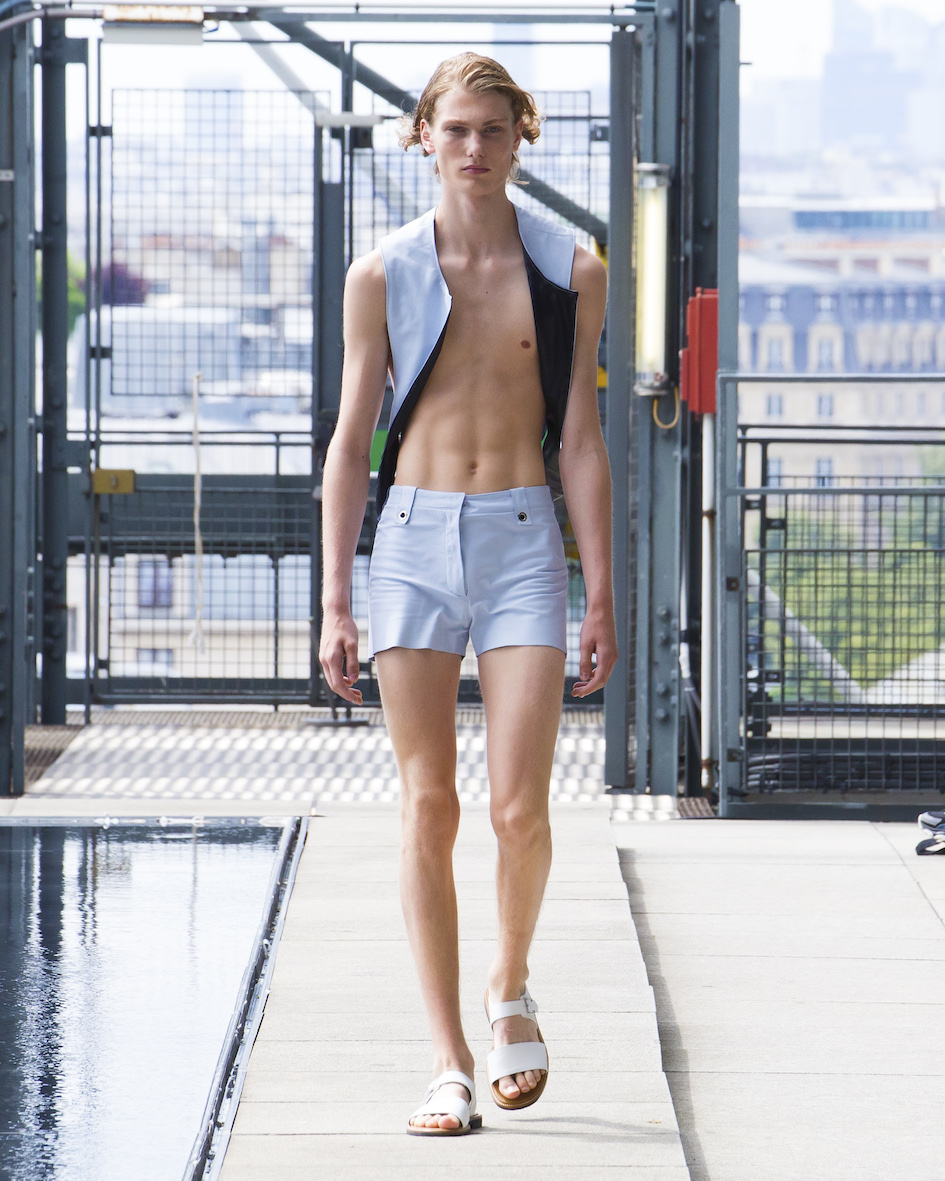


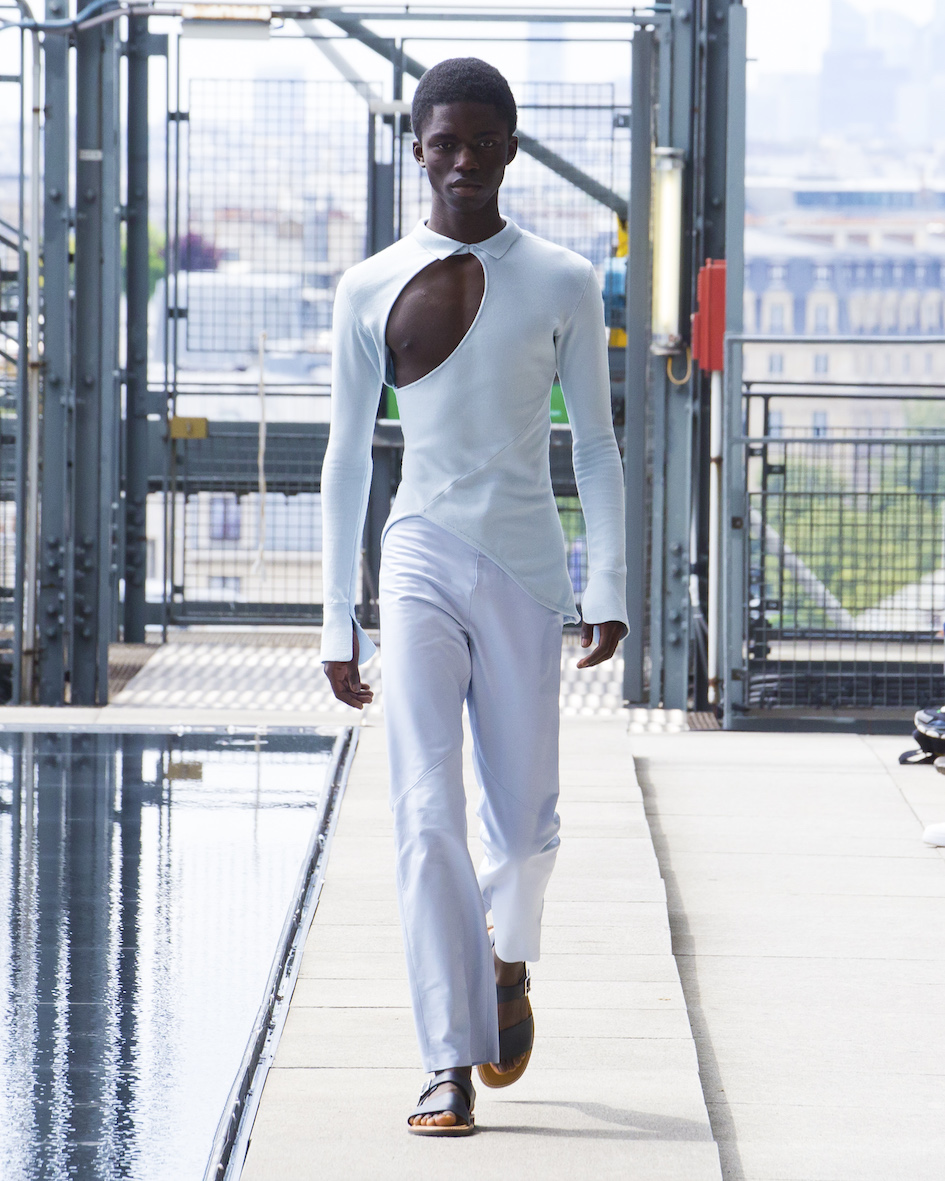
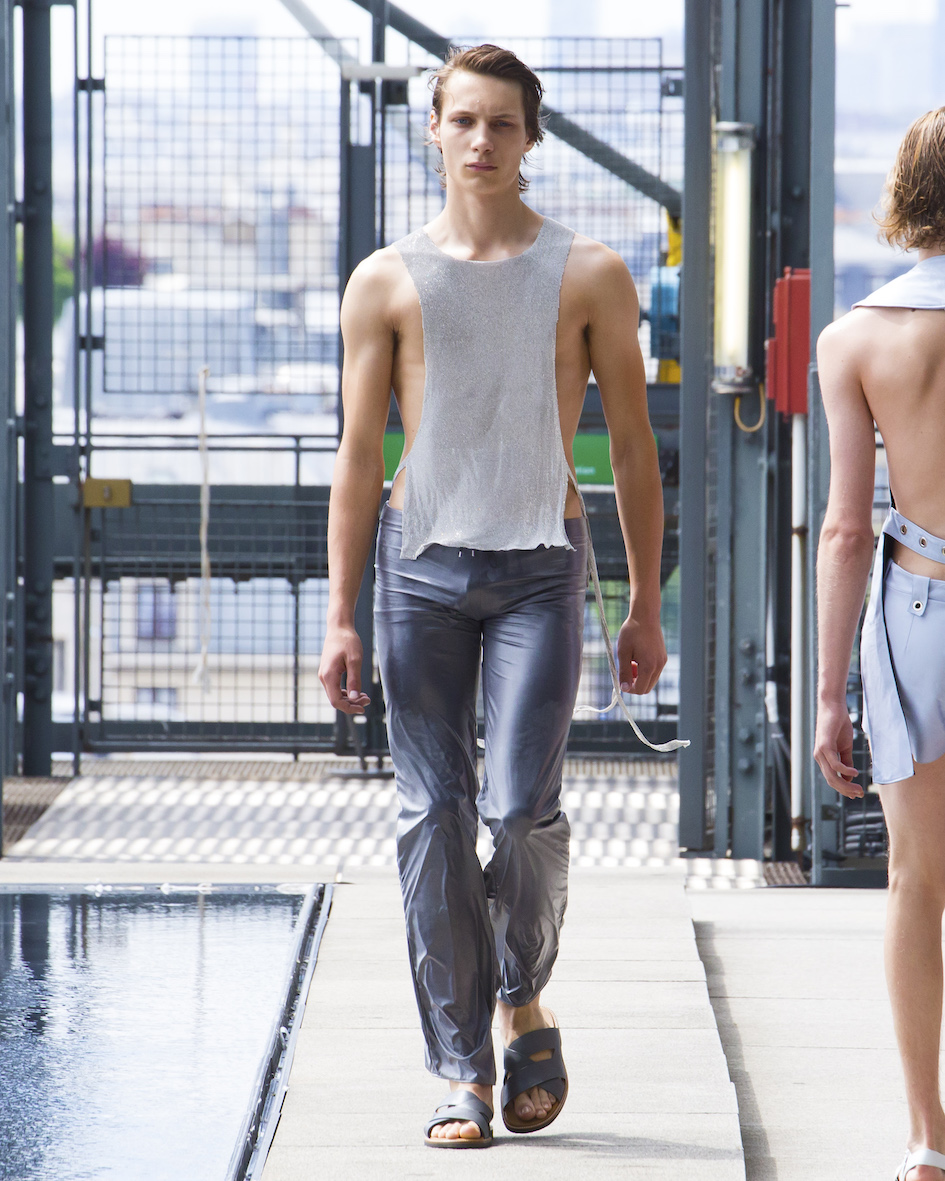
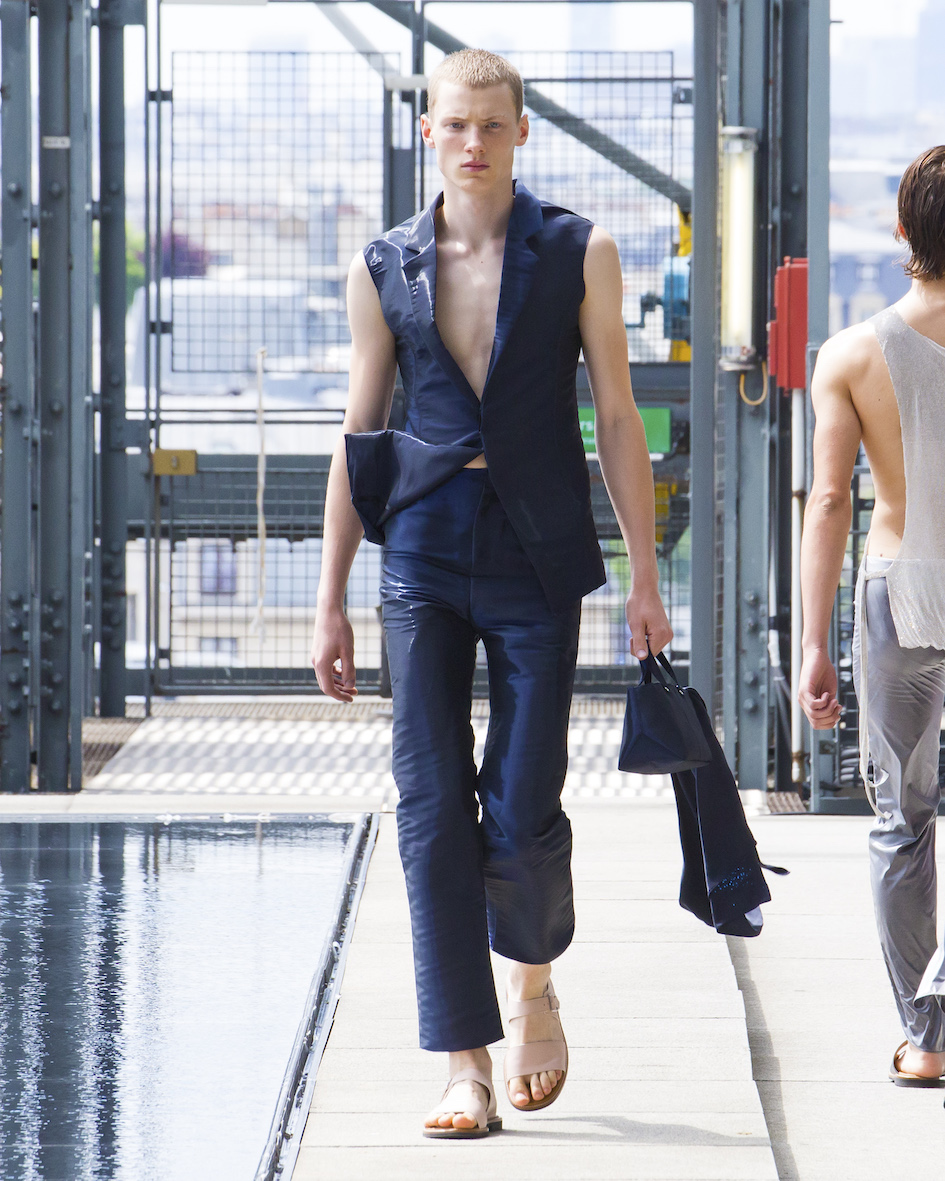

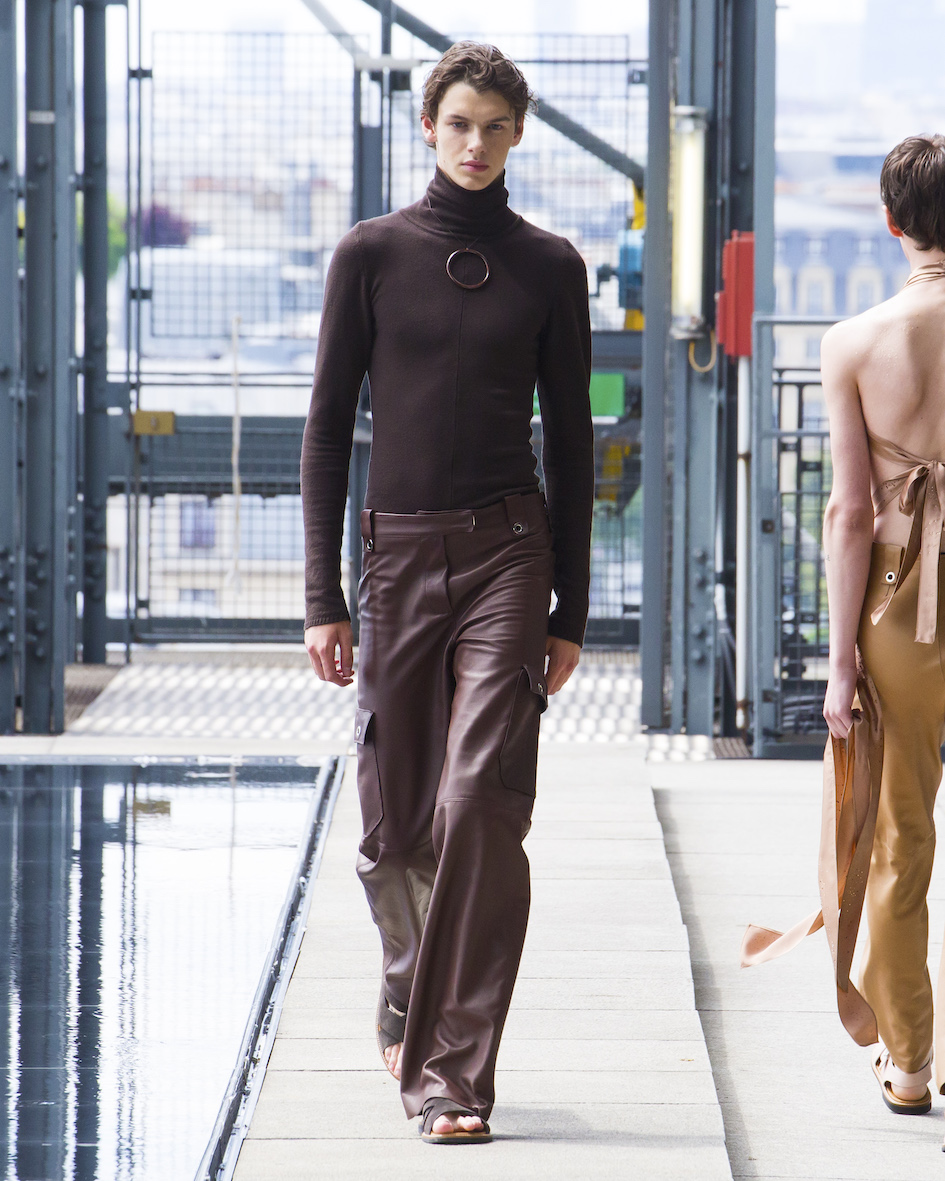
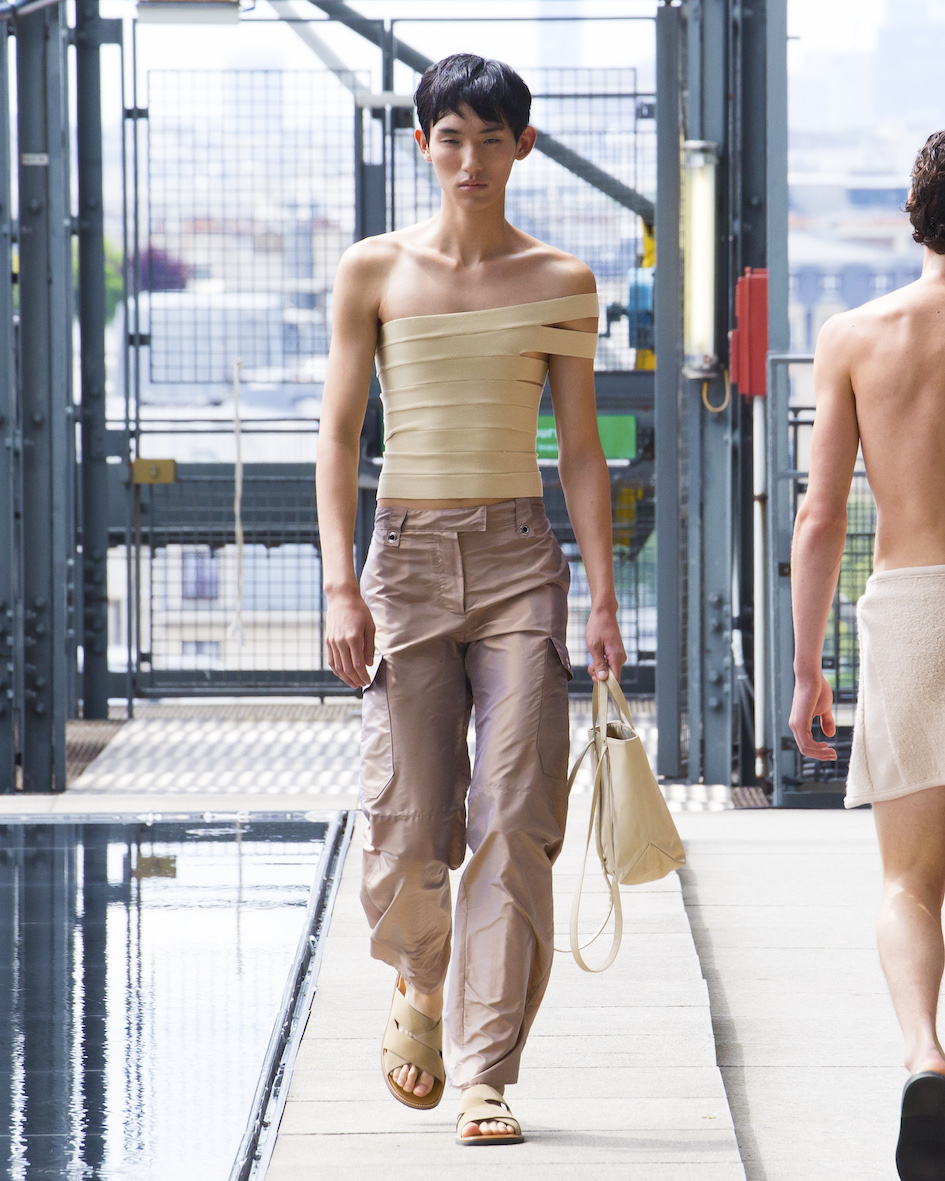
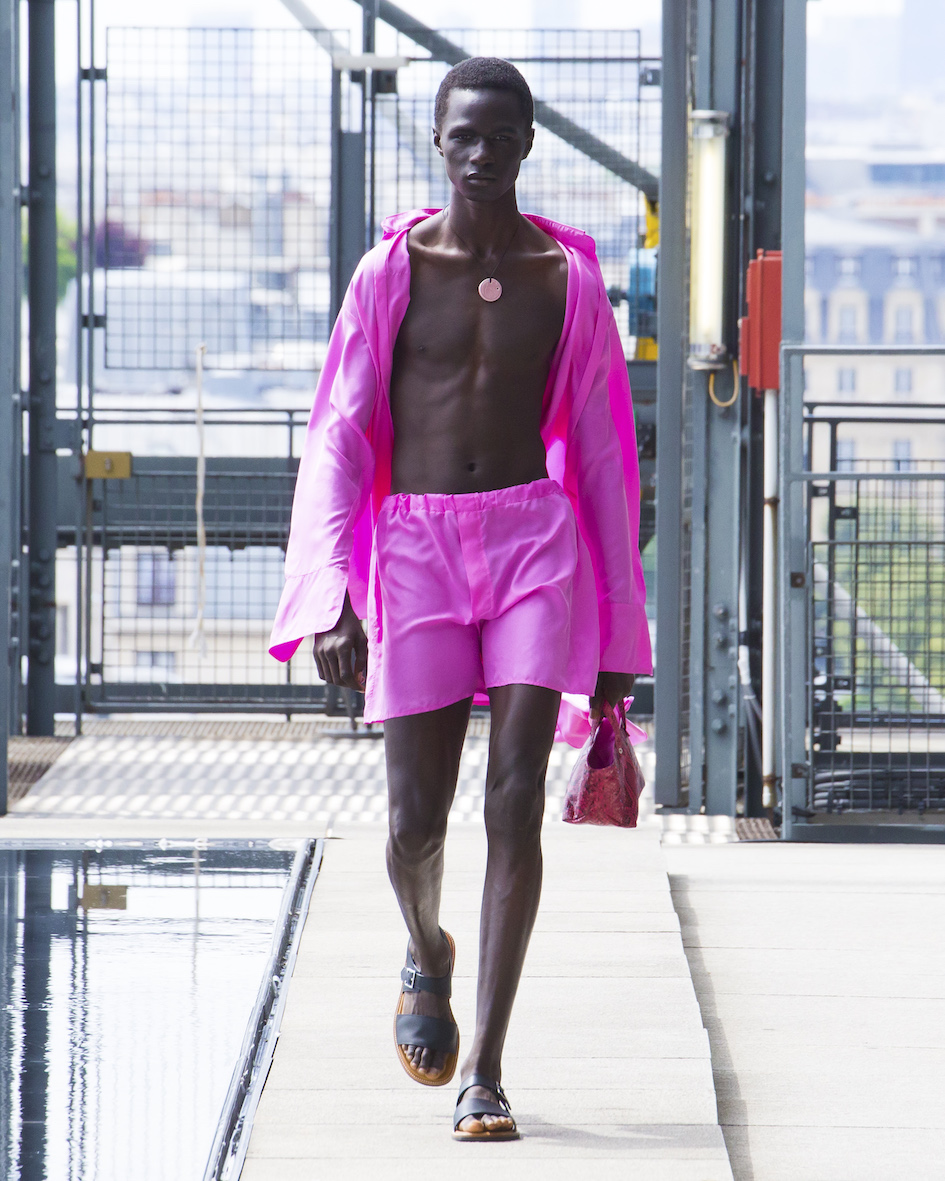

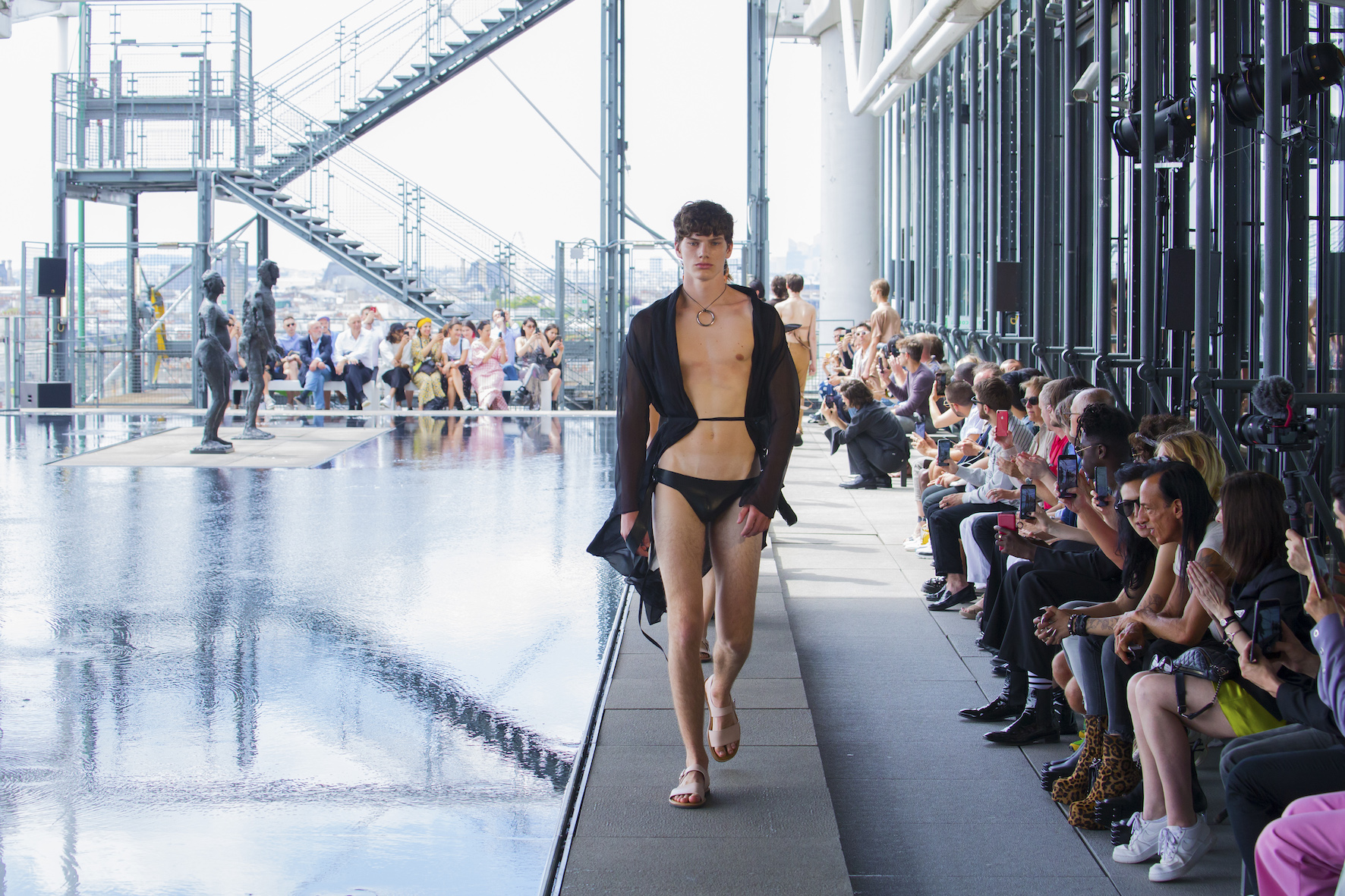
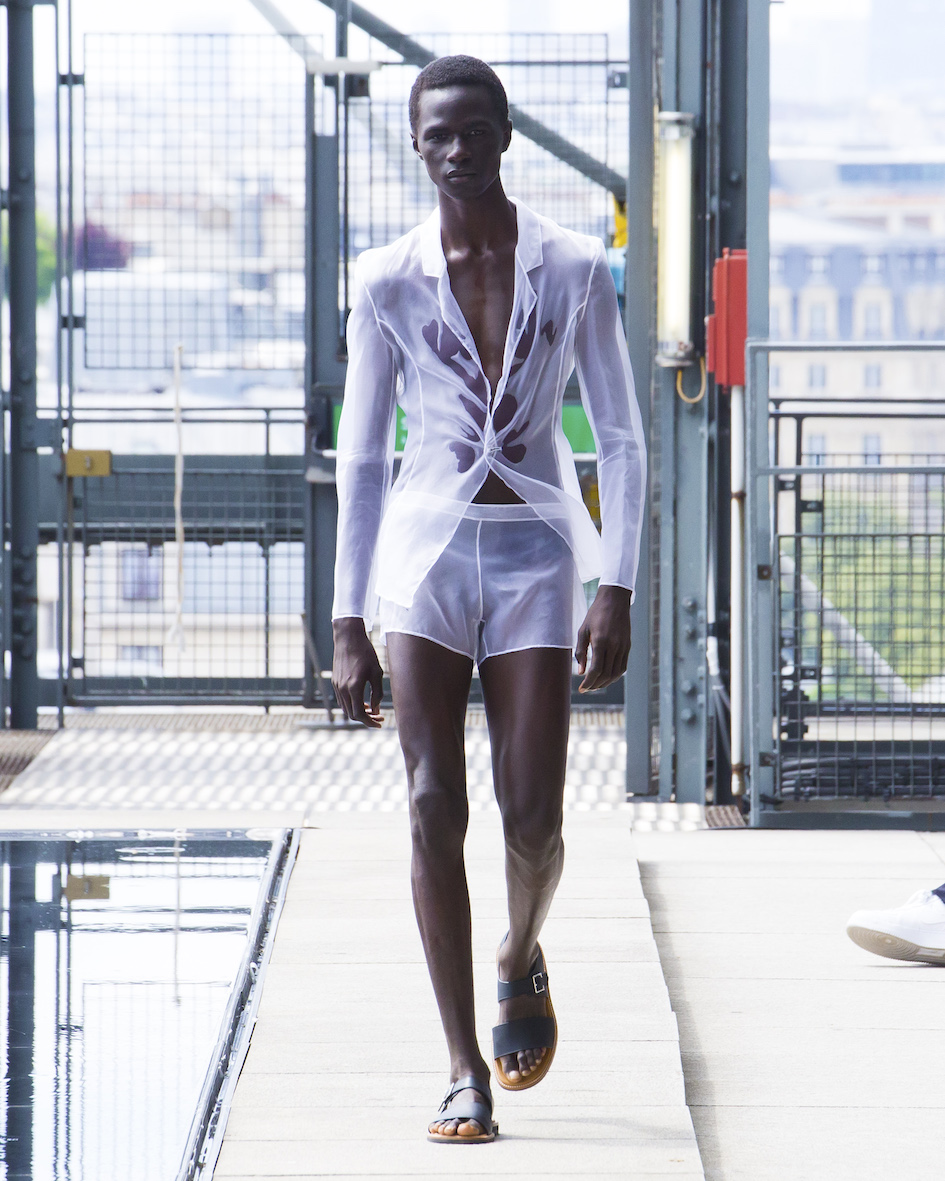
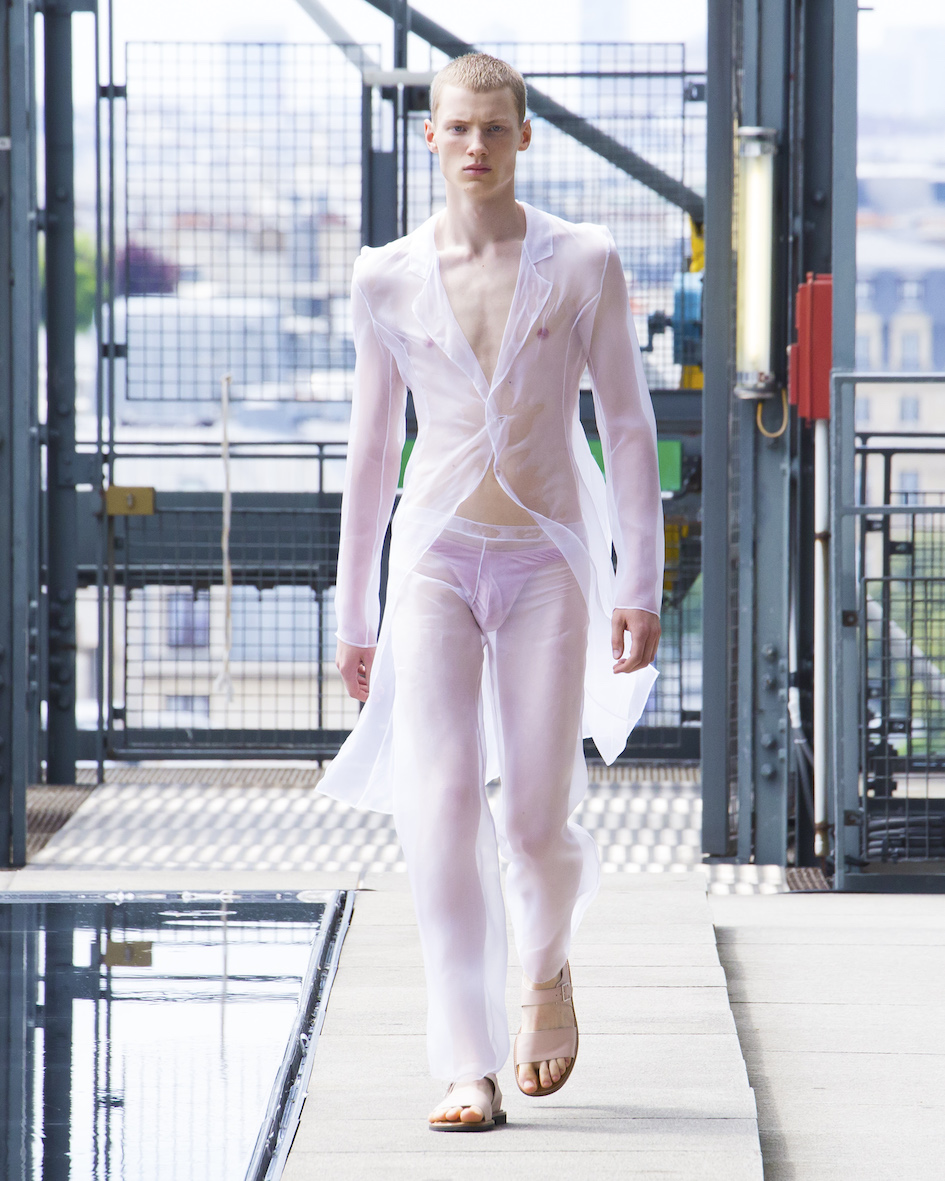
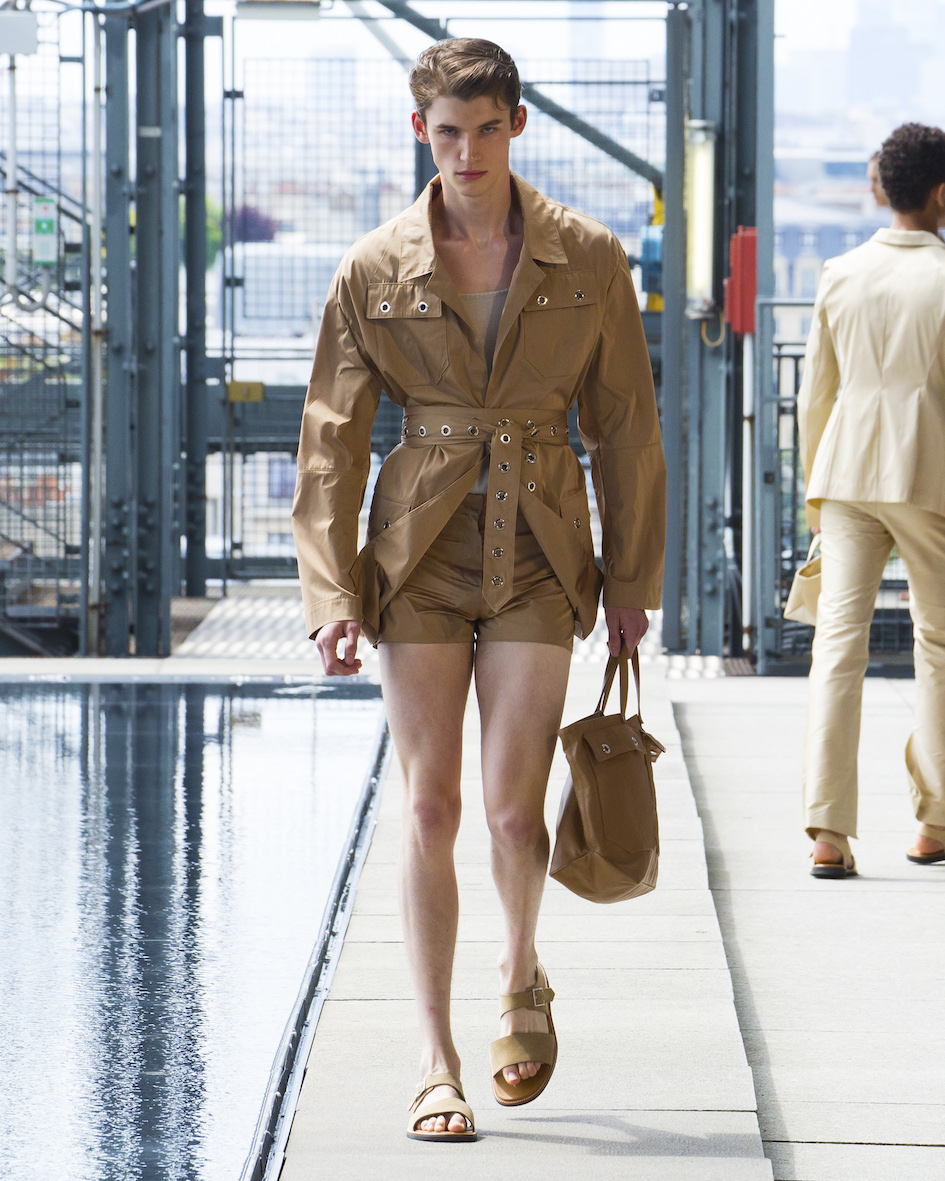
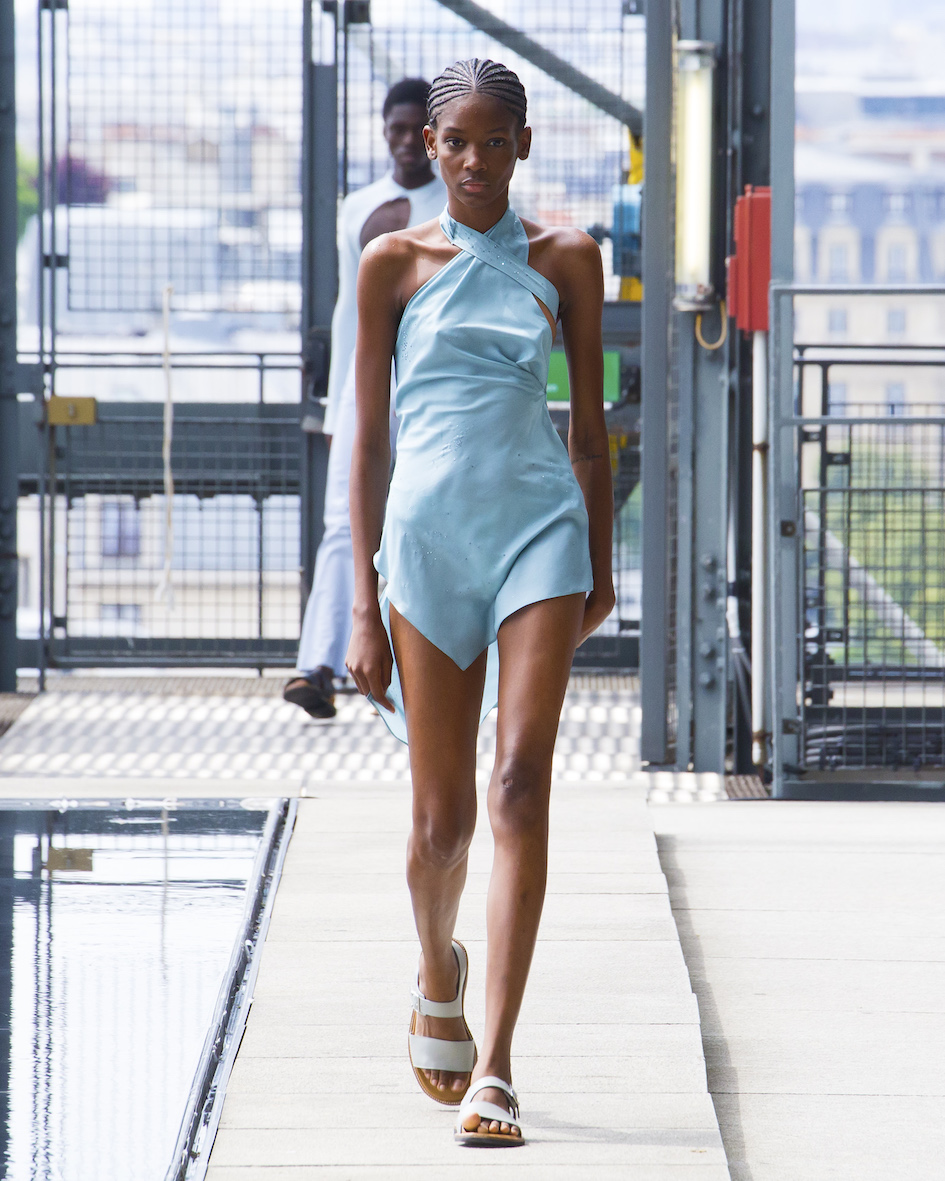
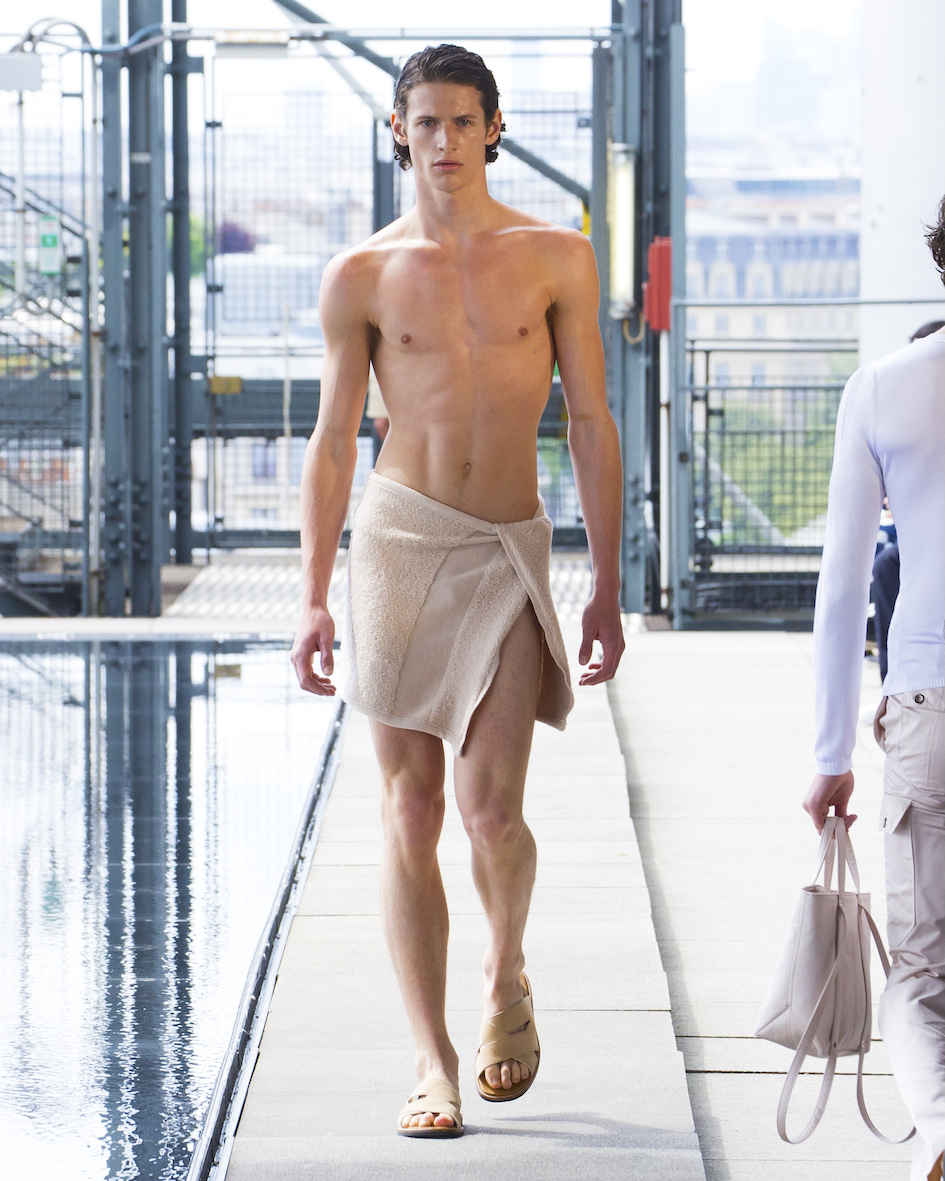
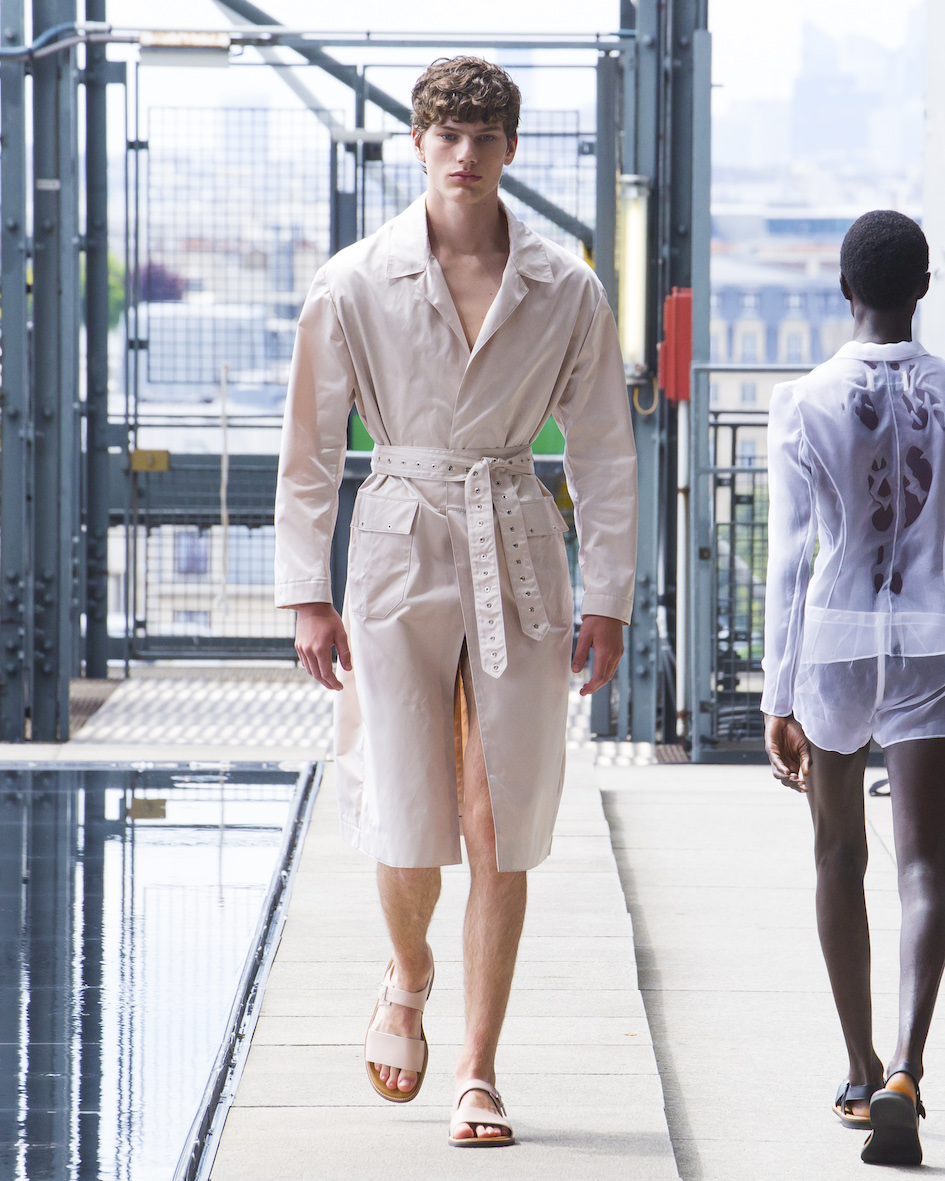
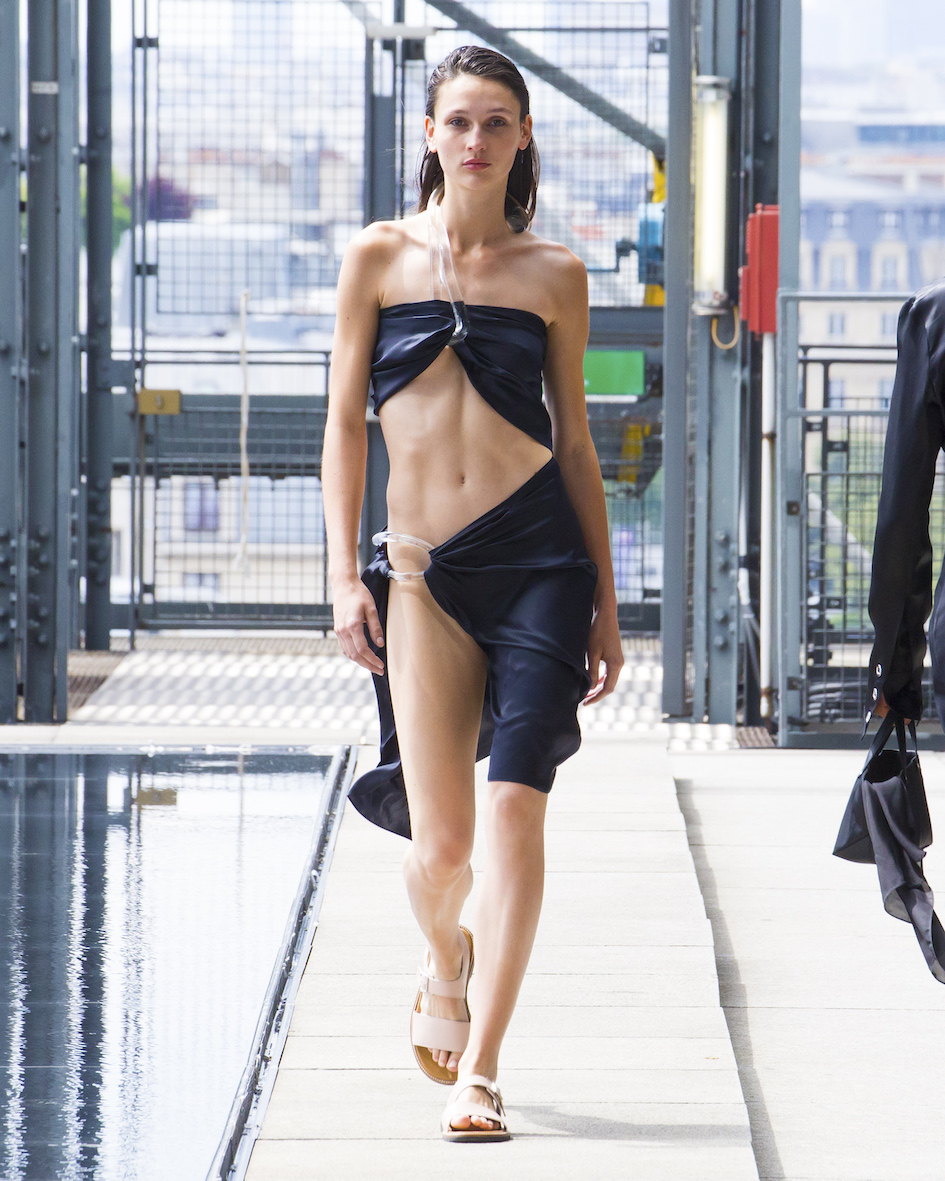
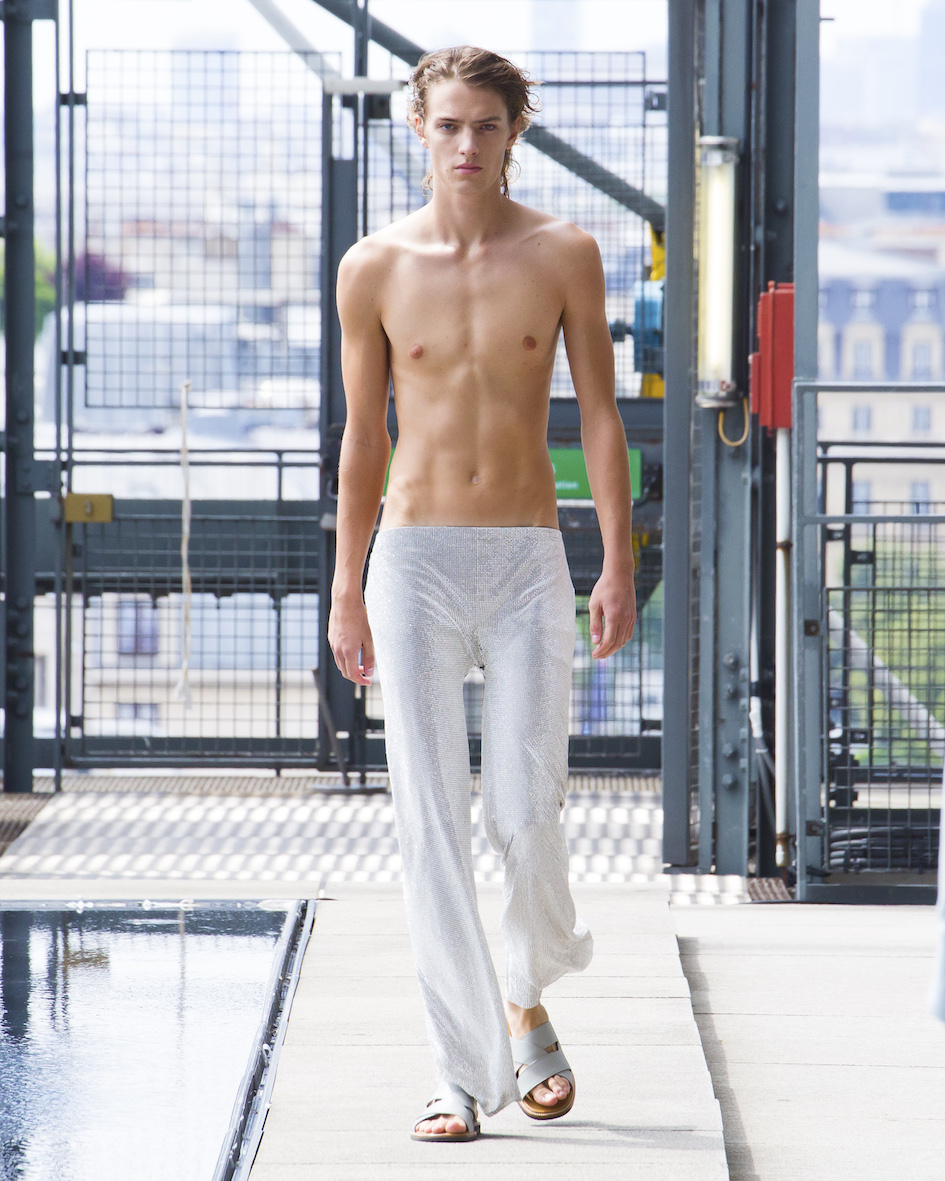
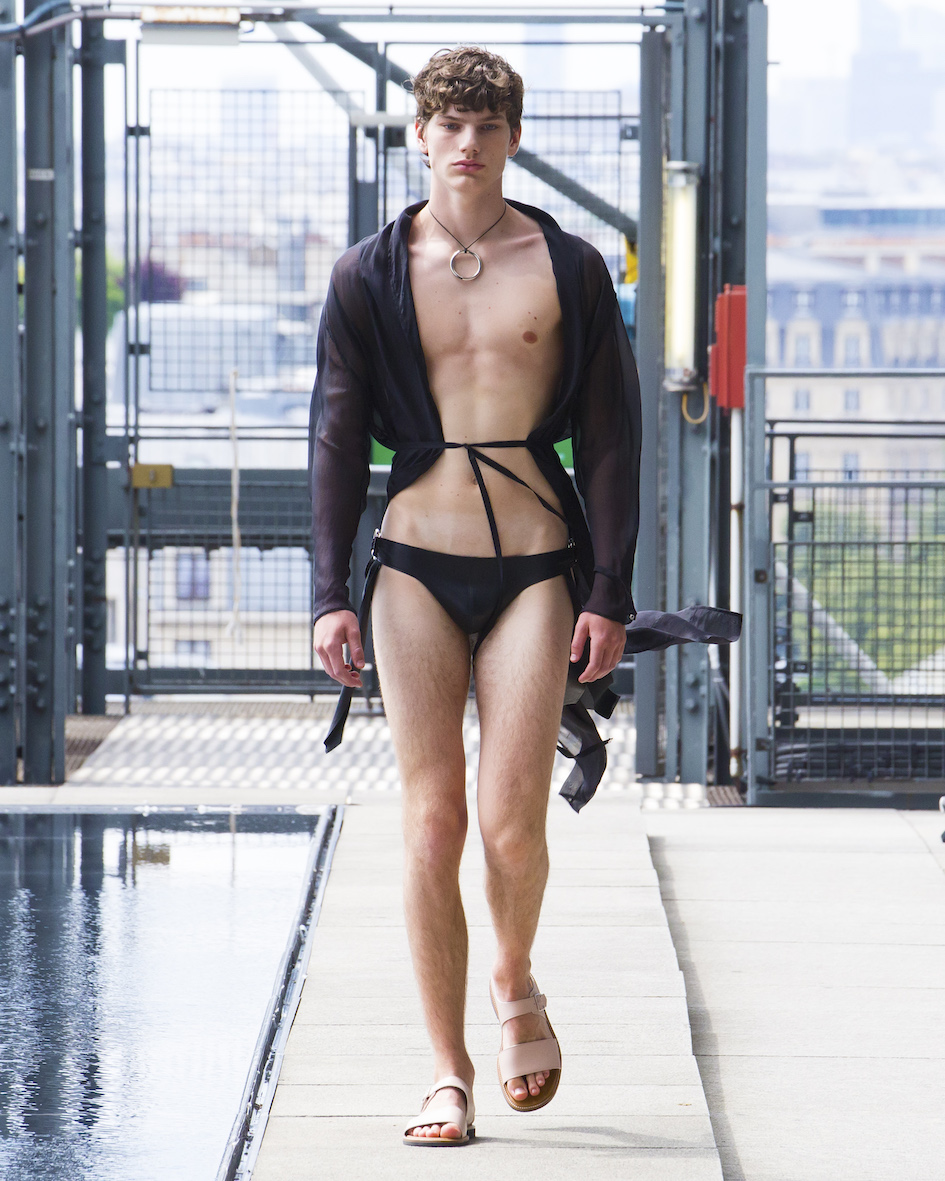
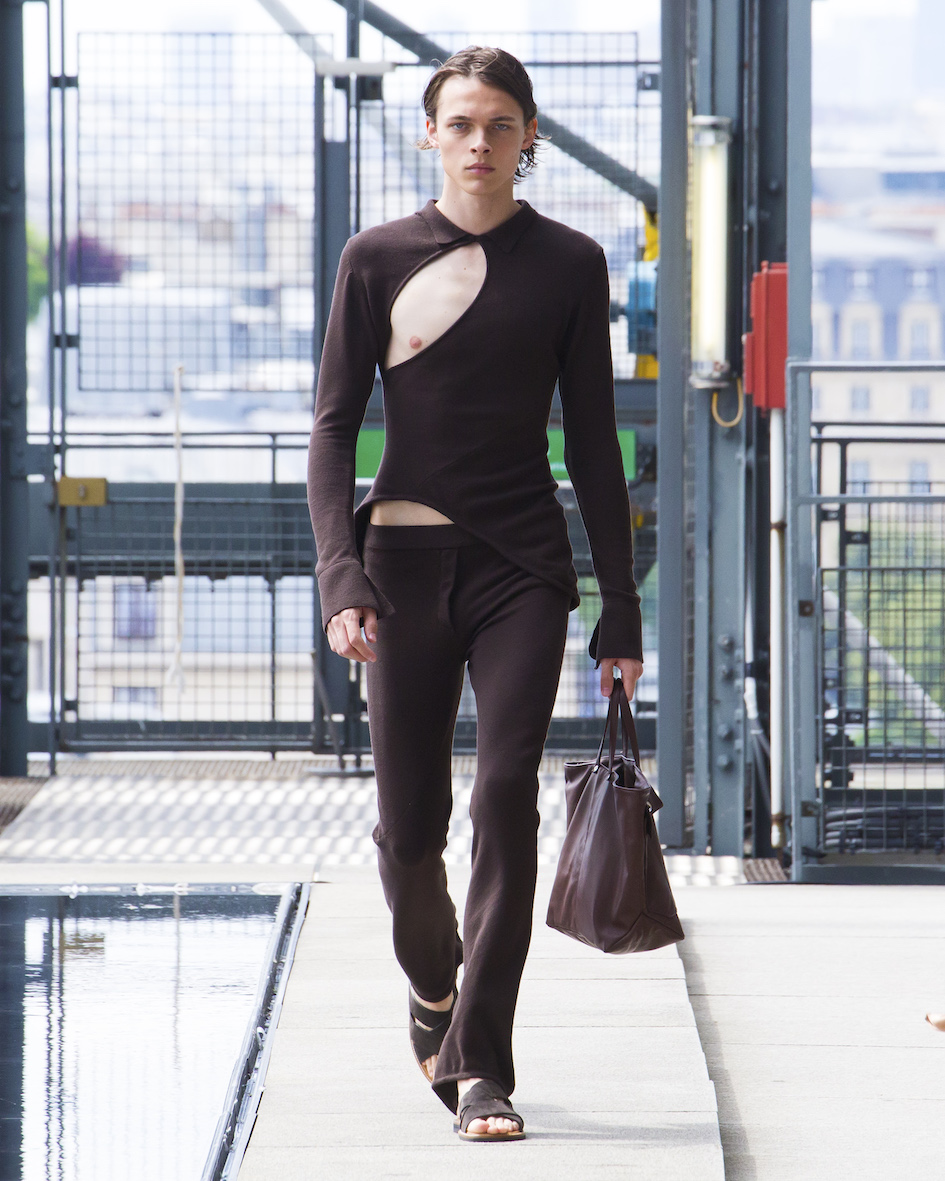
…
/ Words by Philippe Pourhashemi /
/ Runway pictures by Luca Tombolini /
A LEAN MACHINE AT CELINE
One of Hedi Slimane’s many talents is to play against expectations while sticking to his guns and that’s precisely what he did with his last Celine show. If David Kramer’s artworks for the brand -featured online and within the invitation book- made you think of sunny LA afternoons and psychedelic pursuits, you were in for a surprise when the show started.
Tapping into the 1970s and some of his beloved icons and musical references, the French designer elongated the silhouette to new extremes. His jeans were rather slim, slightly flared and sat at the waist, which made his models’ legs look even longer. Slimane also used abbreviated blouson jackets that minimized the torso area and shoulder line. A formal, double-breasted pinstripe jacket -trimmed with a red carnation- was casually worn open over a denim shirt, which instantly brought French singer and composer Serge Gainsbourg to mind. If Gainsbourg’s style was négligé and looked accidental, it was in fact the complete opposite as every element of his persona and attitude were carefully chosen and mixed together.
That sense of studied nonchalance was also evidenced in Slimane’s choice of accessories, such as an unpretentious but surprising straw tote worn over the shoulder or straightforward white sneakers, which went against the current trend of gigantic and over-embellished numbers. Such longing to reconnect with authentic clothes is without a doubt one of Slimane’s driving forces and there several garments to covet in his show, from sleek black leather pants and stripy overalls to a military print trench or a slim black suit. The pointy white boots were a nod to 1970s kitsch, and they added a playful touch to the overall silhouette. Think disco pimp dancing to CHIC.

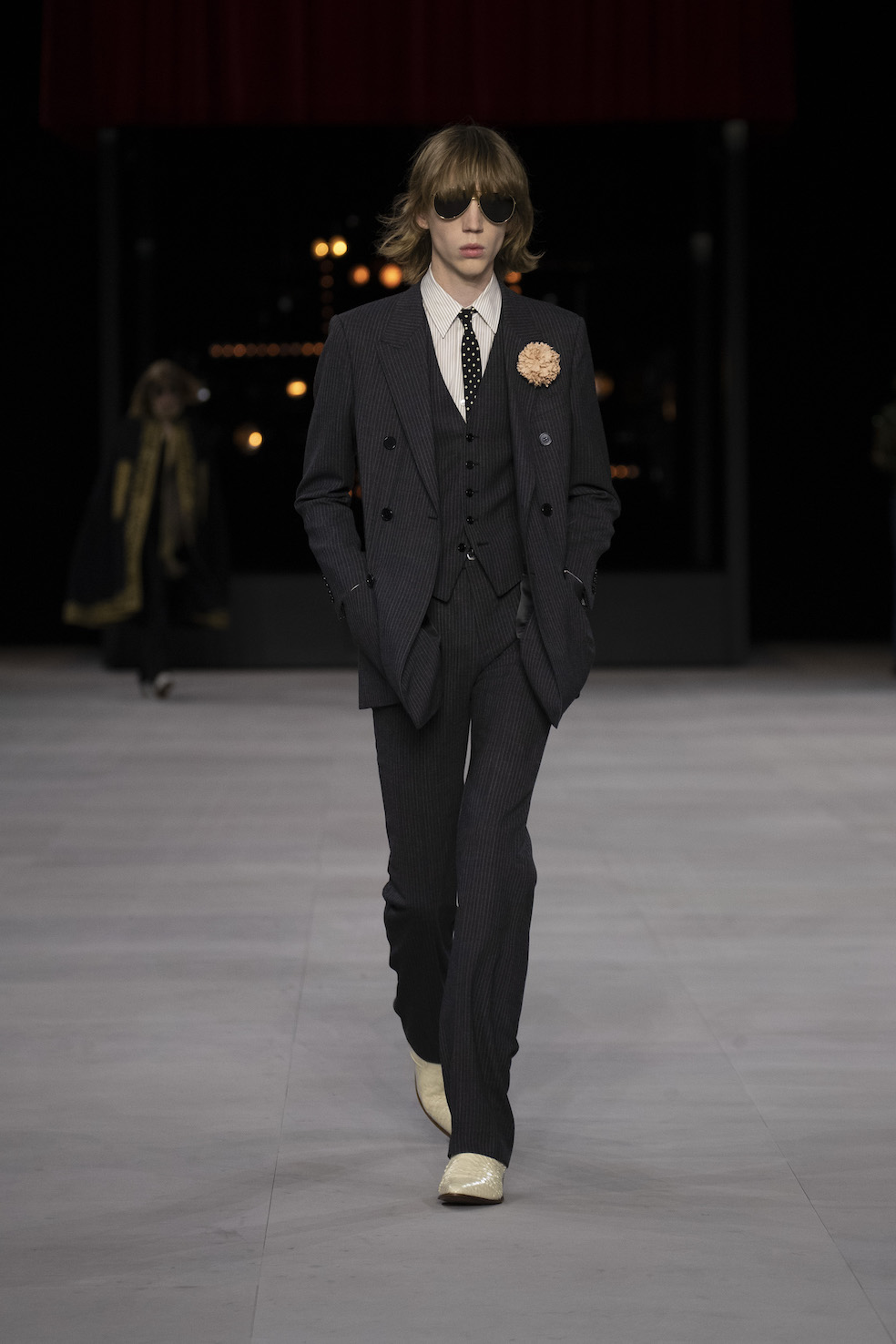
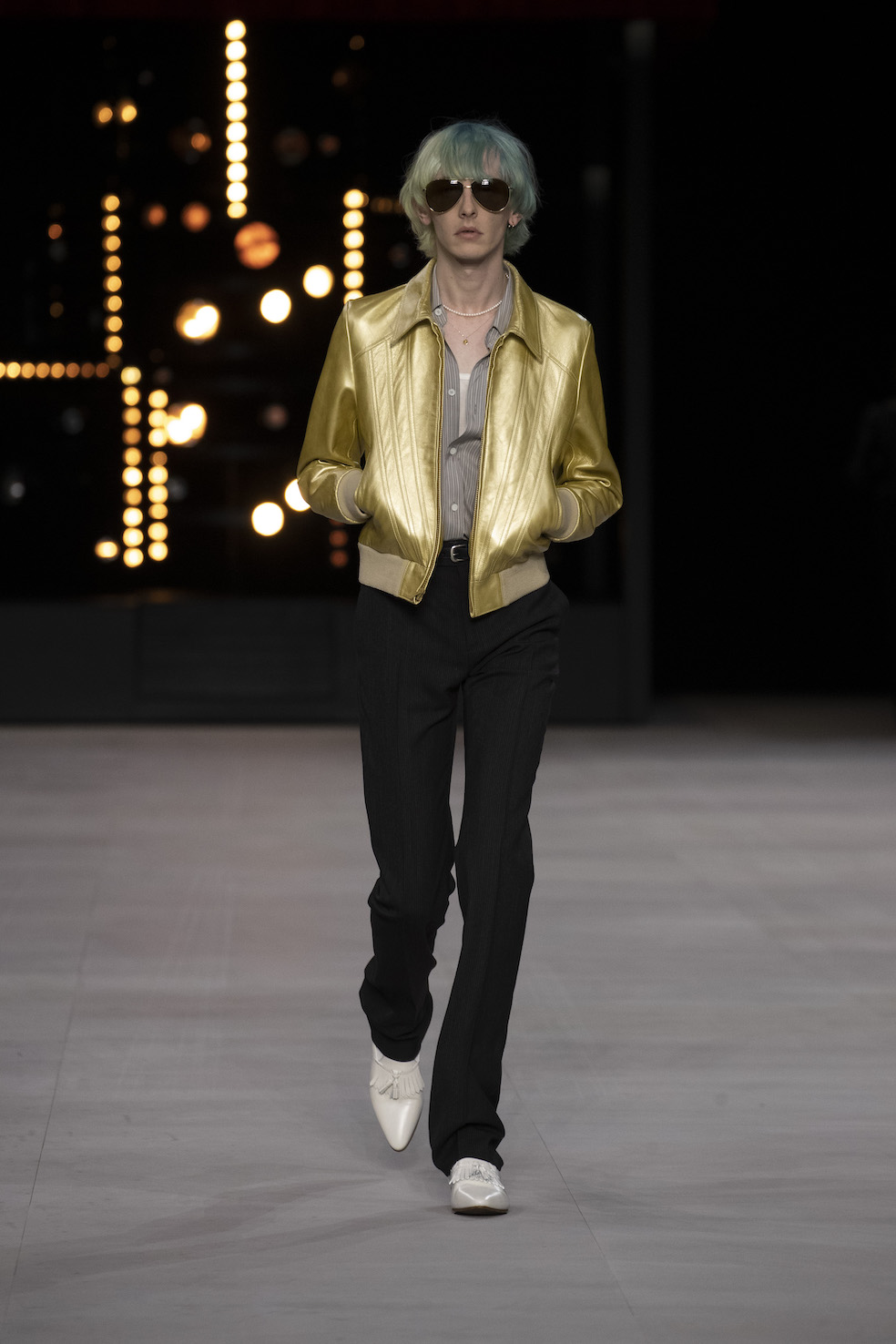
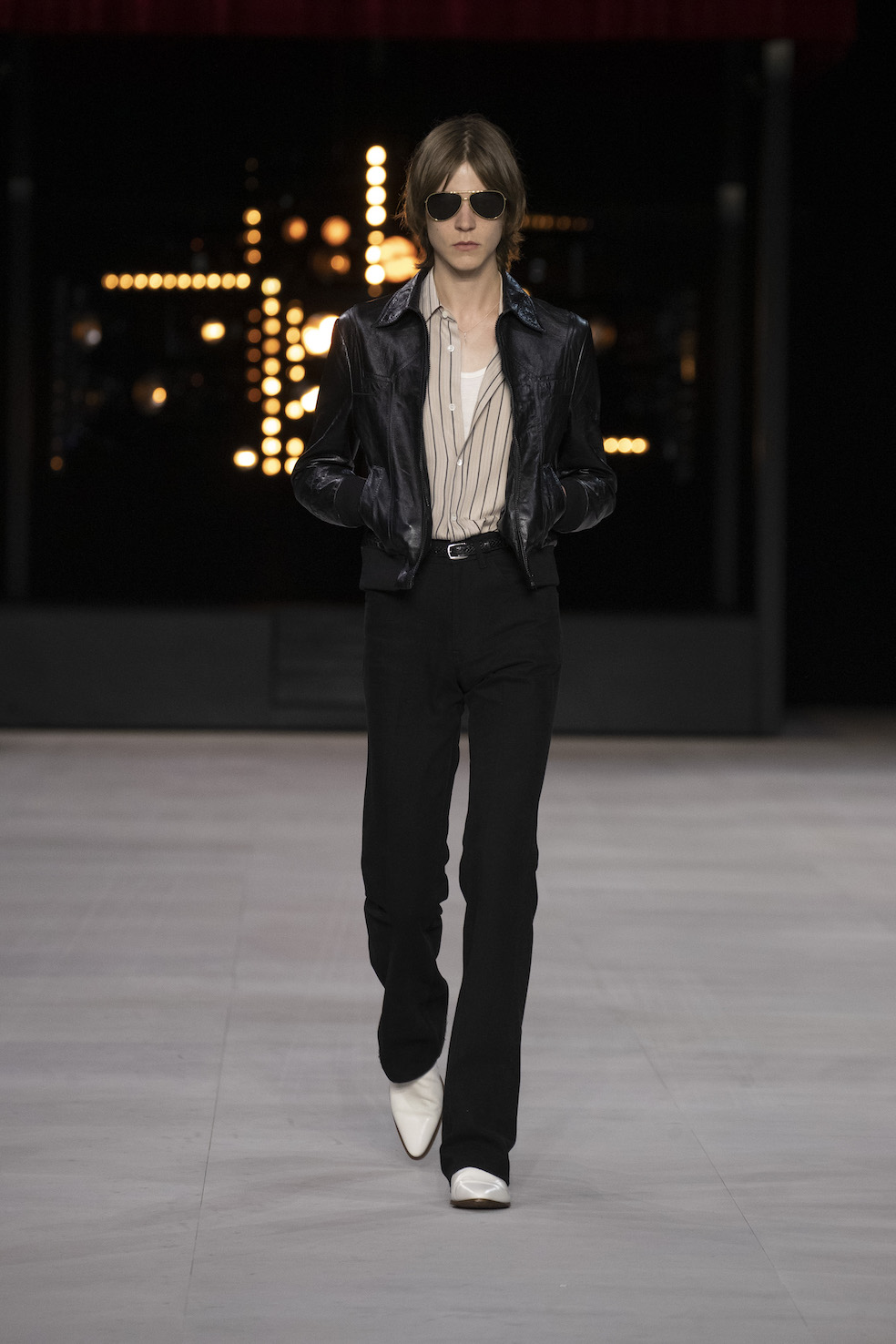
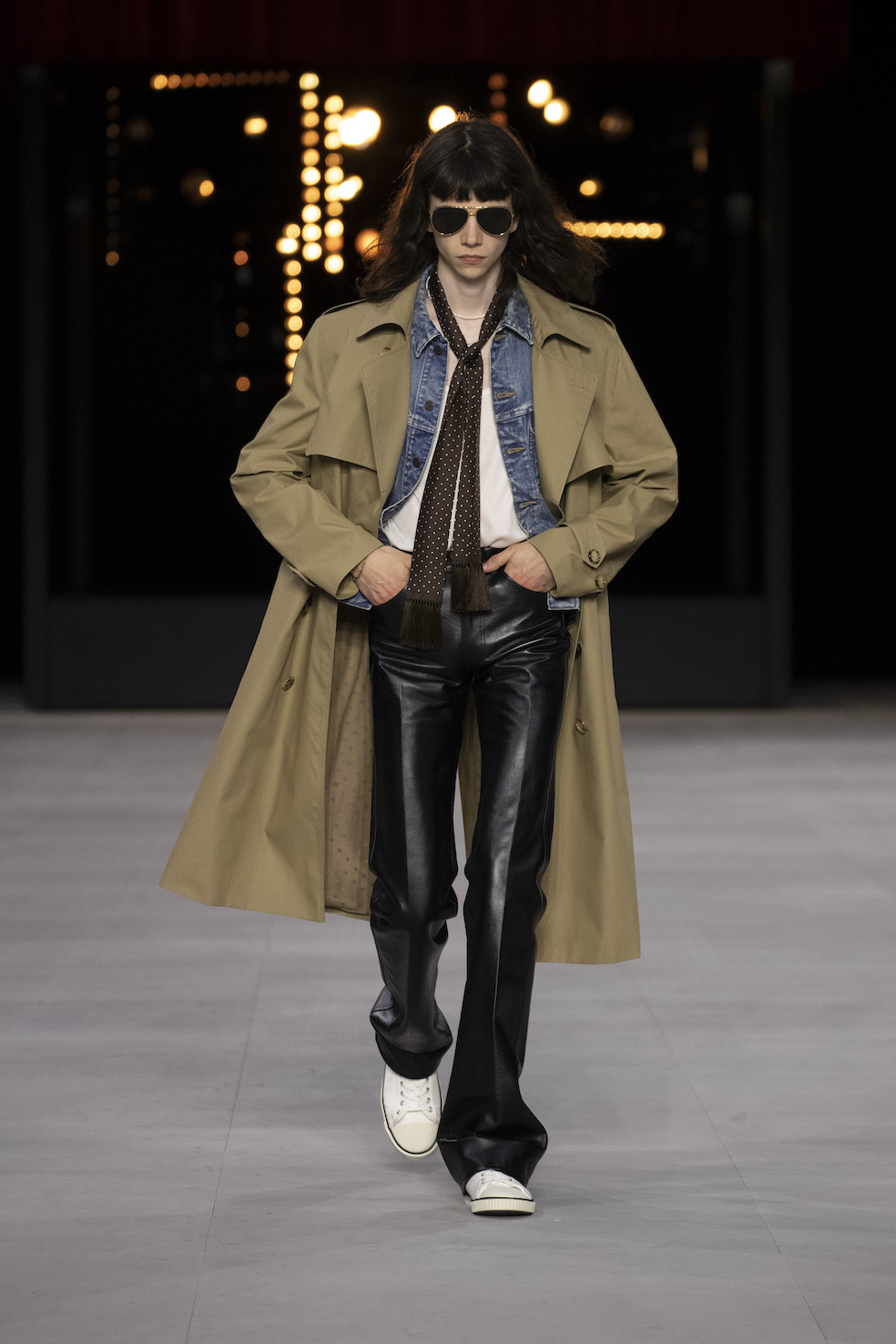
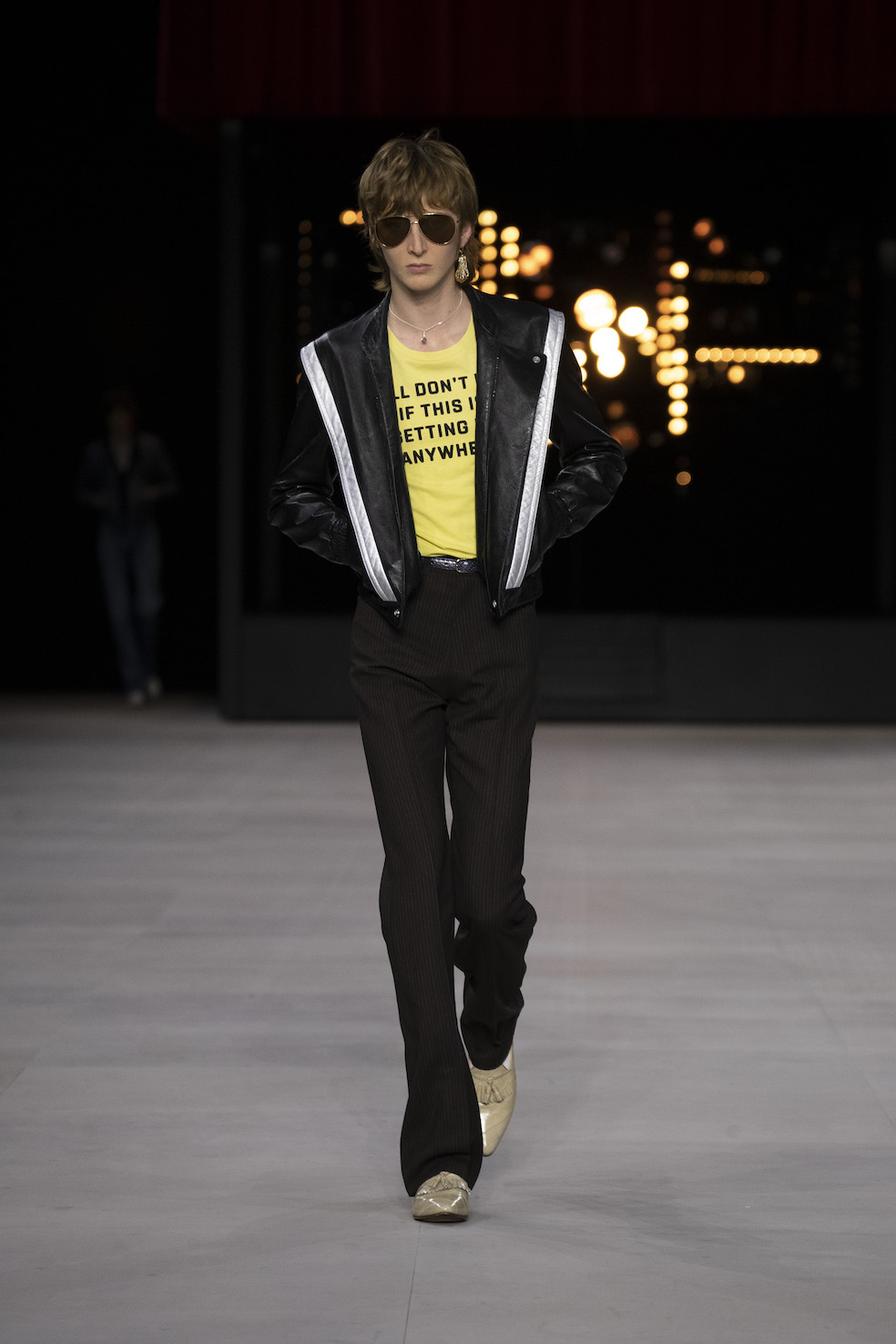
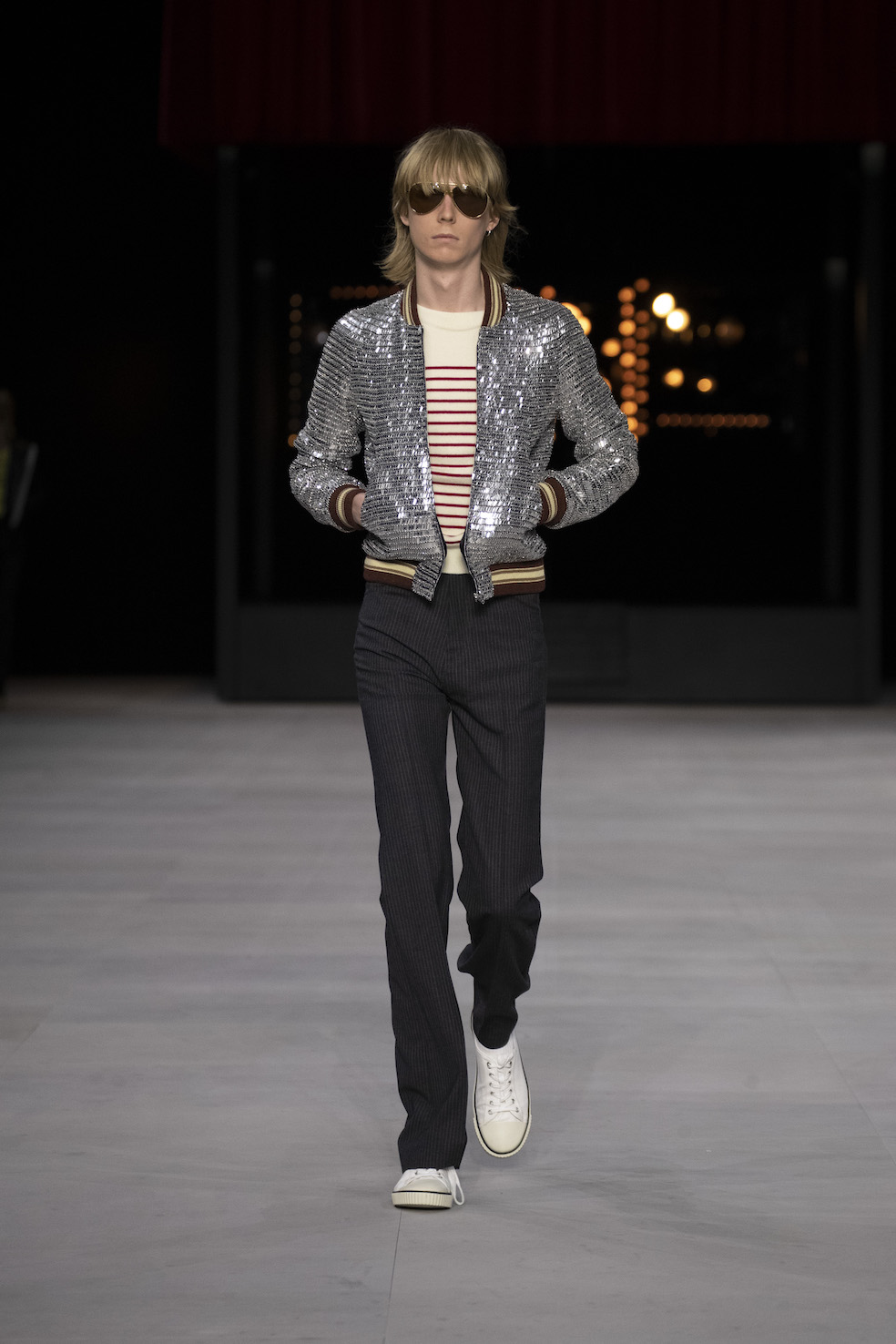
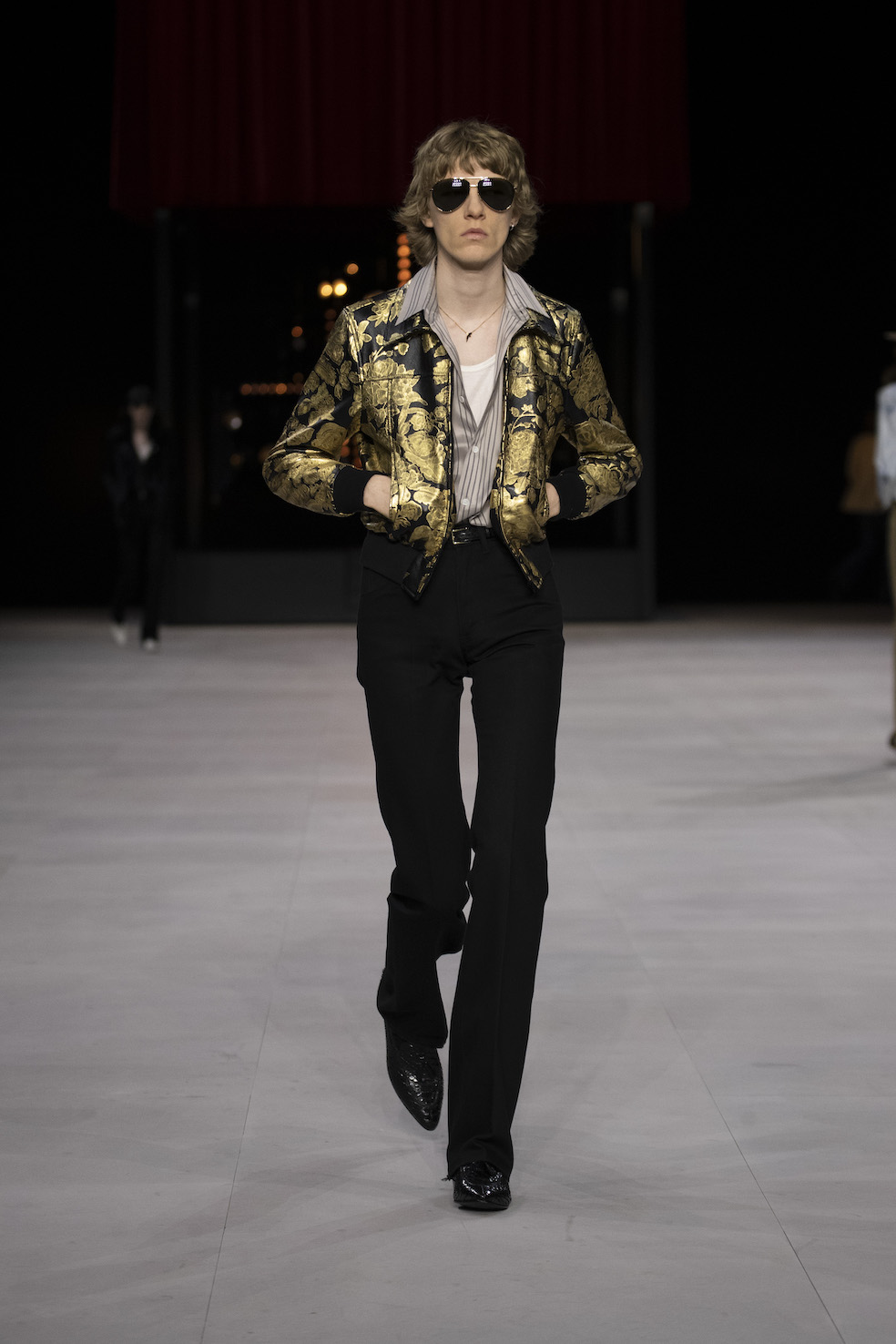
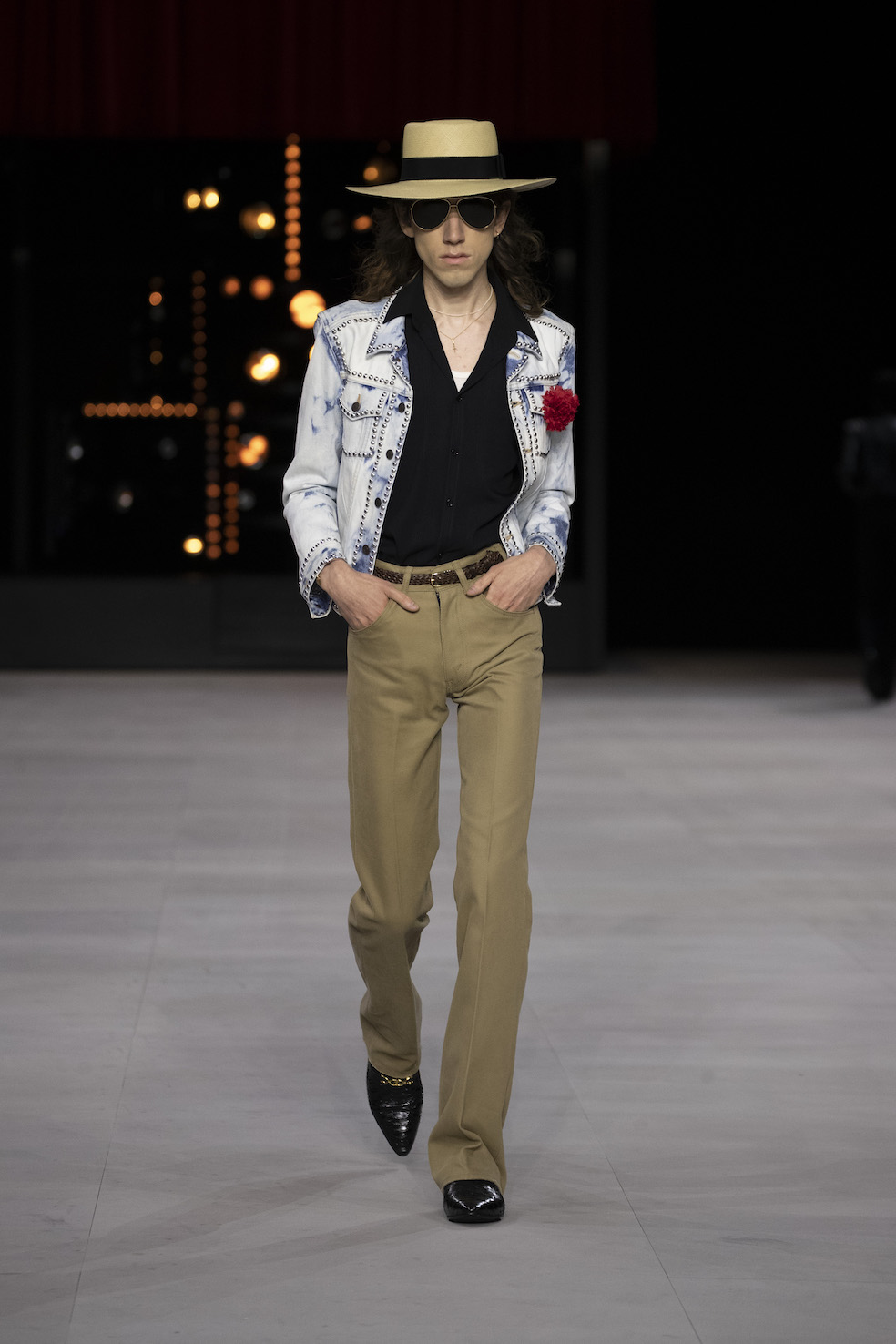
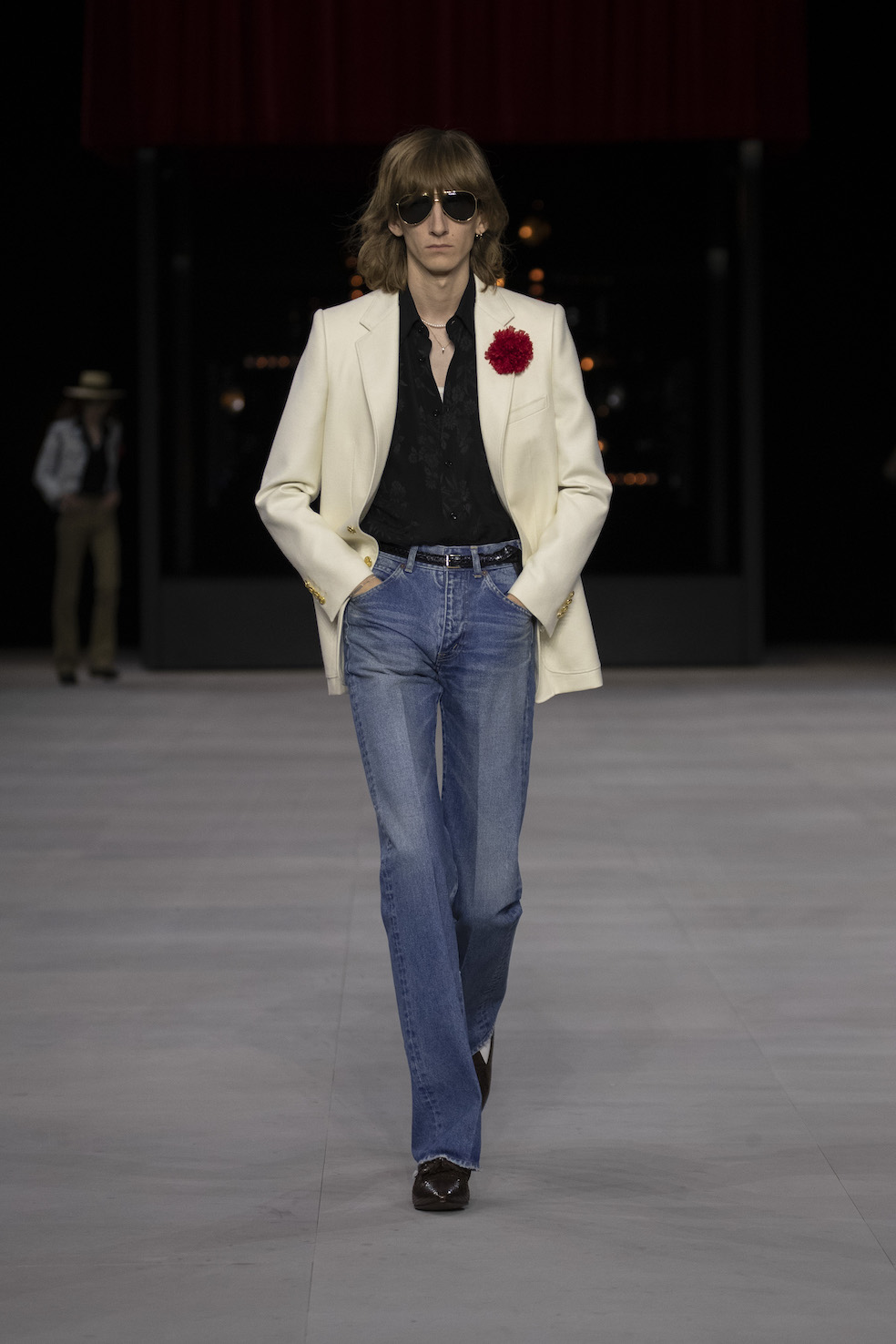
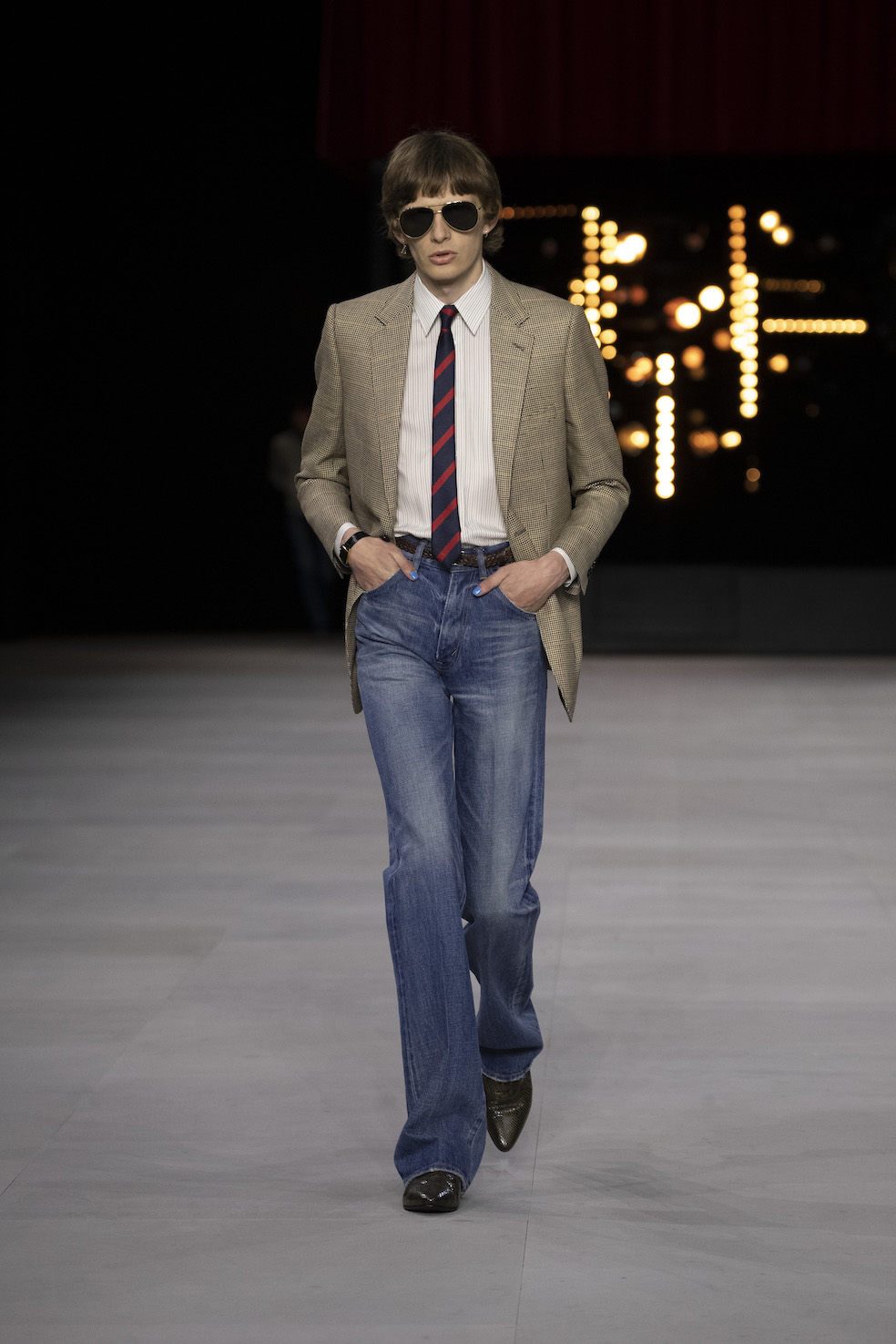
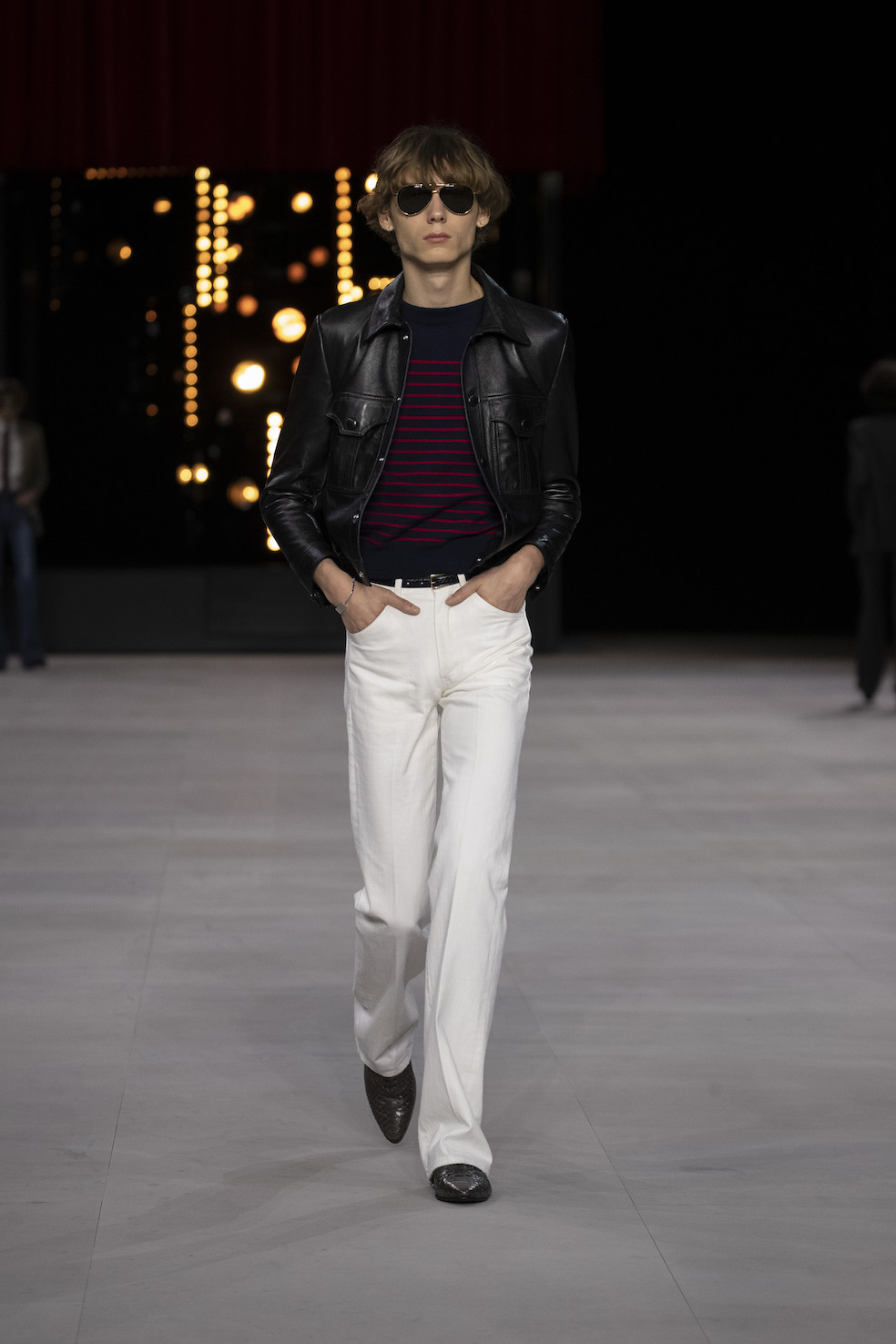
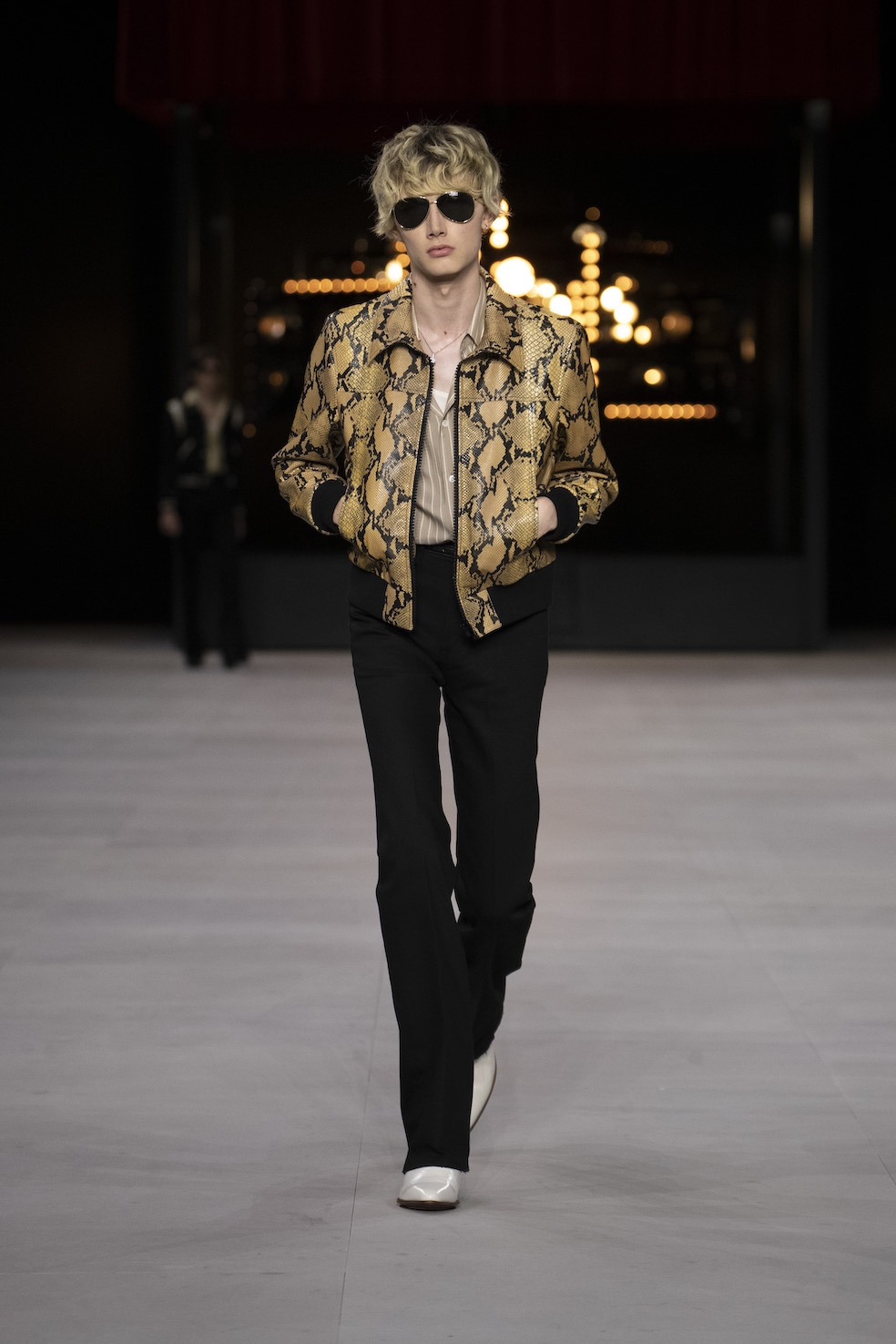
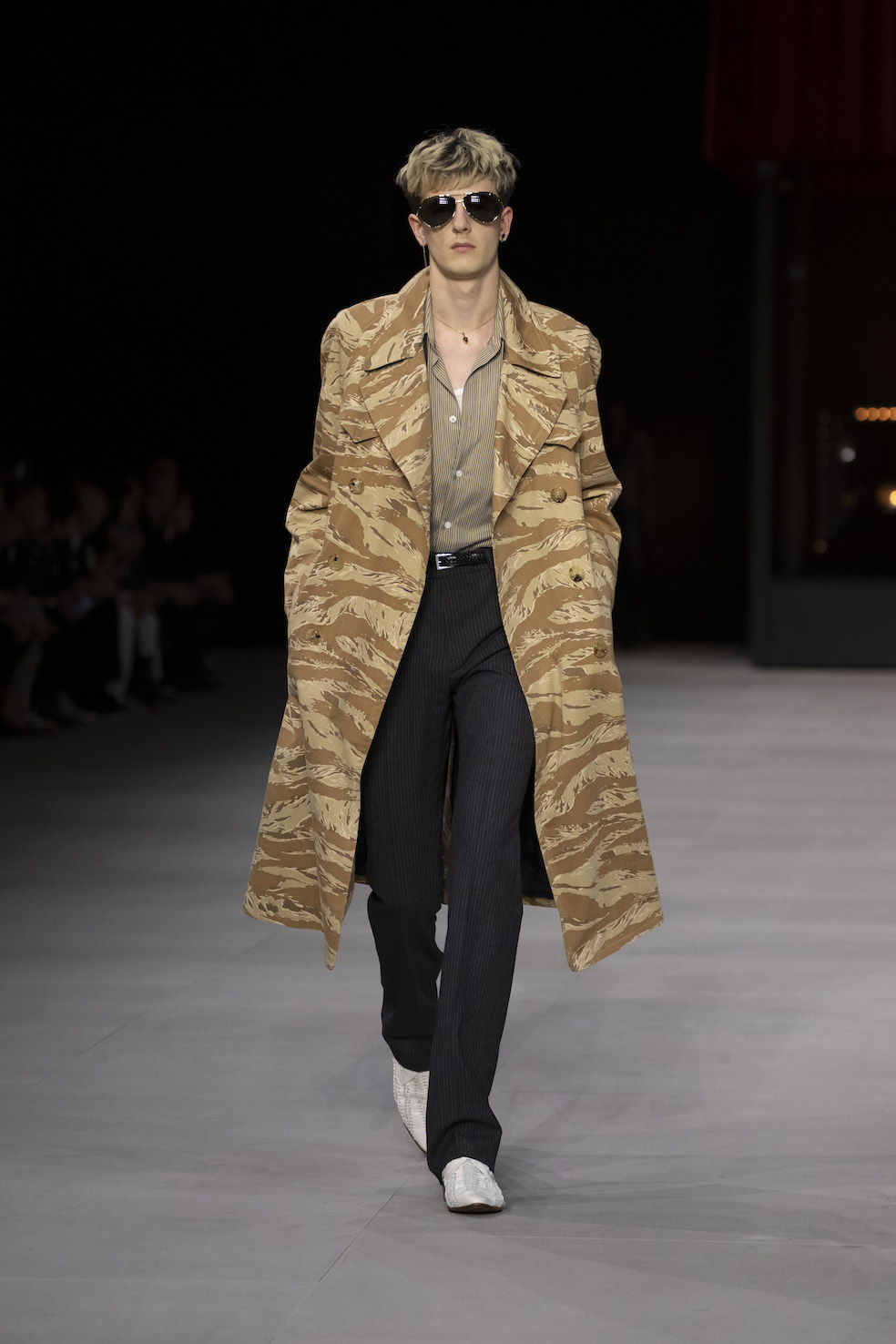
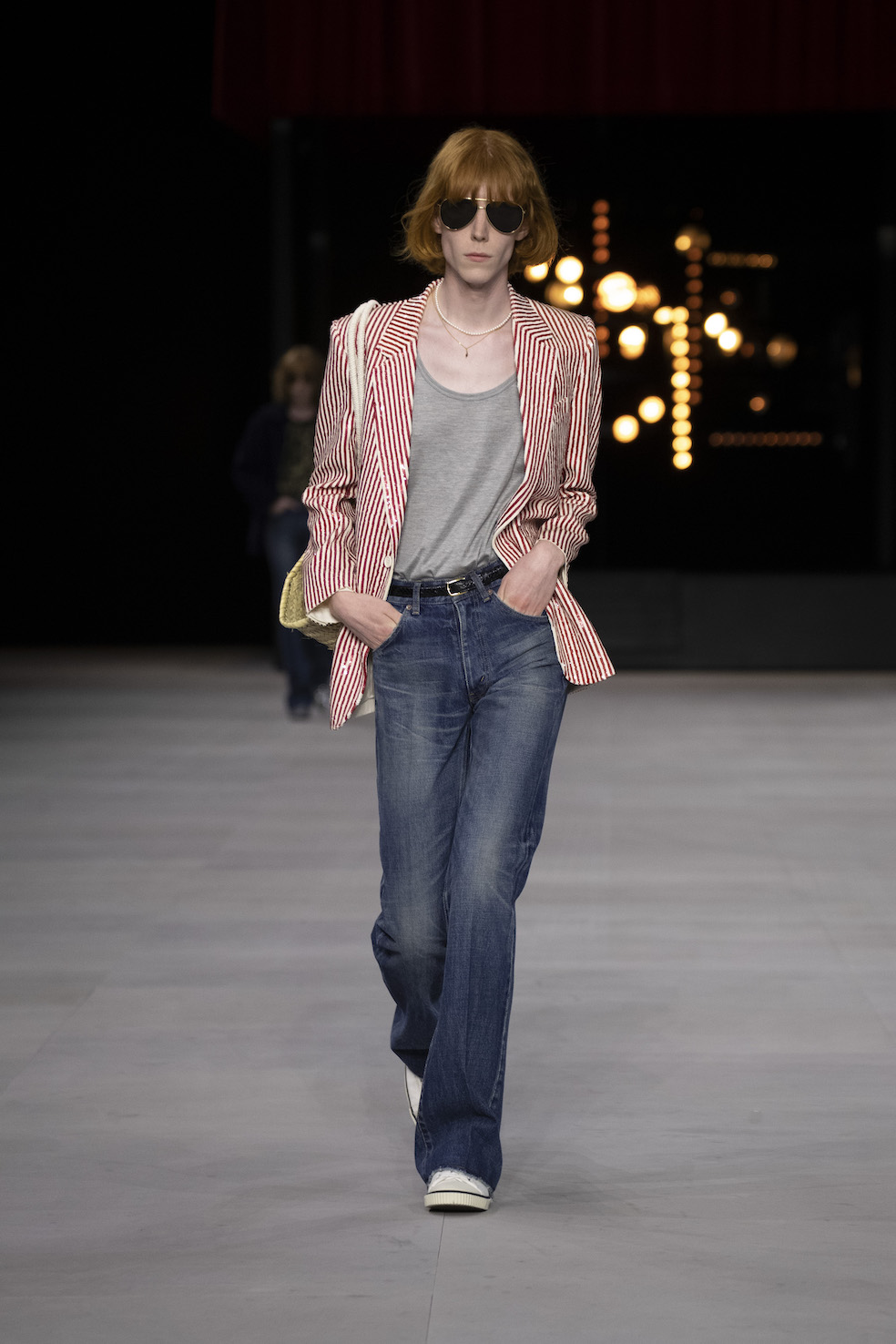
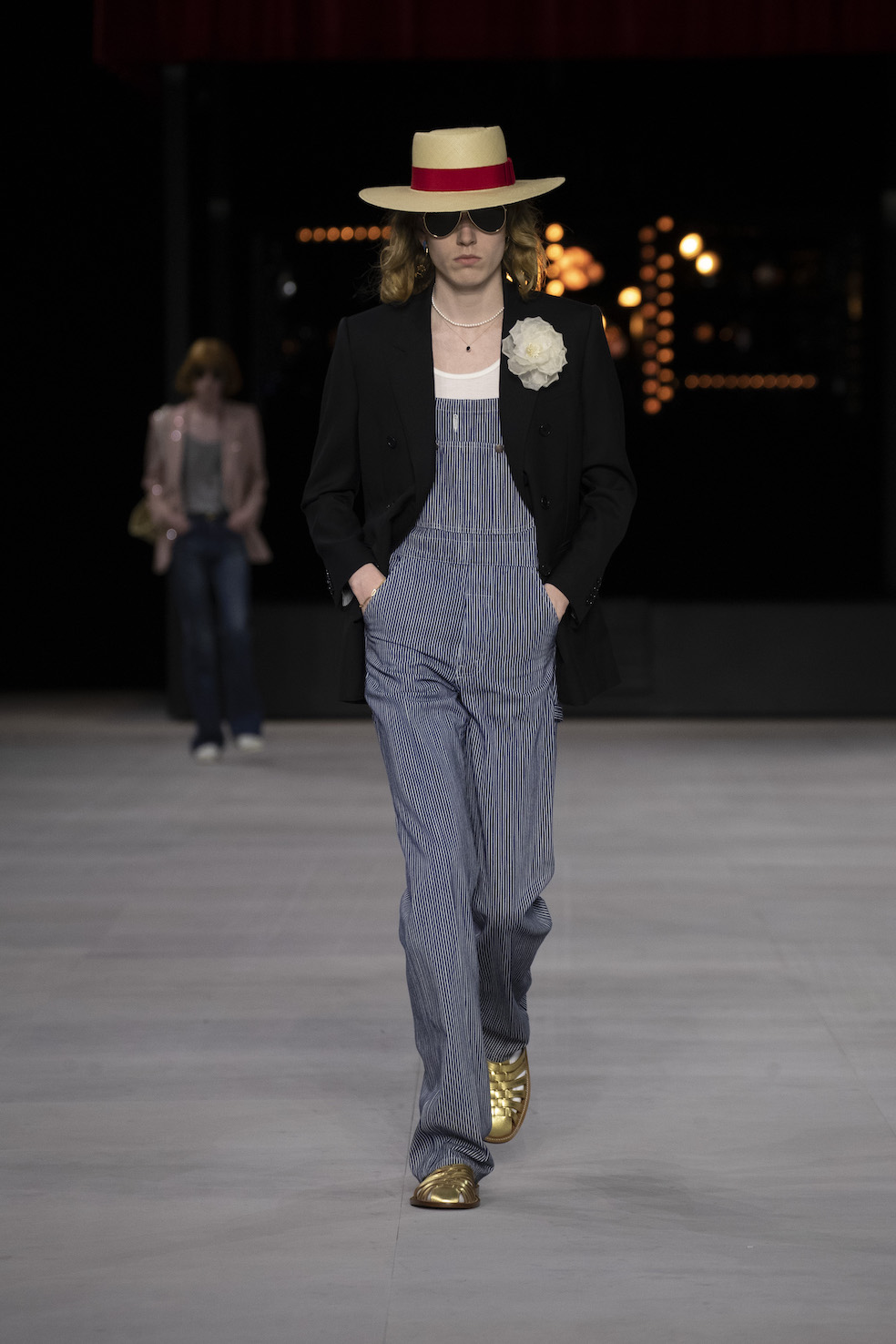
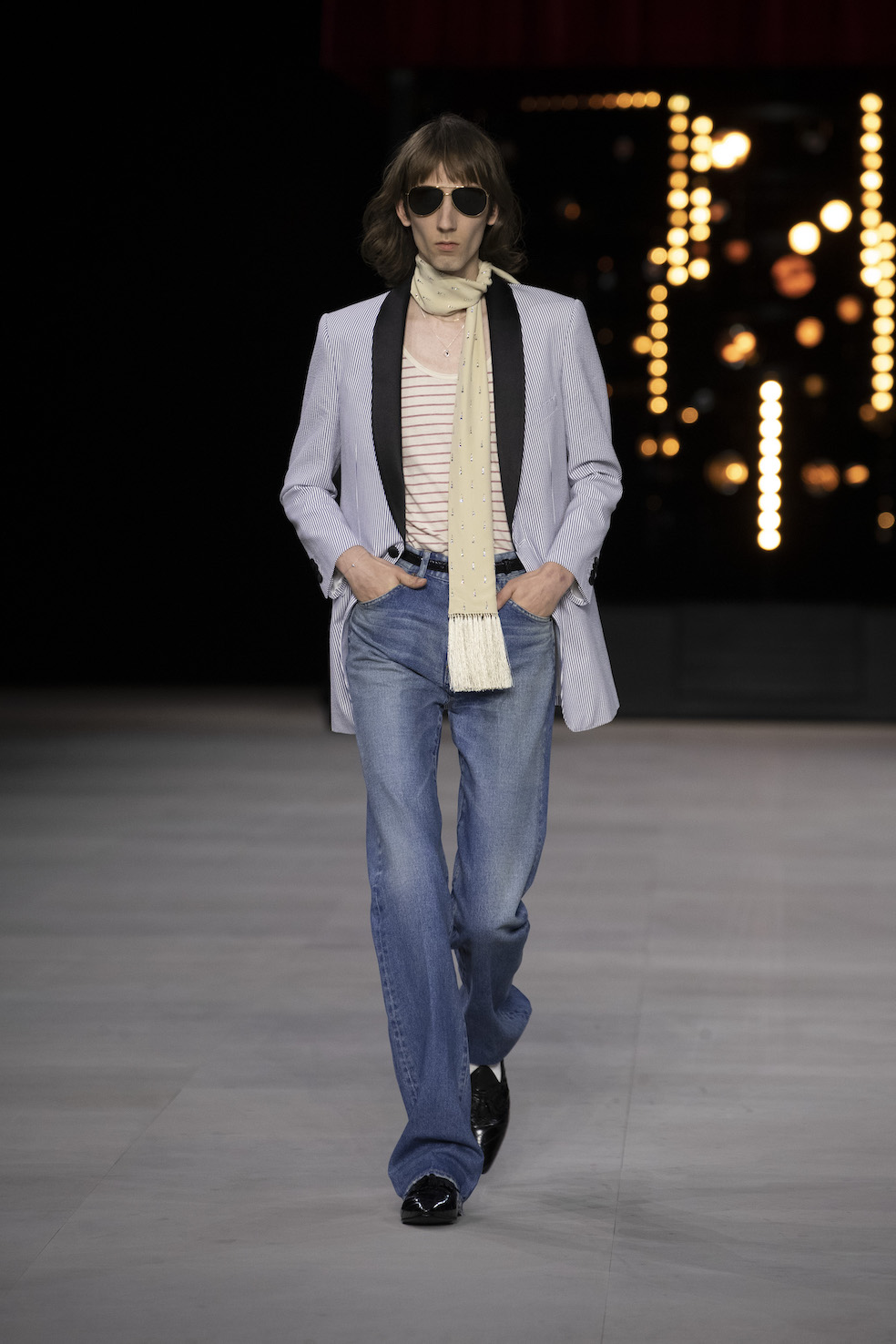
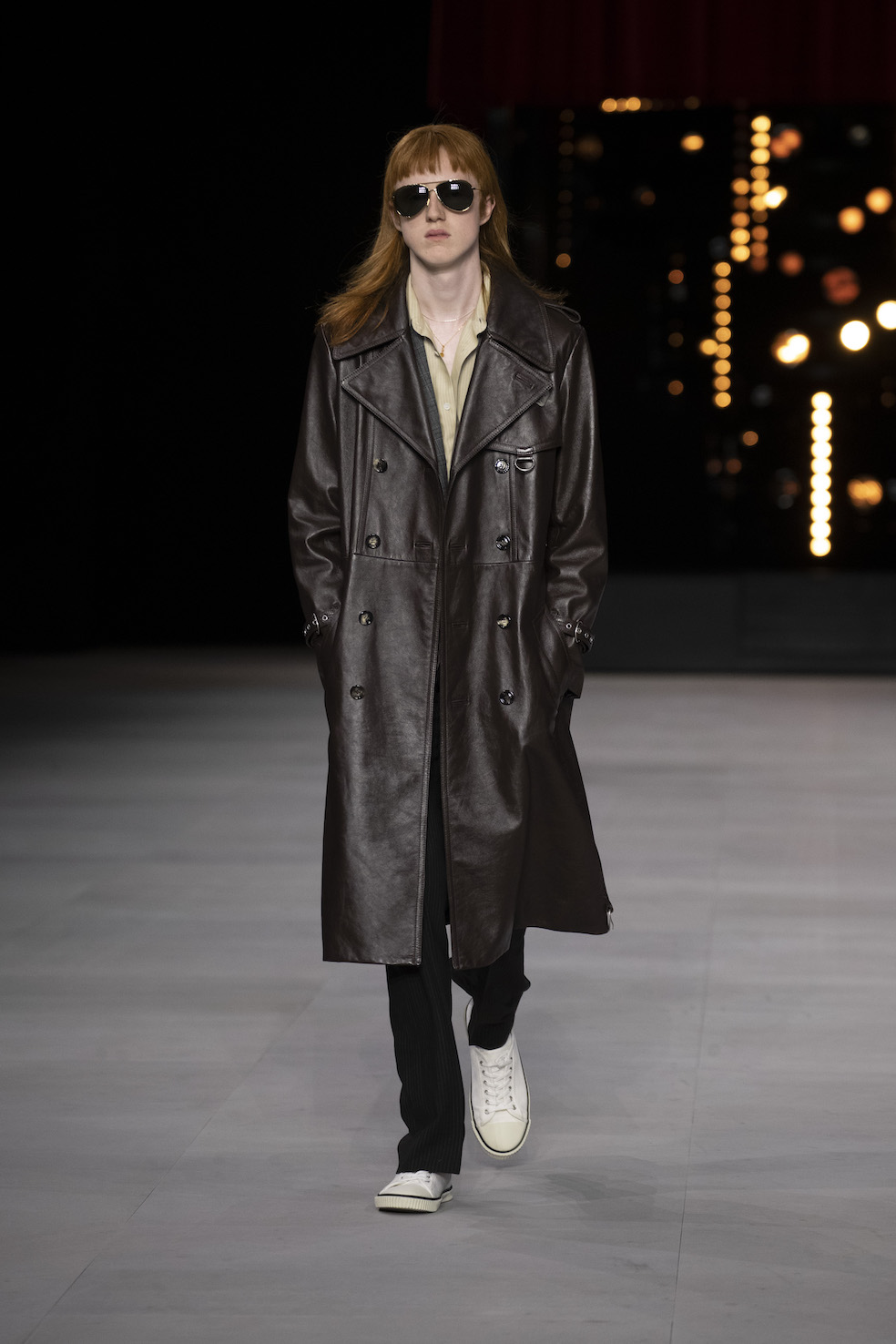
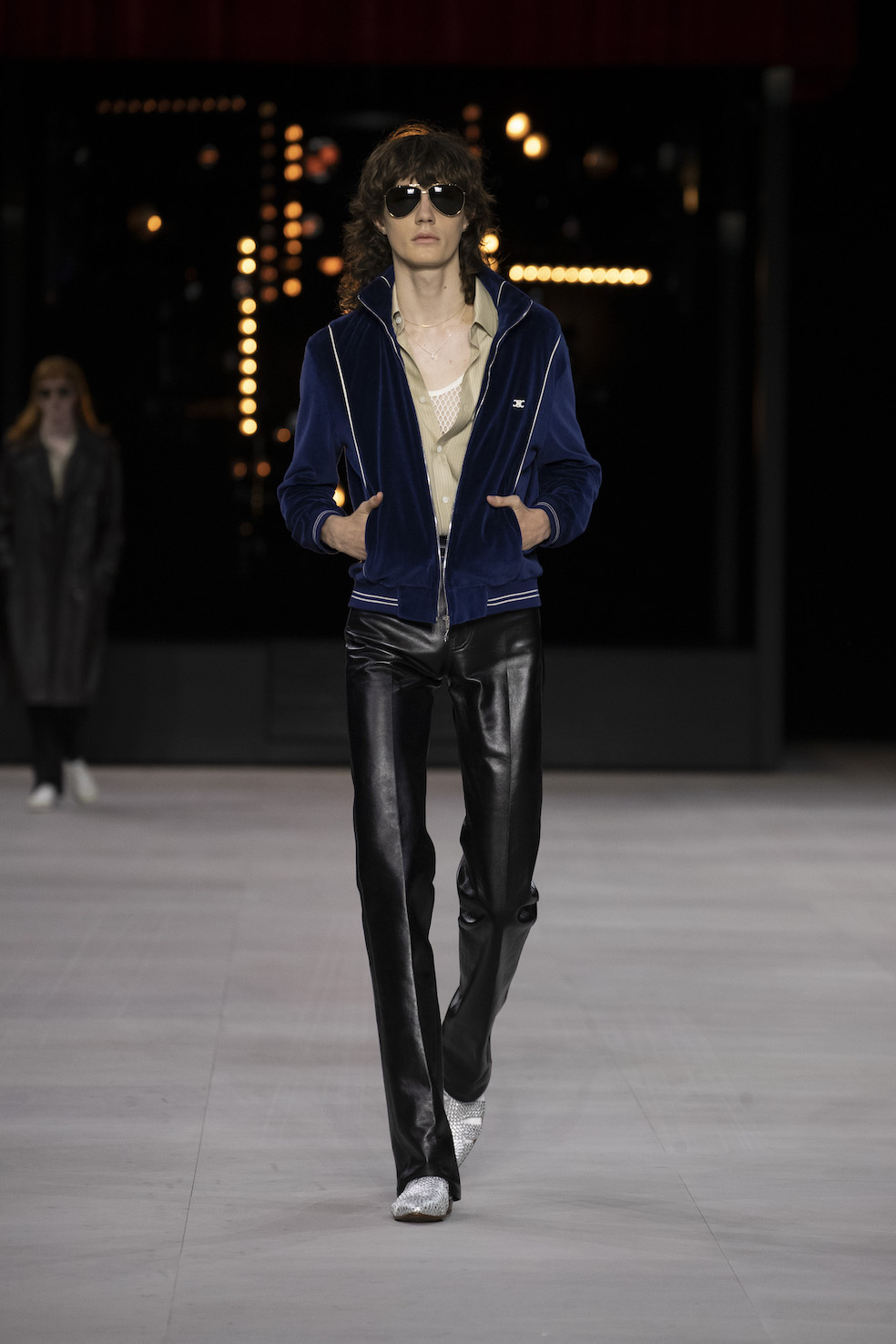
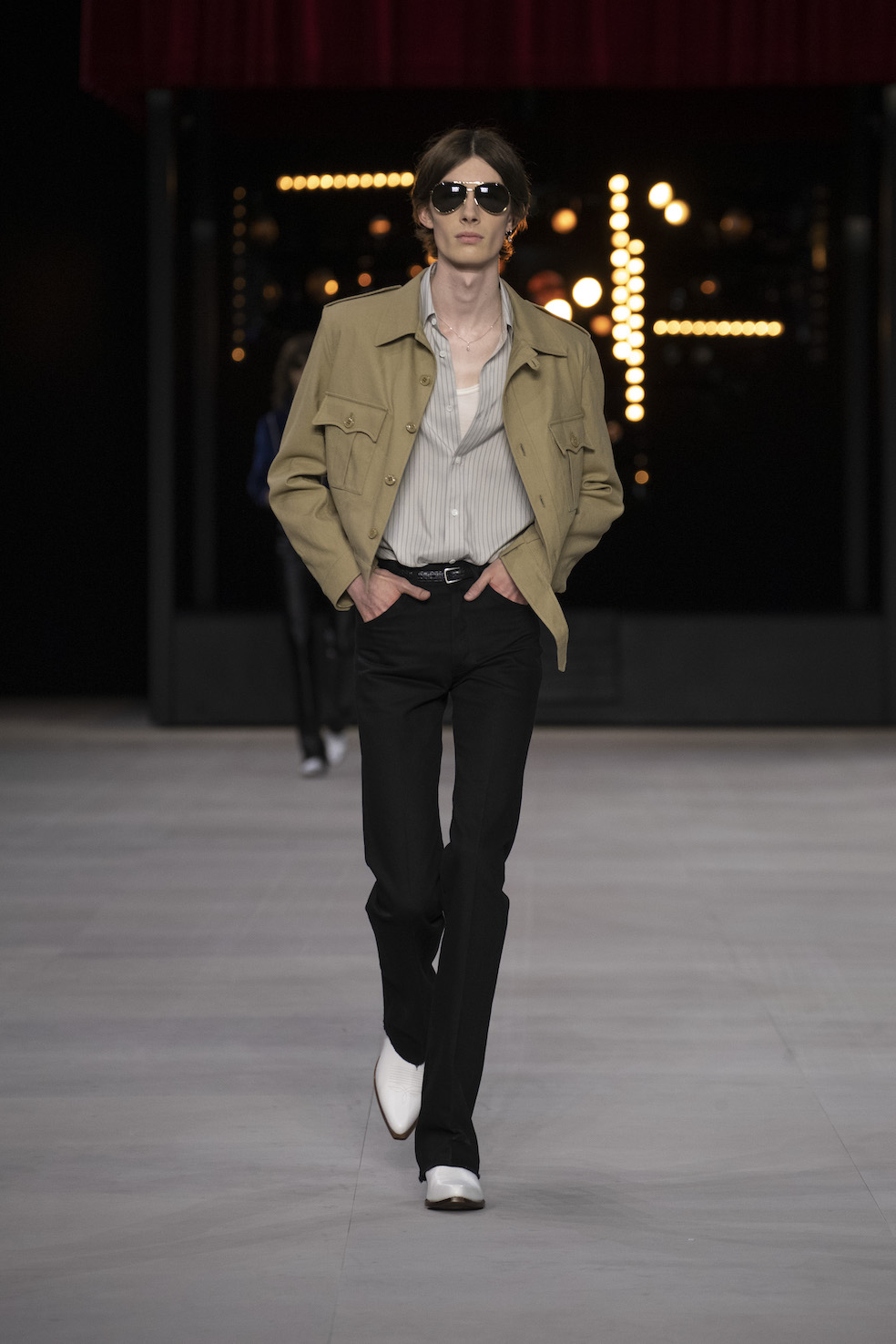
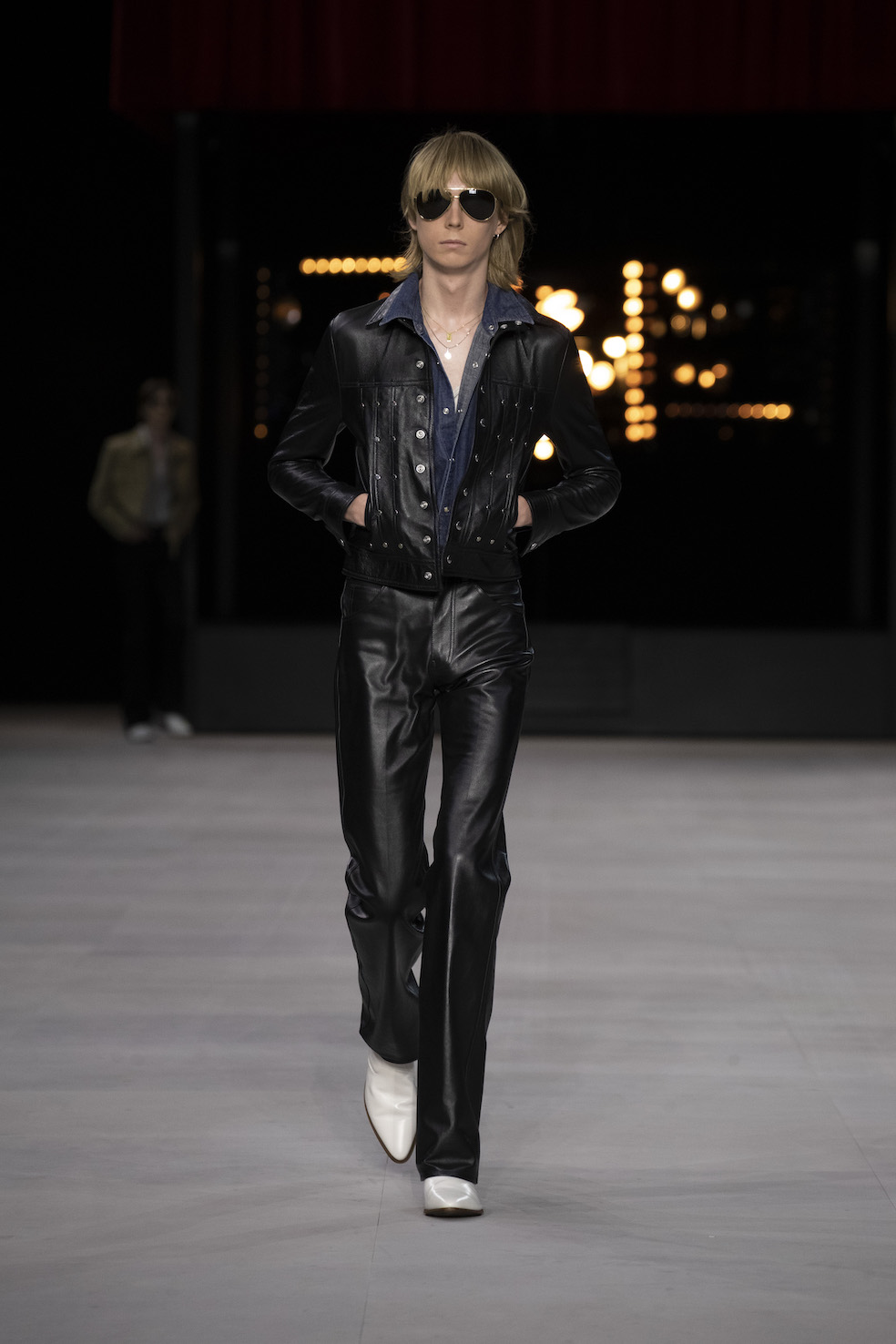
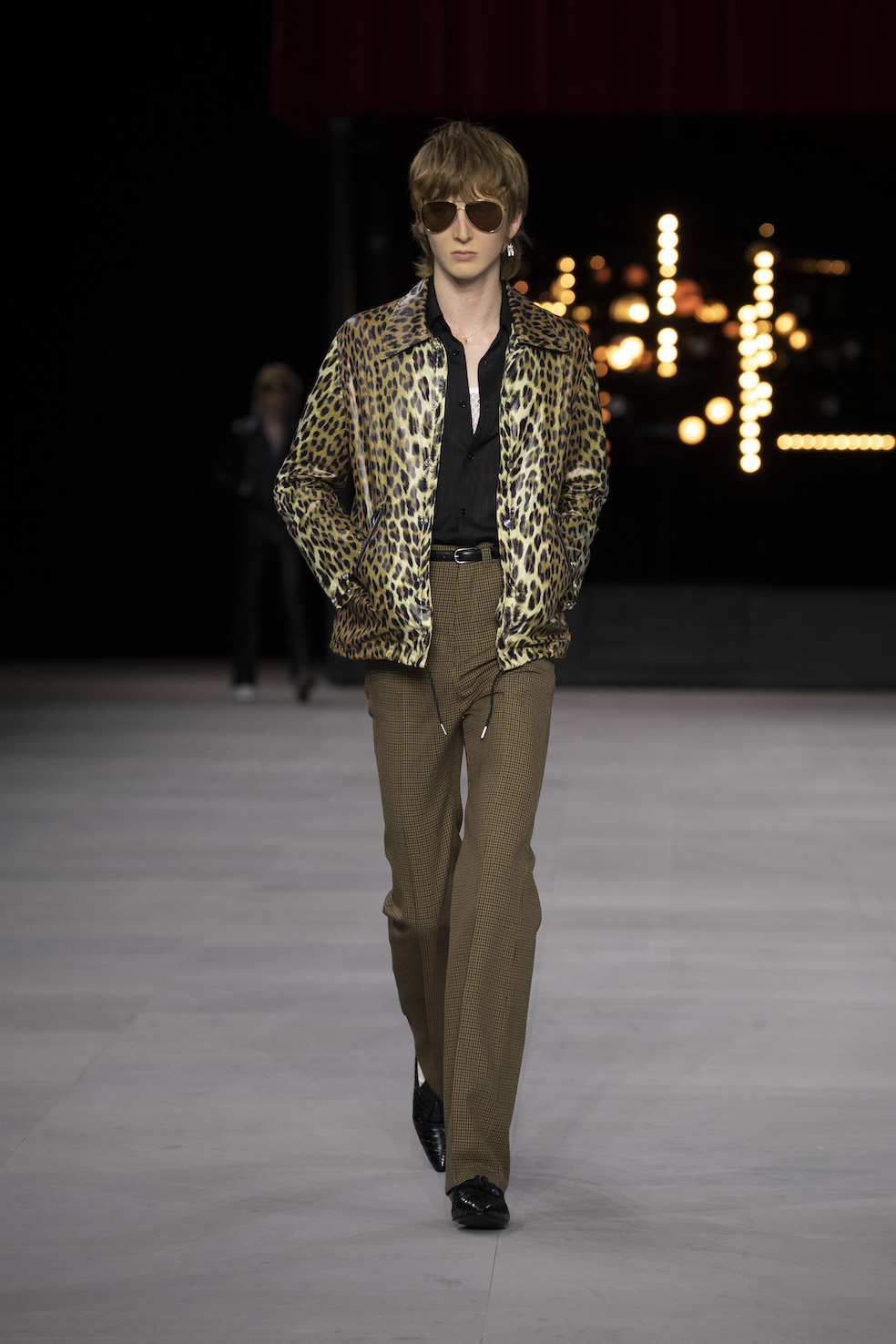
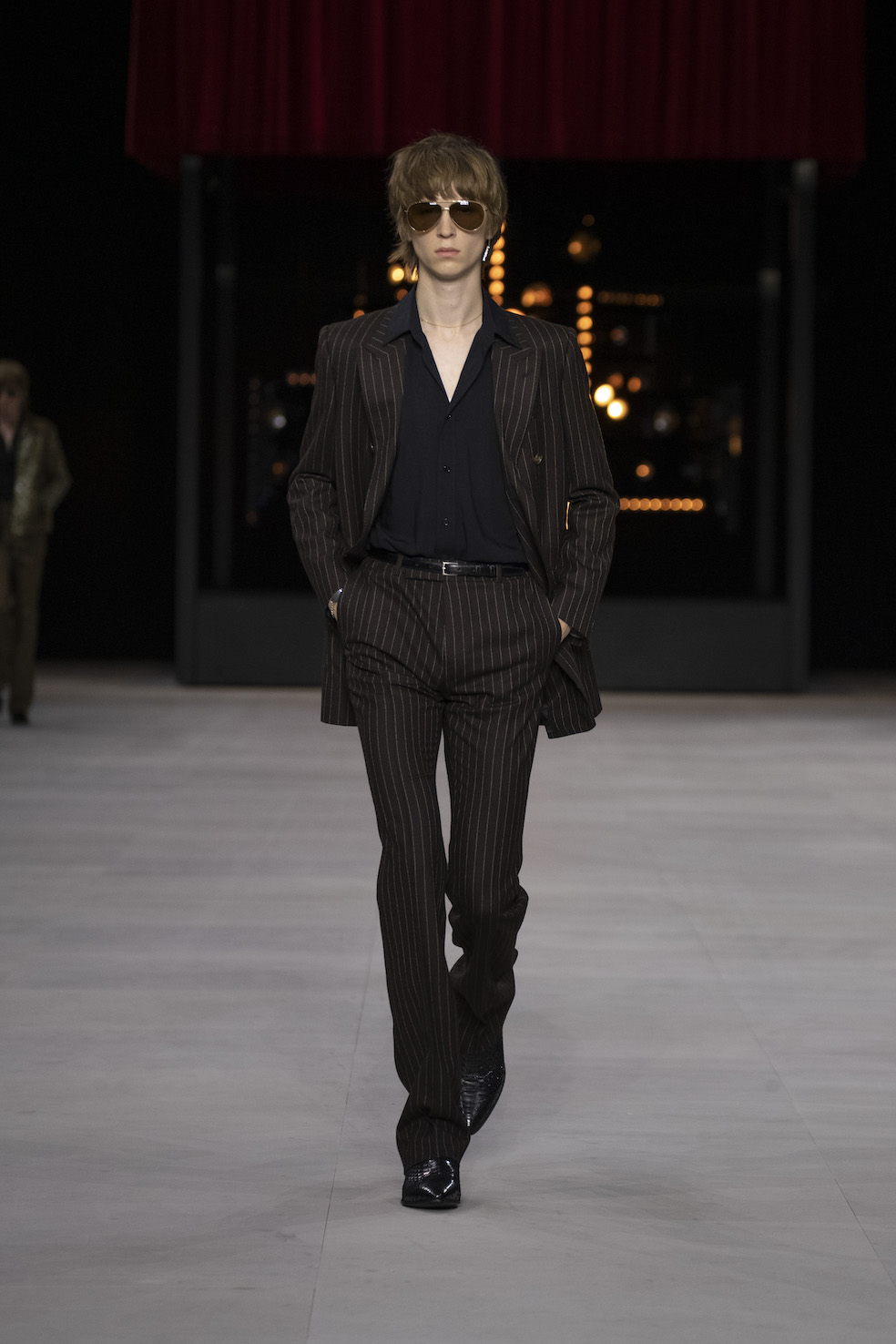
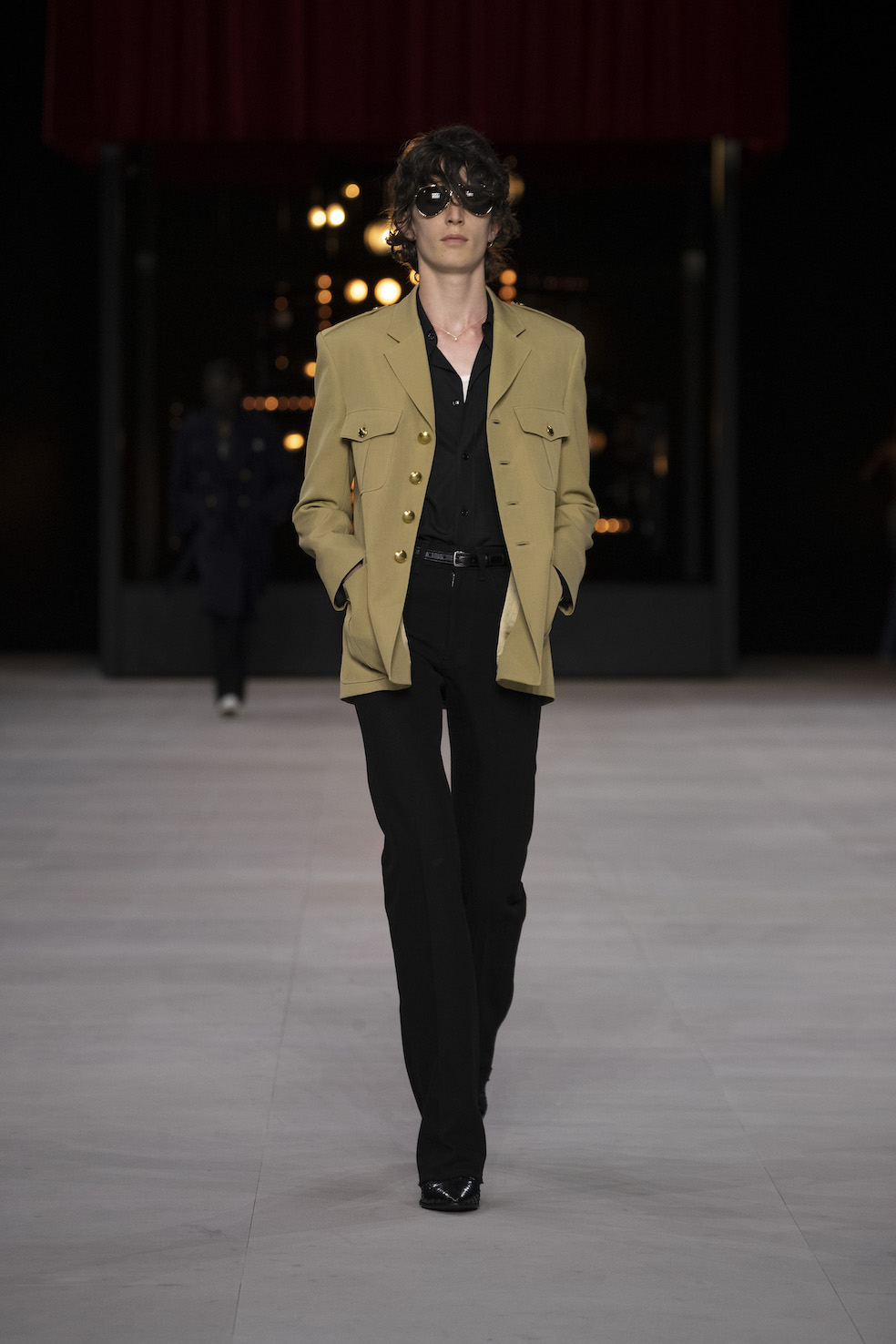
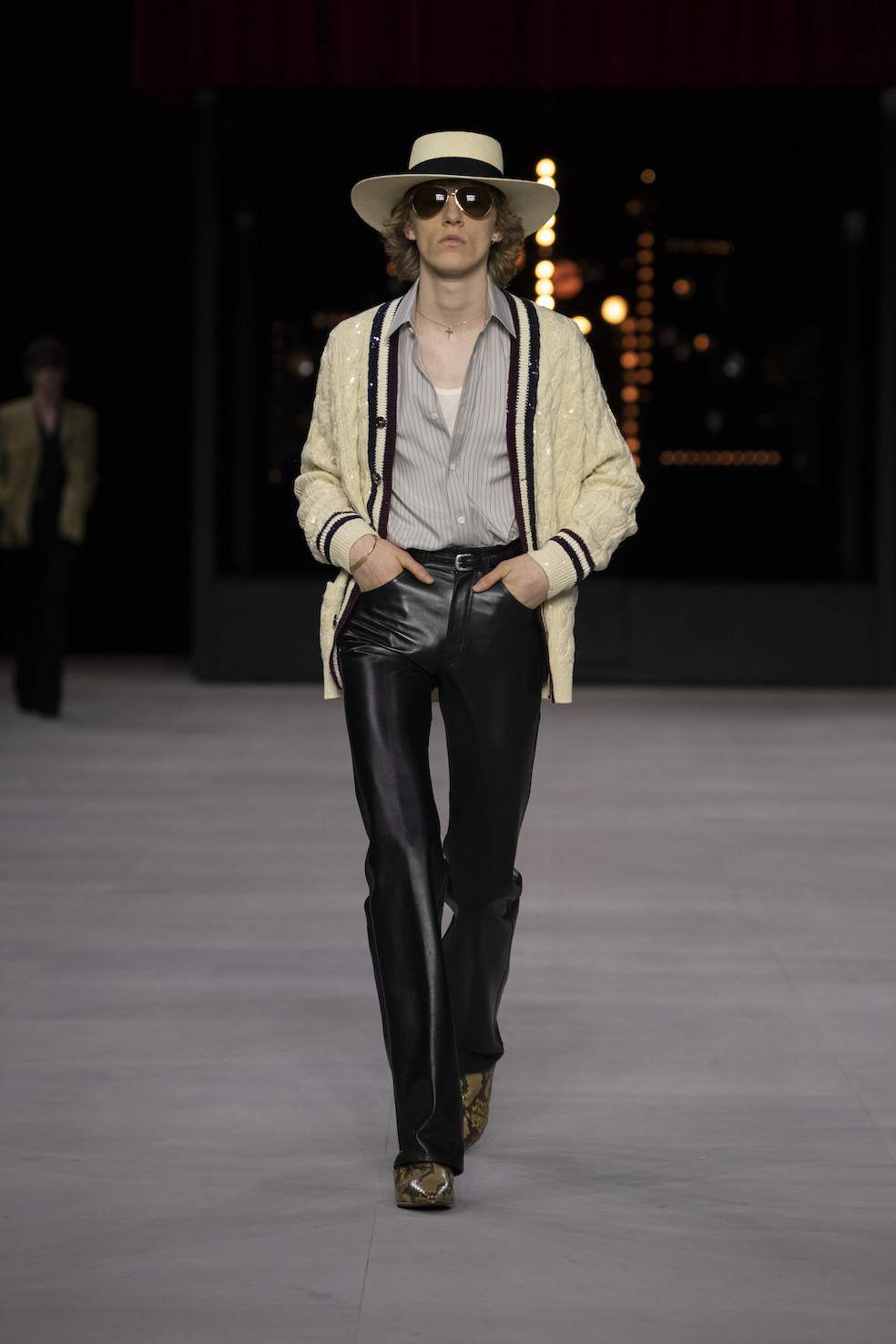
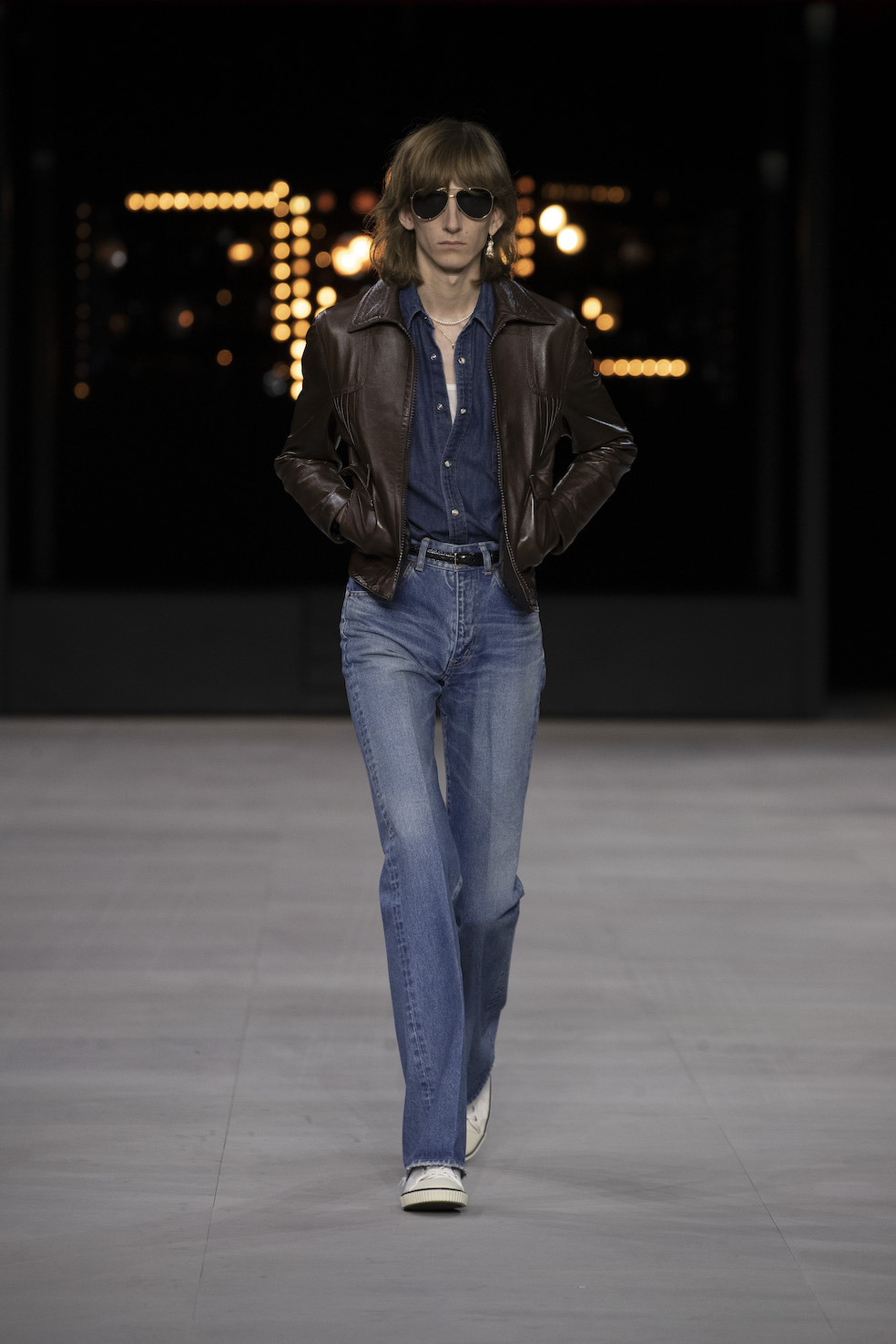
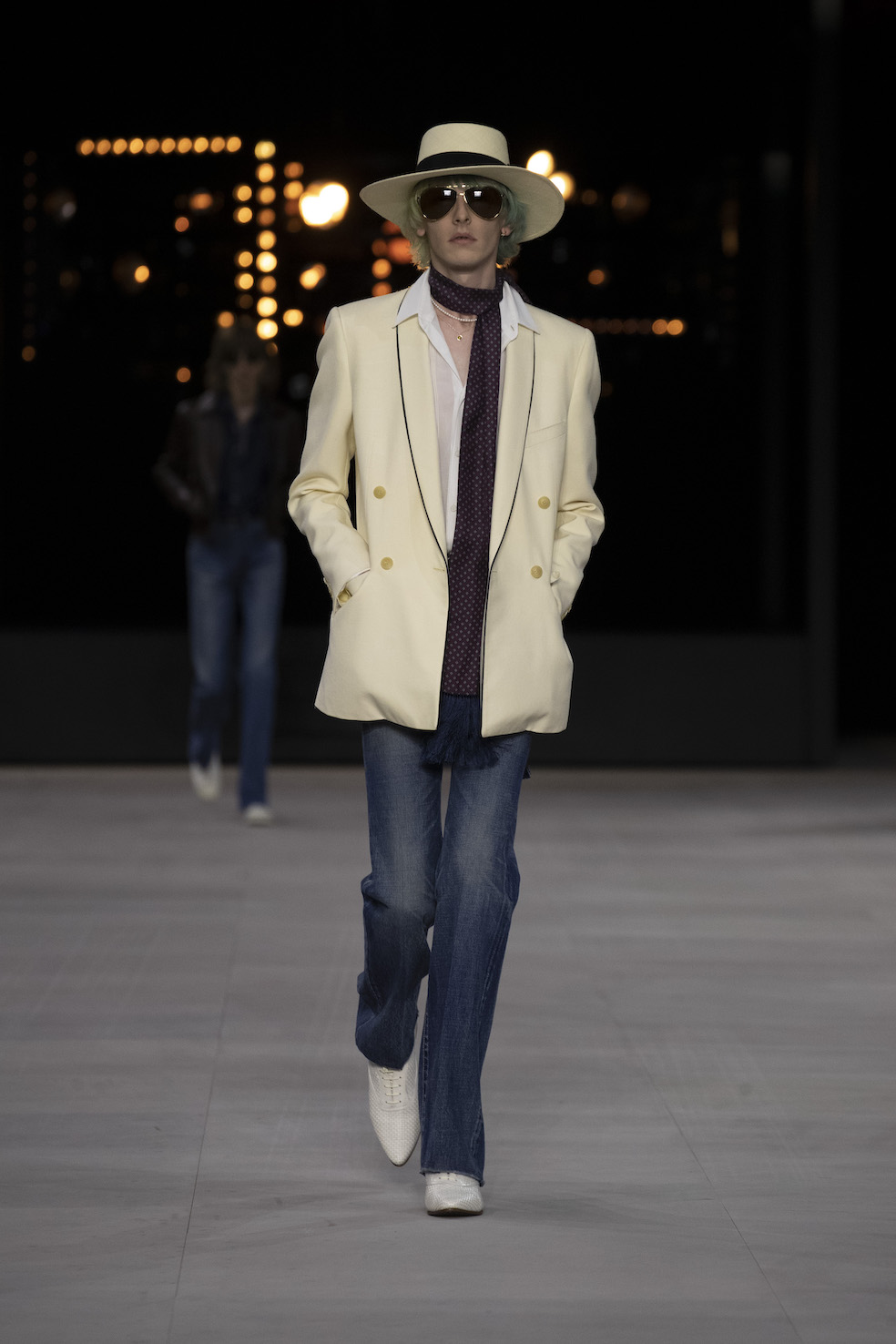
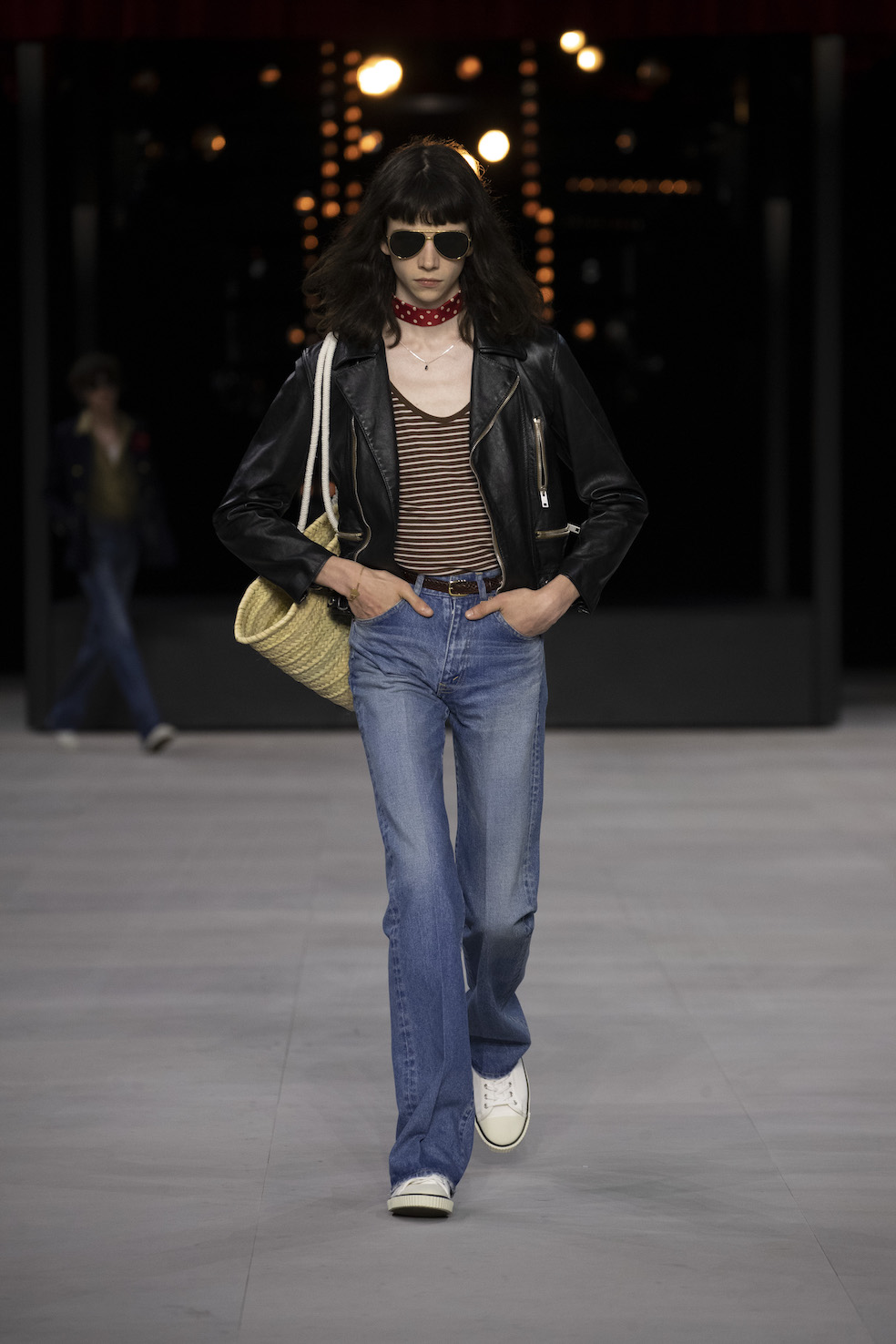
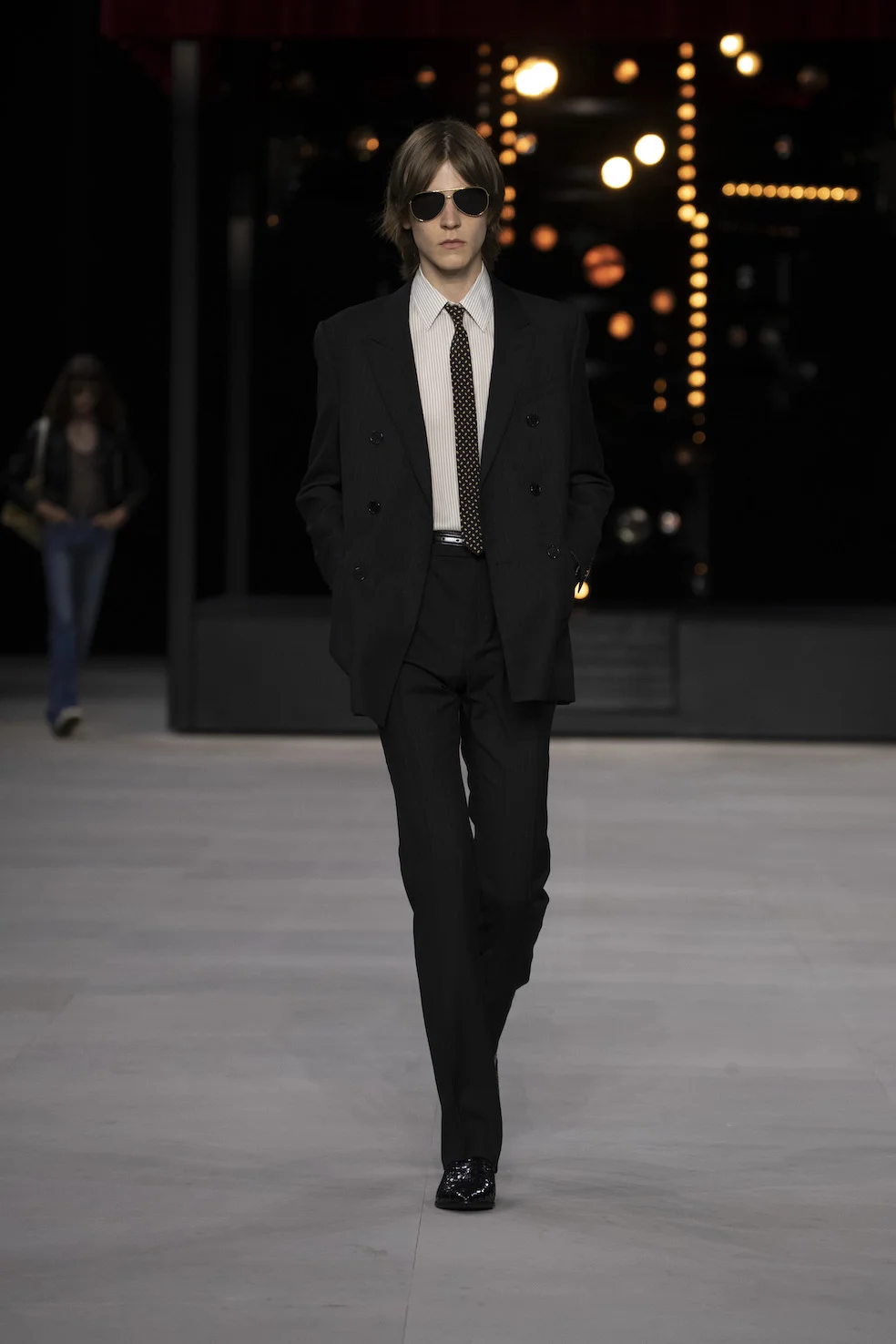
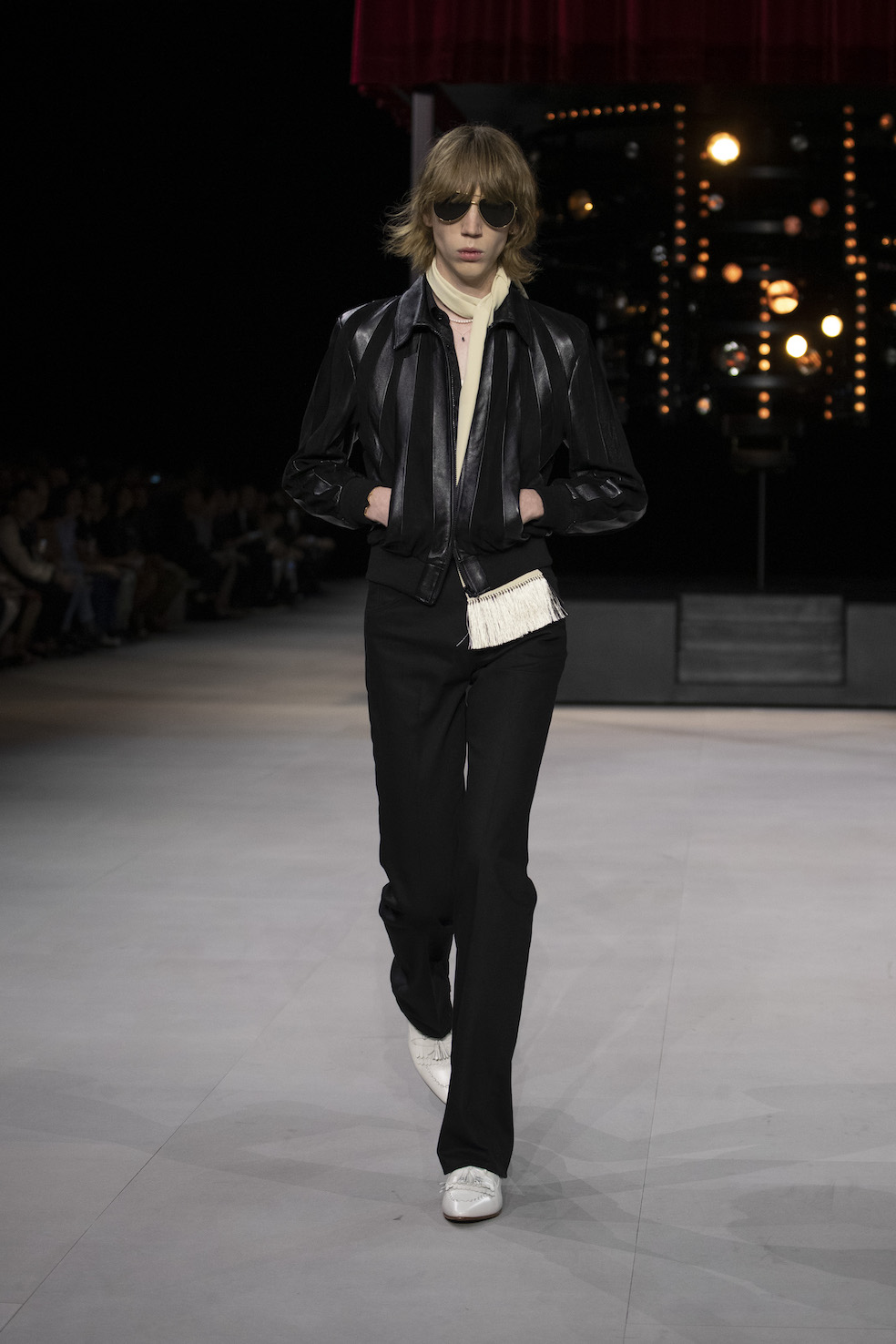
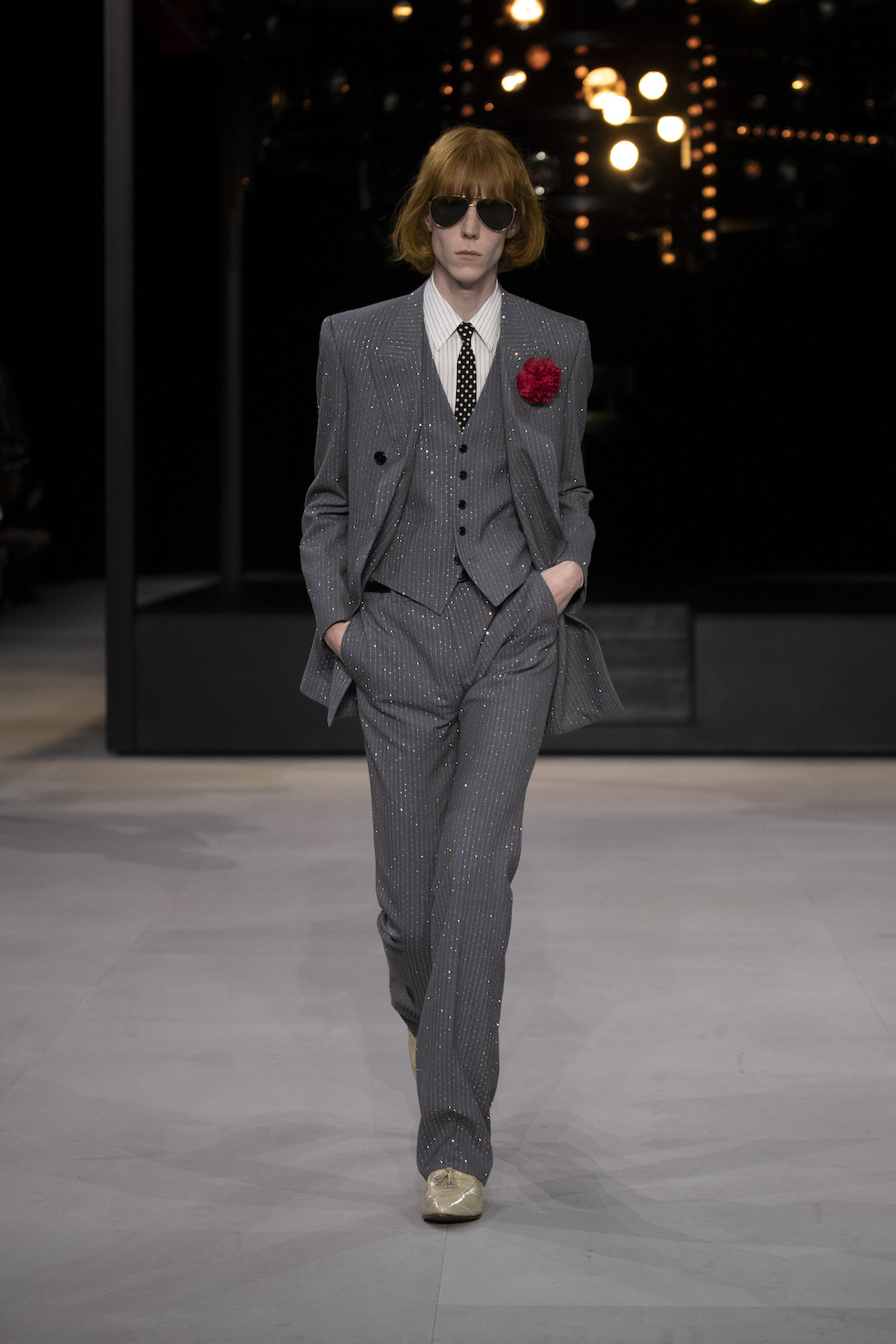
…
/ Words by Philippe Pourhashemi /
A LAIDBACK APPROACH AT HERMÈS
Véronique Nichanian celebrated her first three decades as Hermès' menswear artistic director last year, and she managed to keep her finger on the pulse with this last collection.
Sensing the modern man's current need for ease, relaxed shapes and simplicity, she loosened the silhouette this time and reduced her color palette, too, sticking to neutral tones with occasional dashes of color. The key item within the collection was the pant, and the French designer paid particular attention to volume and proportion. Most styles were long and baggy, with the exception of a few cropped numbers that looked perfectly appropriate with the brand's new leather sandals.
Nichanian also used prim checks and pajama style stripes -mainly for coats and shirting- to evoke an informal feeling, which gave the collection a holiday vibe. Of course, the French House is all about intricate luxury, and buttersoft leather pants looked as cozy as an old pair of jeans. For the show finale, Nichanian crafted exquisite printed pieces, which looked refined and nonchalant at once. Loose shirts were styled with cropped stripy pants and foulard printed jackets looked slim and elegant. It was smart from Nichanian to refer to the House's unique heritage while keeping the silhouette cool and minimal. The beauty and precision of those prints were enough to win you over.
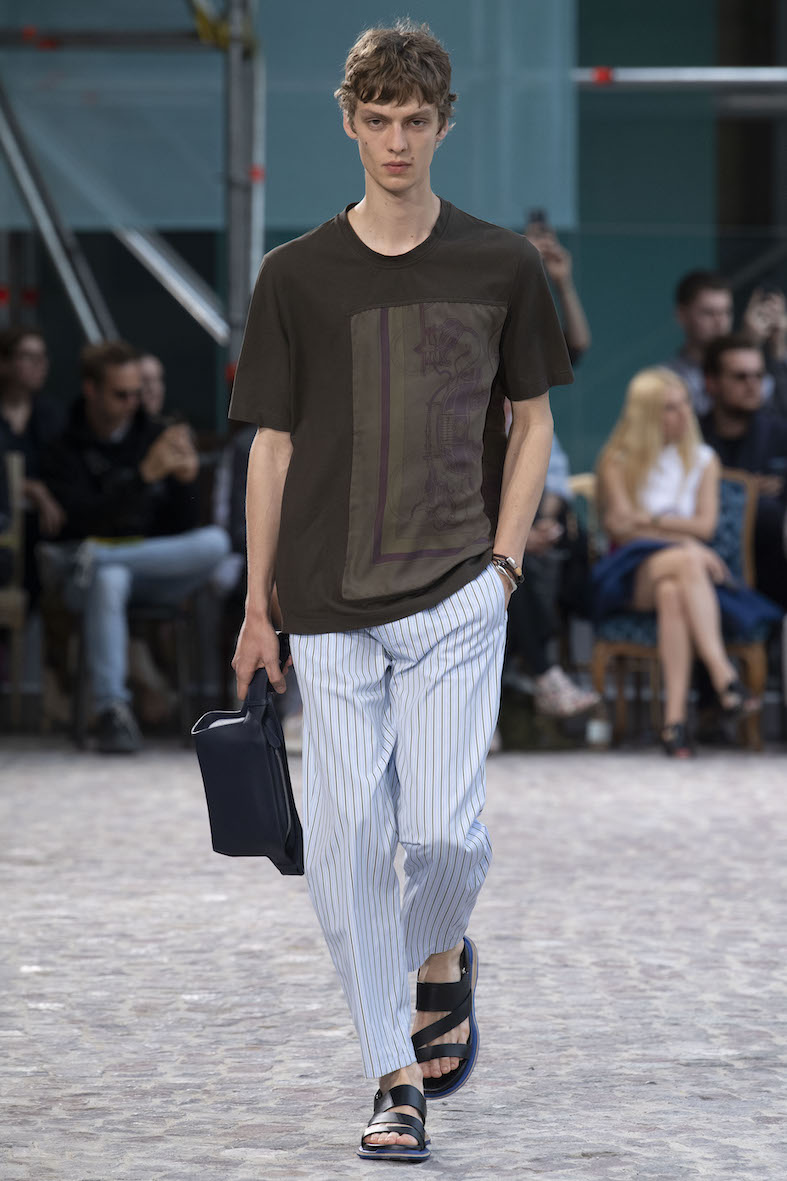
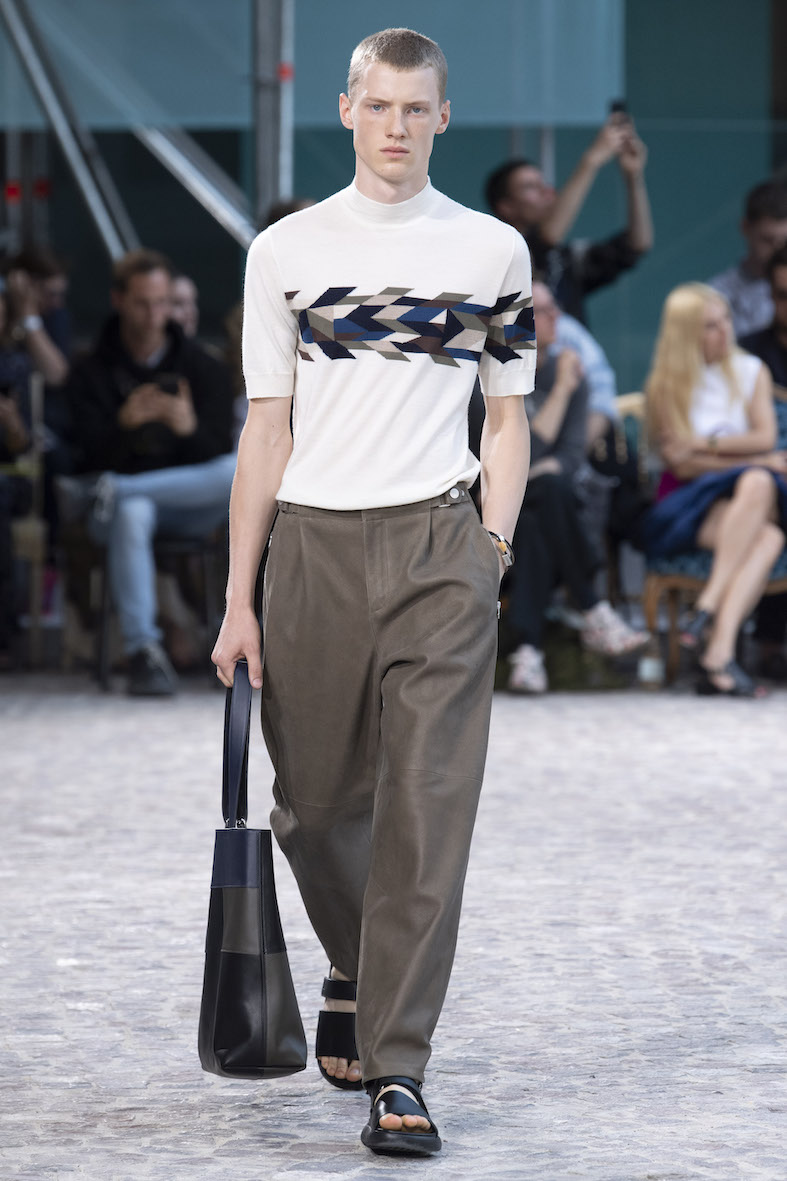
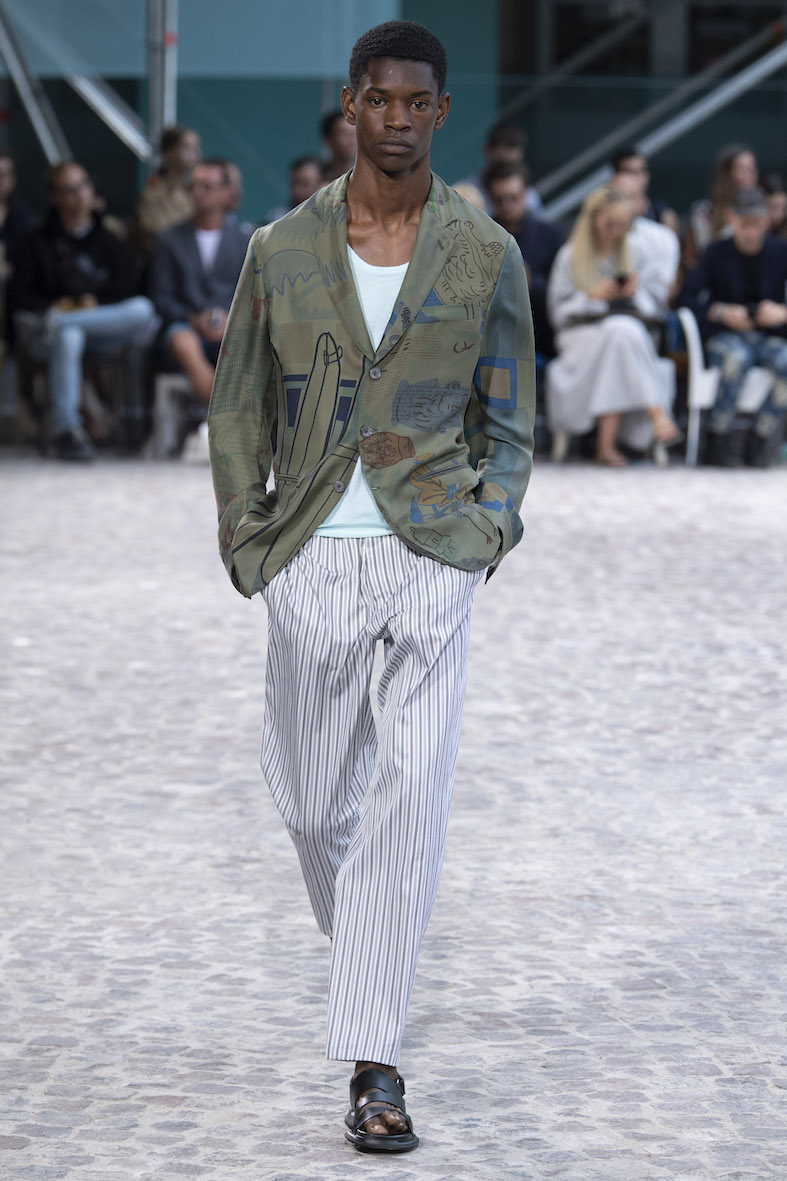
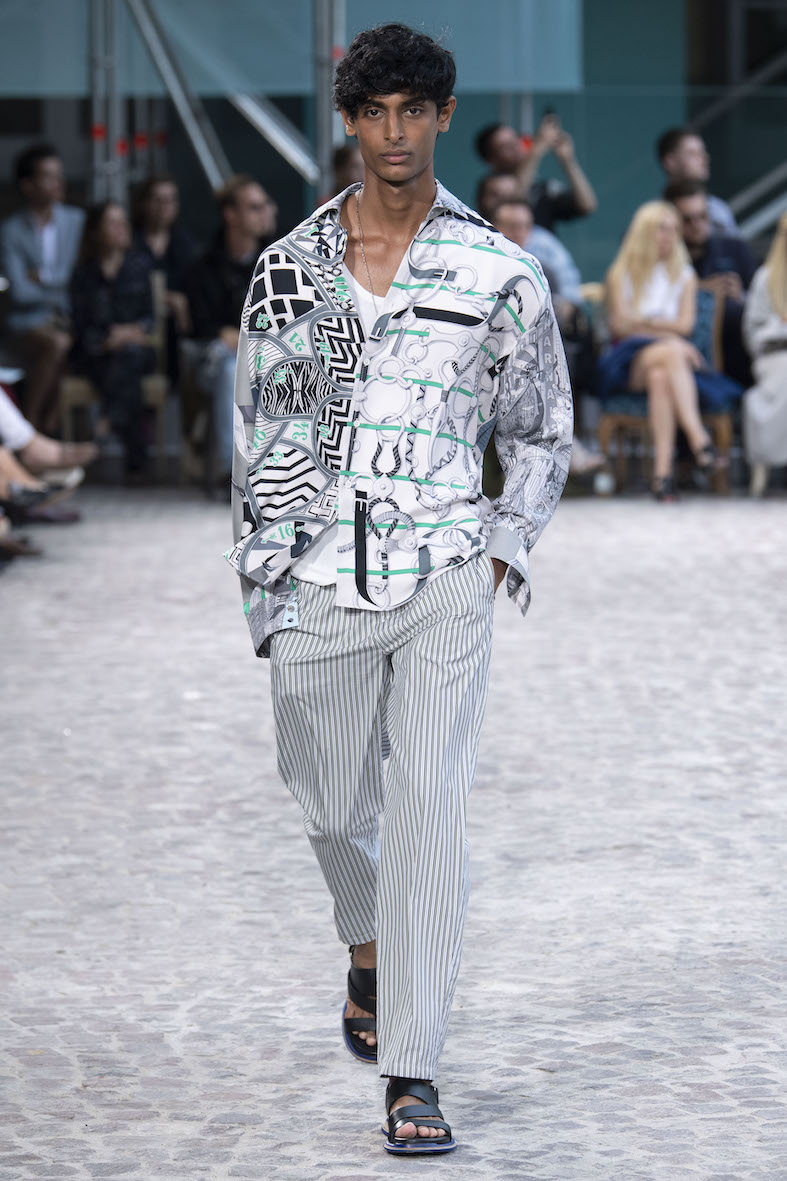
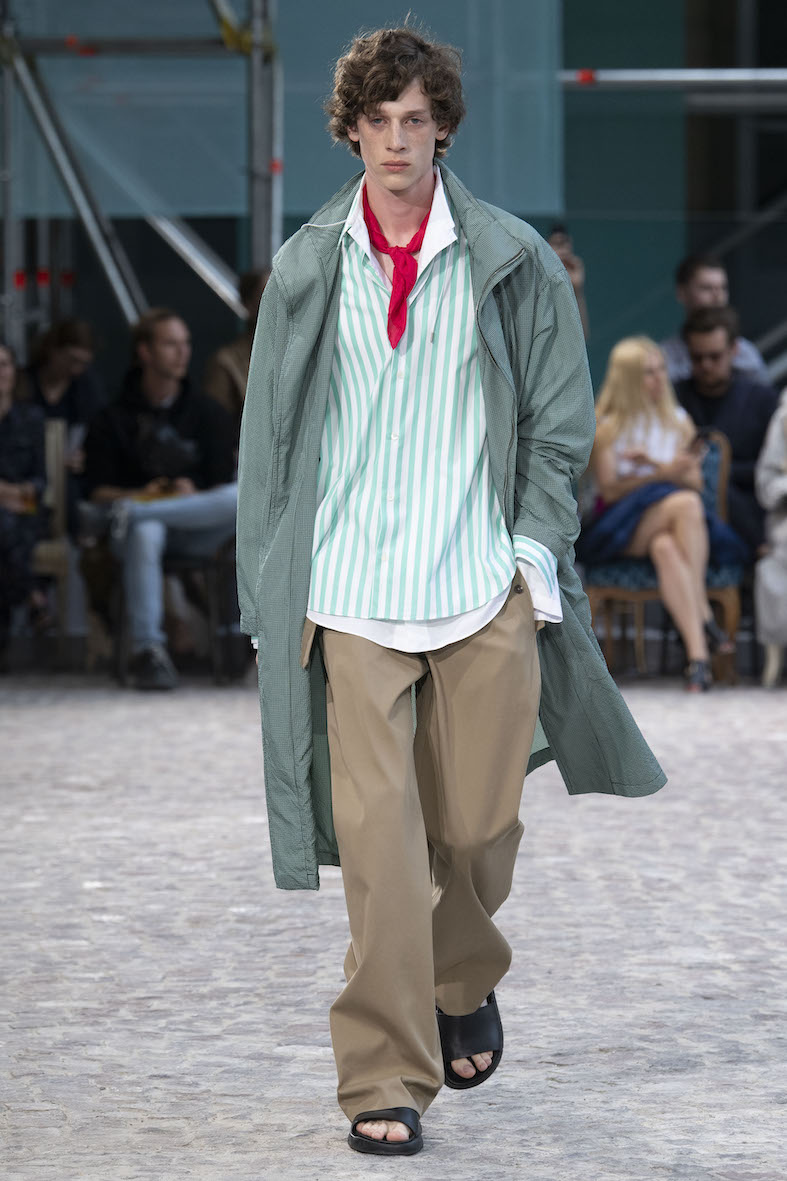
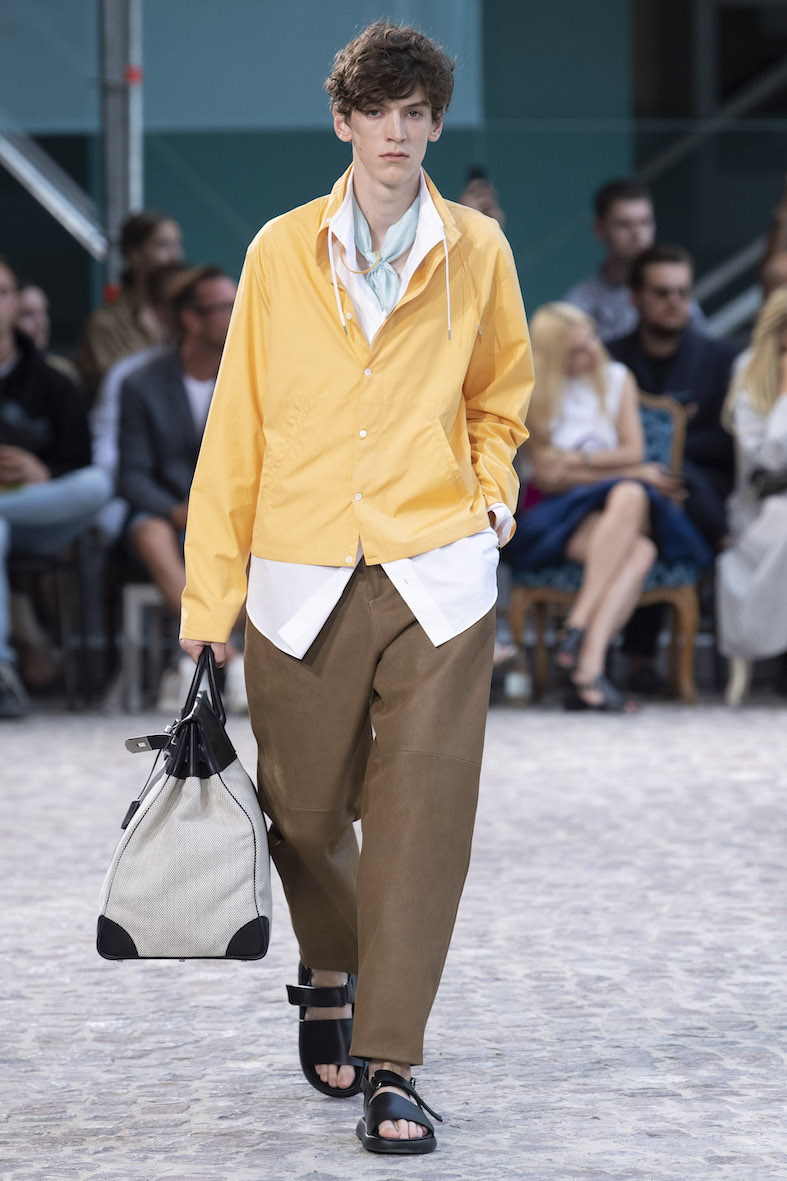

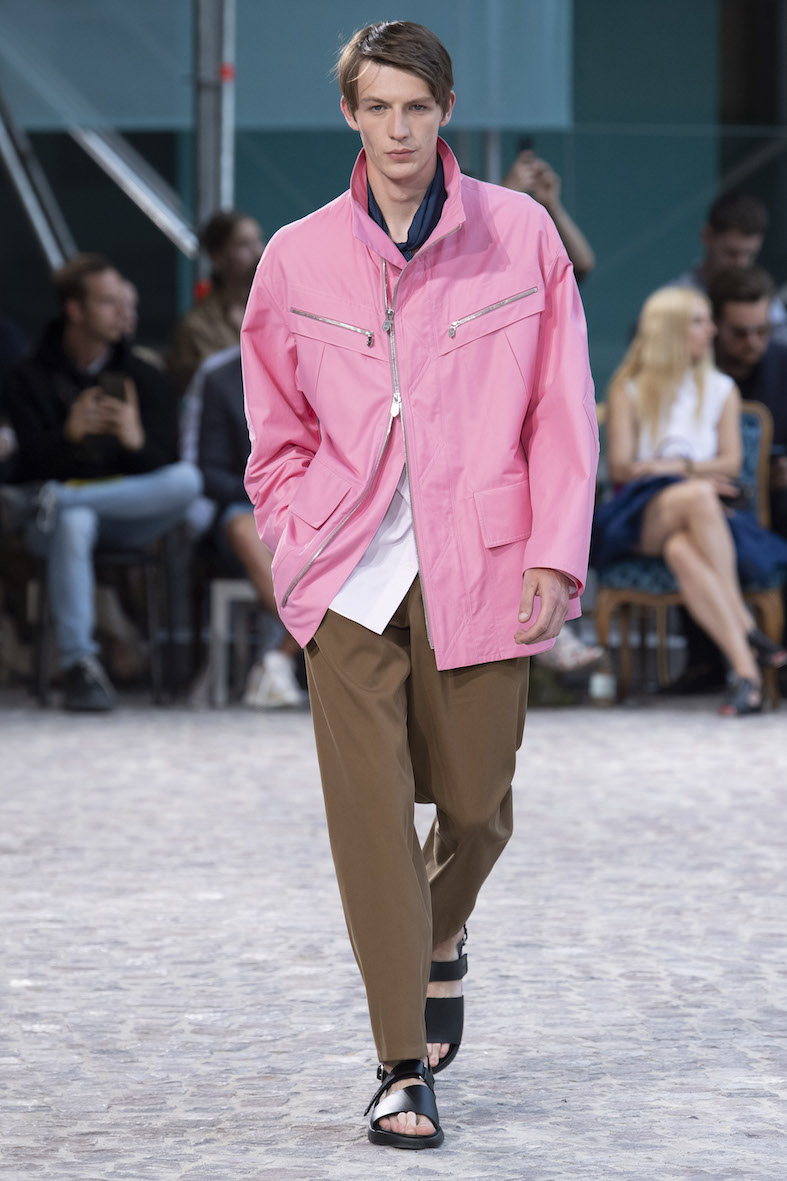
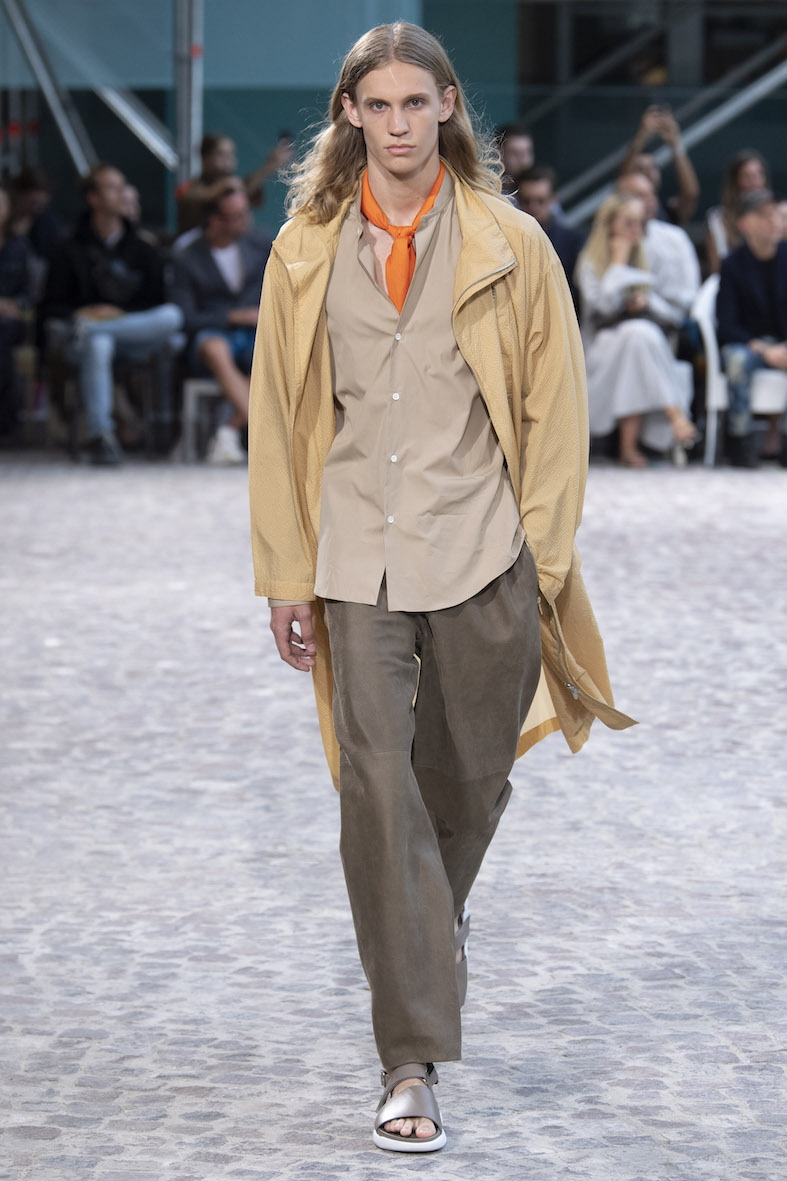
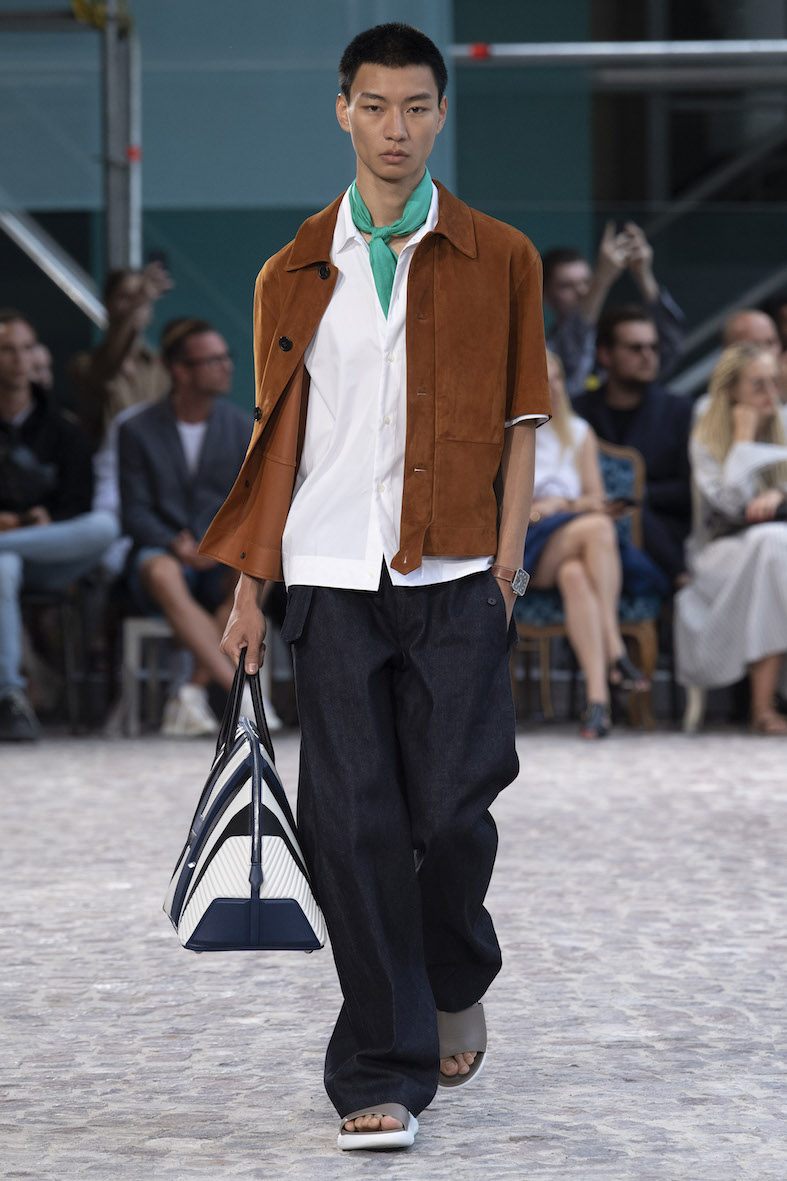
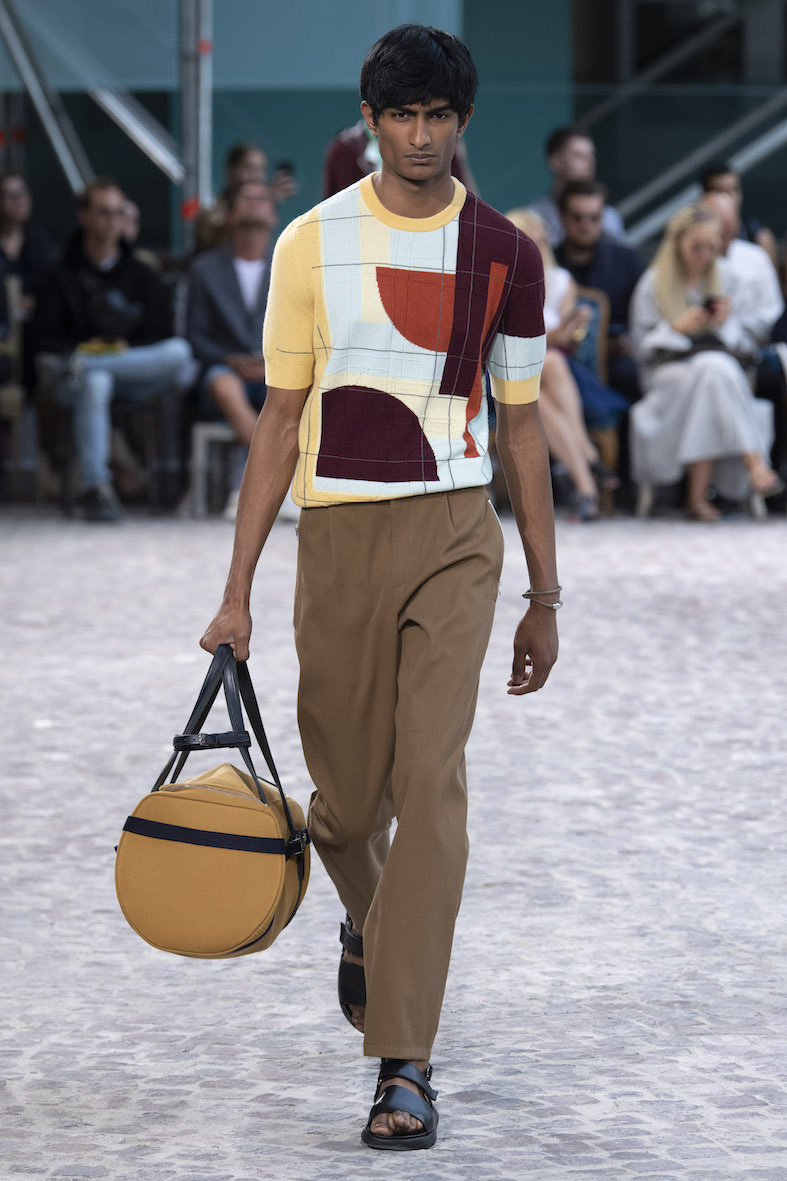
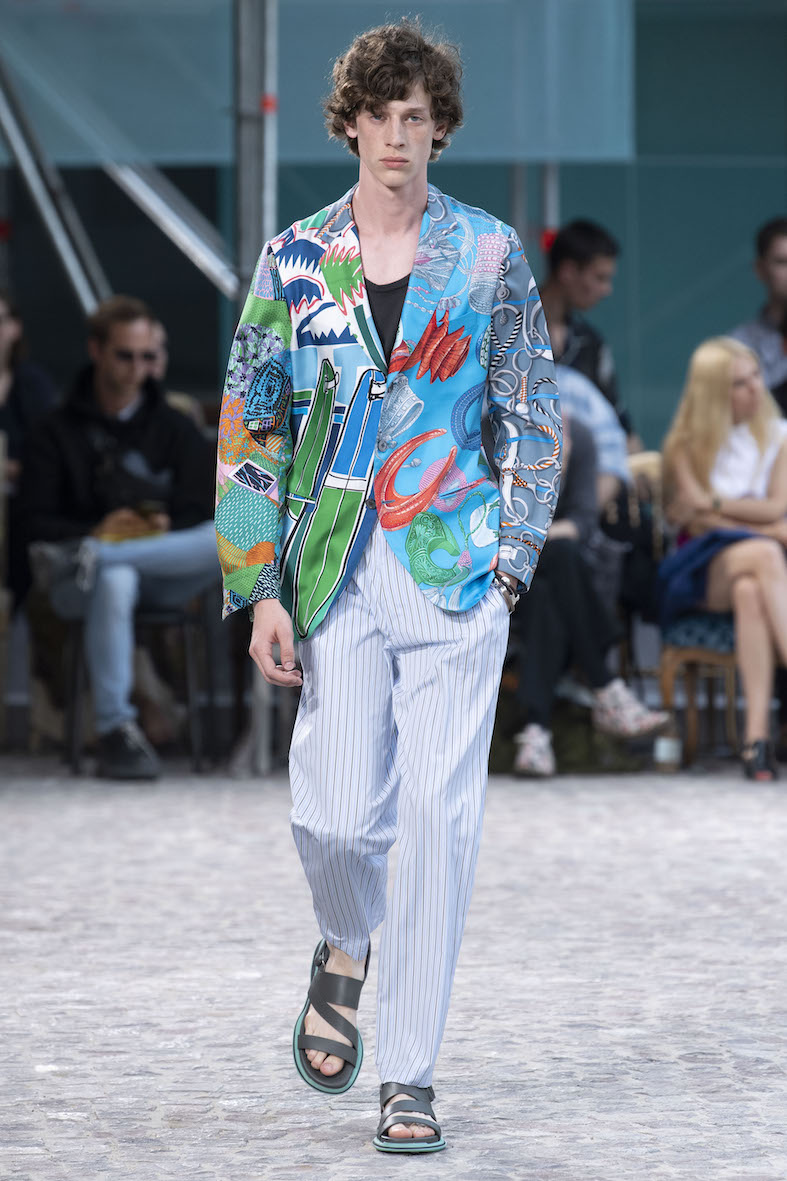
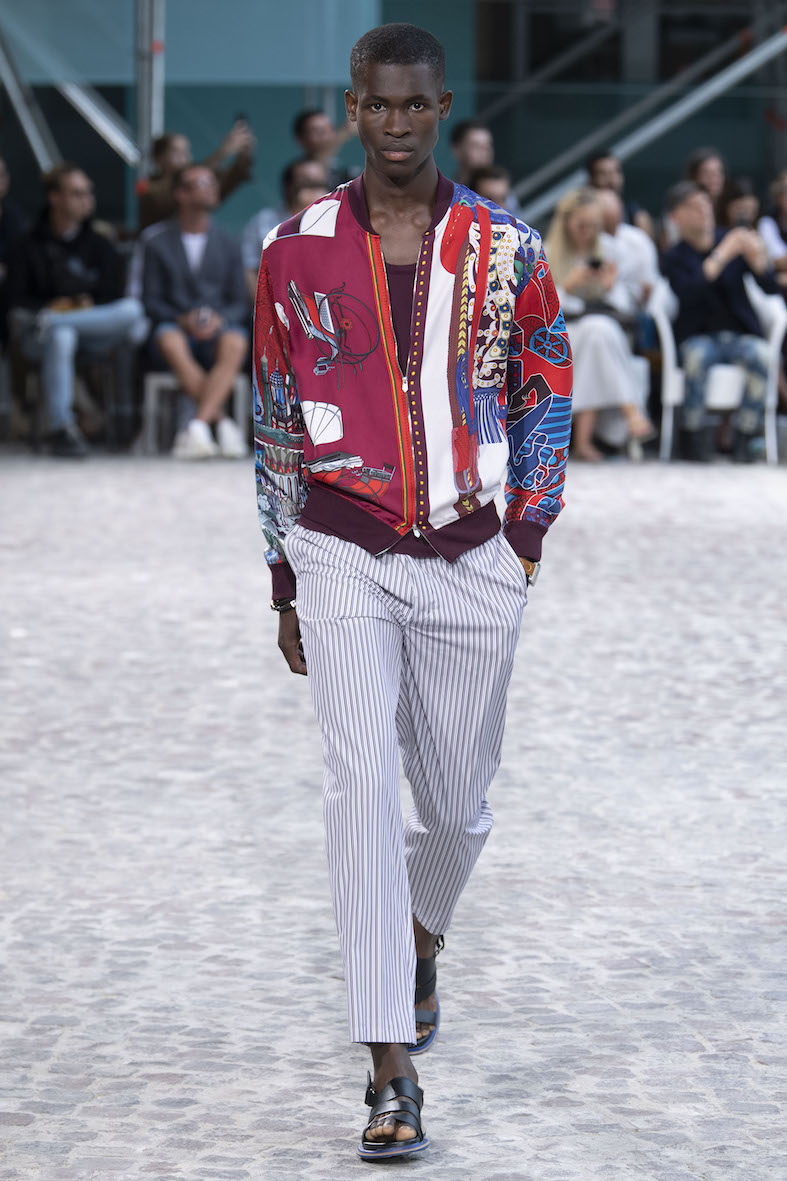
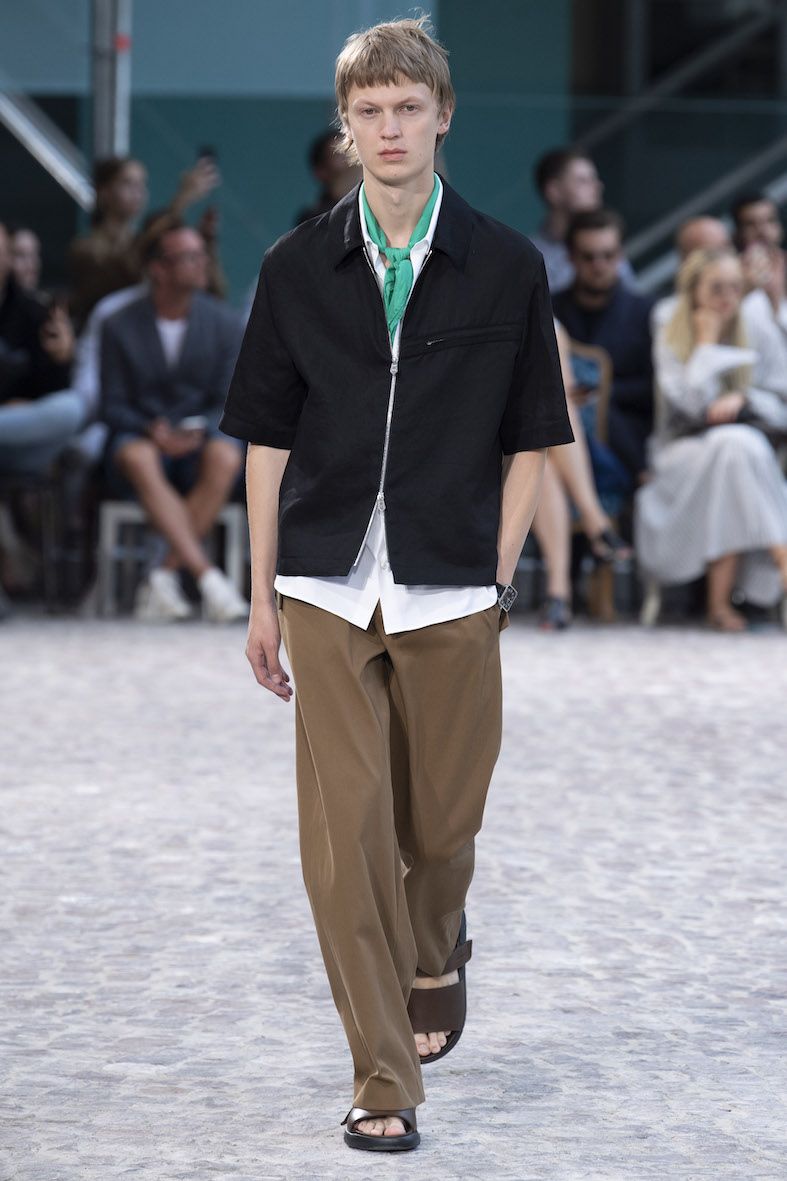
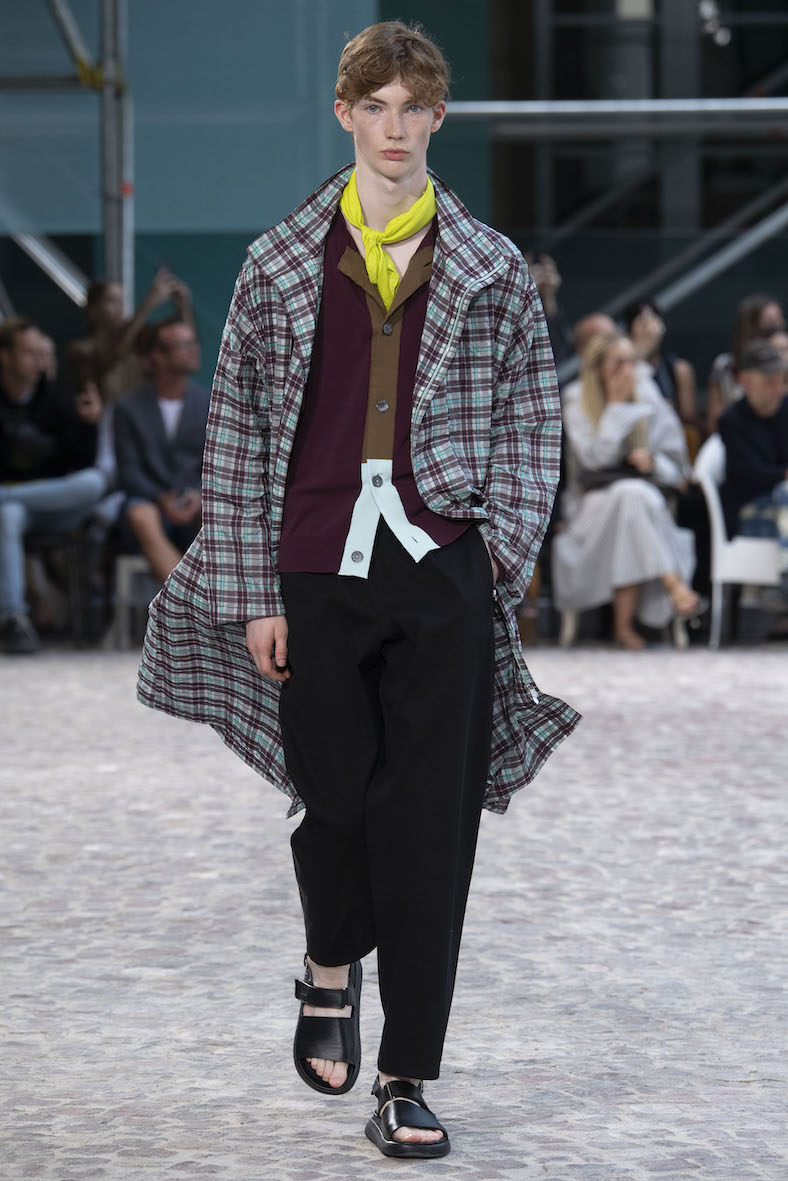
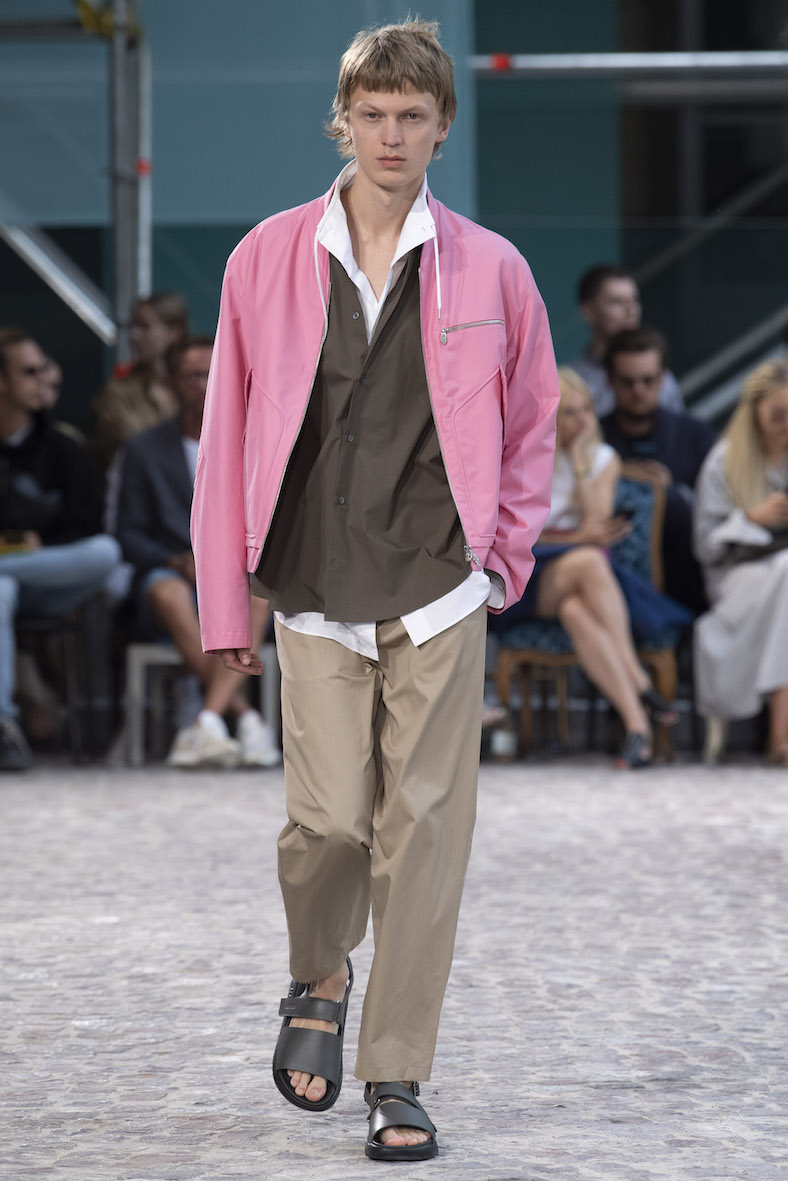
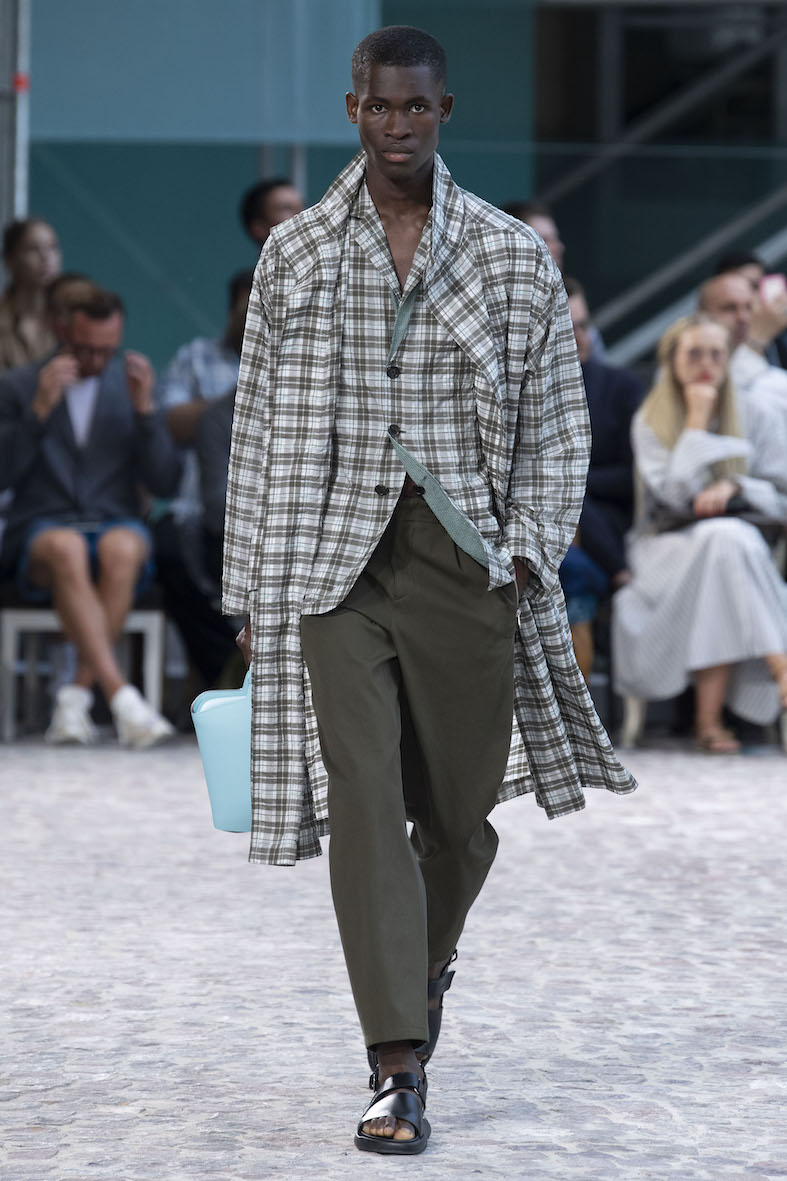
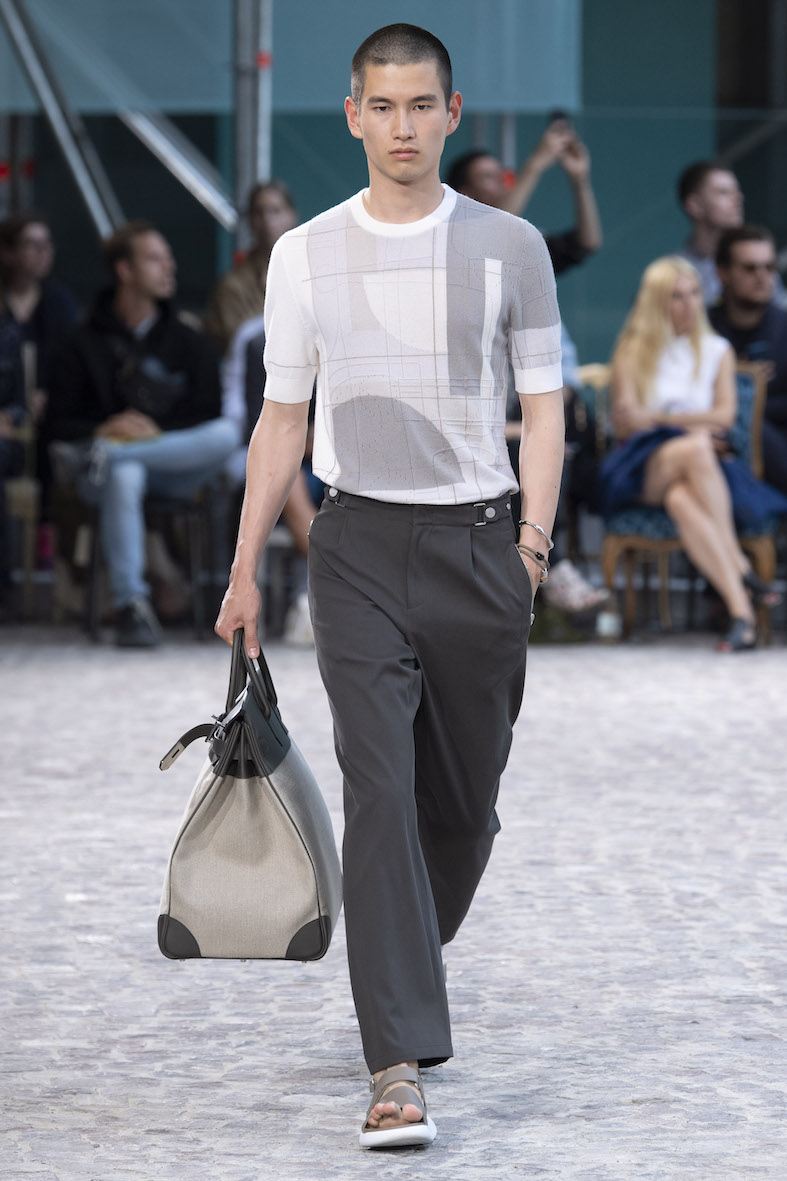
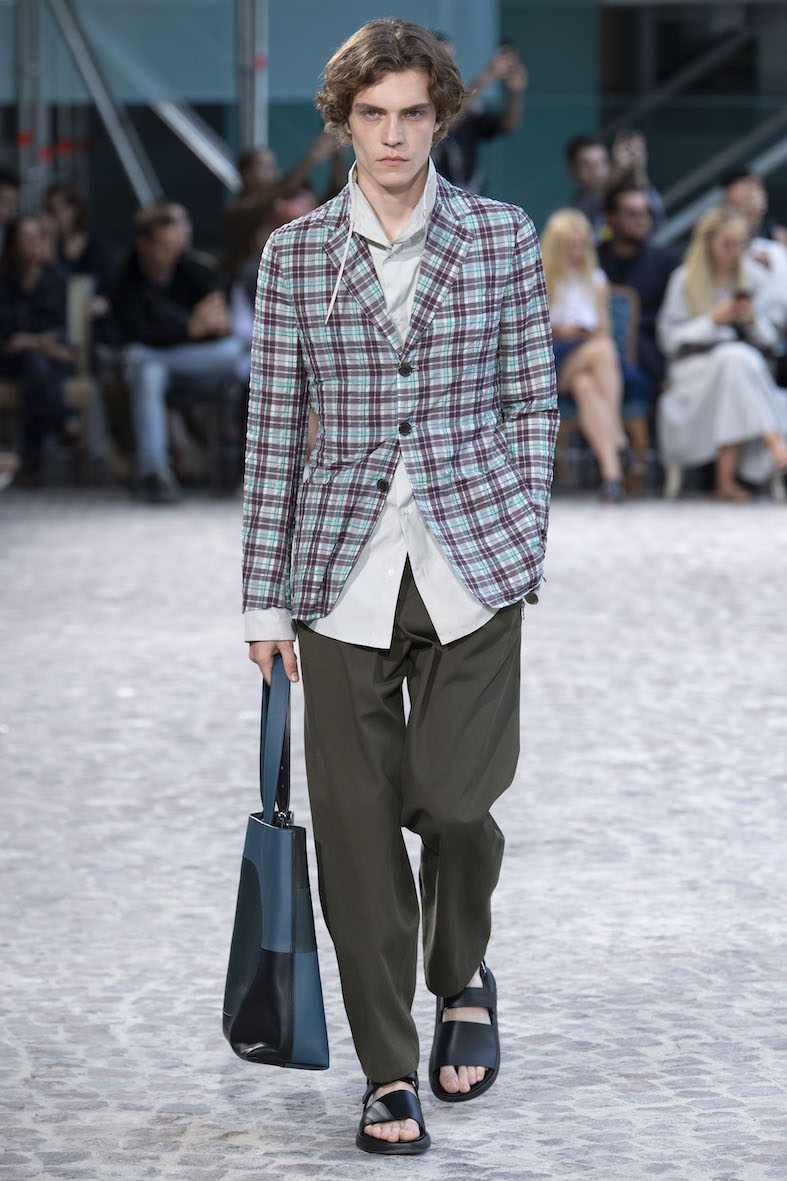
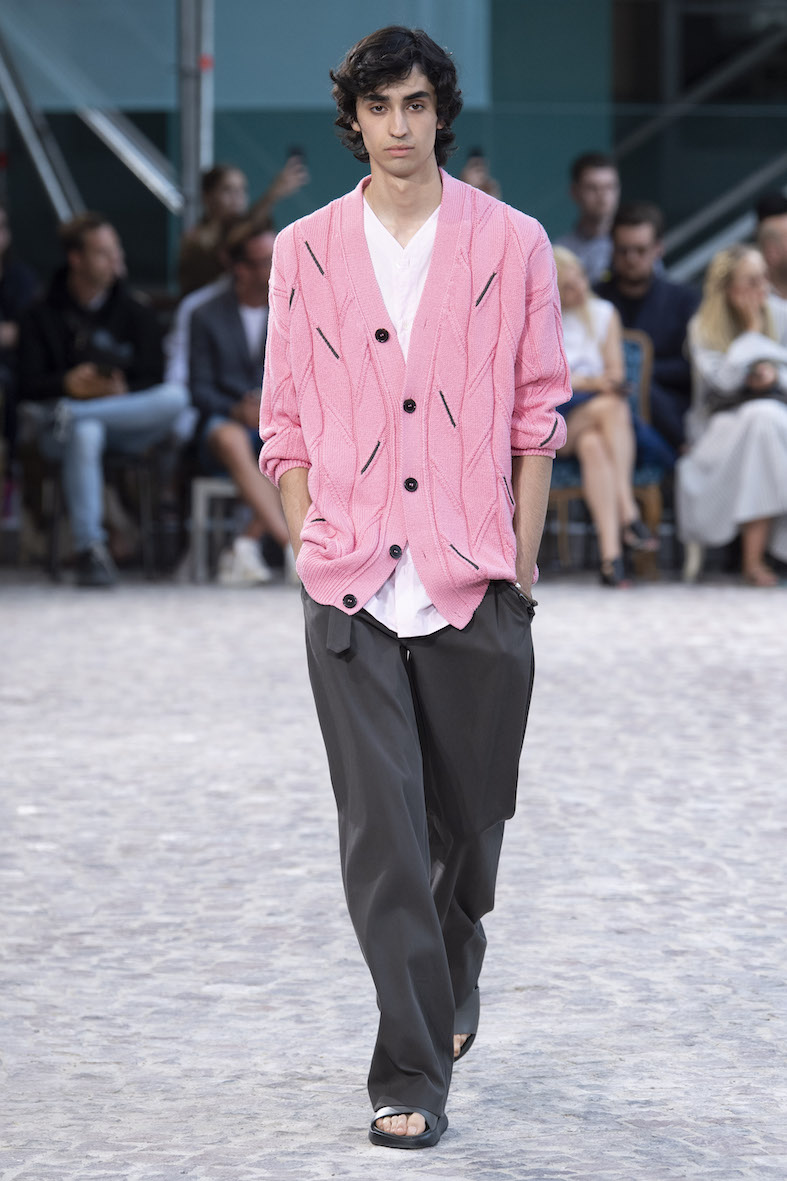
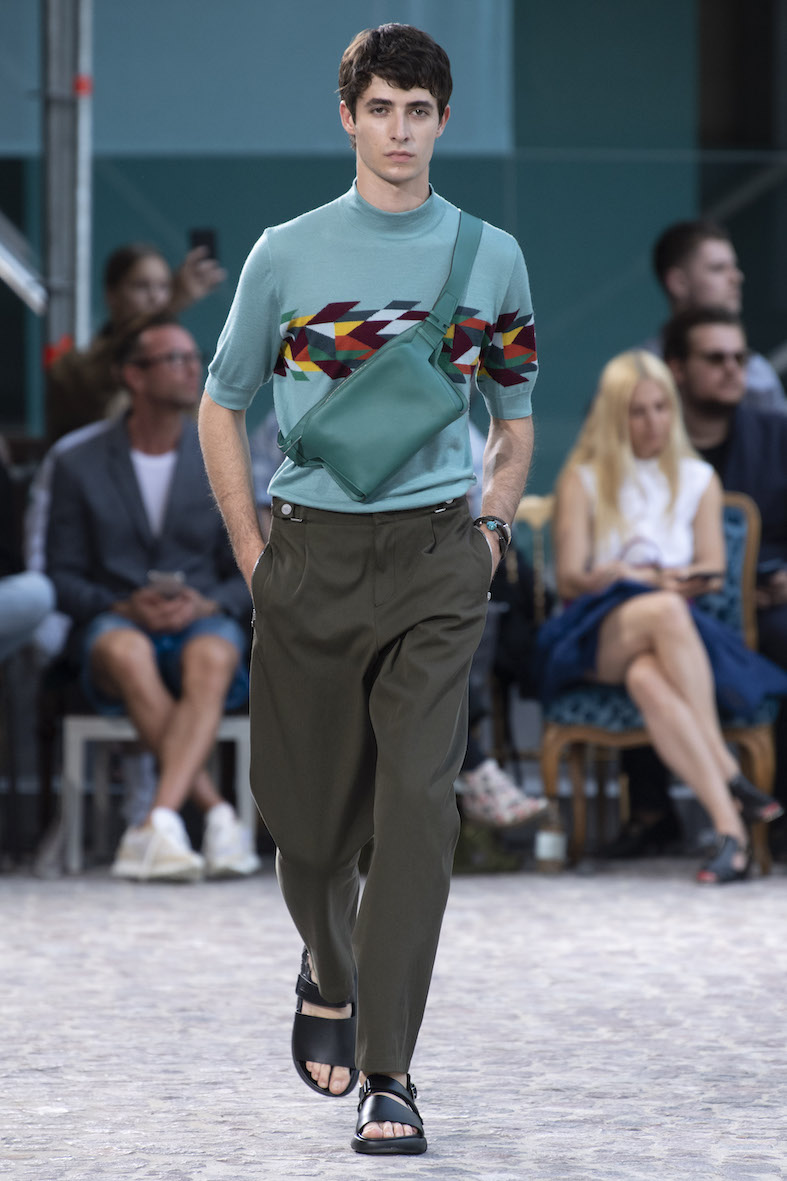
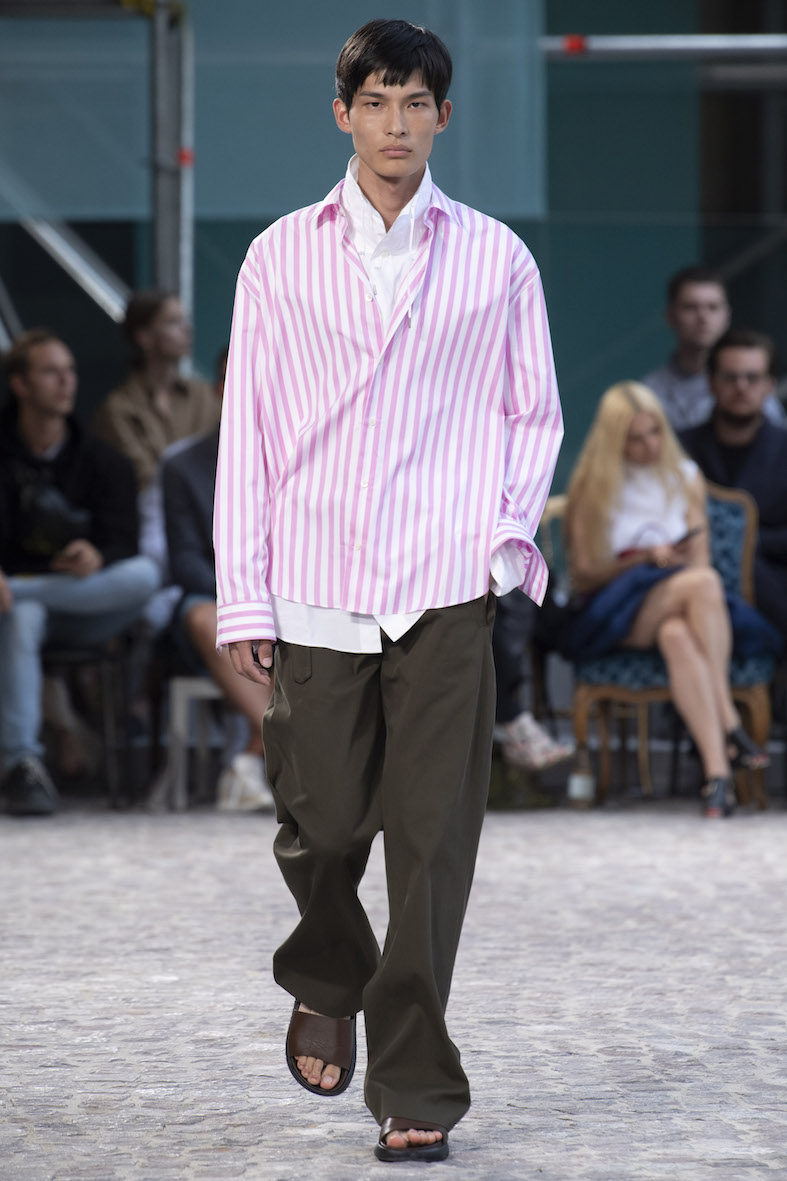
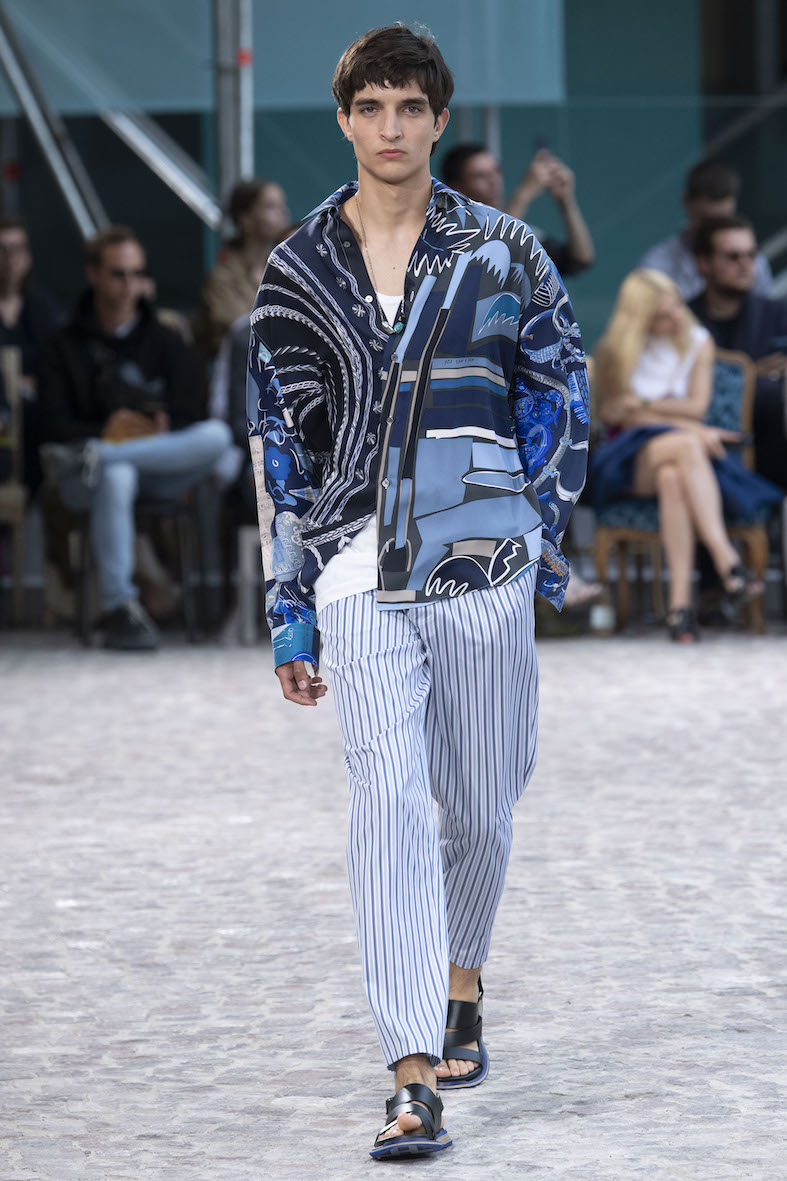
…
/ Words by Philippe Pourhashemi /
/ Backstage pictures by Geordie Wood /
/ Runway pictures by Jean-François José /
// A LONGING FOR TRUE BEAUTY AT BERLUTI //
Showcased in the sunny and peaceful Luxembourg Gardens, Berluti’s last collection -designed by Kris Van Assche- was a tribute to timeless beauty and meticulous craftsmanship. The Belgian designer was searching for new and contemporary ways to reinterpret the cherished notion of elegance and his vision came to life seamlessly.
Tailoring was one of the show’s strongest points, as it looked equally great on men and women. Double-breasted, sleeveless, fitted or elongated, the jacket was a key garment within the collection and it gave a reassuring sense of structure from the very first look. Van Assche used tailored lines as a canvas to express a more personal vision of luxury, made modern through his use of embellishment and controlled exuberance. Cropped and colorful bombers were worn over jackets and pants. Dreamy feathers also appeared on sharp-looking suits, while chunky chains adorned sleek city bags.
If formality is a Berluti trademark, Van Assche also wanted to underline a more sensitive and spontaneous approach towards the brand, which was evidenced in his stunning use of color. Seeing orange, purple, chartreuse yellow, bright blues and fuchsia pink on the runway was a feast for the eyes, as it added an uplifting vibe to the brand’s proposal. Garments referring to motorcycle gear gave a dynamic edge to the line-up, and Van Assche kept exploring the boundaries between sporty and dressy. A sleeveless jacket, worn with a baggy pair of shorts and graphic sneakers, propelled the brand into our present time, nicely connecting the speed of the street with the patience of craft.
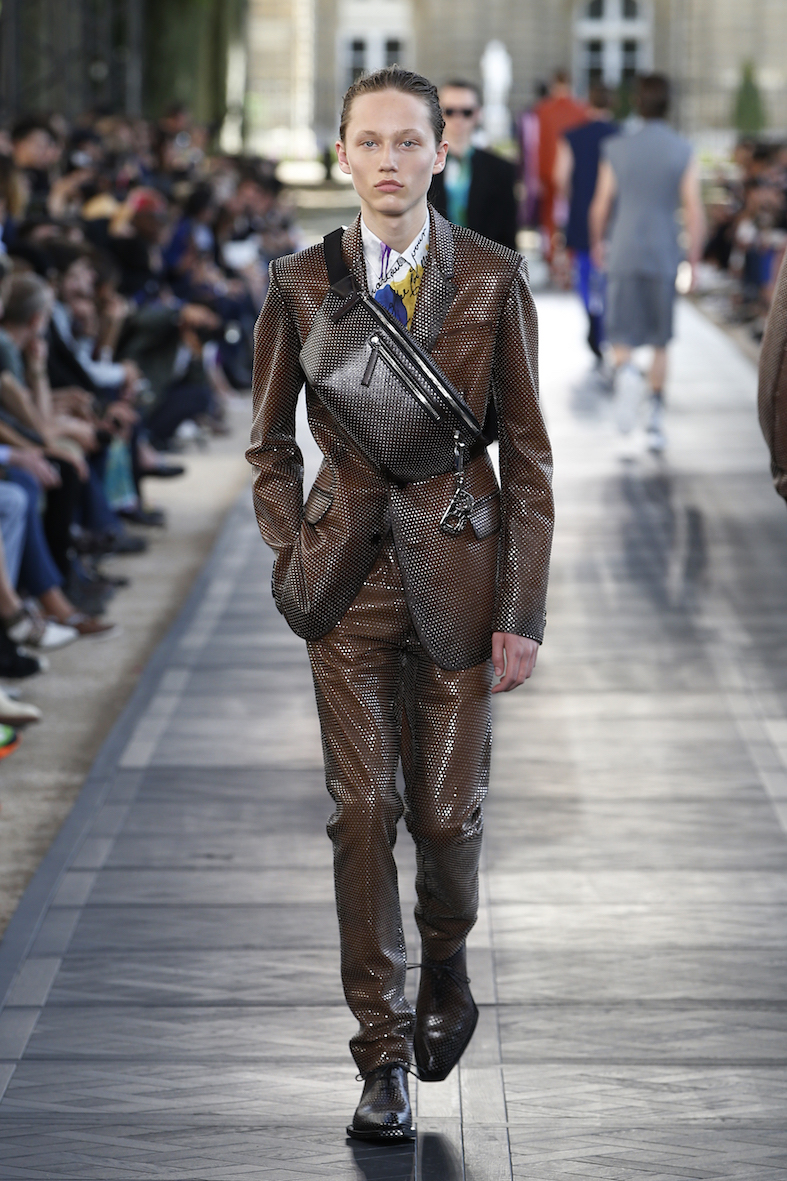
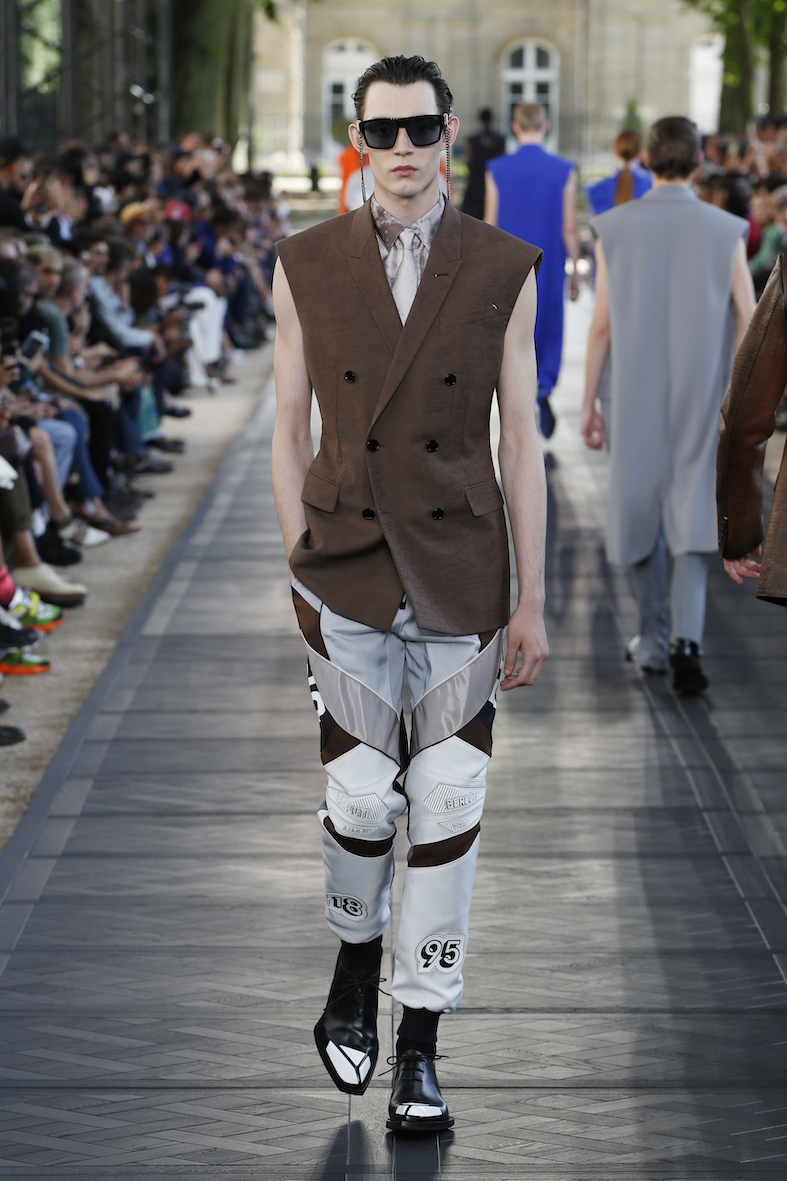
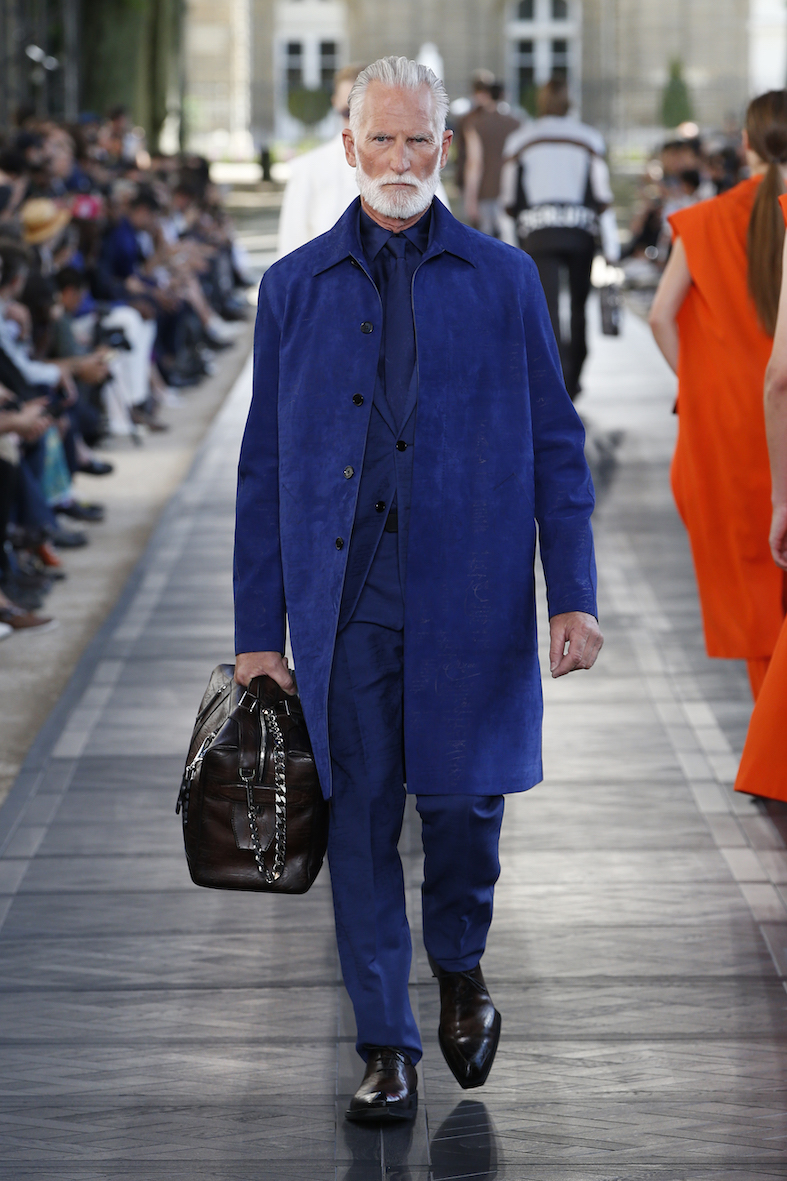


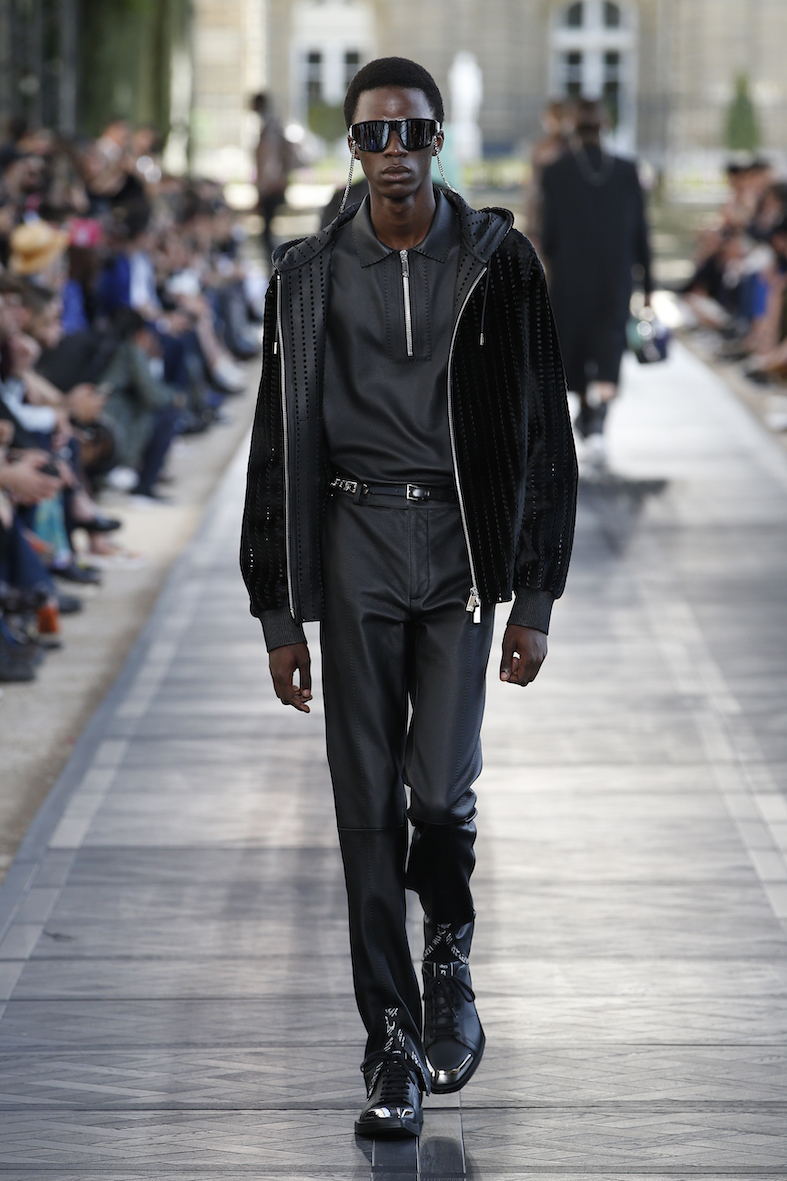

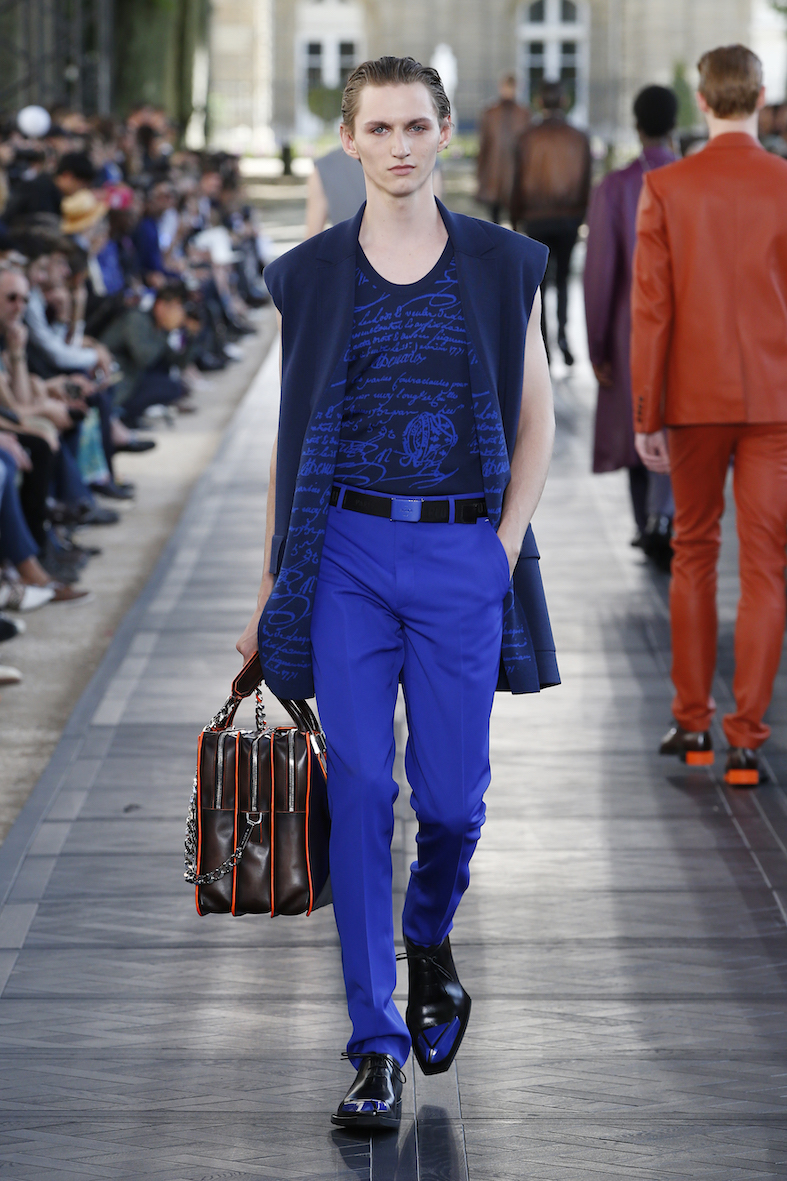
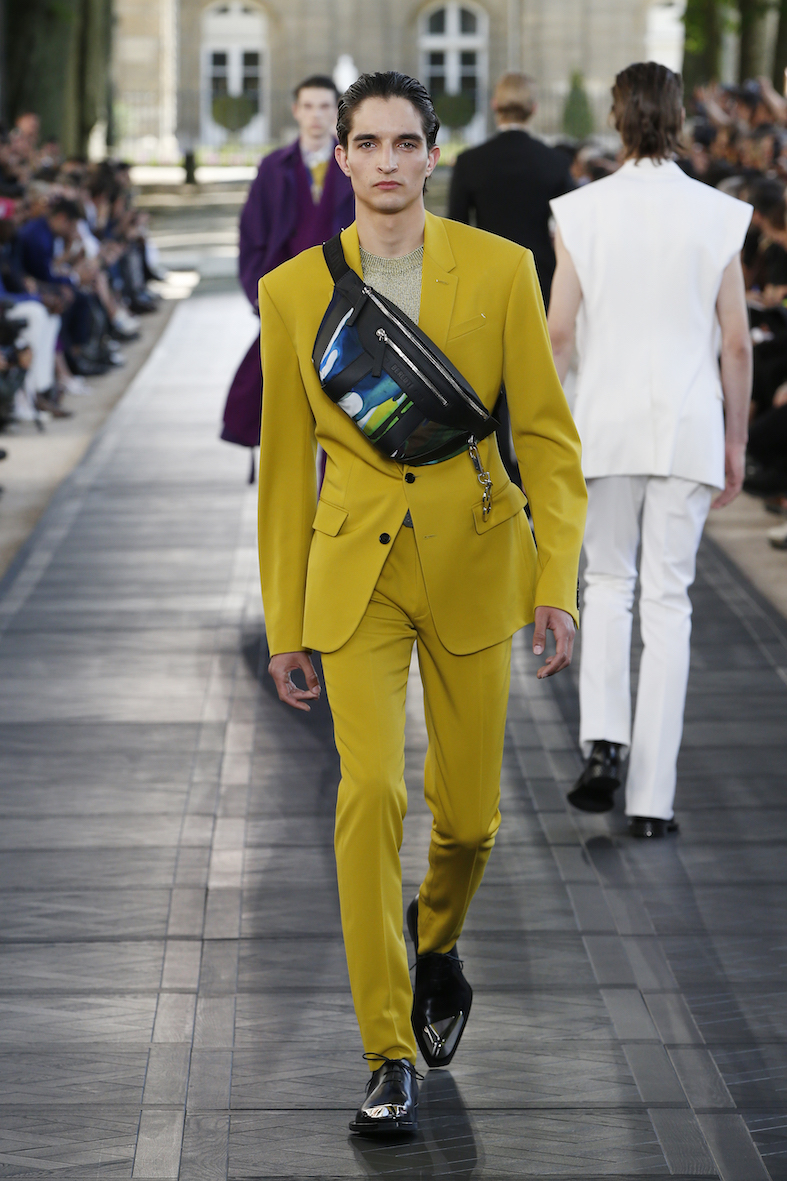
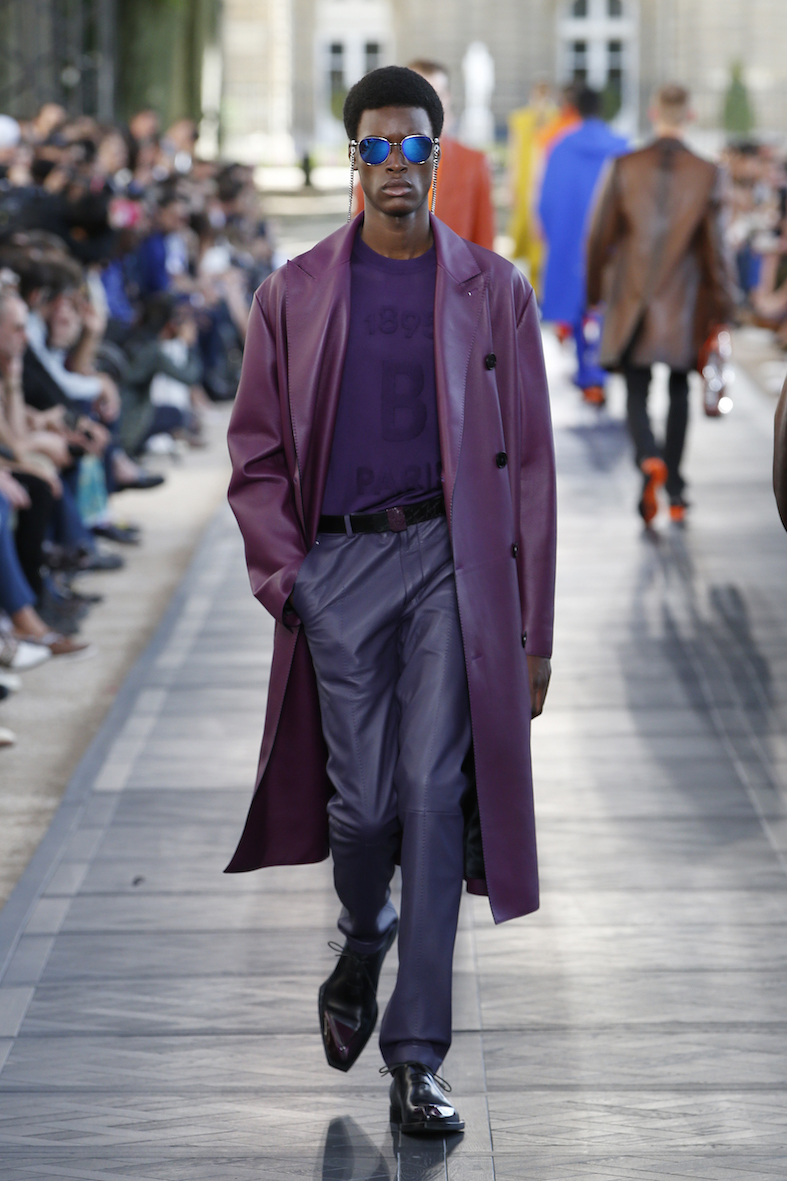
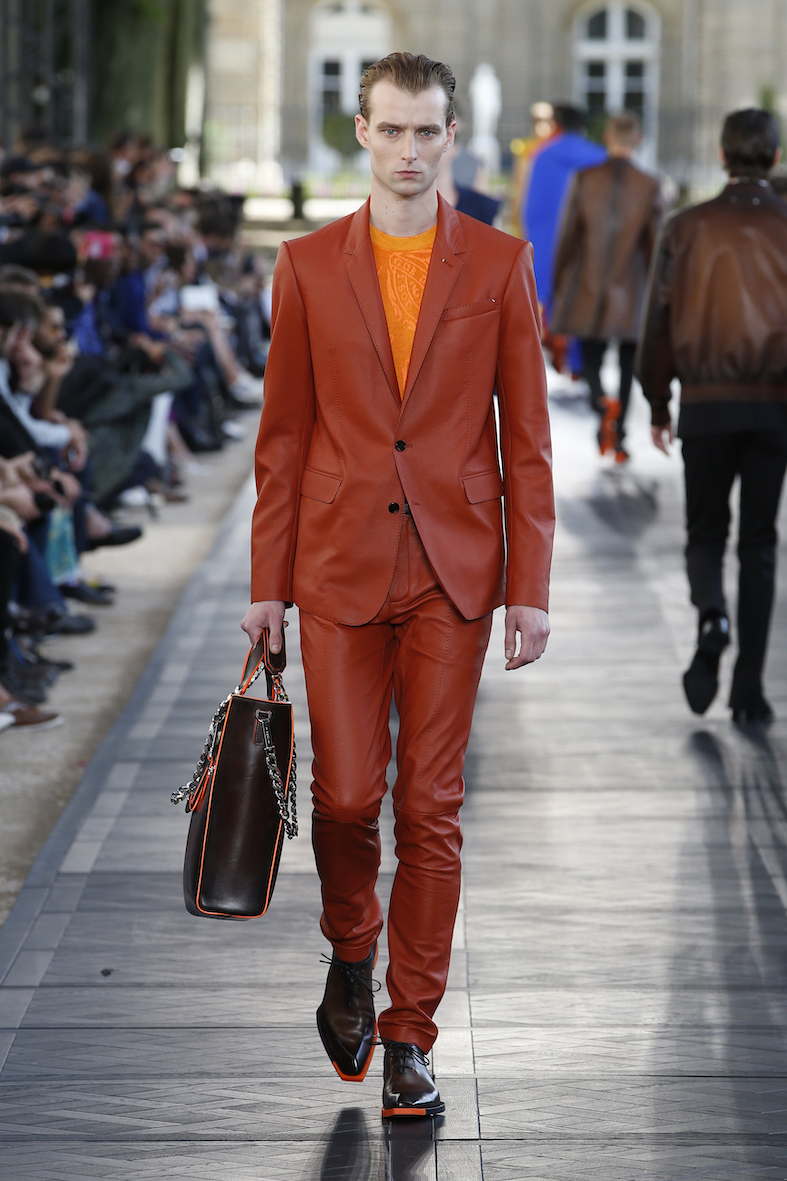
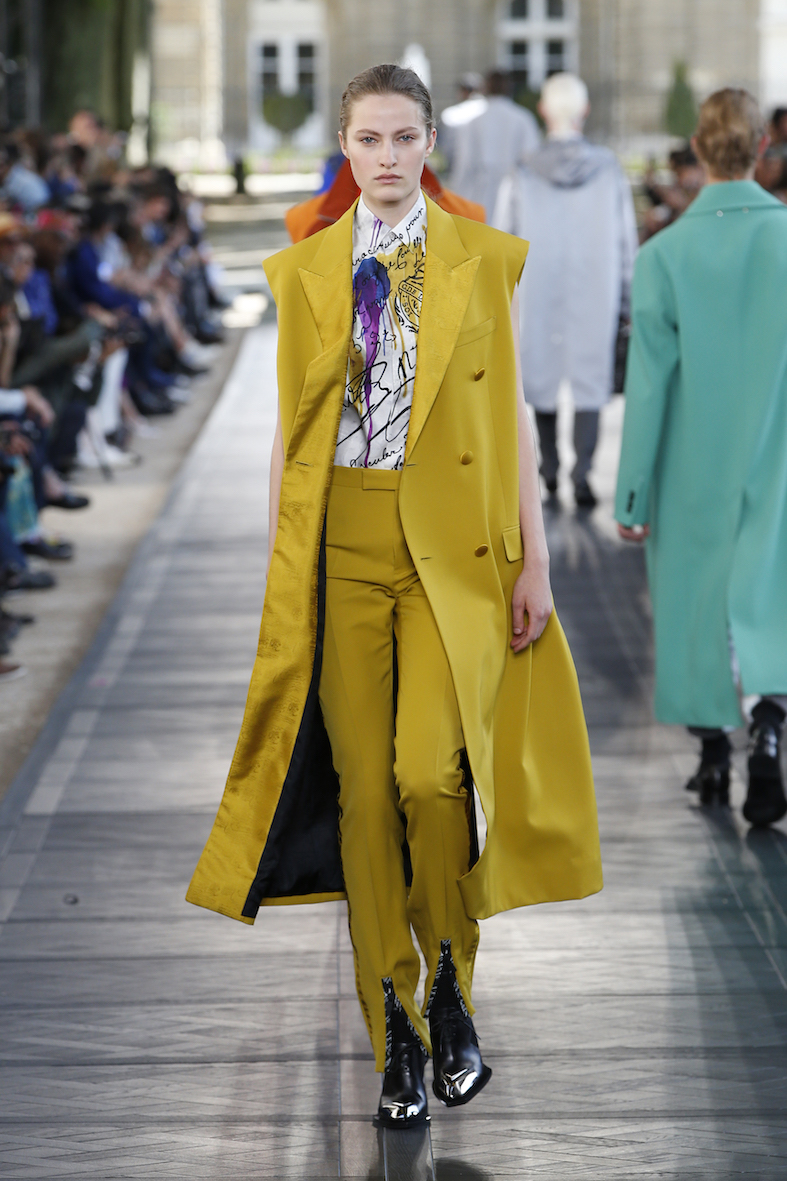
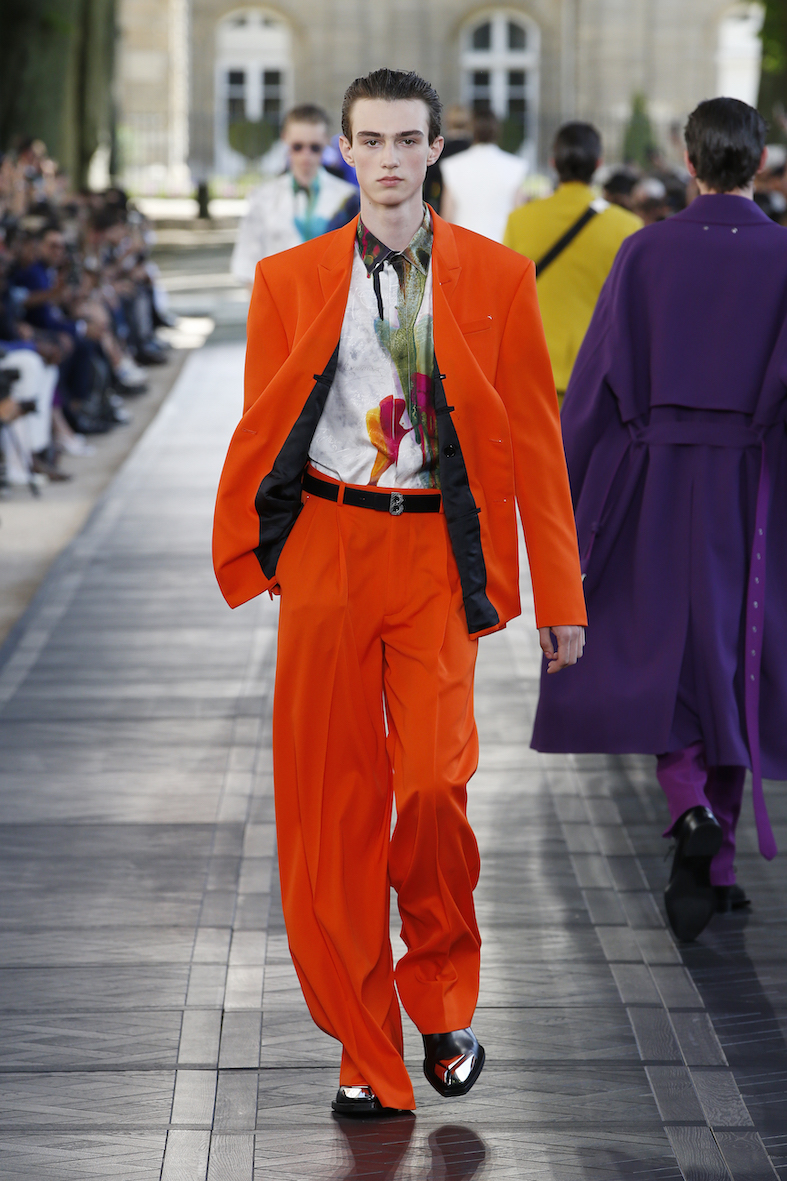
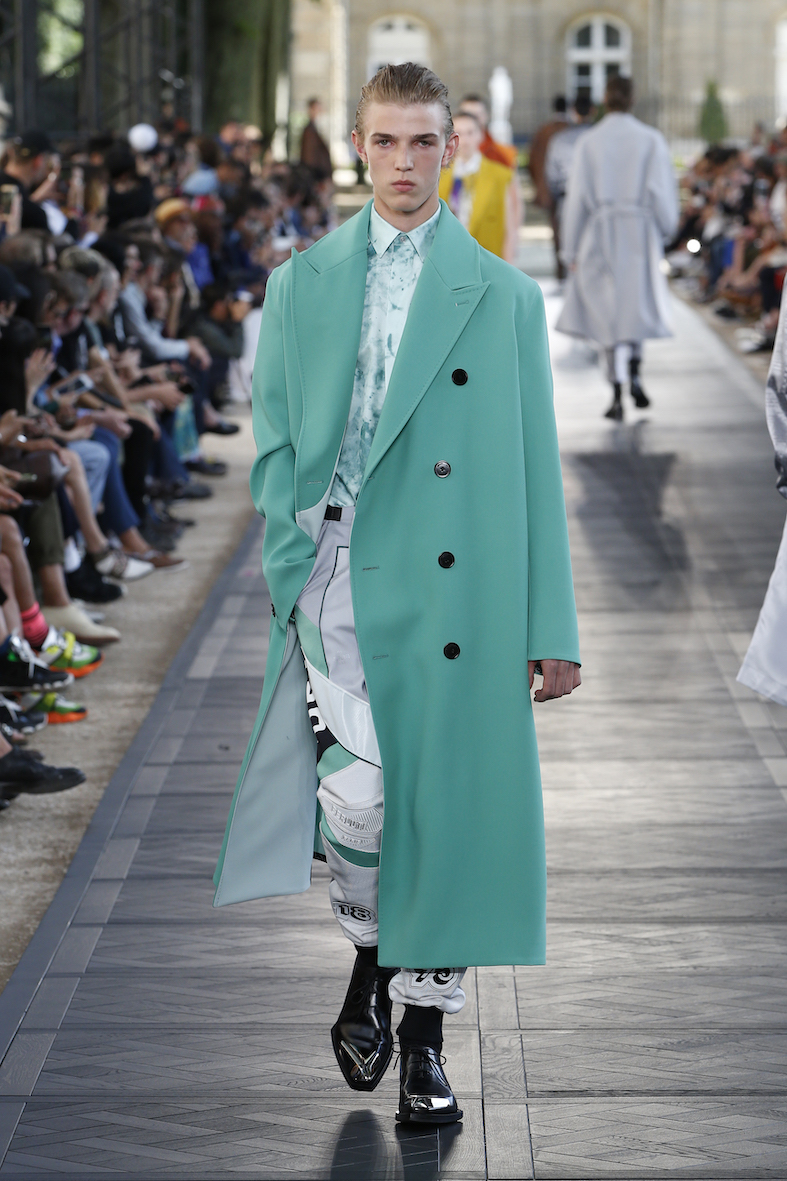
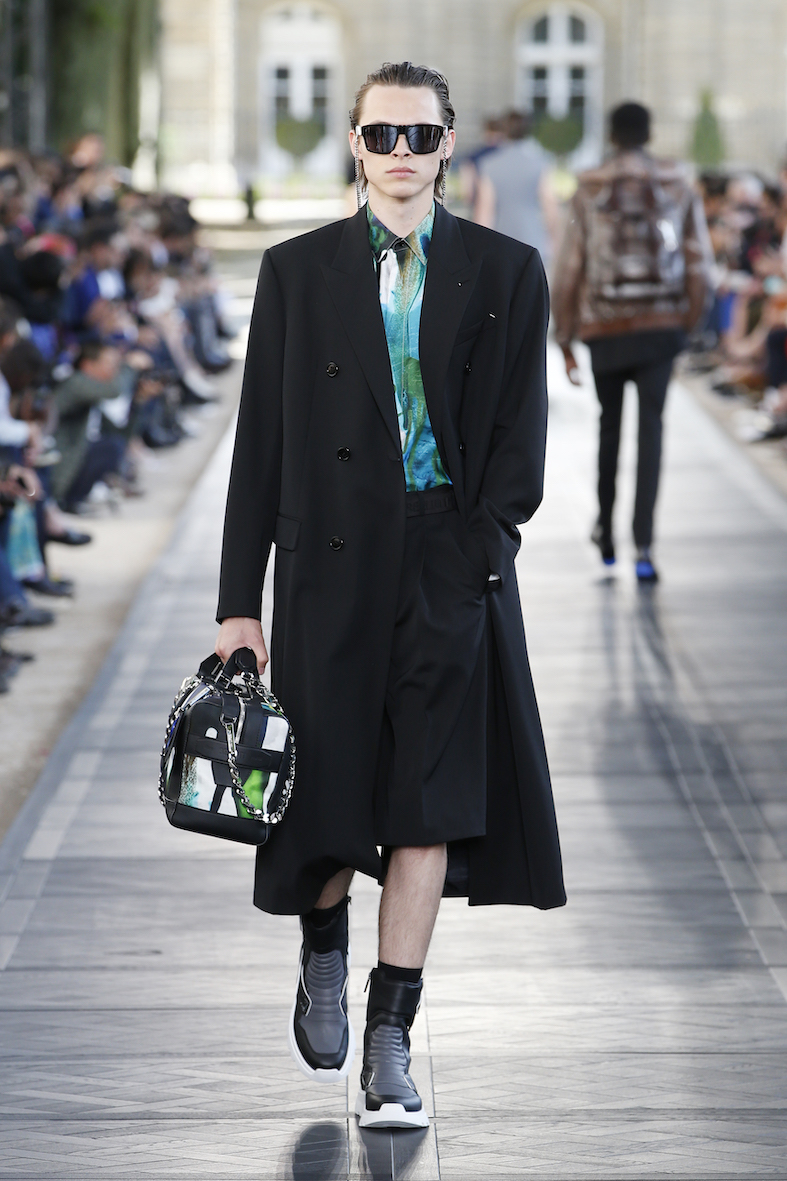

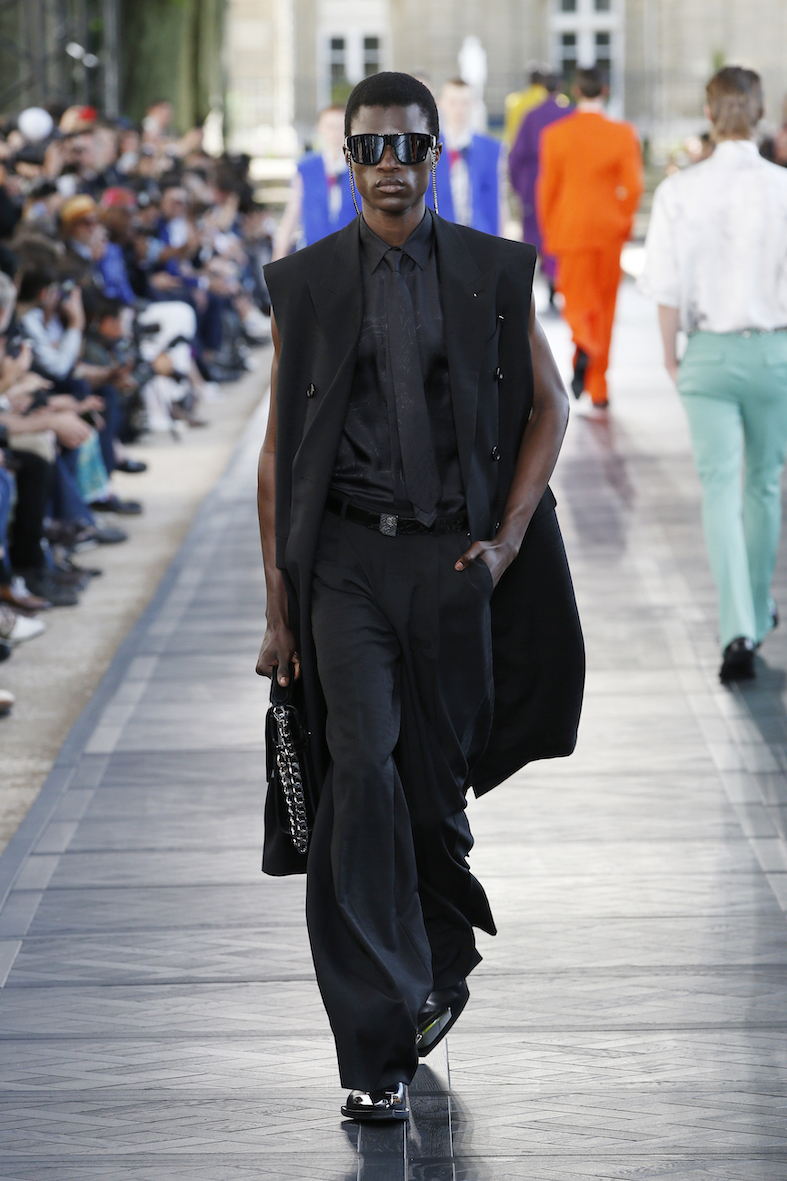

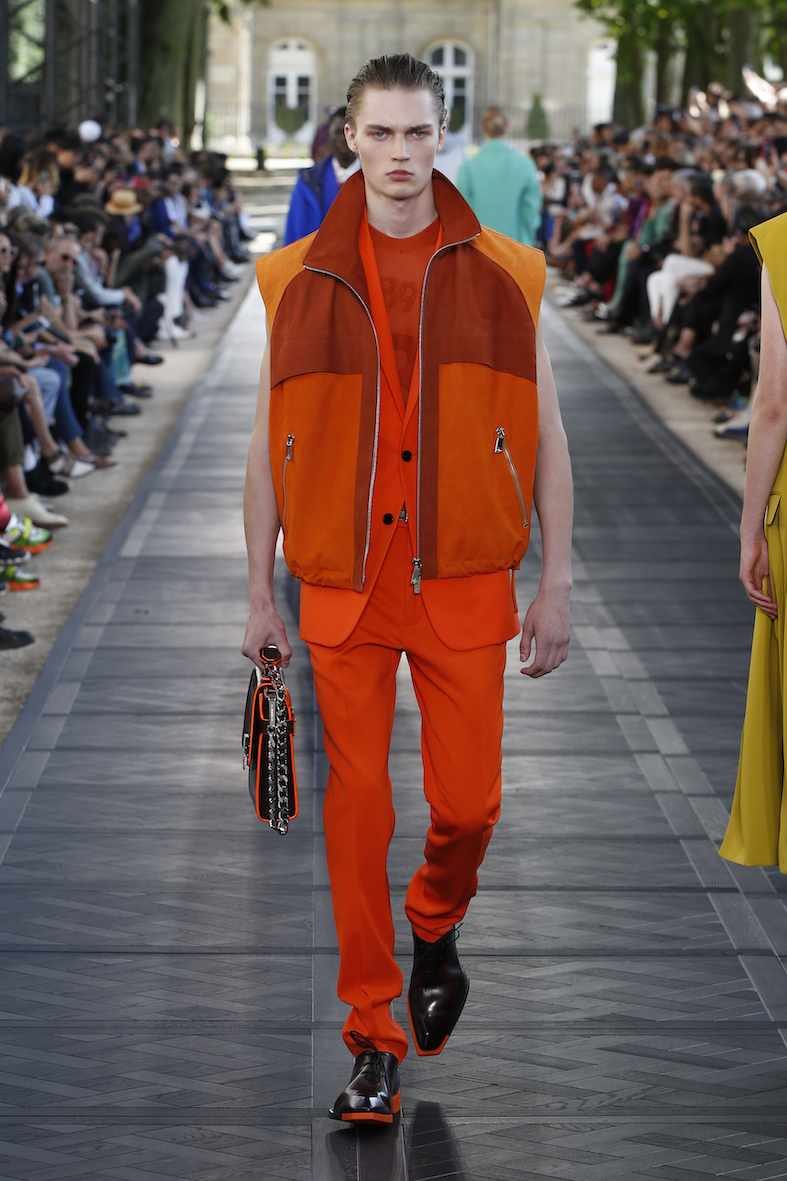
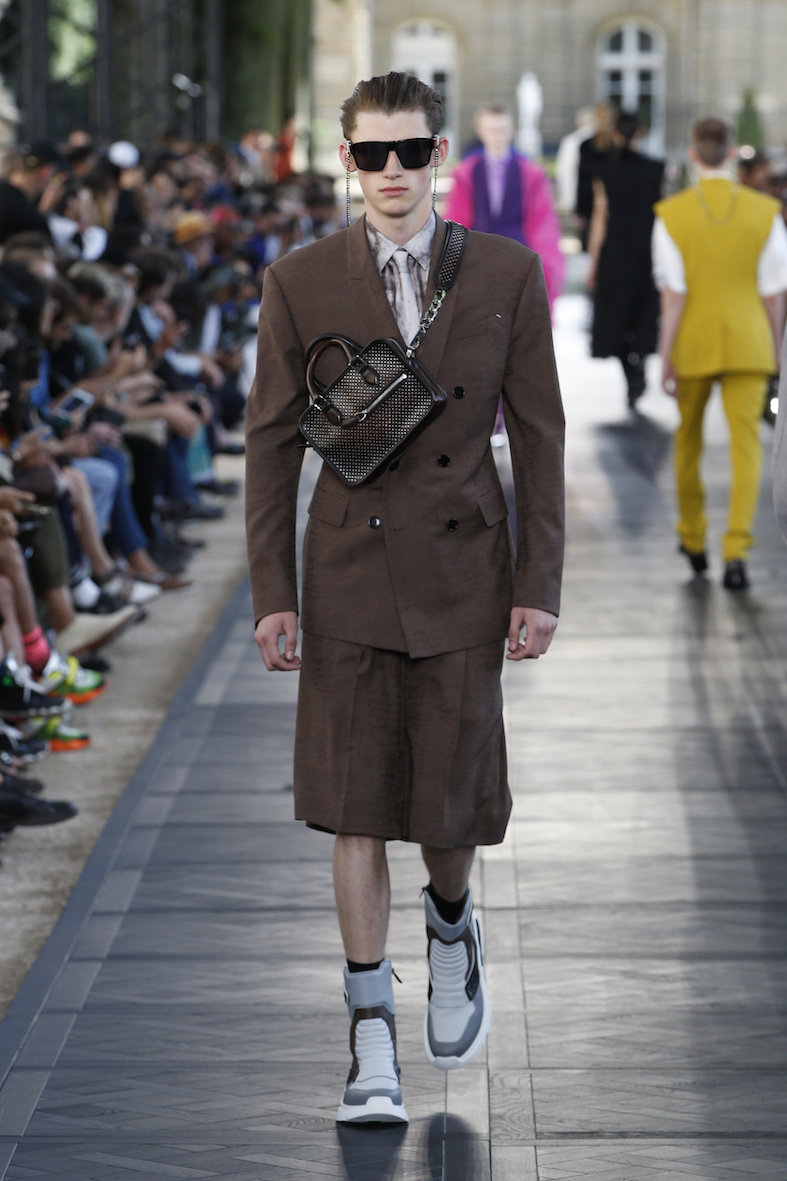
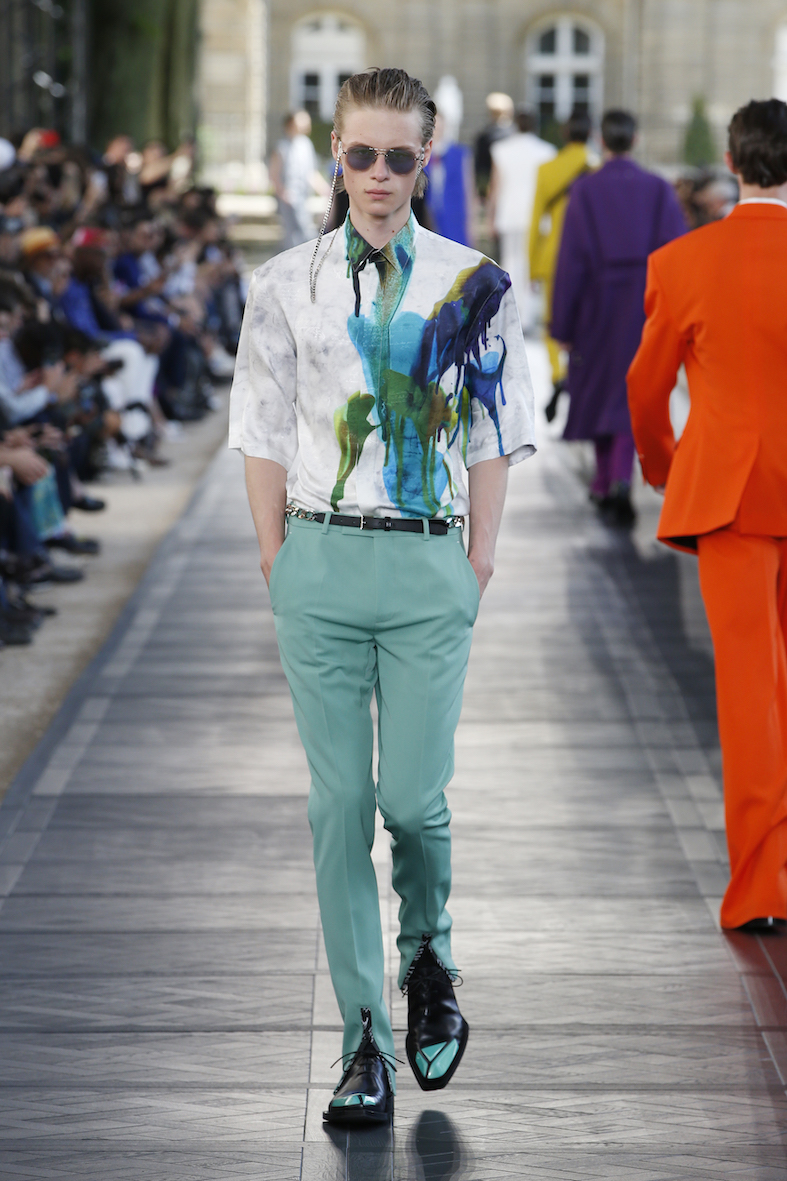
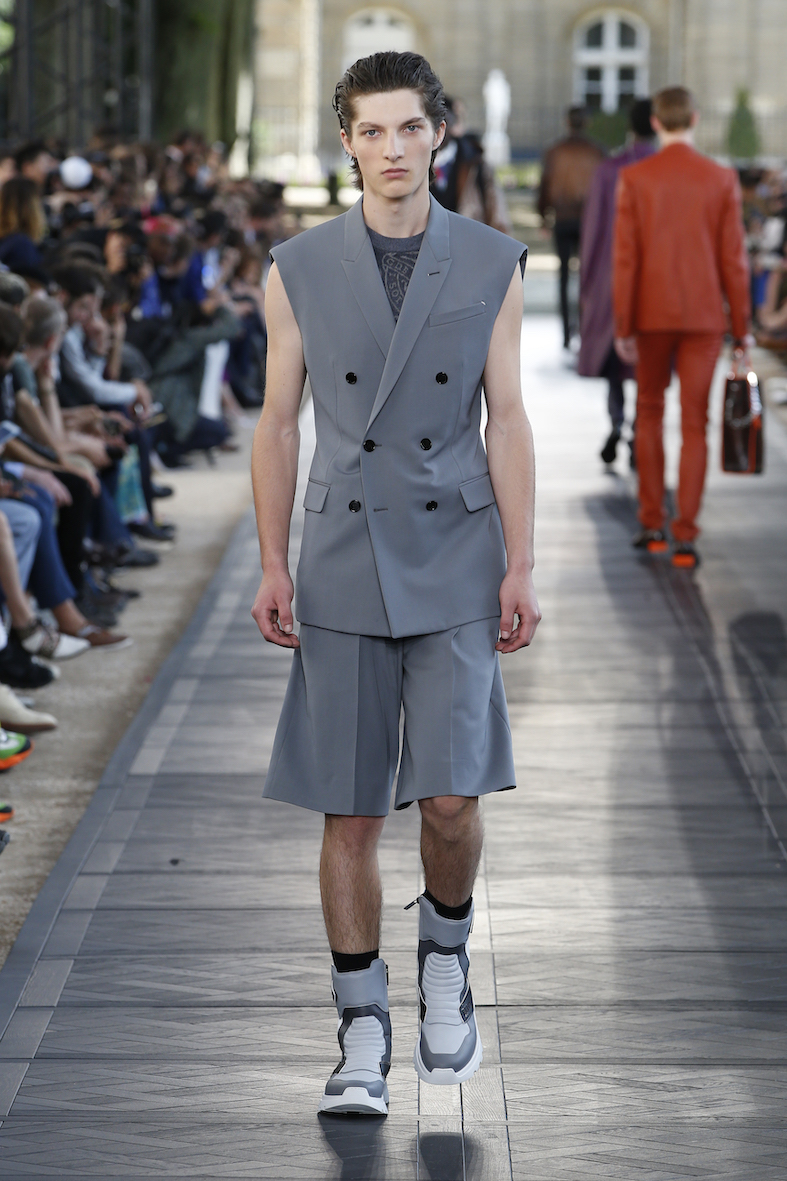
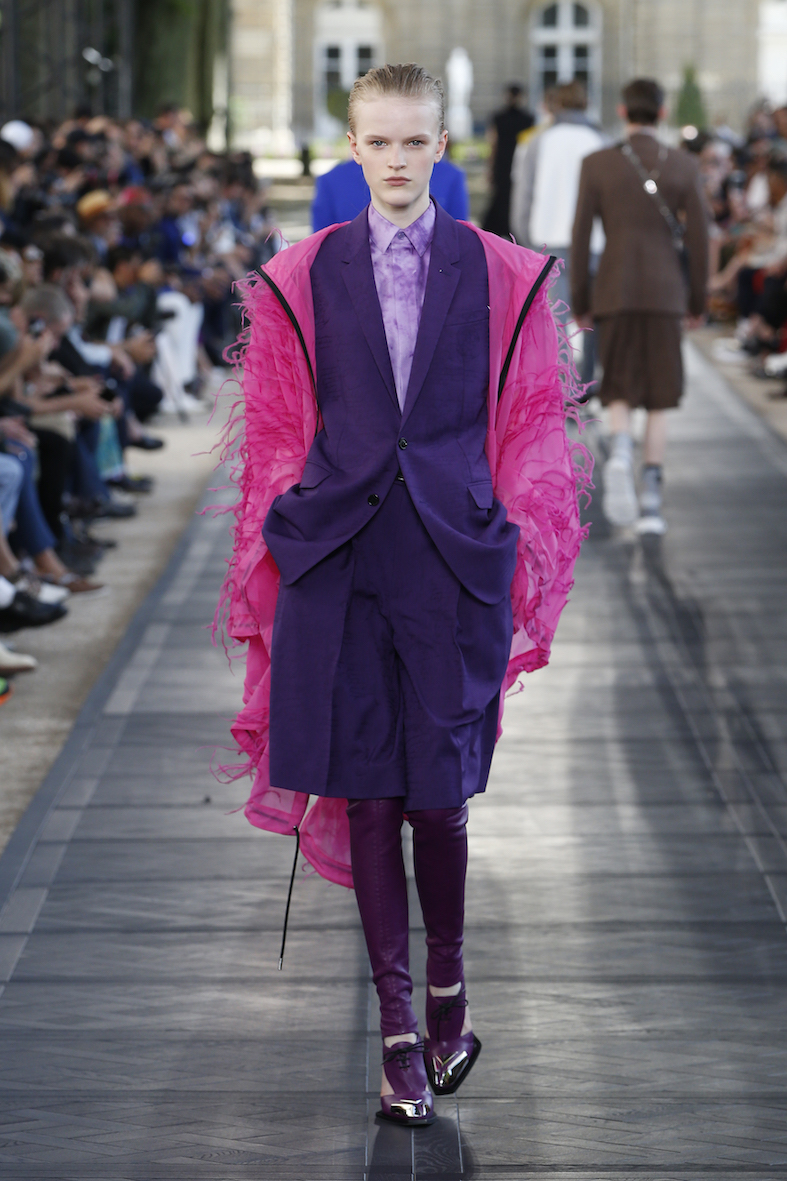
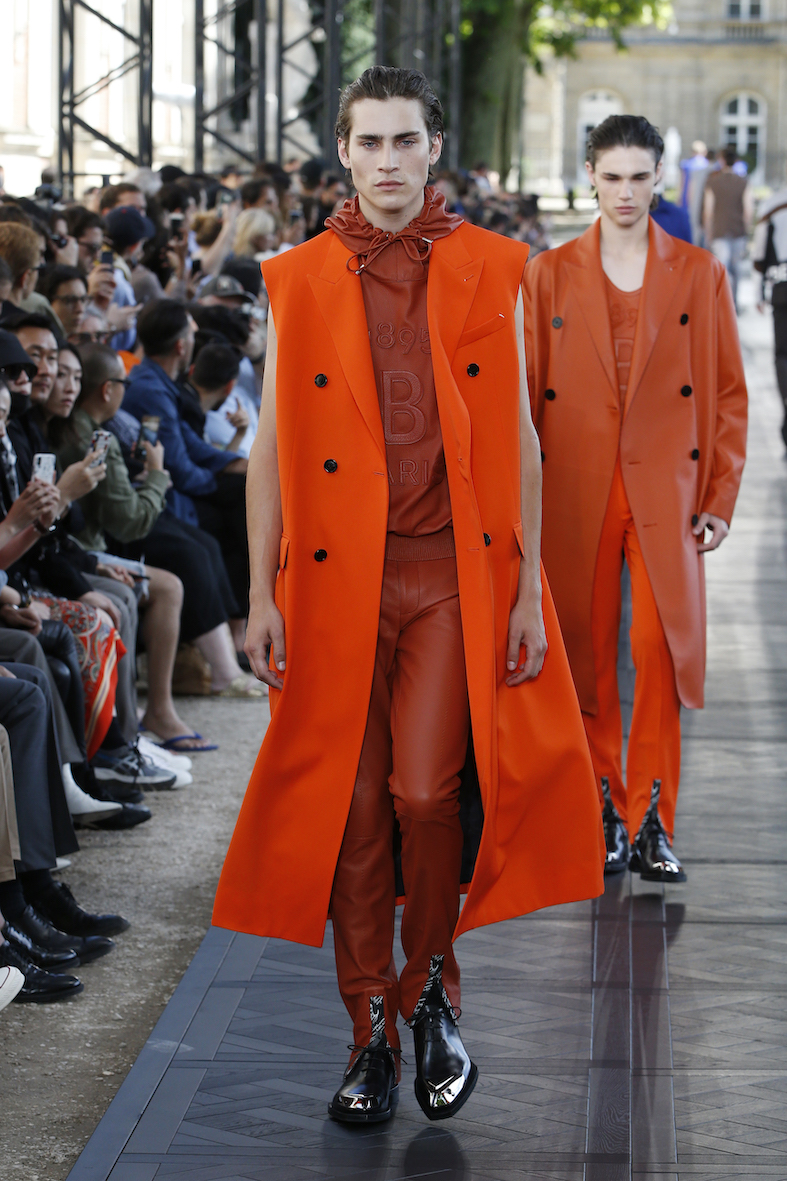

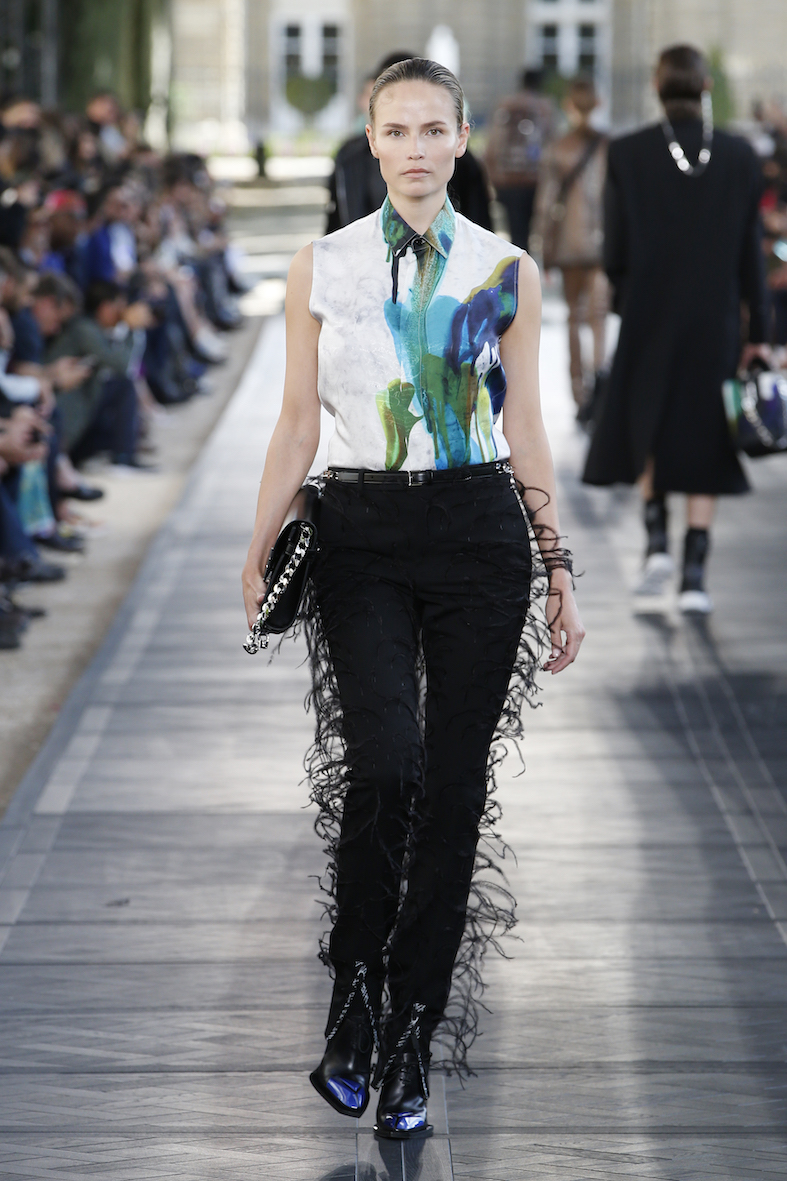
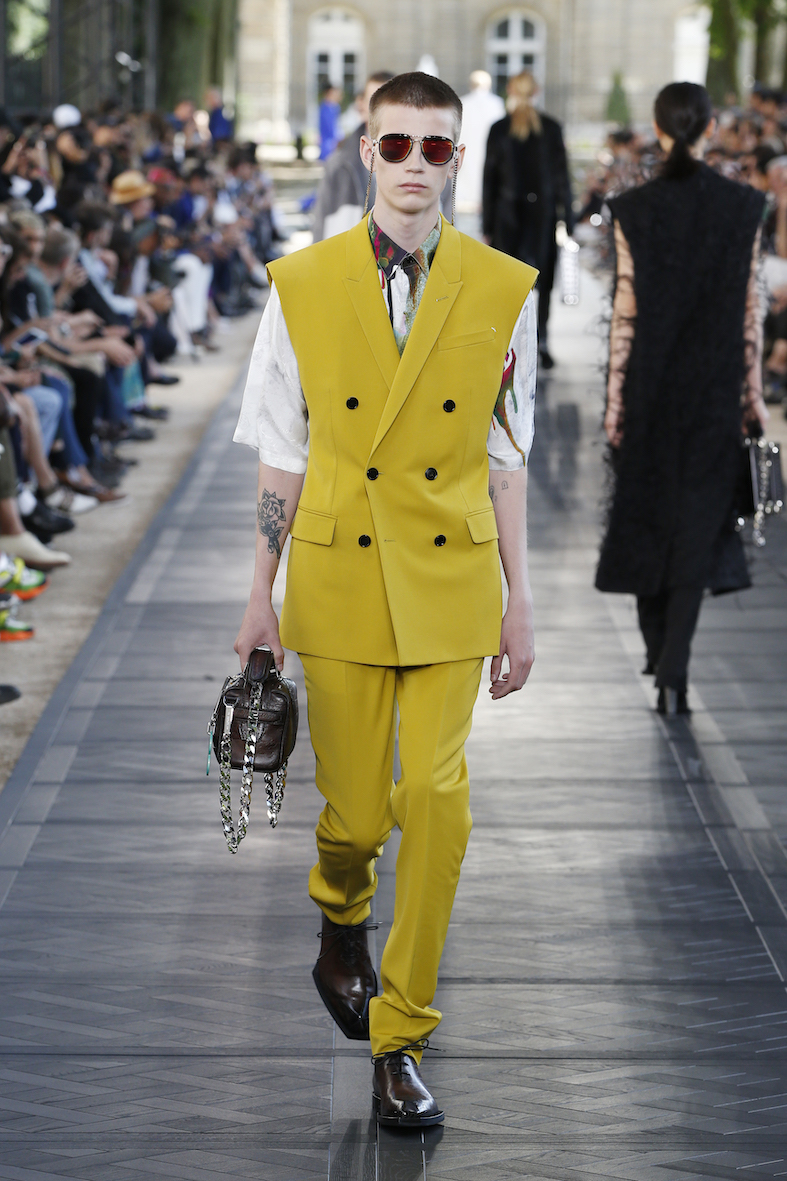
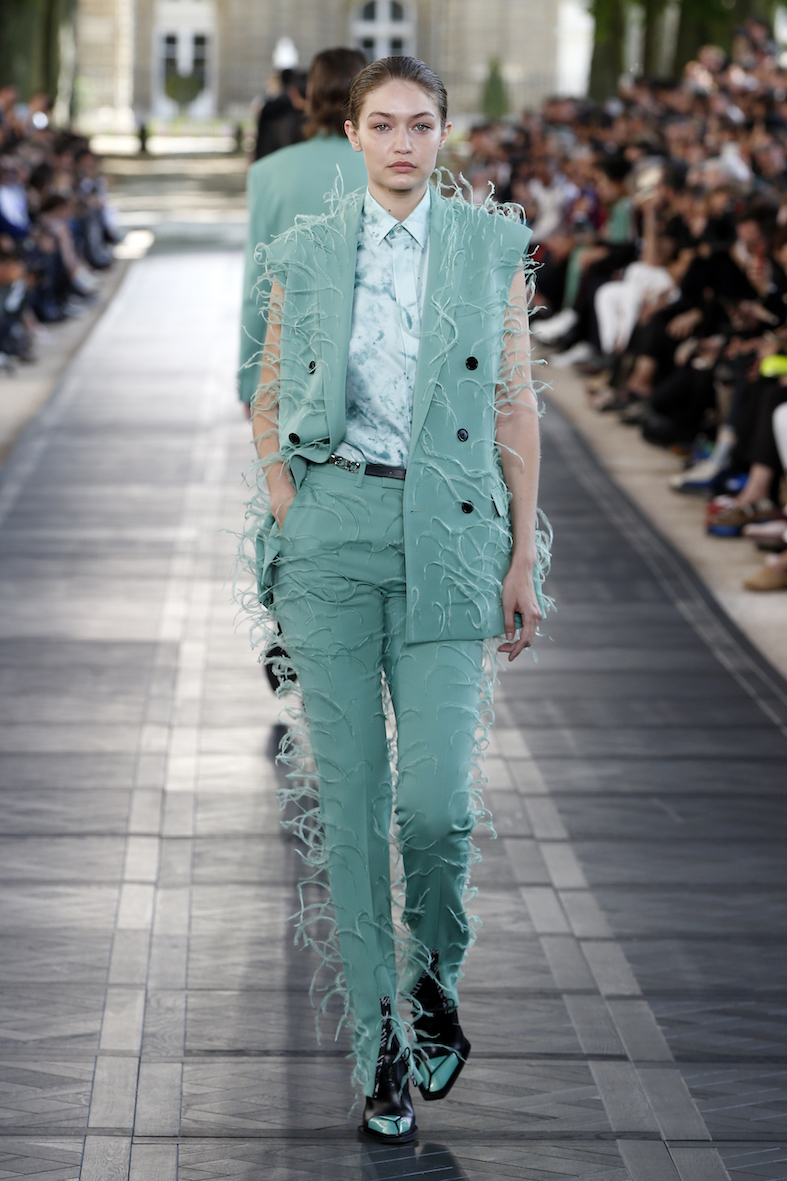
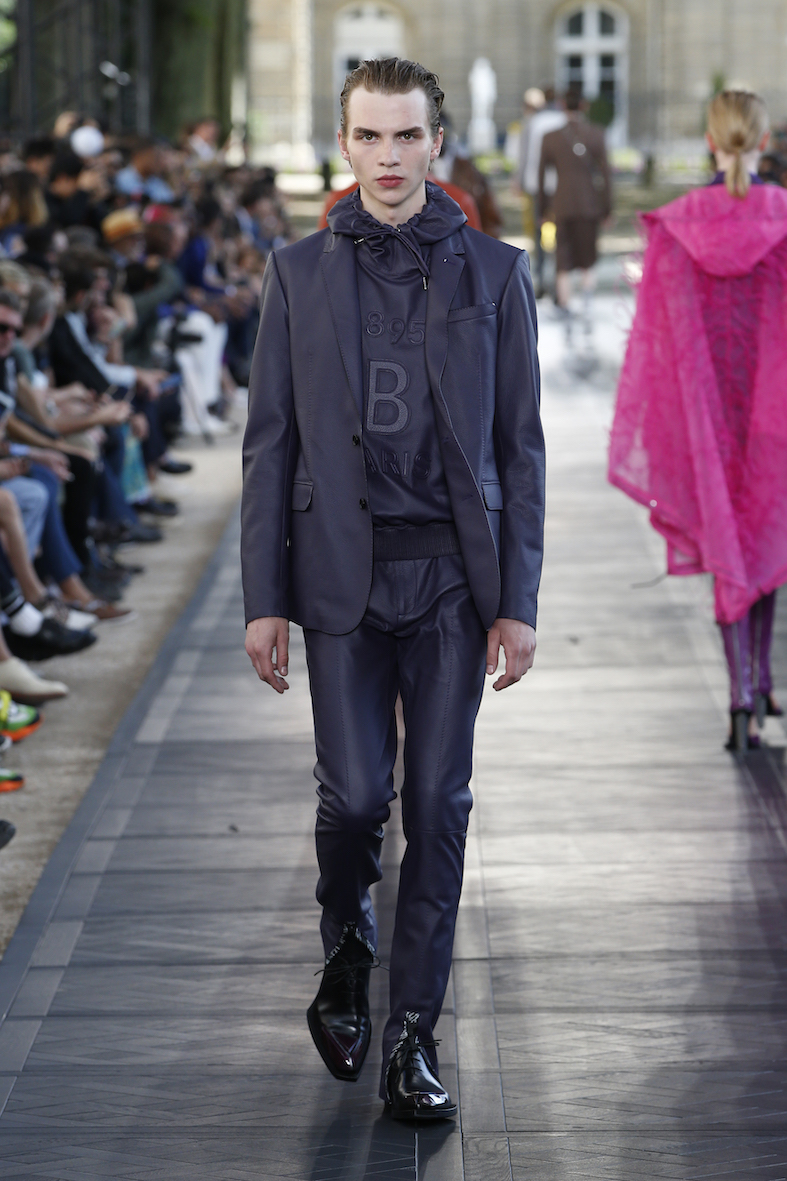
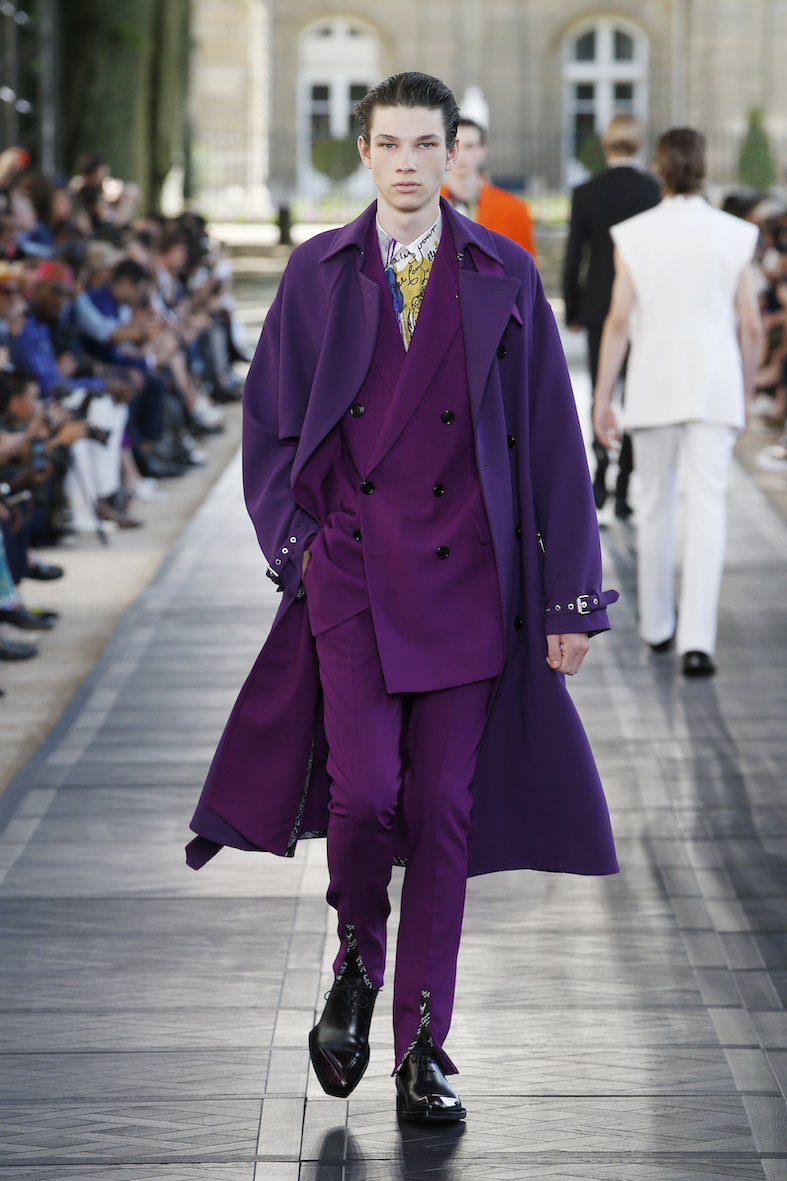
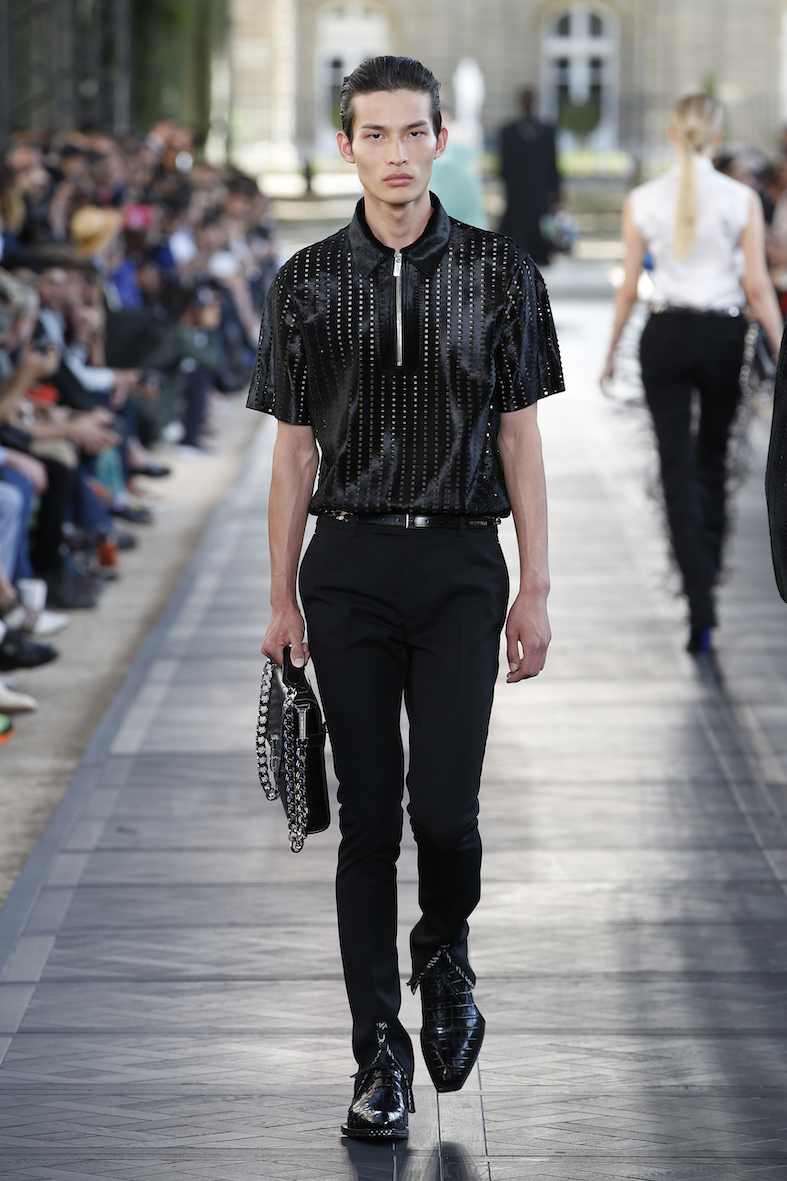
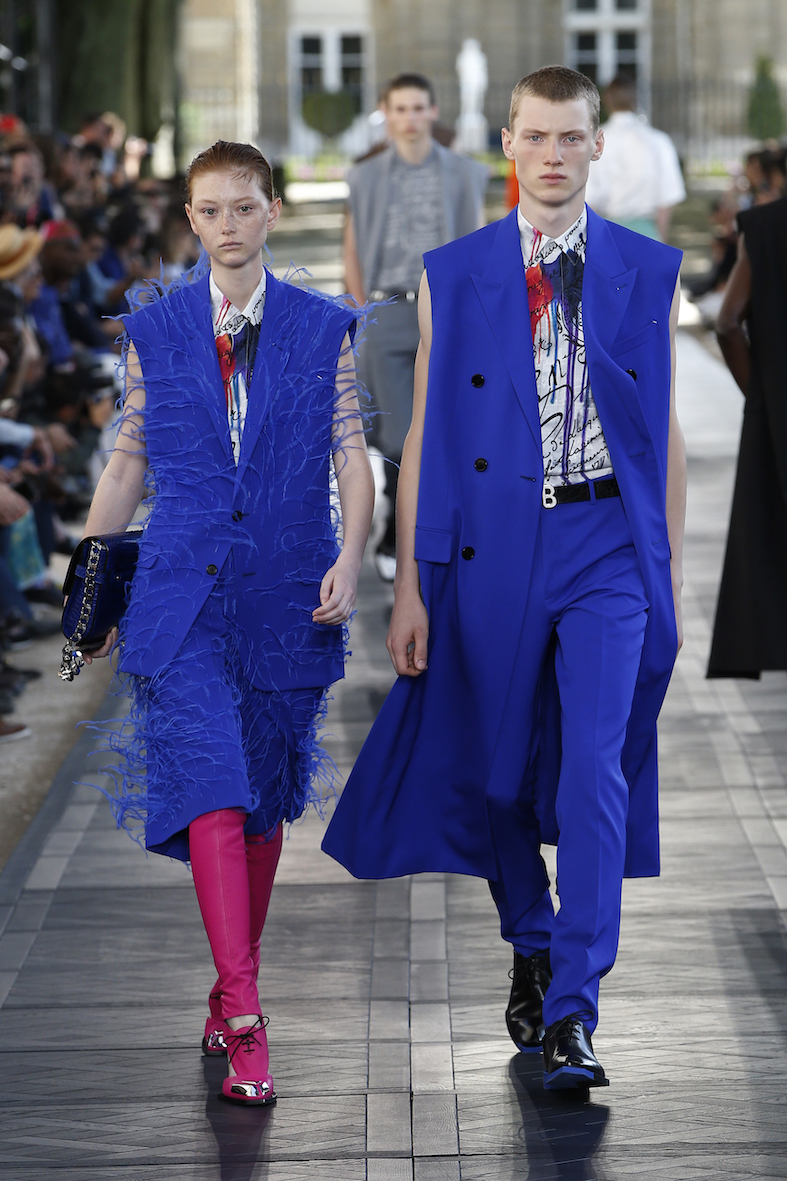
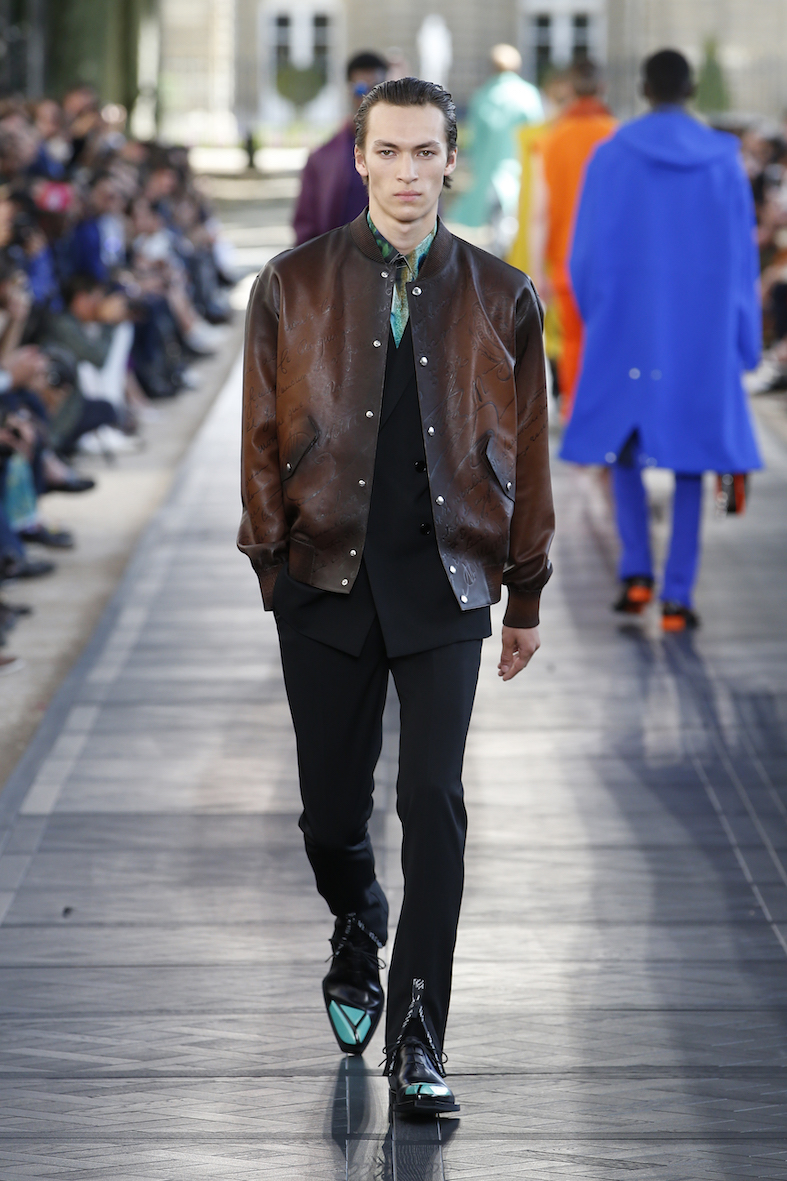

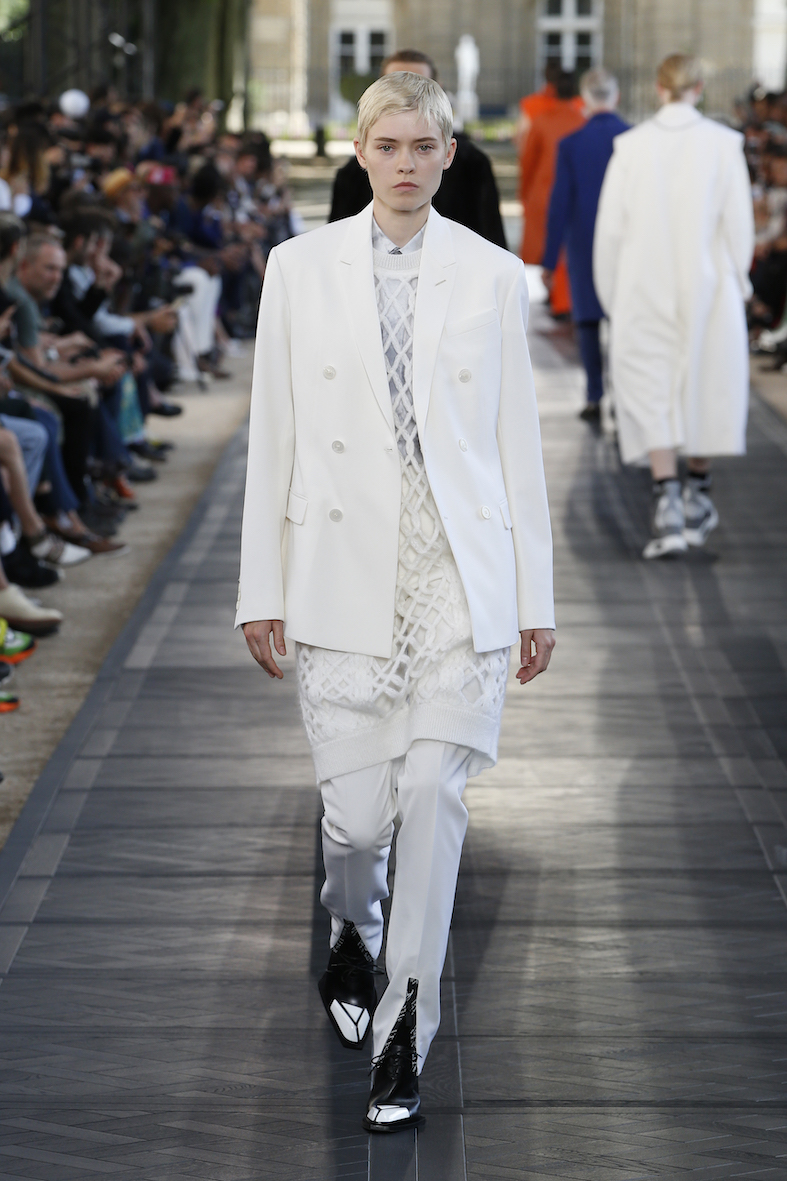
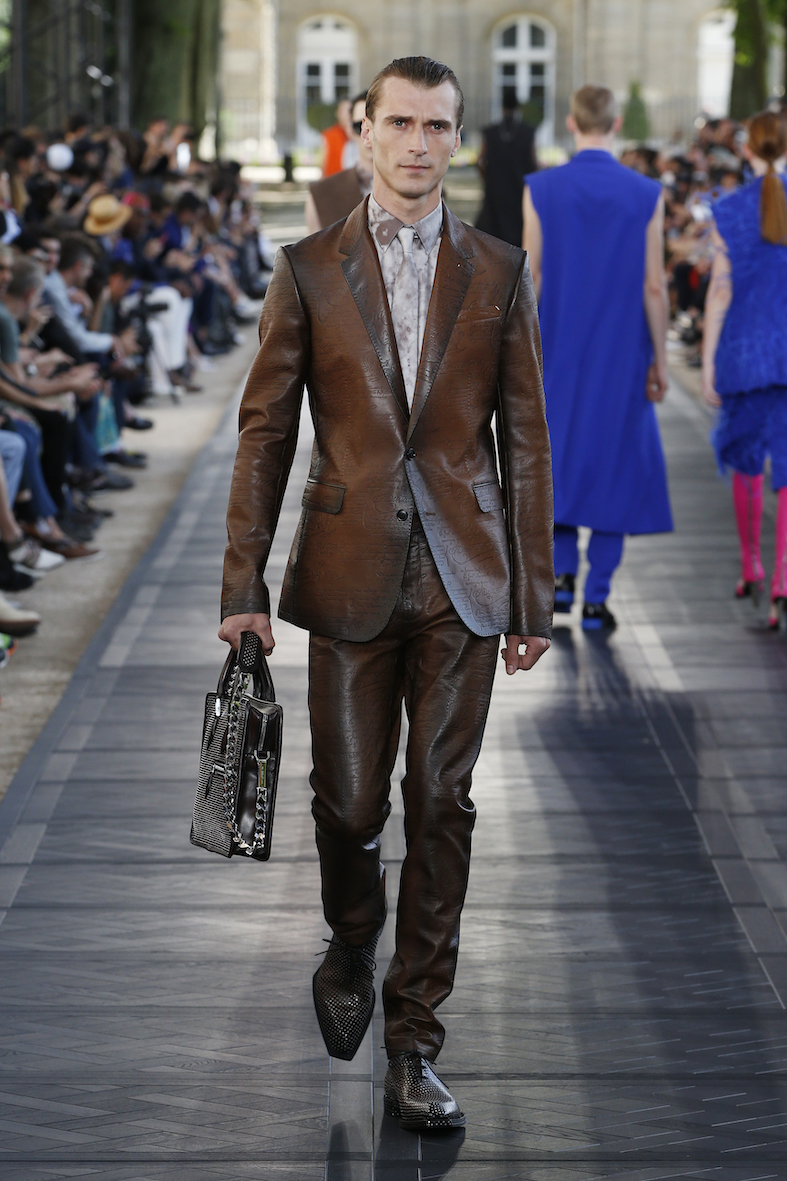
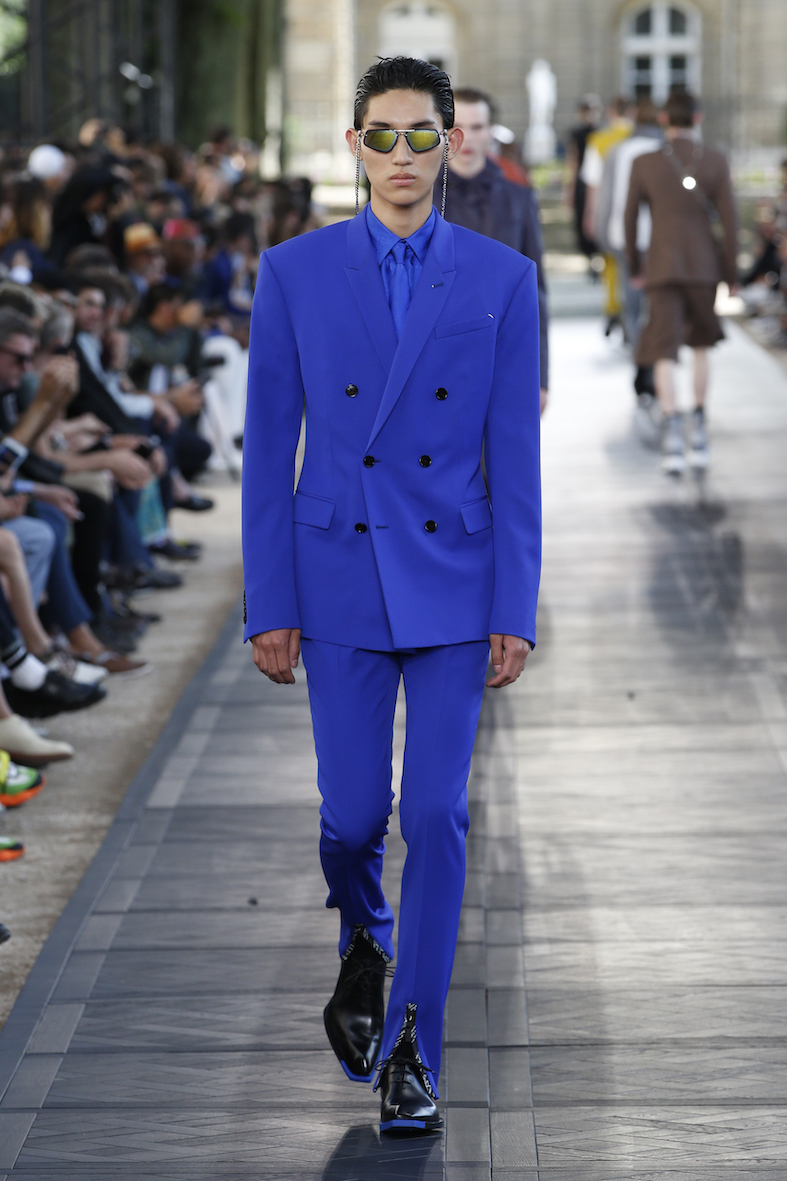
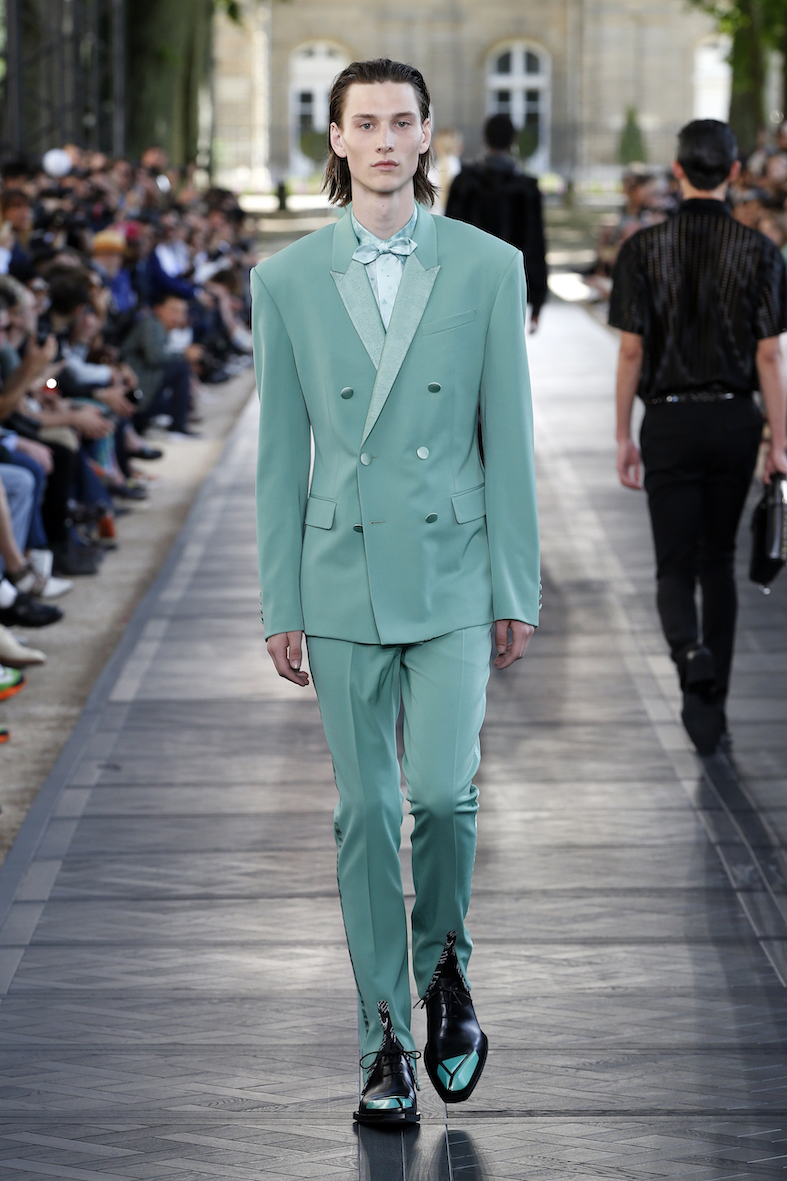
…
/ Words by Philippe Pourhashemi /
/ Backstage pictures by Merel Hart /
// HERMES / Men's SS20 LiveStreaming //
// A SOFTER TOUCH AT LOUIS VUITTON //
Our world may be getting increasingly fast -and patience may have become the rarest virtue- Virgil Abloh wanted to slow things down at Louis Vuitton this season, and his last show for the House had a meditative and tranquil quality.
Attracted by the power of the flower -as a natural wonder and symbolic expression of change- Abloh focused on a vision of masculinity in motion, giving his silhouette a languid and fluid feel. Pleated, pressed-crease trousers were loose and voluminous, while a mauve shirt in nappa goat leather featured one single oversize pocket, which is all that you need to carry life’s essentials. That generosity also defined Abloh’s outerwear, which was on the roomy side again, and included lightweight parkas and hooded anoraks, as well as military-inspired styles and generous trench coats. Contrived effects are not relevant in menswear right now and the designer fully embraced this longing for ease.
This does not mean, however, that the collection didn’t feature experimental shapes or daring accessories, such as pleated monogram bags or flower-covered totes. Abloh seemed to be referring to the formative years defining the passage from boyhood to manhood, and how clothes play a crucial part within that period. He did offer intricate tailoring, but in vibrant and uninhibited shades -such as fuchsia pink for instance- and innovative technical jerseys, which added a sculptural quality to his suits.
The idea of blossoming and transformation continued throughout the show and silhouettes became more dramatic, with added luggage and bags carried by the models themselves or hanging on abstract structures hovering around their bodies. Was Abloh evoking the baggage every man carries from puberty to adulthood, or was he referring to his own nomadic lifestyle? The presence of kites on some of these looks indicated that the Vuitton man was, without a doubt, ready for take-off.
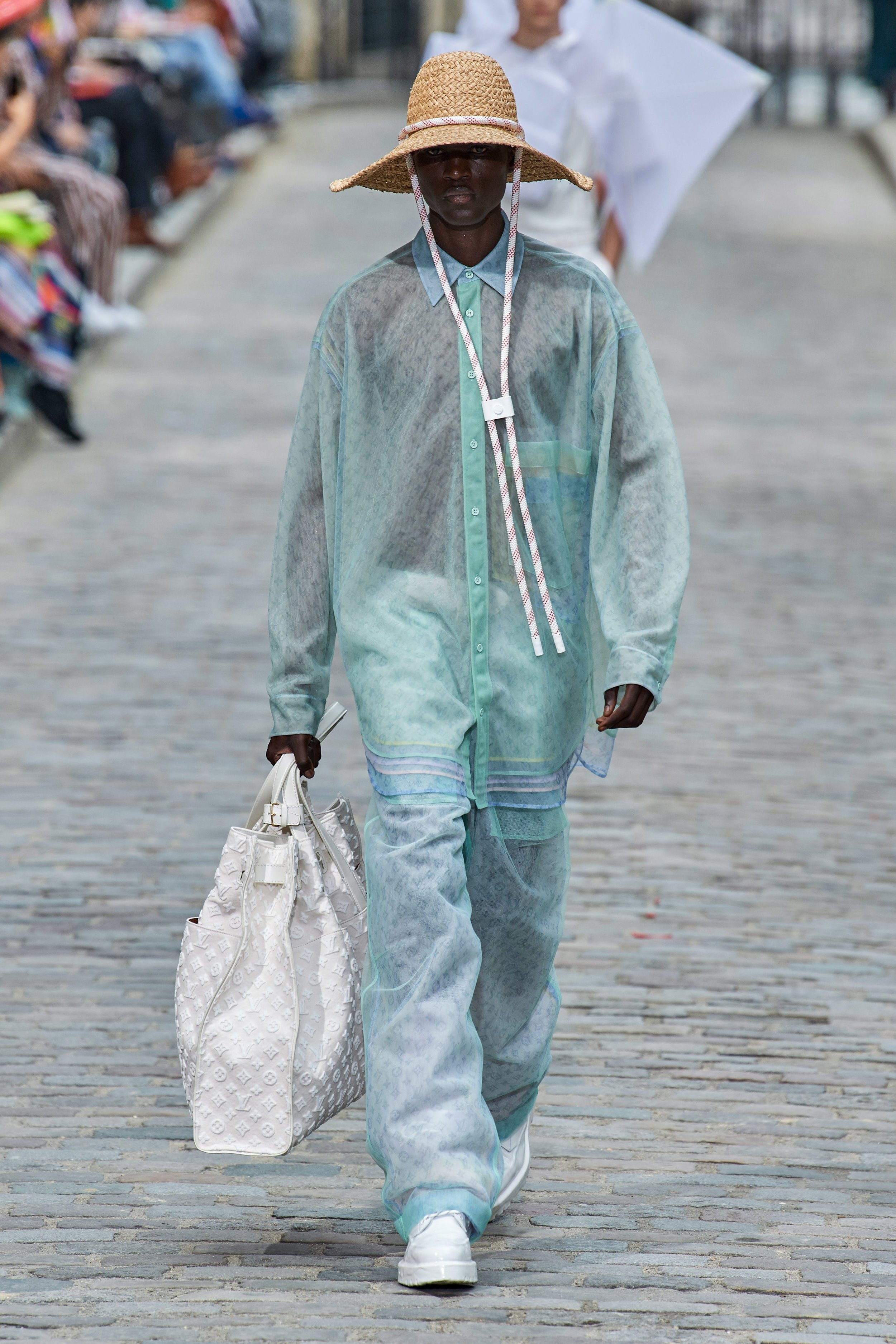
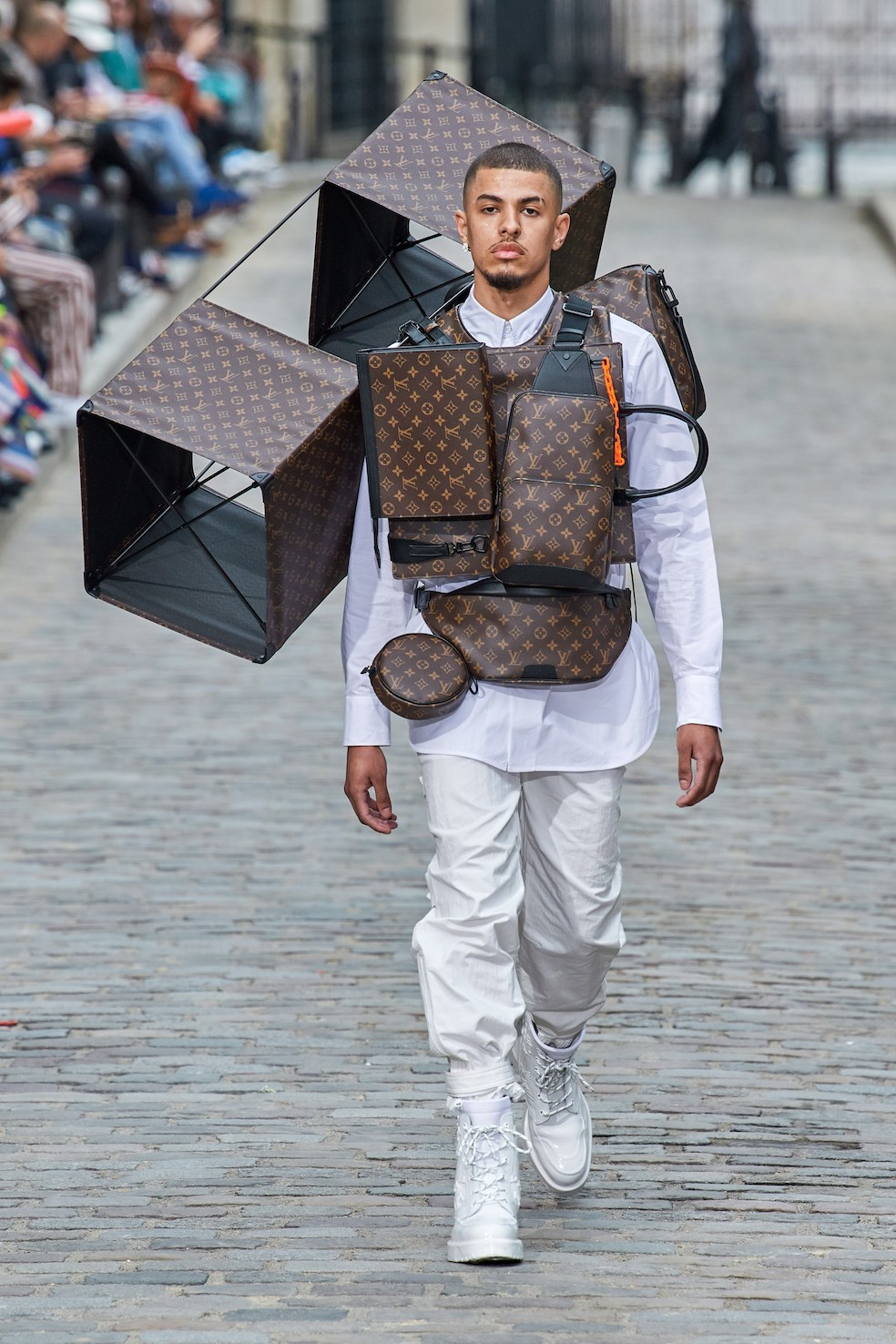

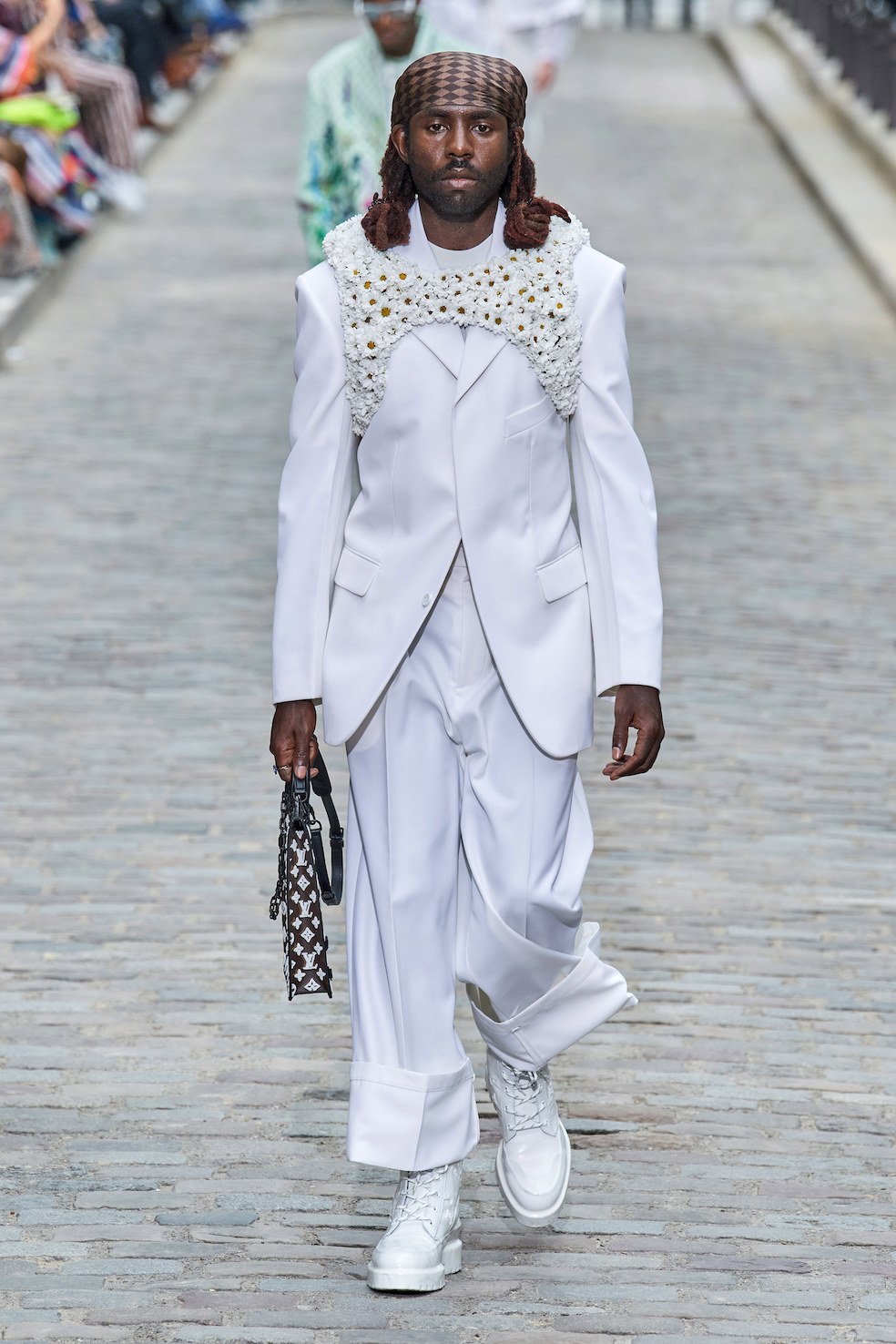
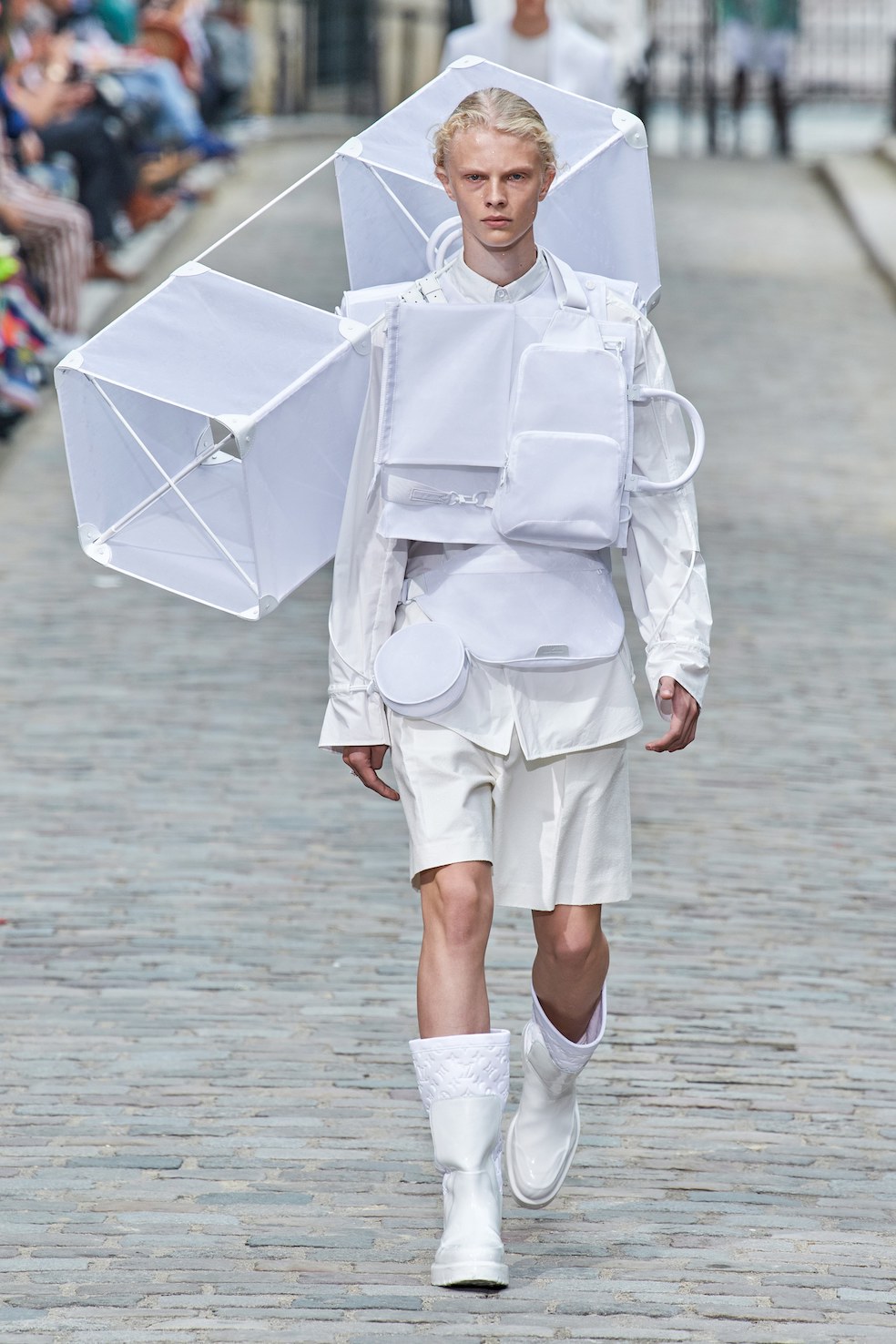
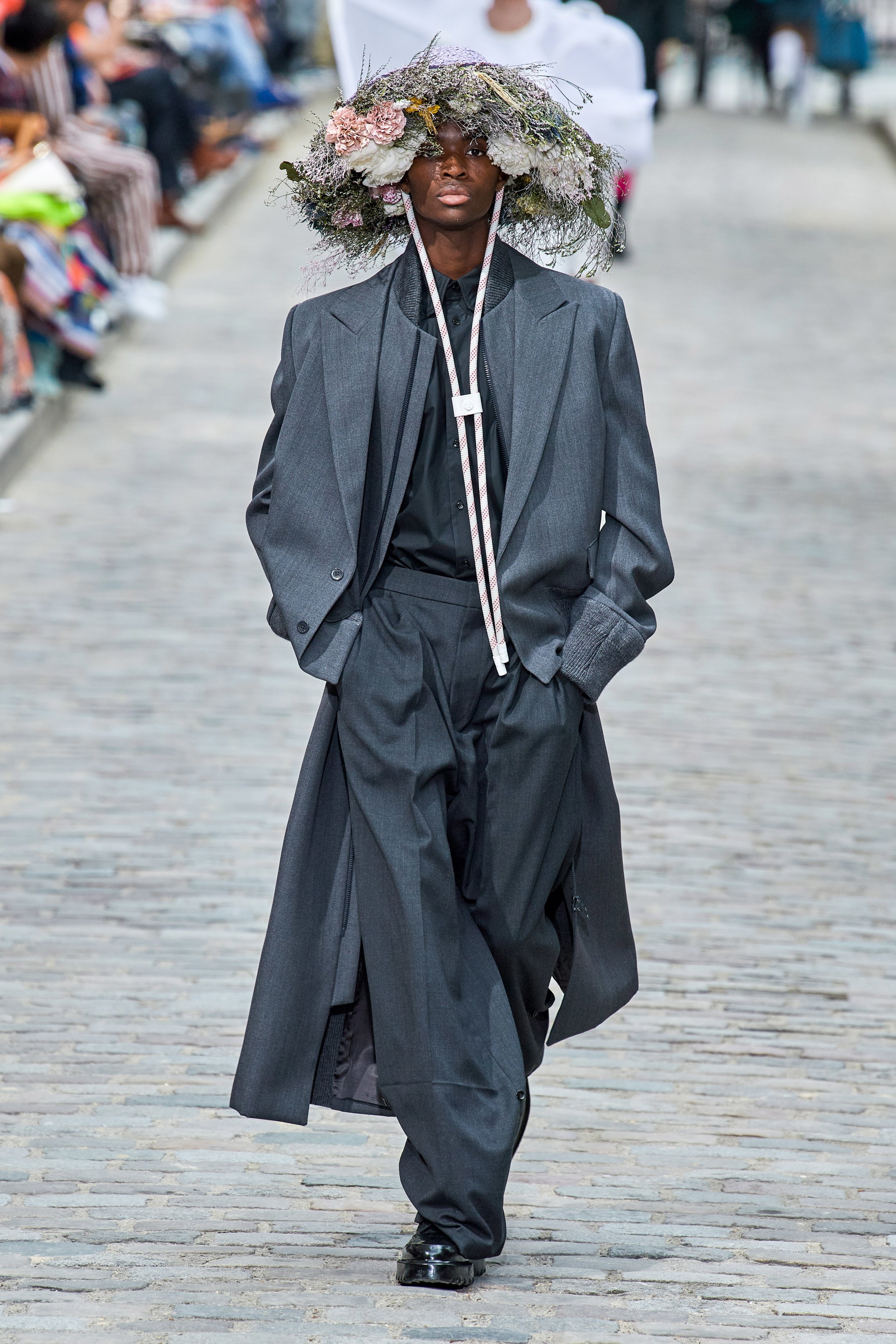

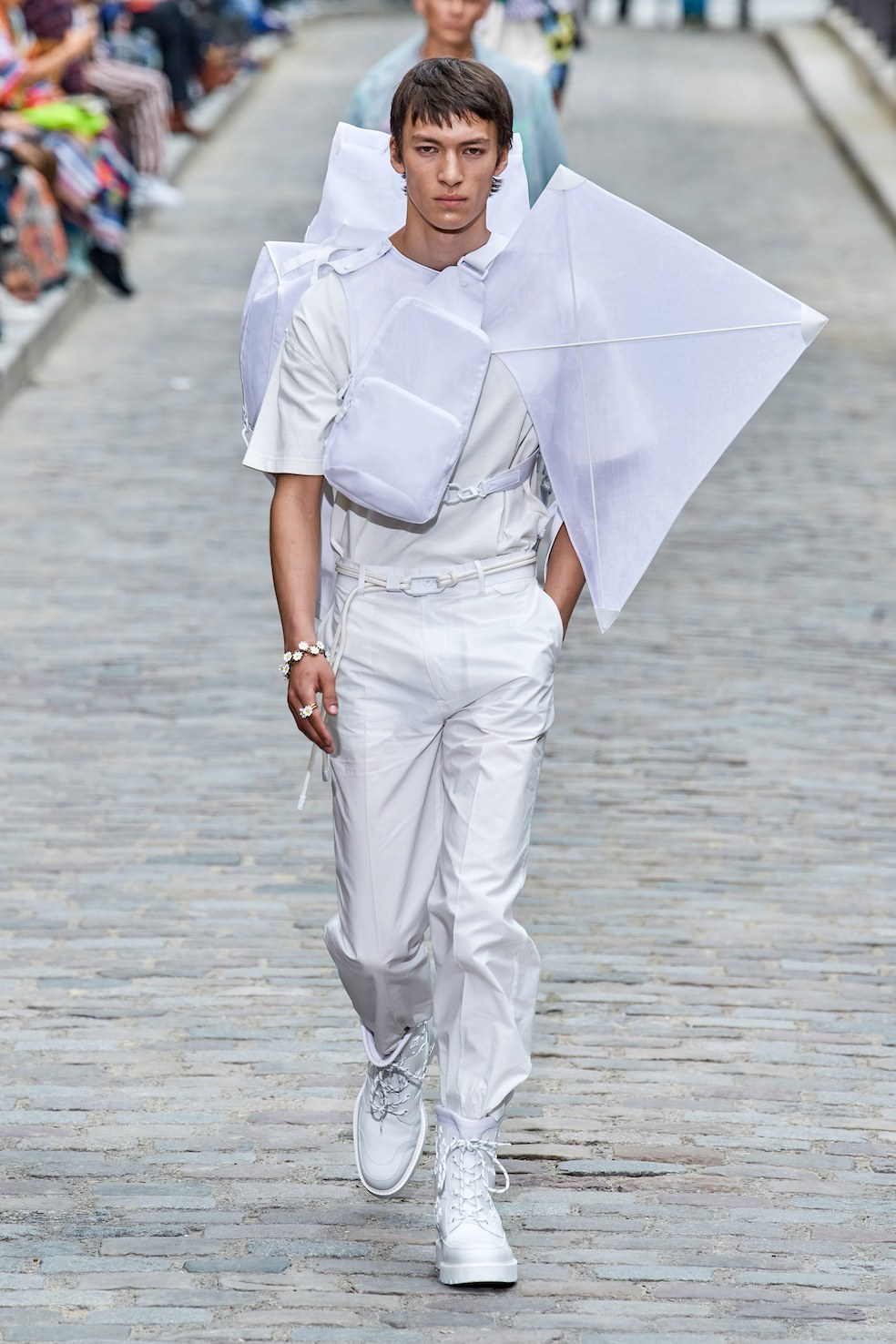
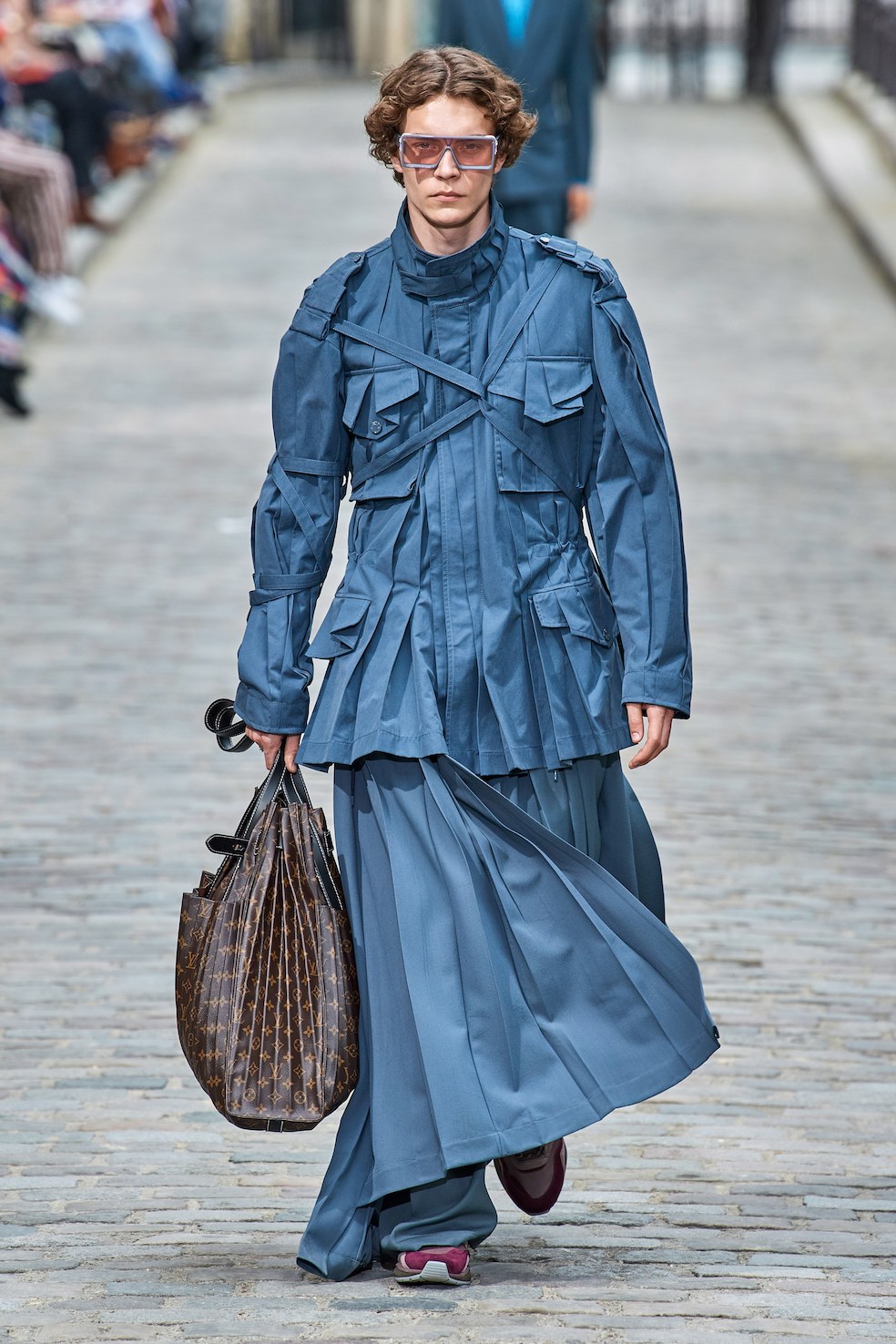




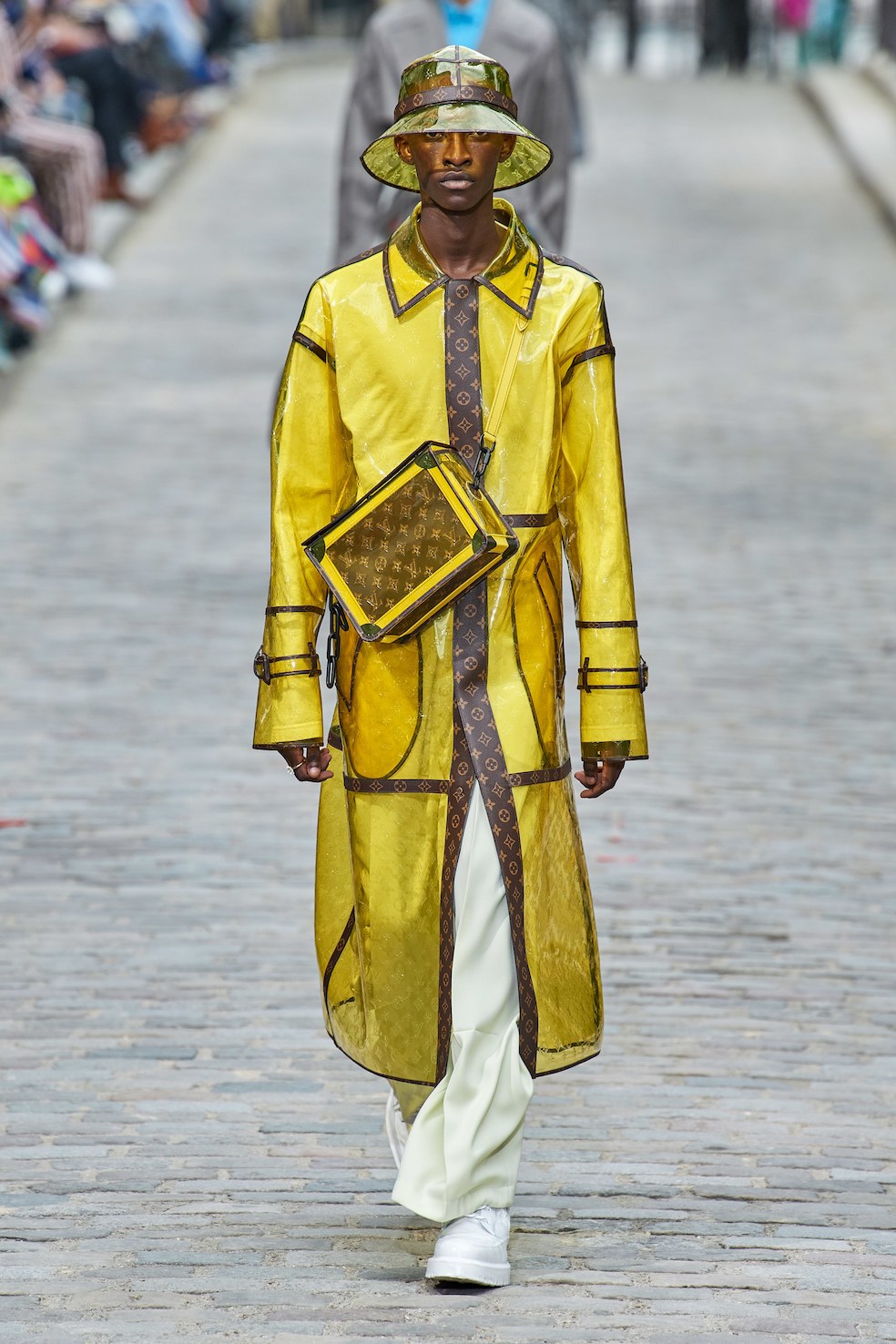
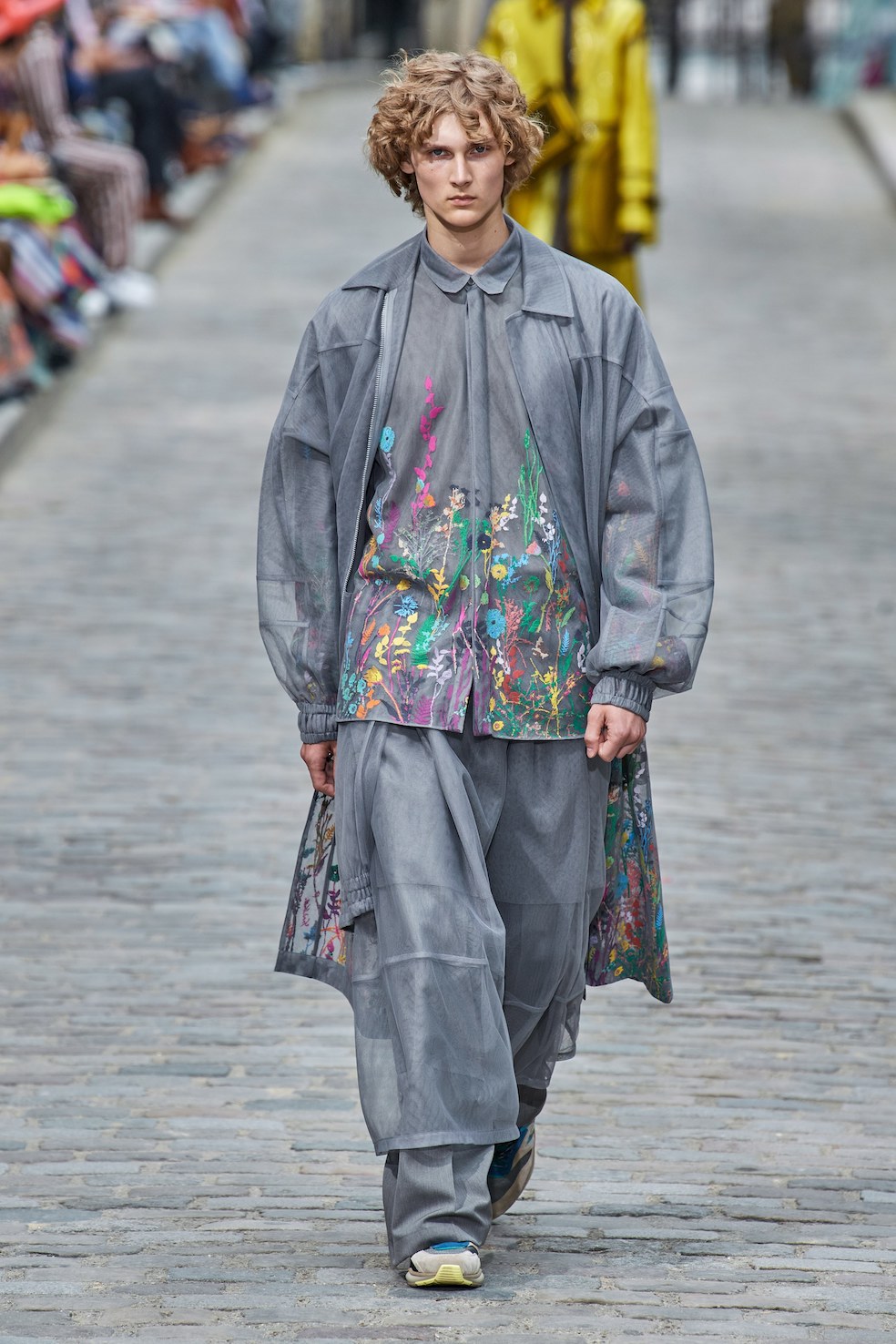

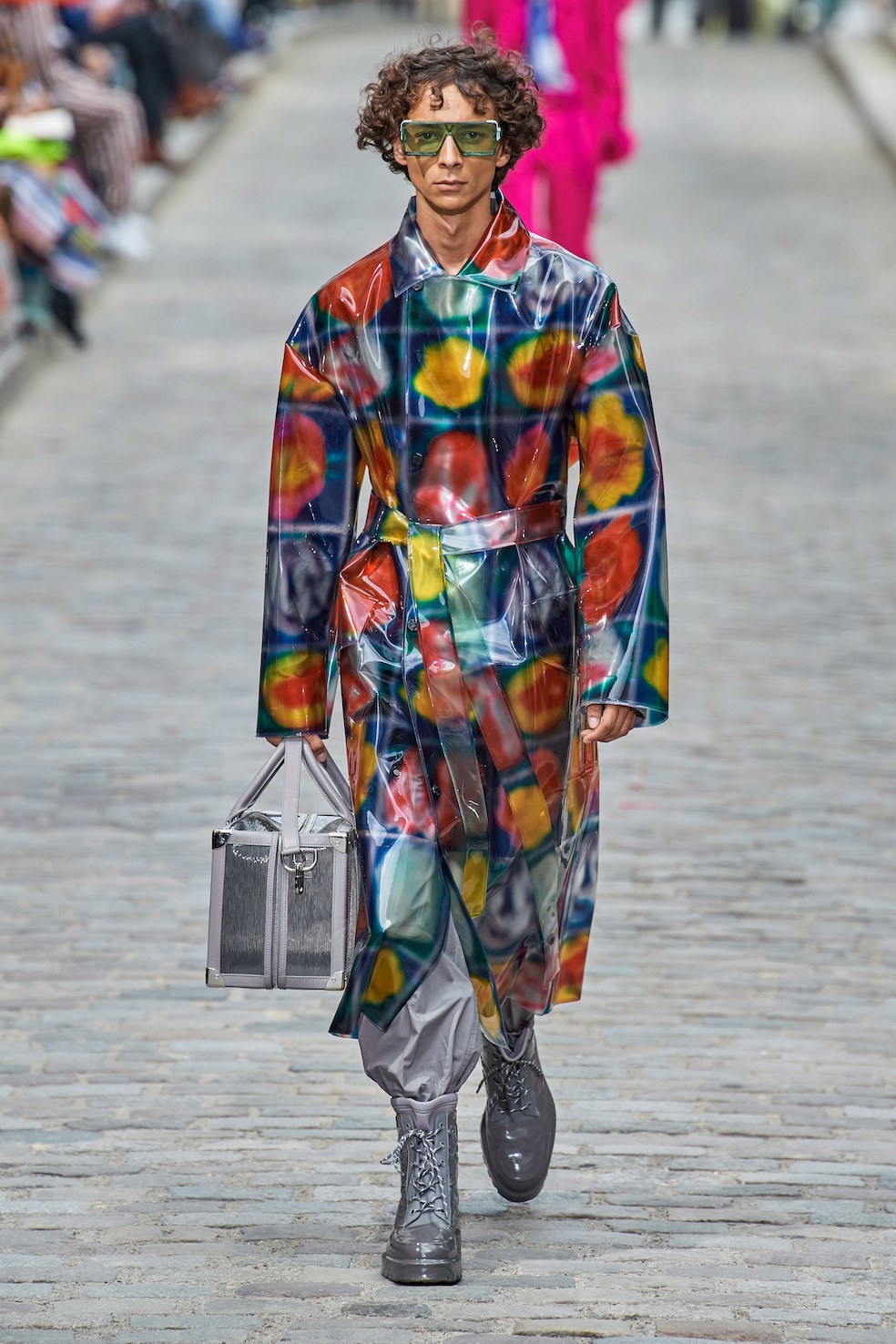
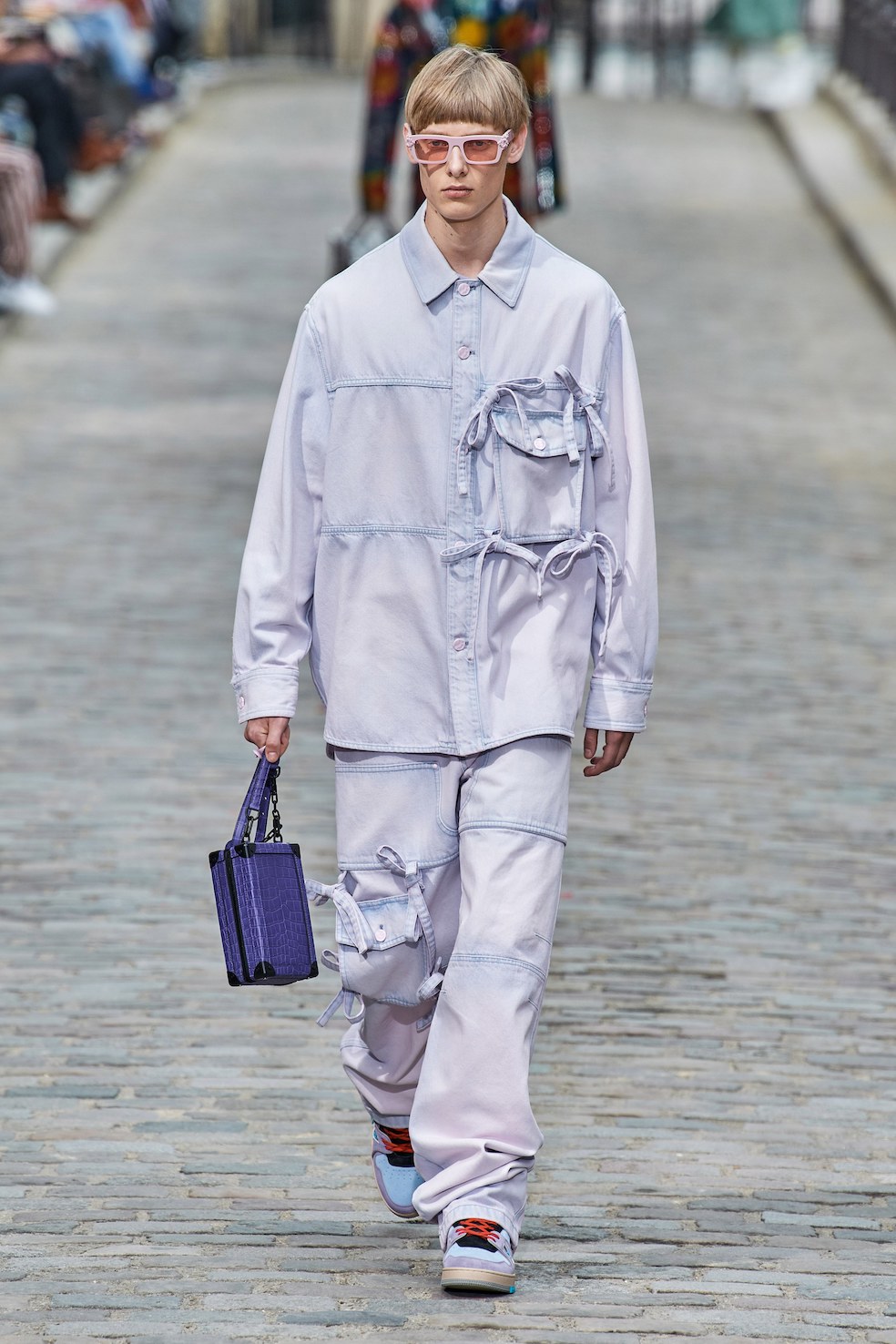

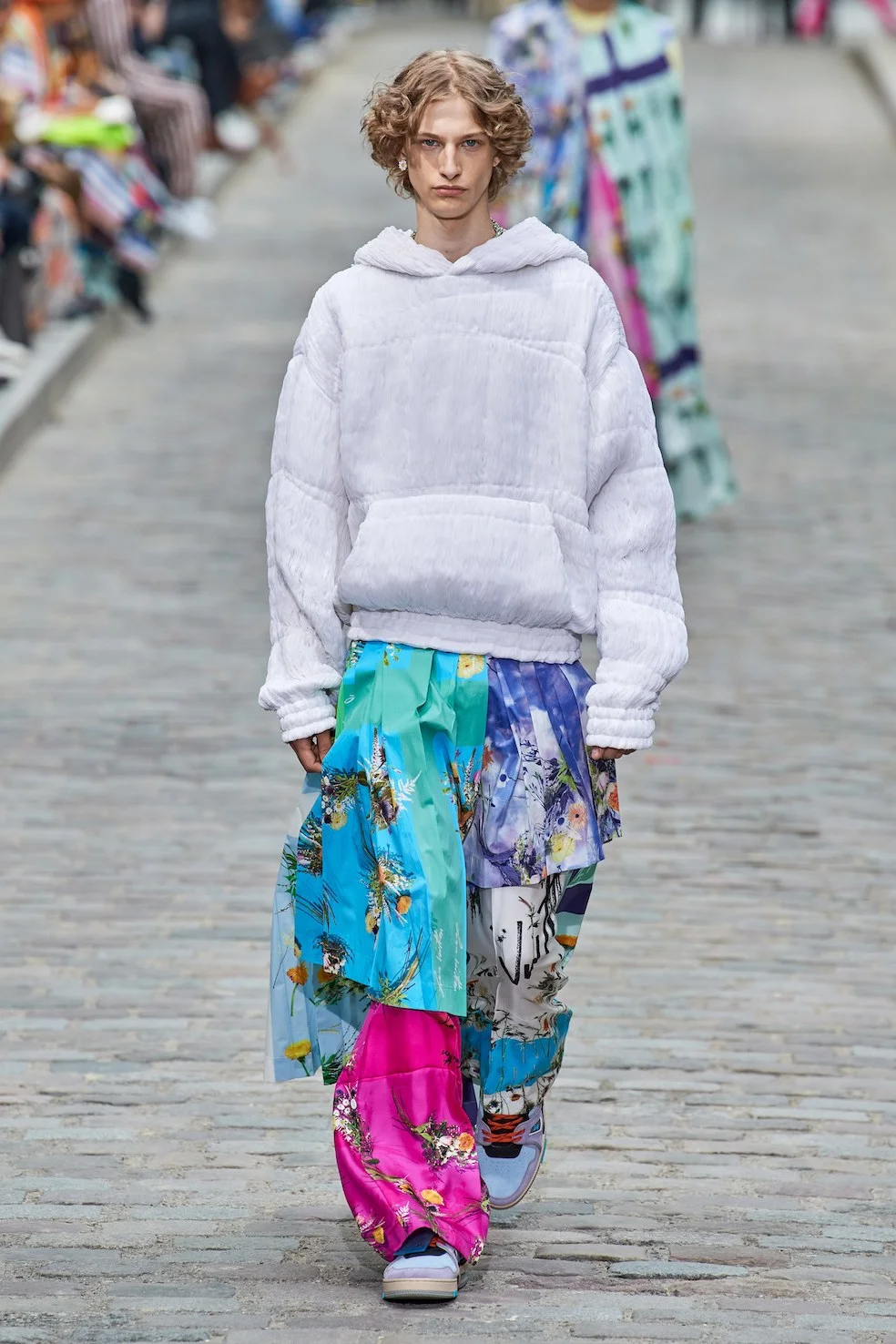
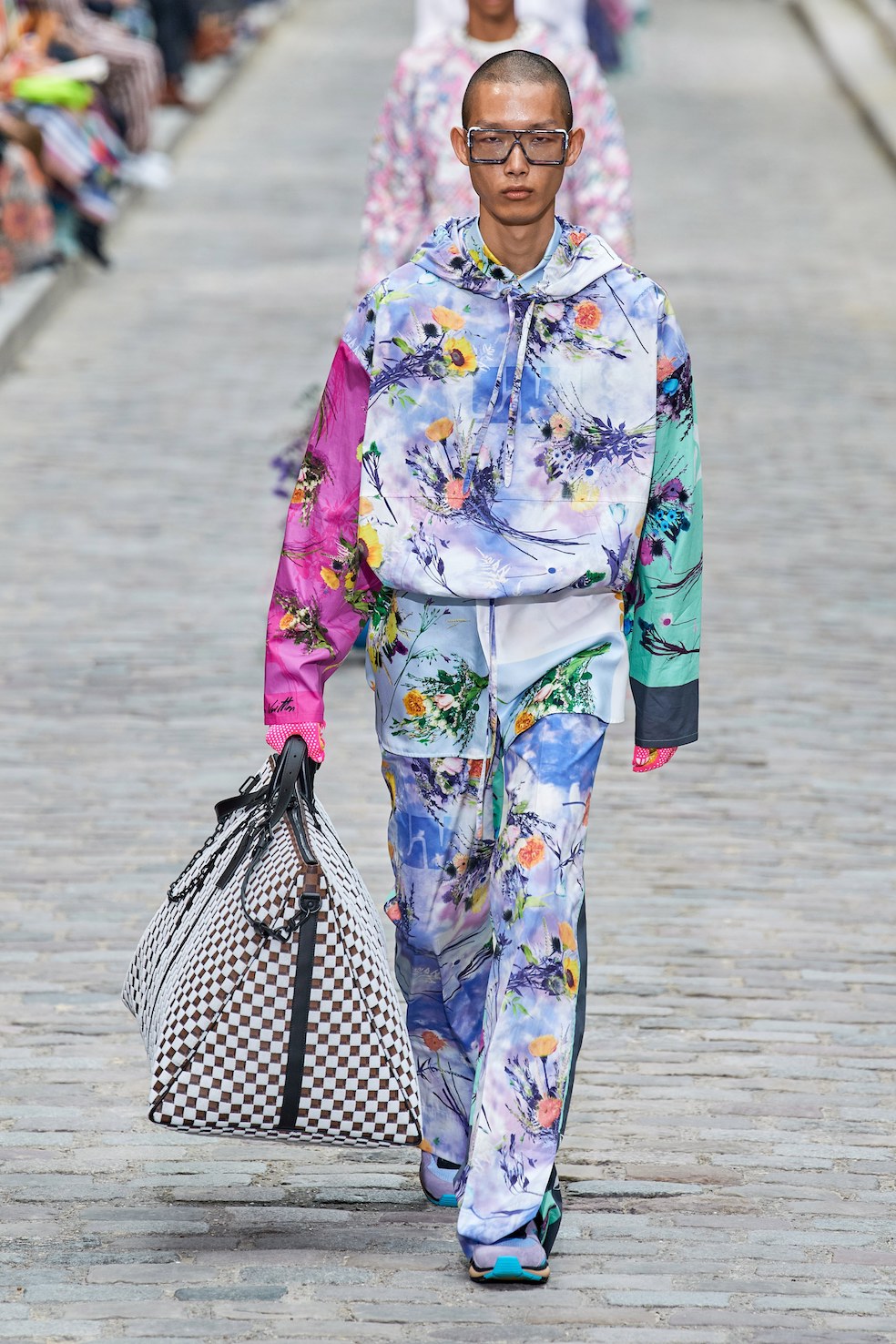
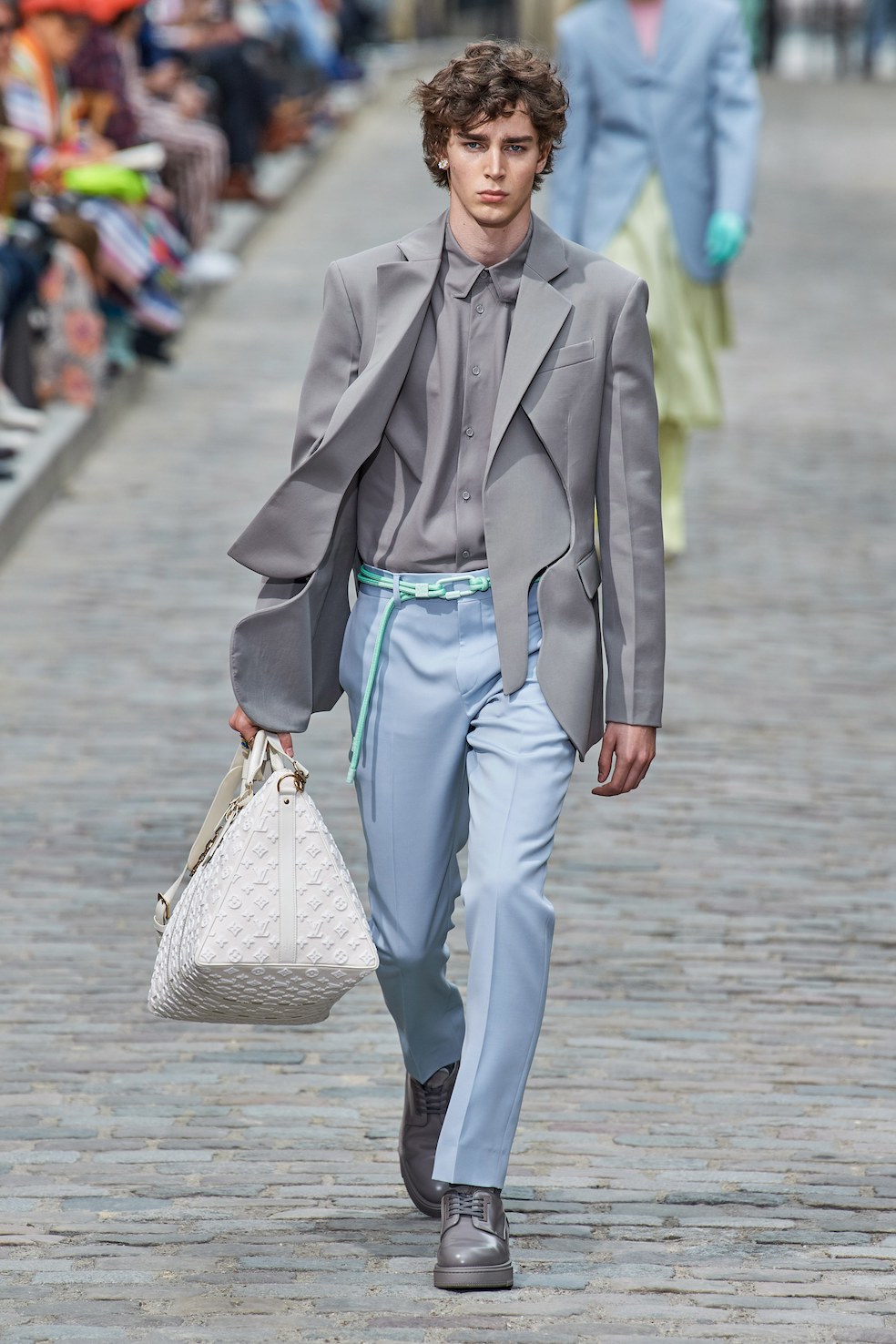
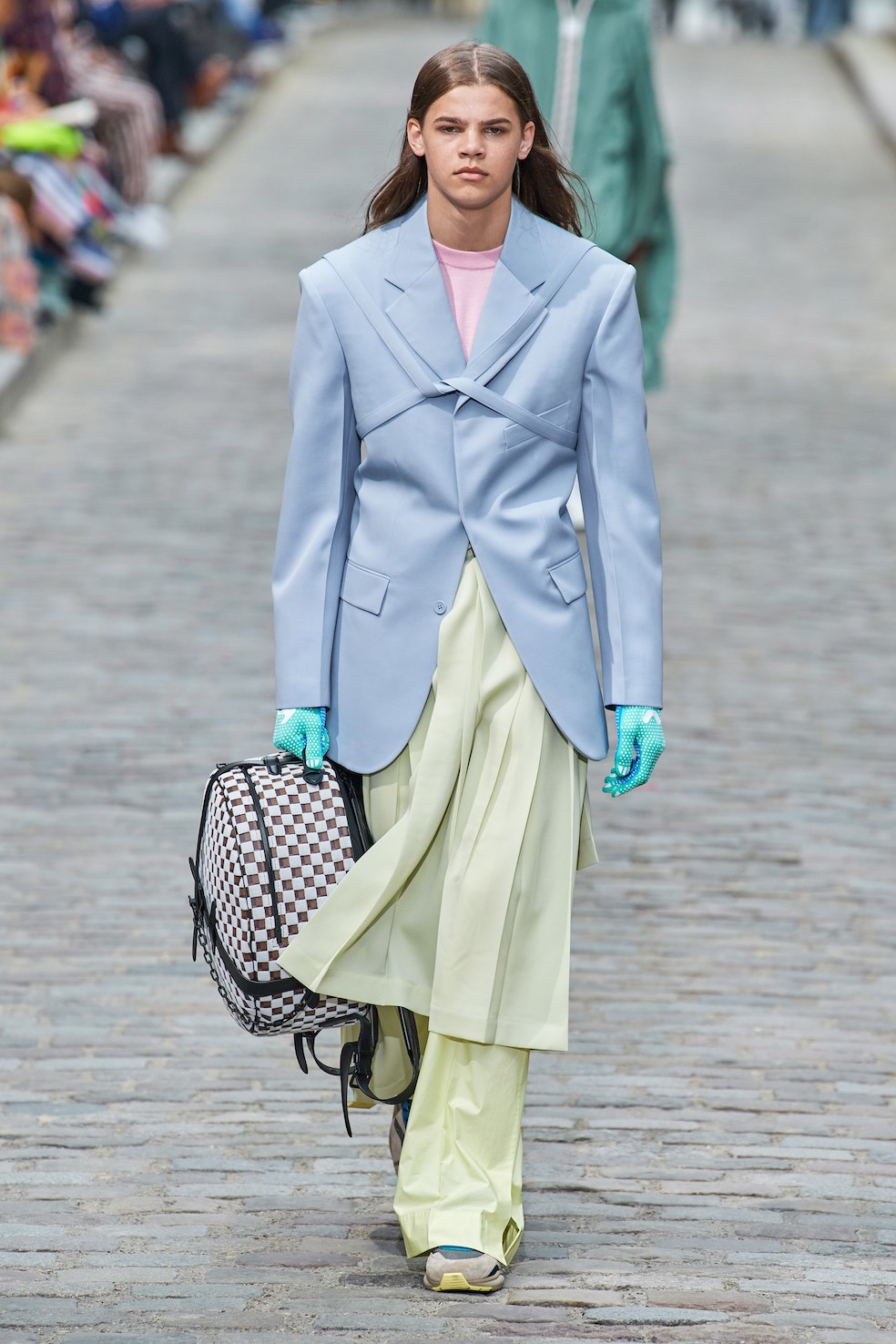

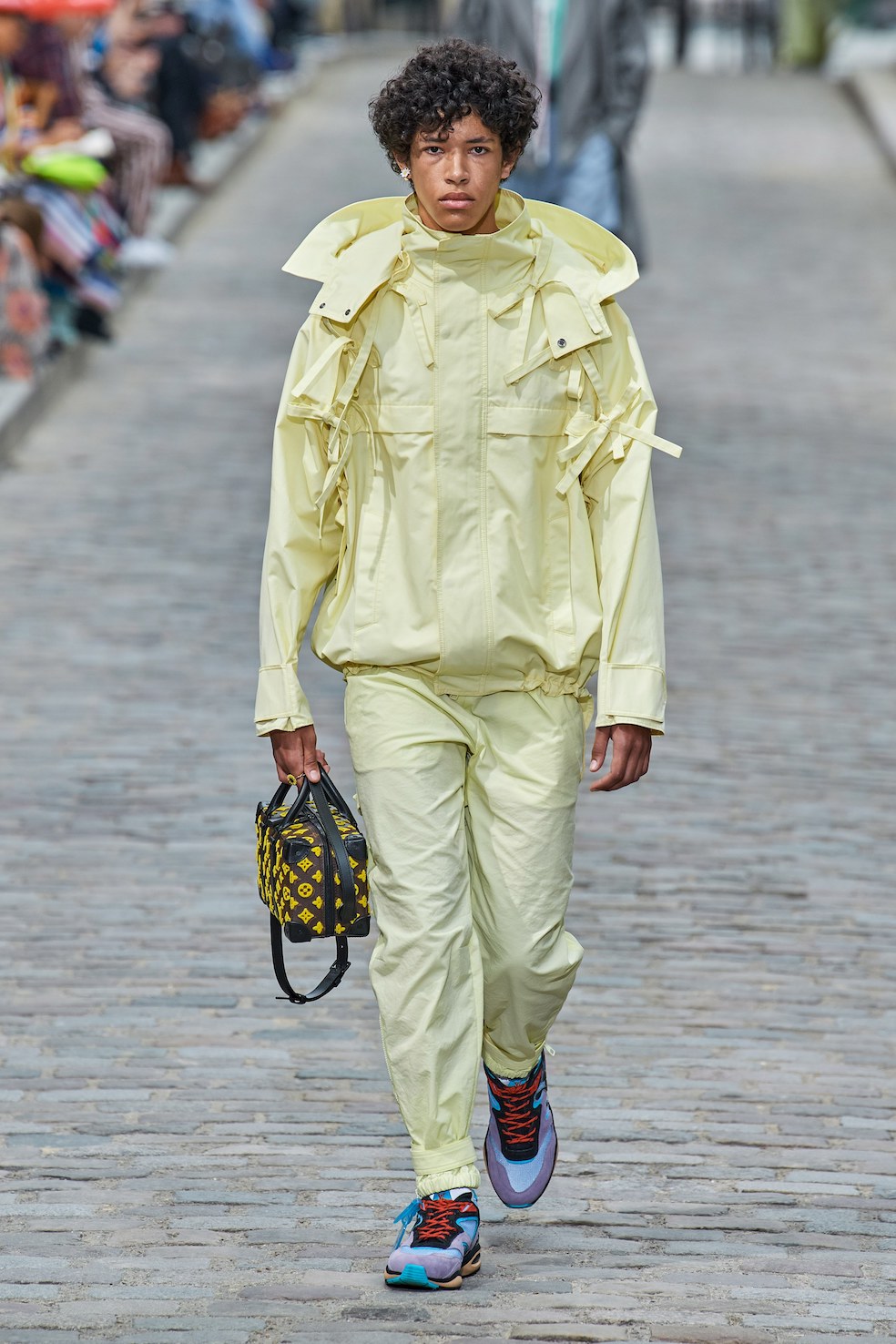
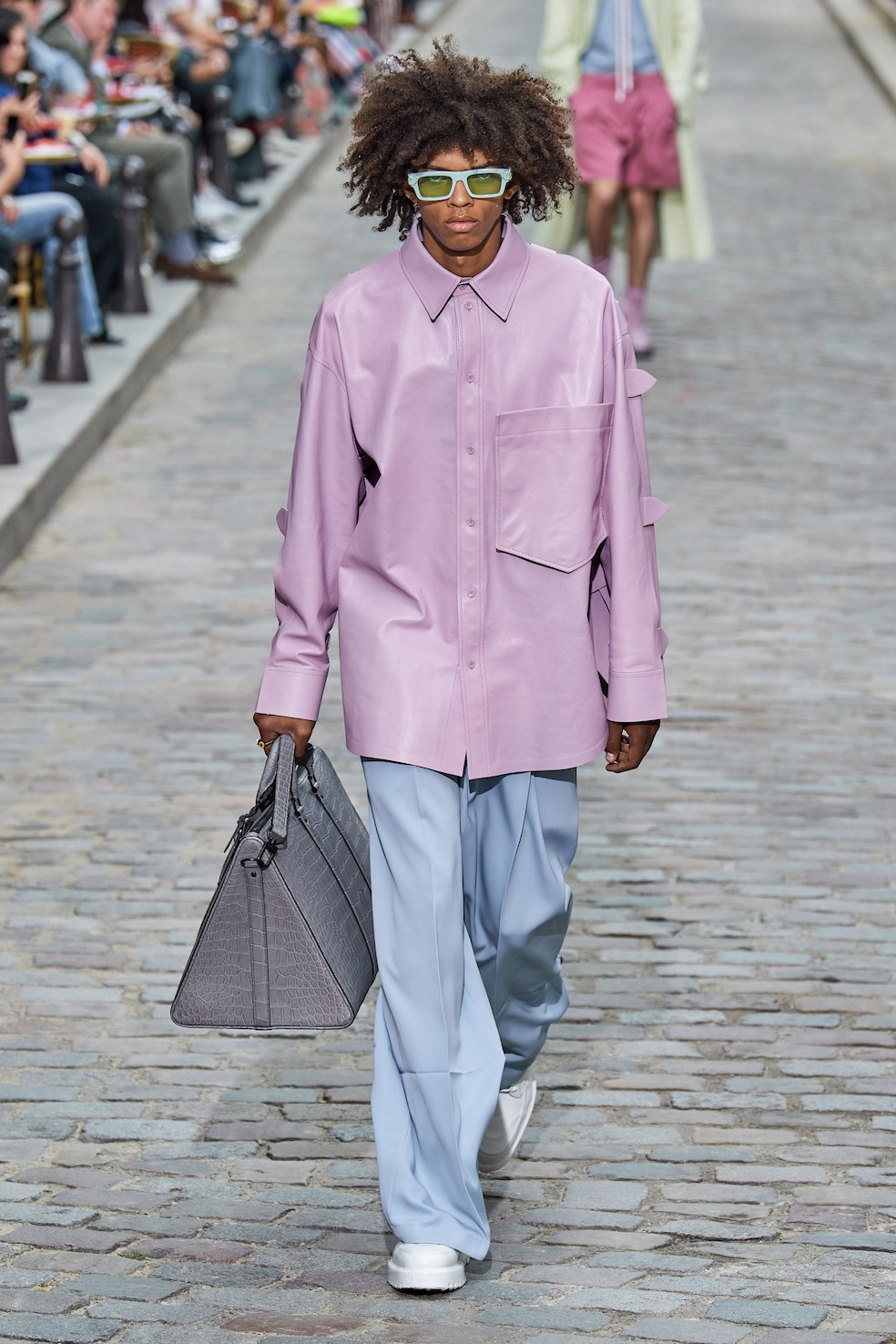
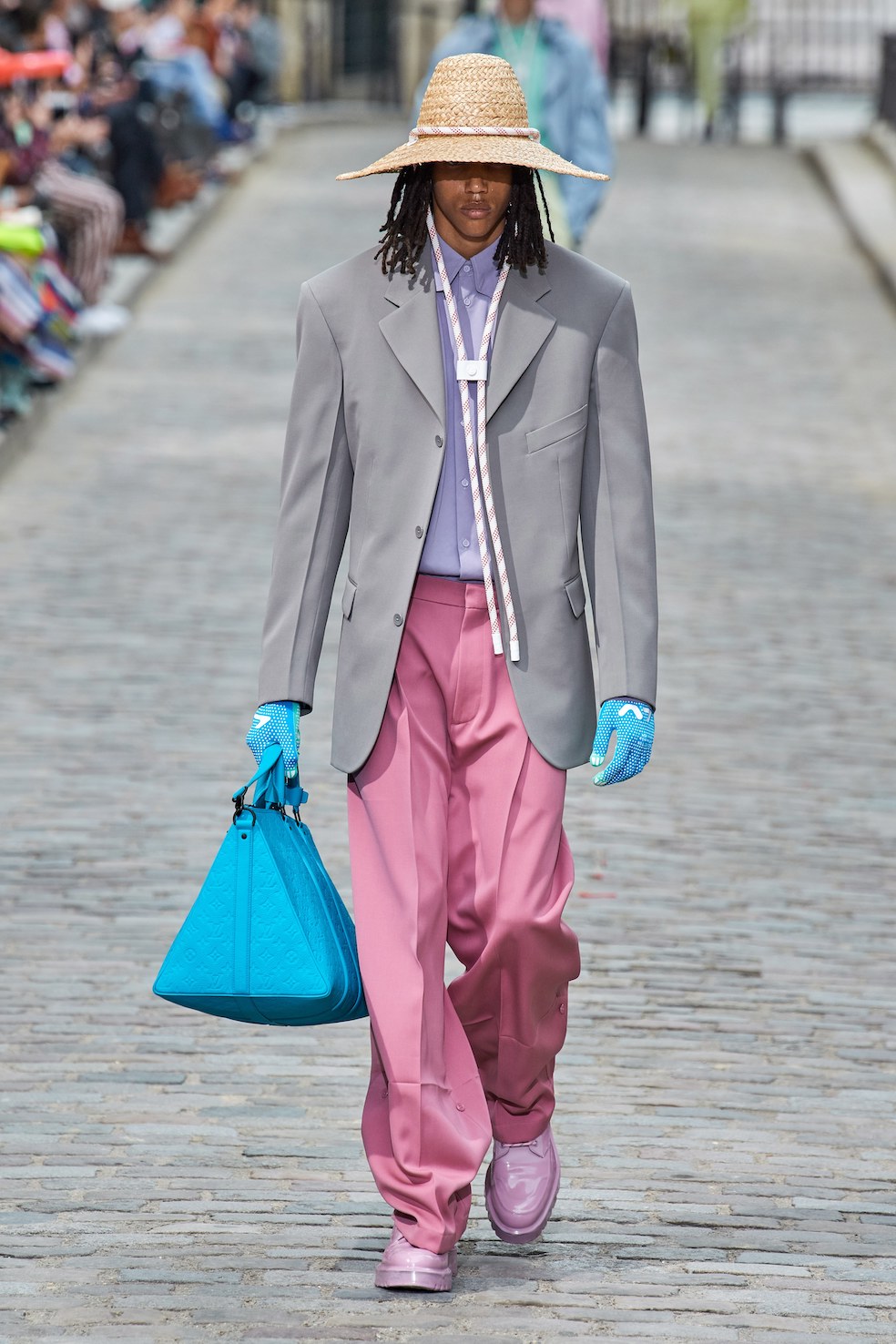
…
/ Words by Philippe Pourhashemi /
// RAW ARTISTRY AT S.R. Studio. LA. CA. //
One of the key highlights of this anniversary edition of Pitti Uomo in Florence, Sterling Ruby’s debut show had the right mix of refinement, primitivism and boldness, with striking use of patchwork, bleaching and printing. Turns out the American artist has been fascinated with clothing since his teenage years and the level of craftsmanship and attention to detail was impressive.
In the 1990s, there were several moments of rapprochement between fashion and art, most famously with Helmut Lang ending on the cover of Artforum in October 1995. Ruby’s show felt like a seminal moment, too, giving his presentation the edge of a performance. There was a nomadic and savage feeling in his silhouette, from prairie-inspired frocks to asymmetrical ponchos, worn with matching loose pants. A fully bleached pink denim ensemble, composed of a shirt and matching jeans, looked sharp and relevant, while woven knits and faux-fur trimmed separates had a naive and innocent charm.
Rich in textures, colors and contrasting volumes, the collection had real energy, which the audience felt straight away. The American artist will not go for the seasonal format, but it seems that he will return with a second collection at a later stage. He partnered with SSENSE exclusively and the less intricate pieces are now available online. Ruby also managed to feature strong messages on his clothes, which gave us food for thought. A long, elegant black dress, printed with two burning candles, seemed like a beacon of hope for humanity’s future. This was an accomplished proposal and the clothes were instantly desirable.
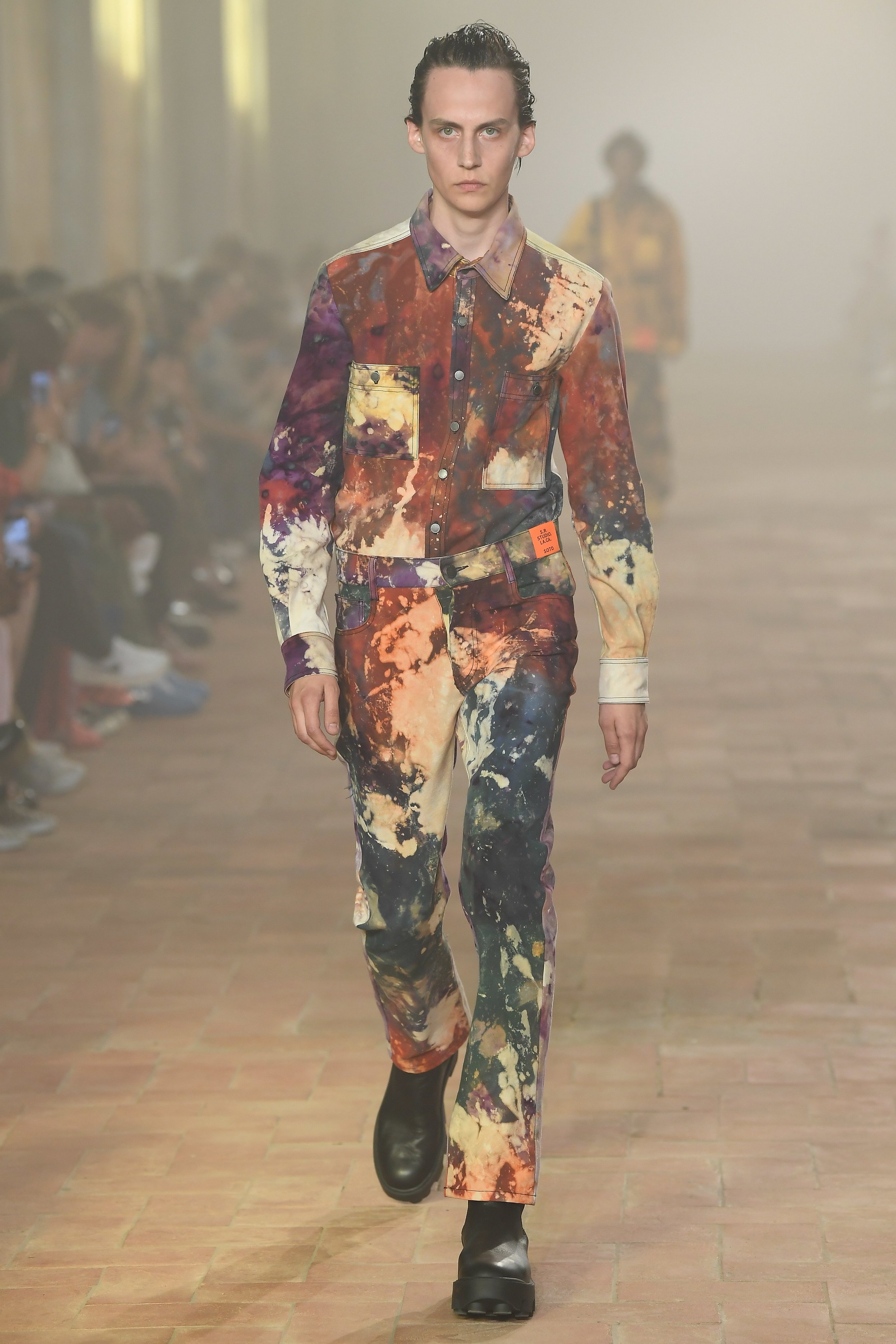
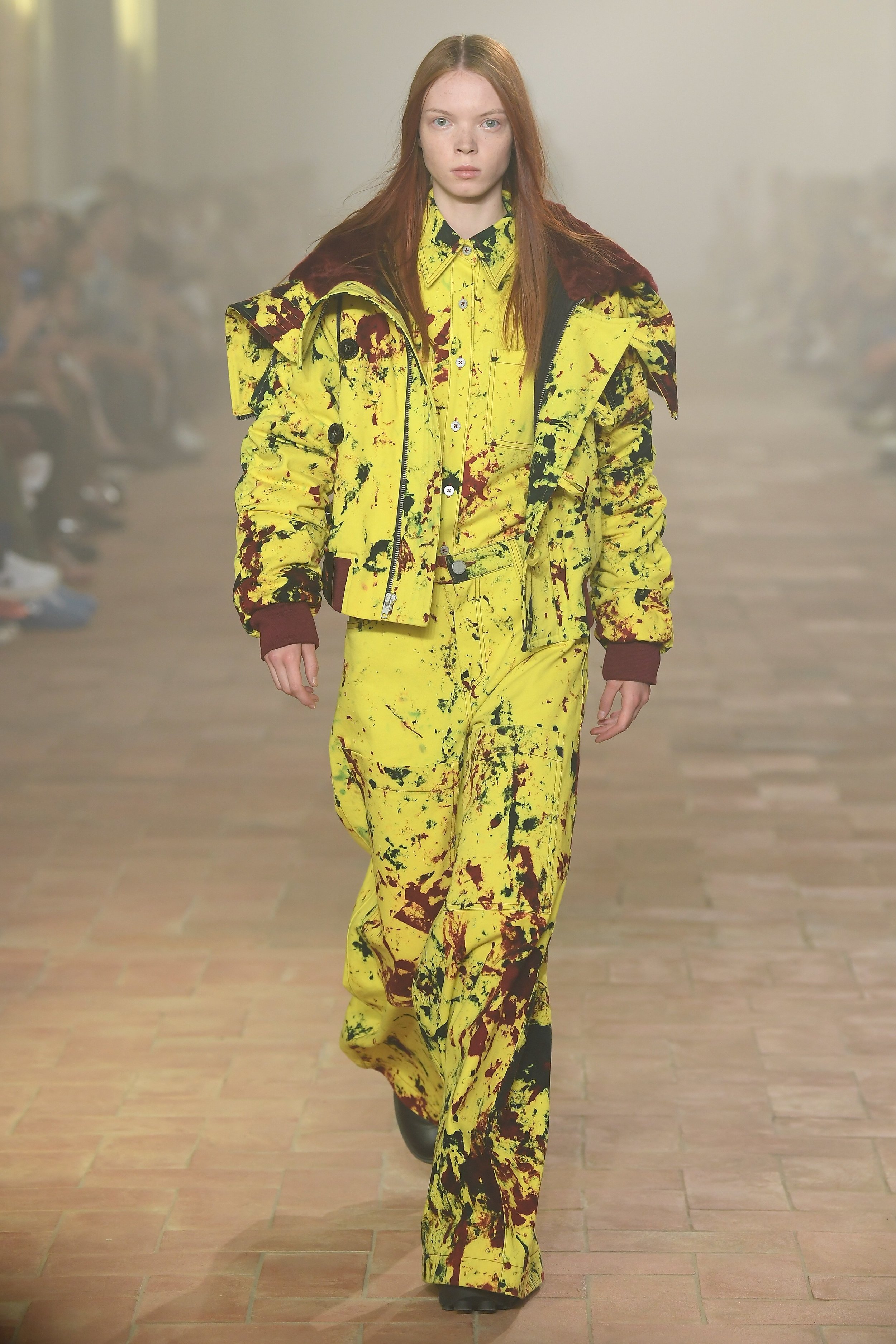
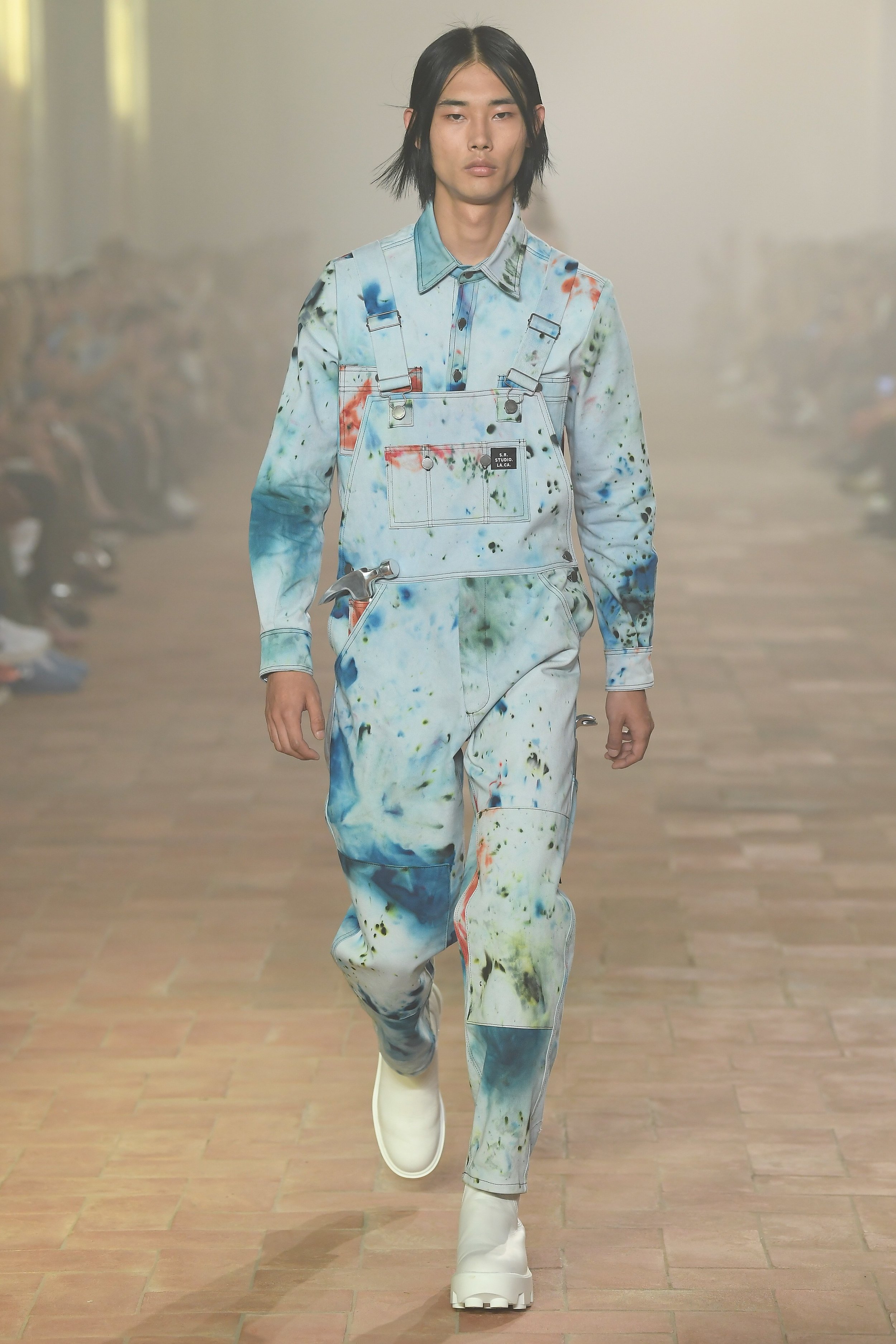
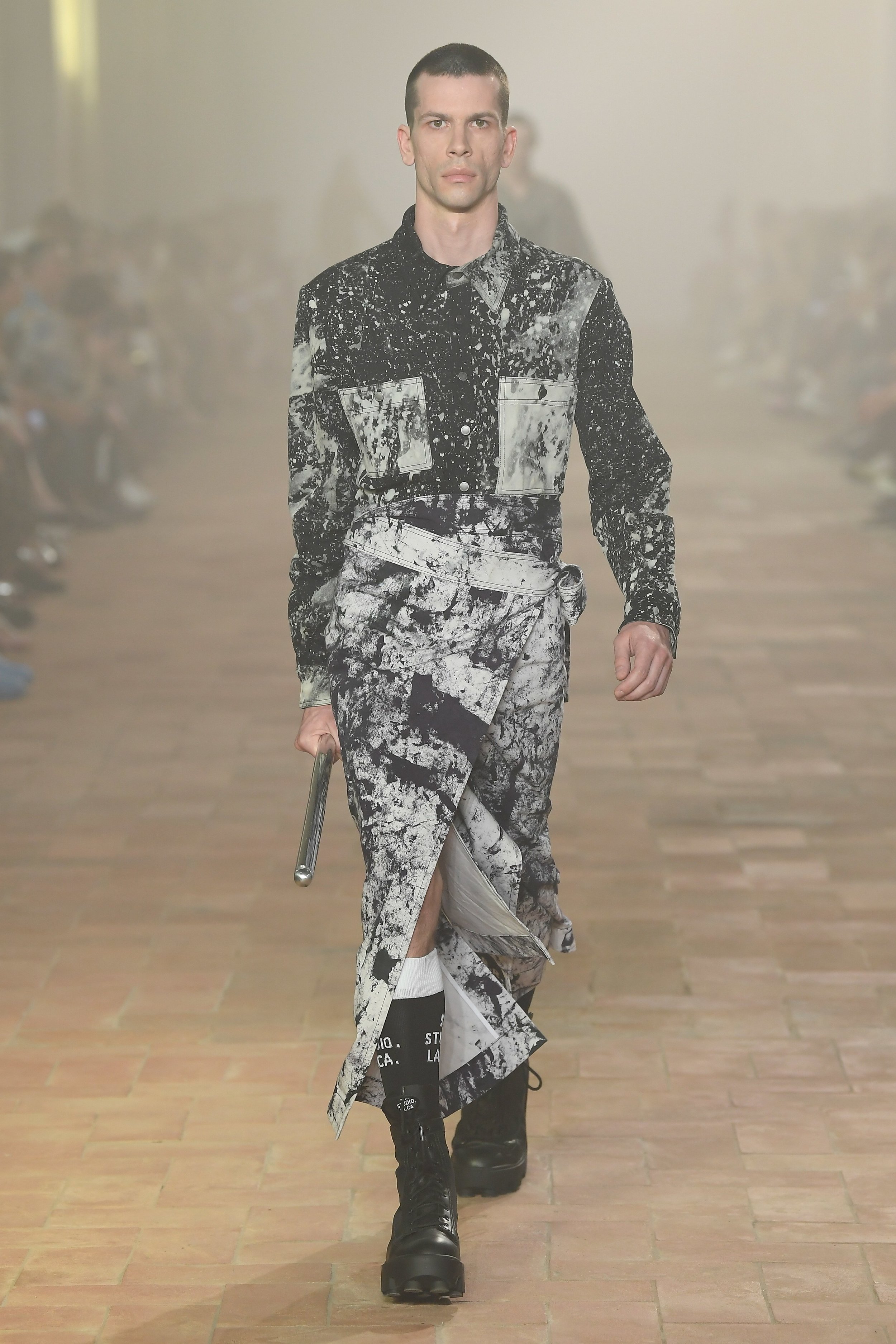
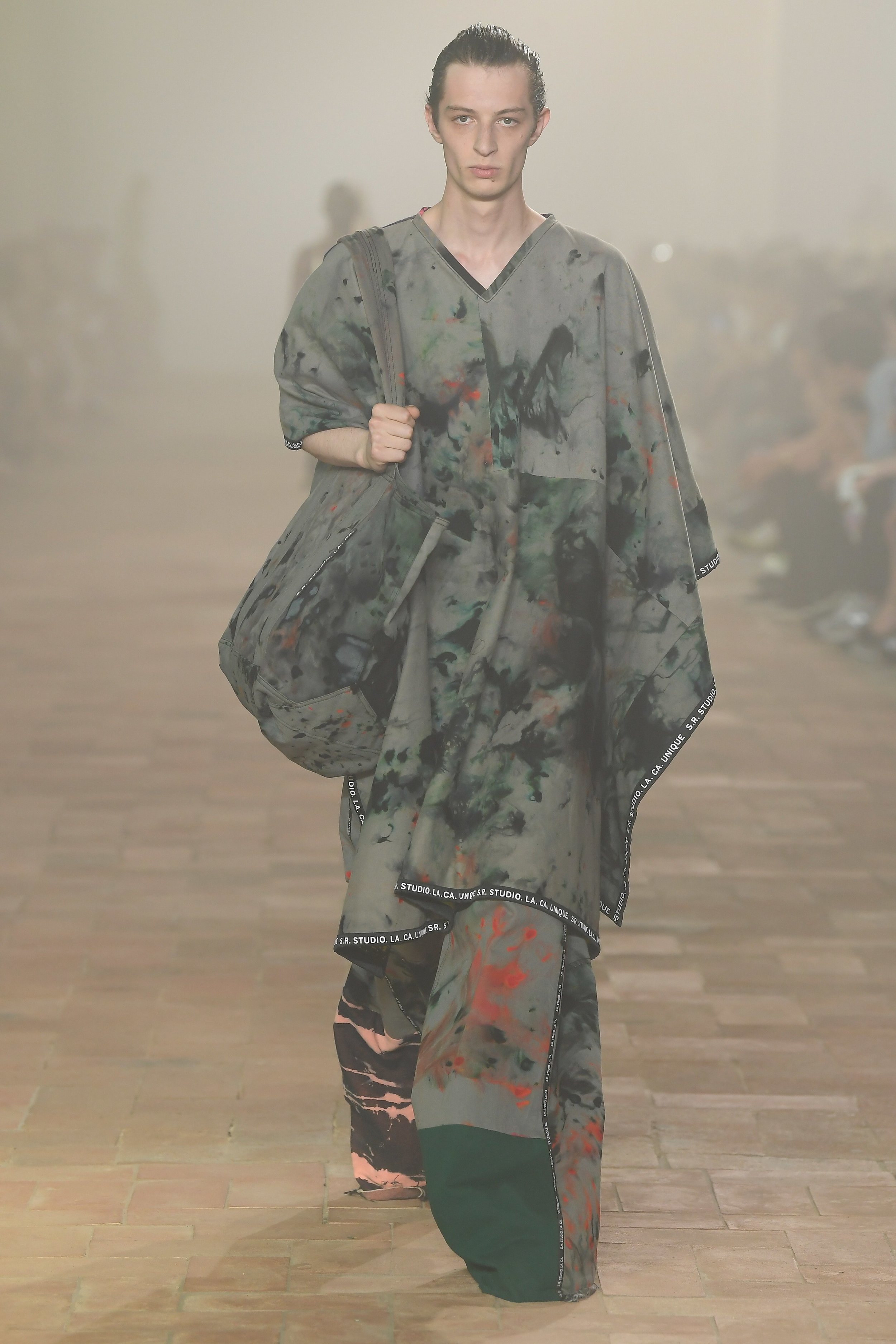
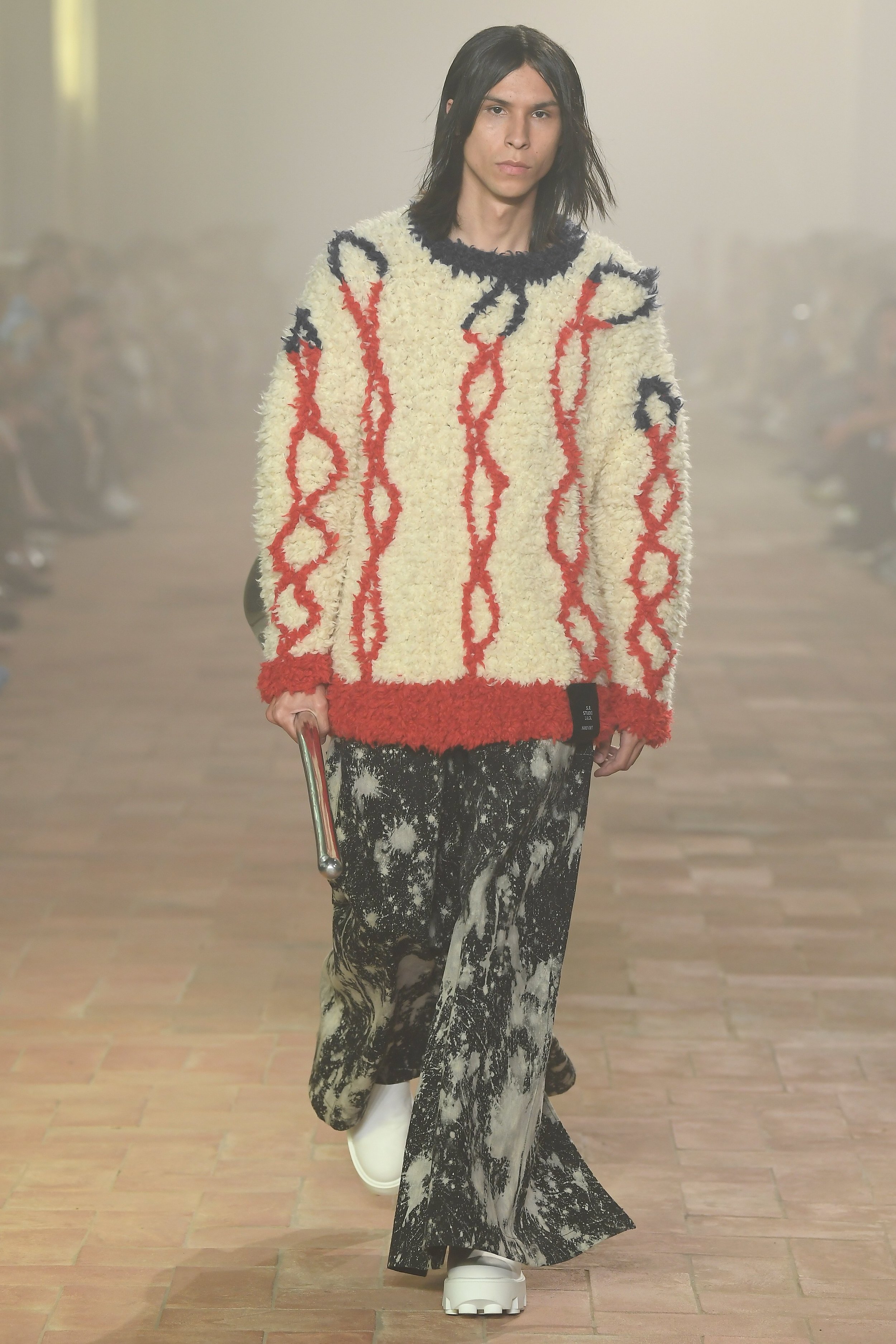
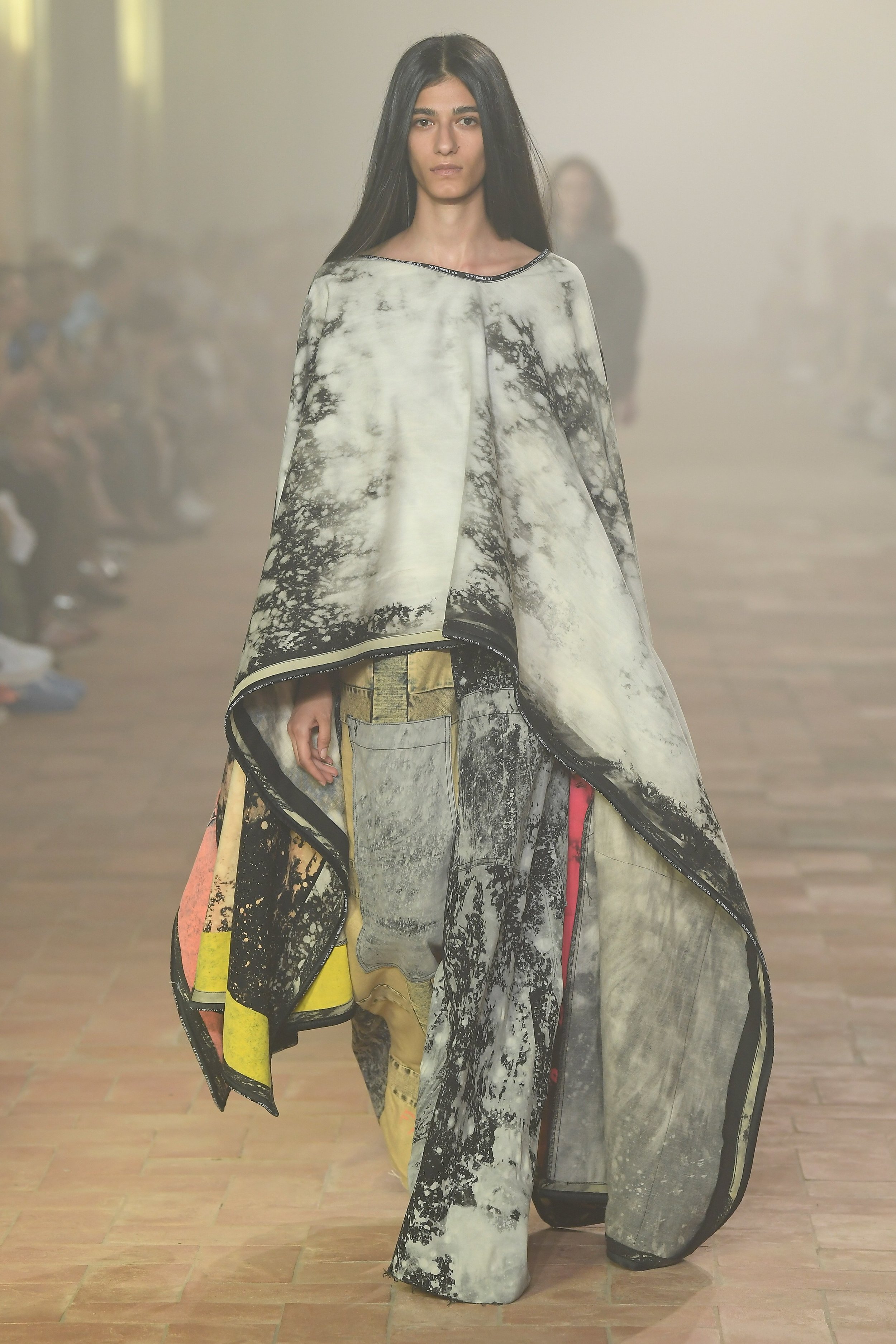
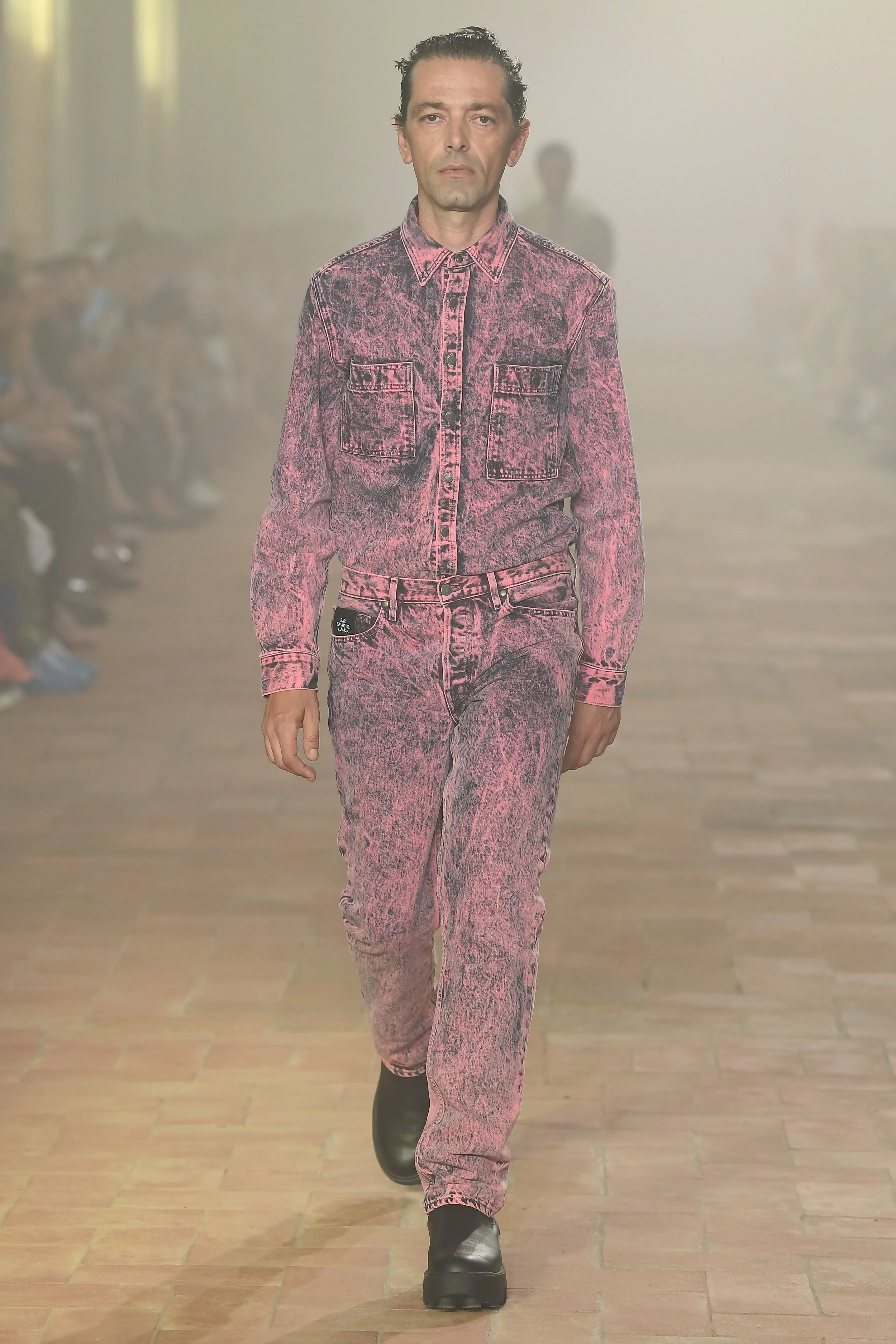
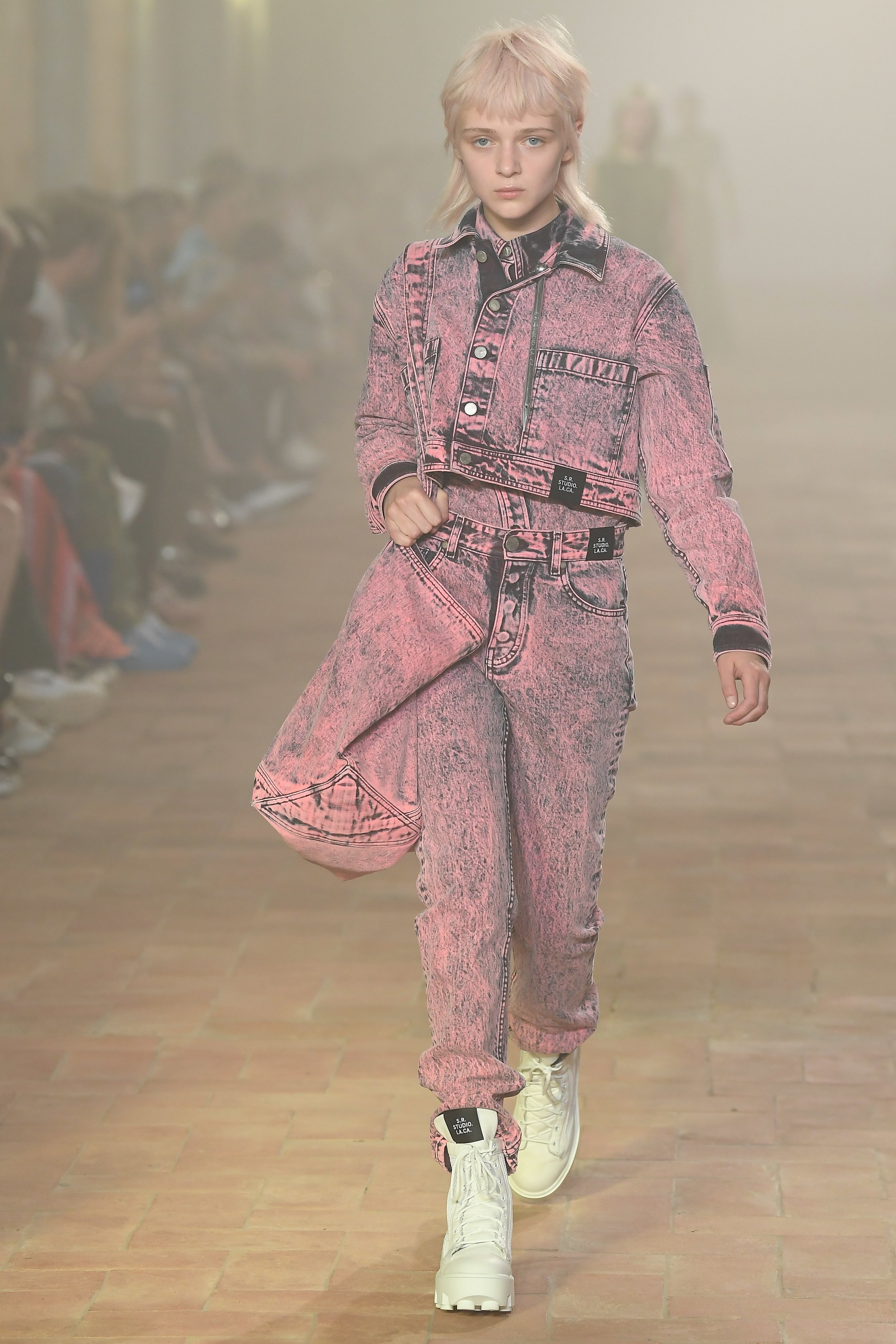
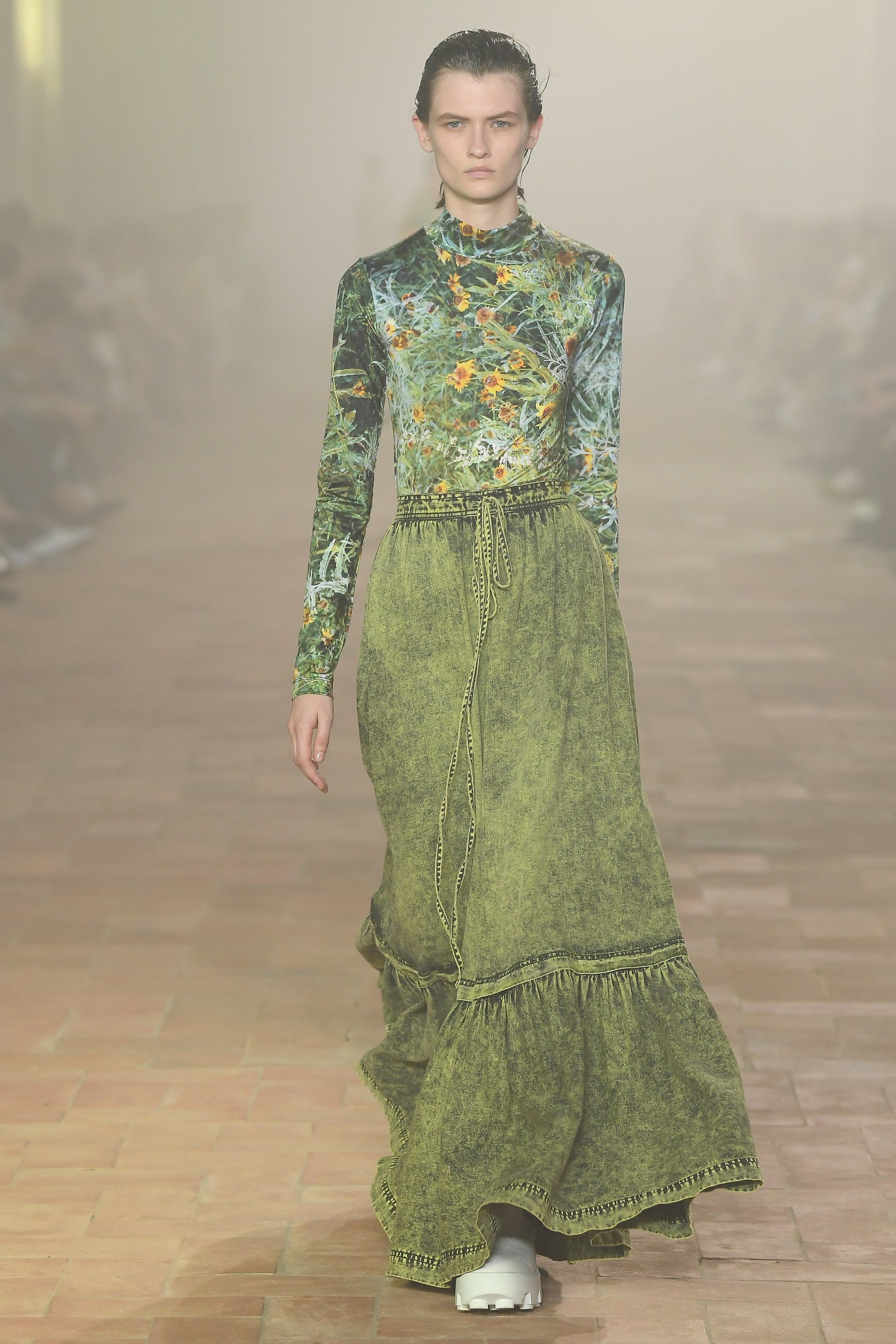
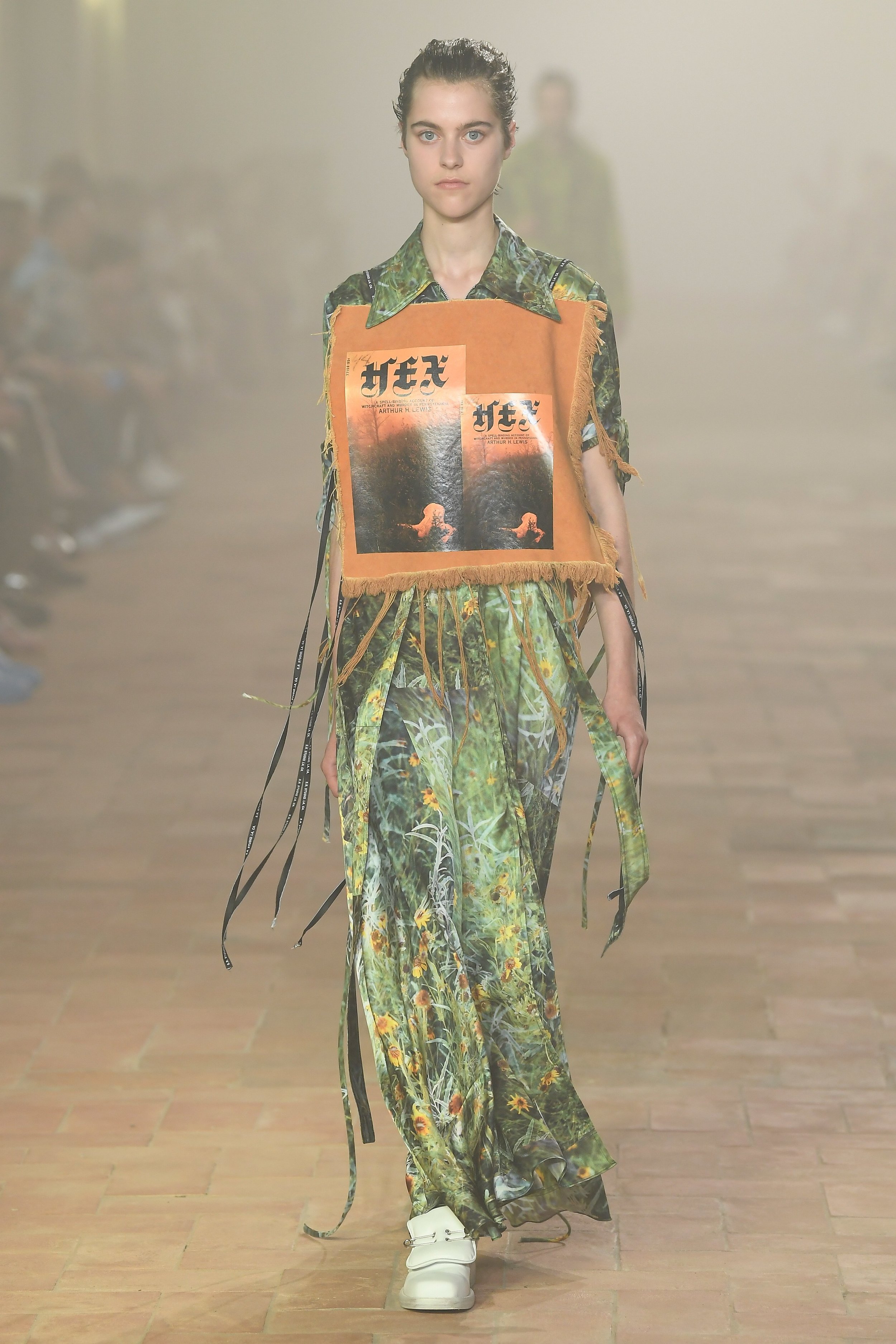
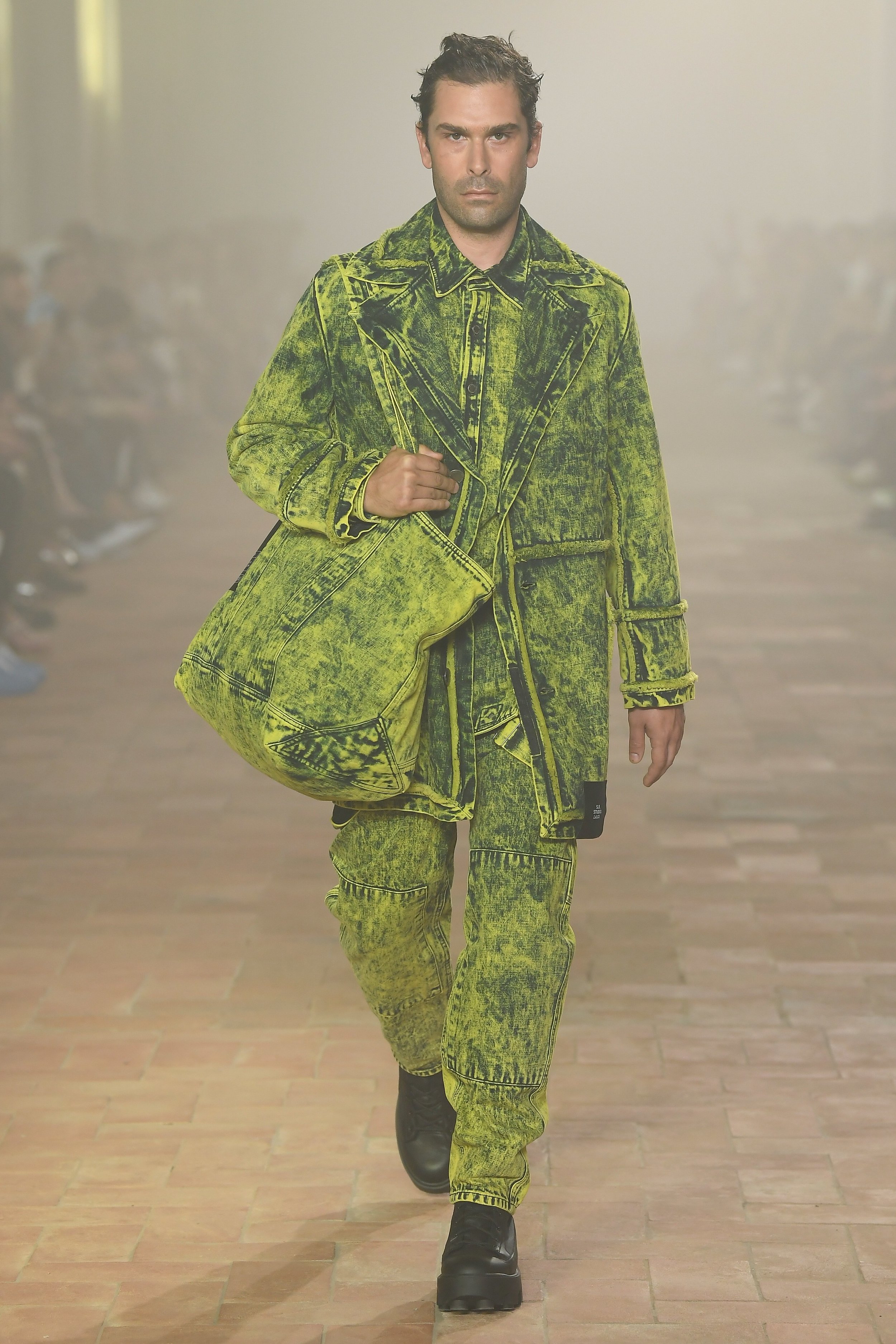
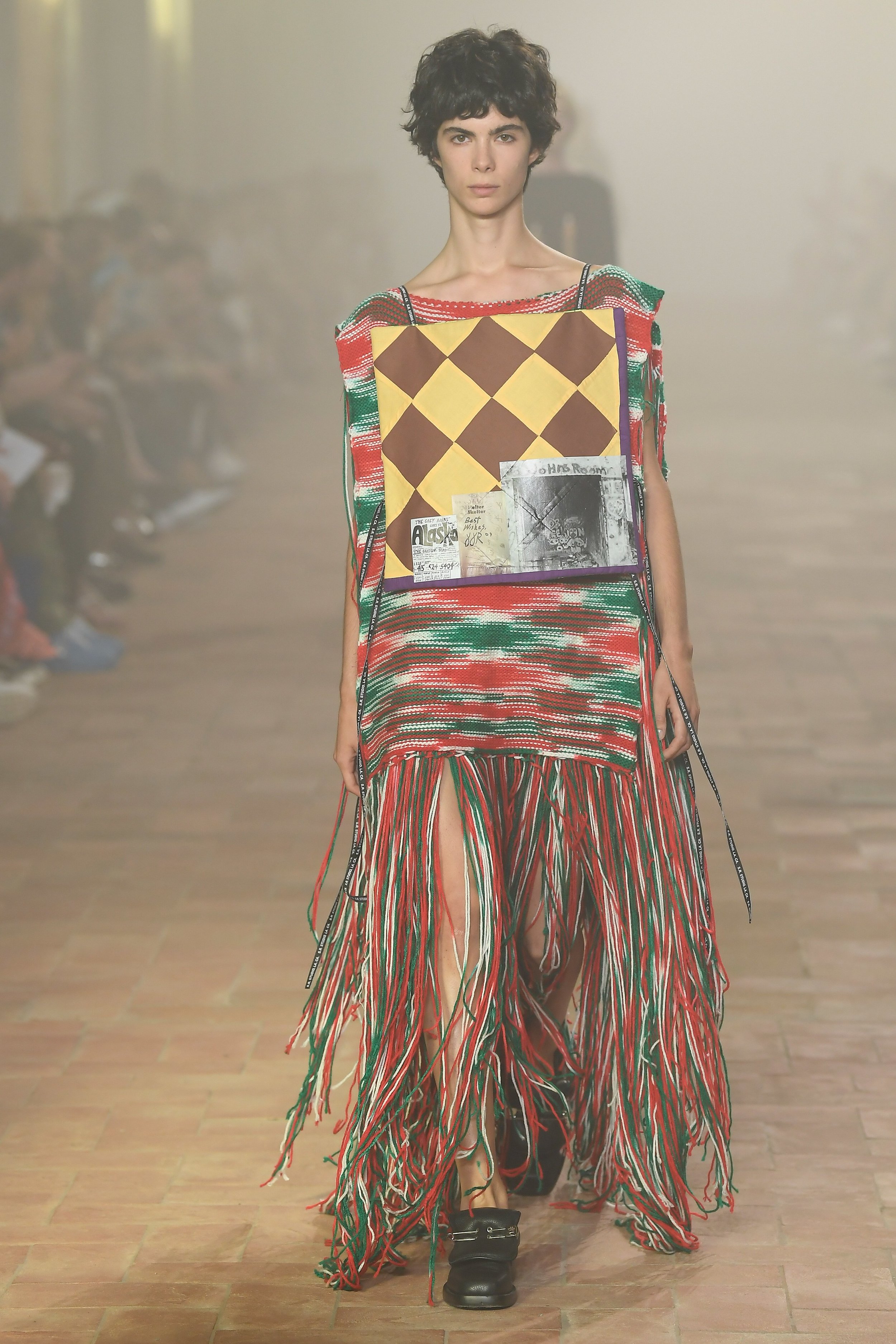
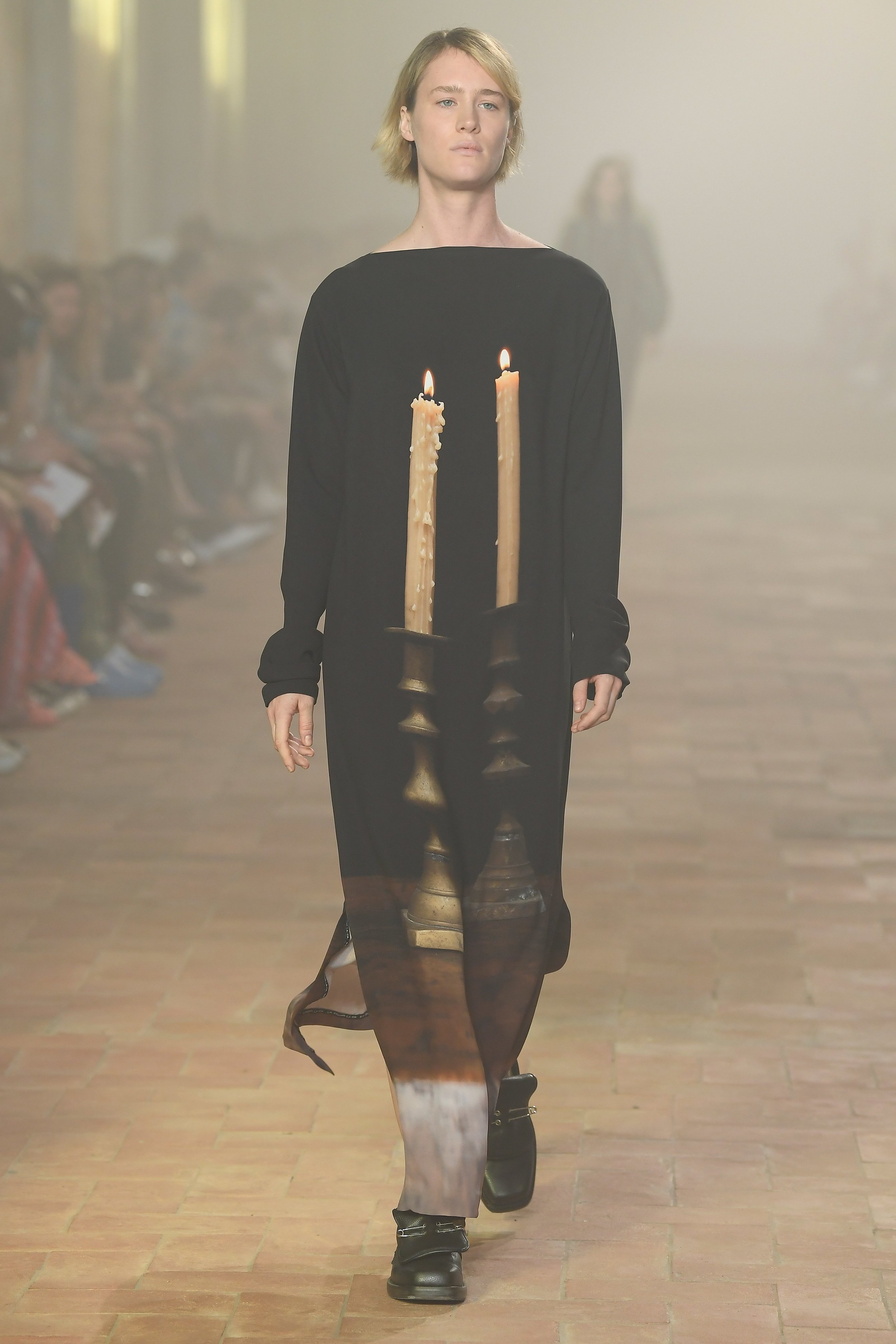
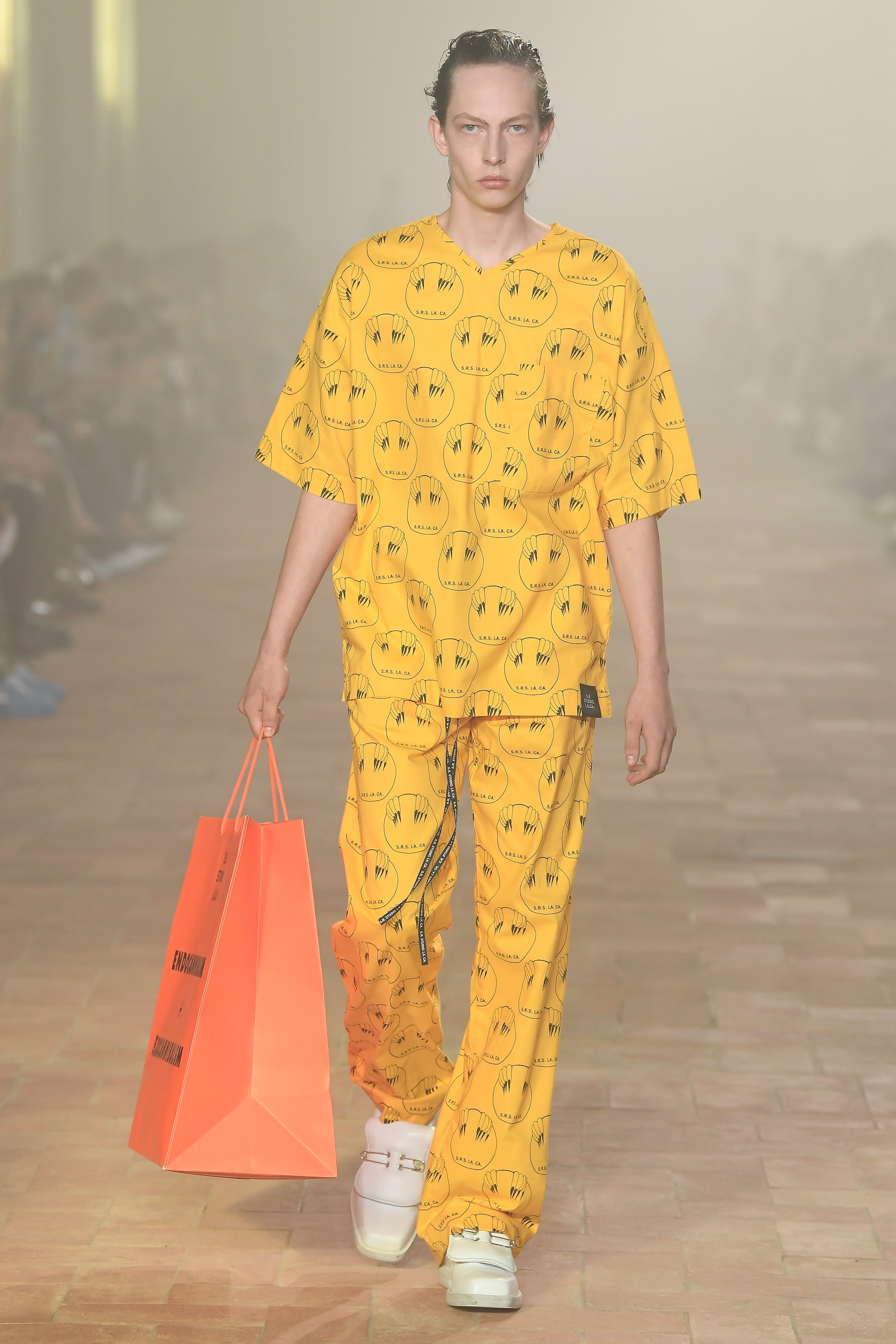
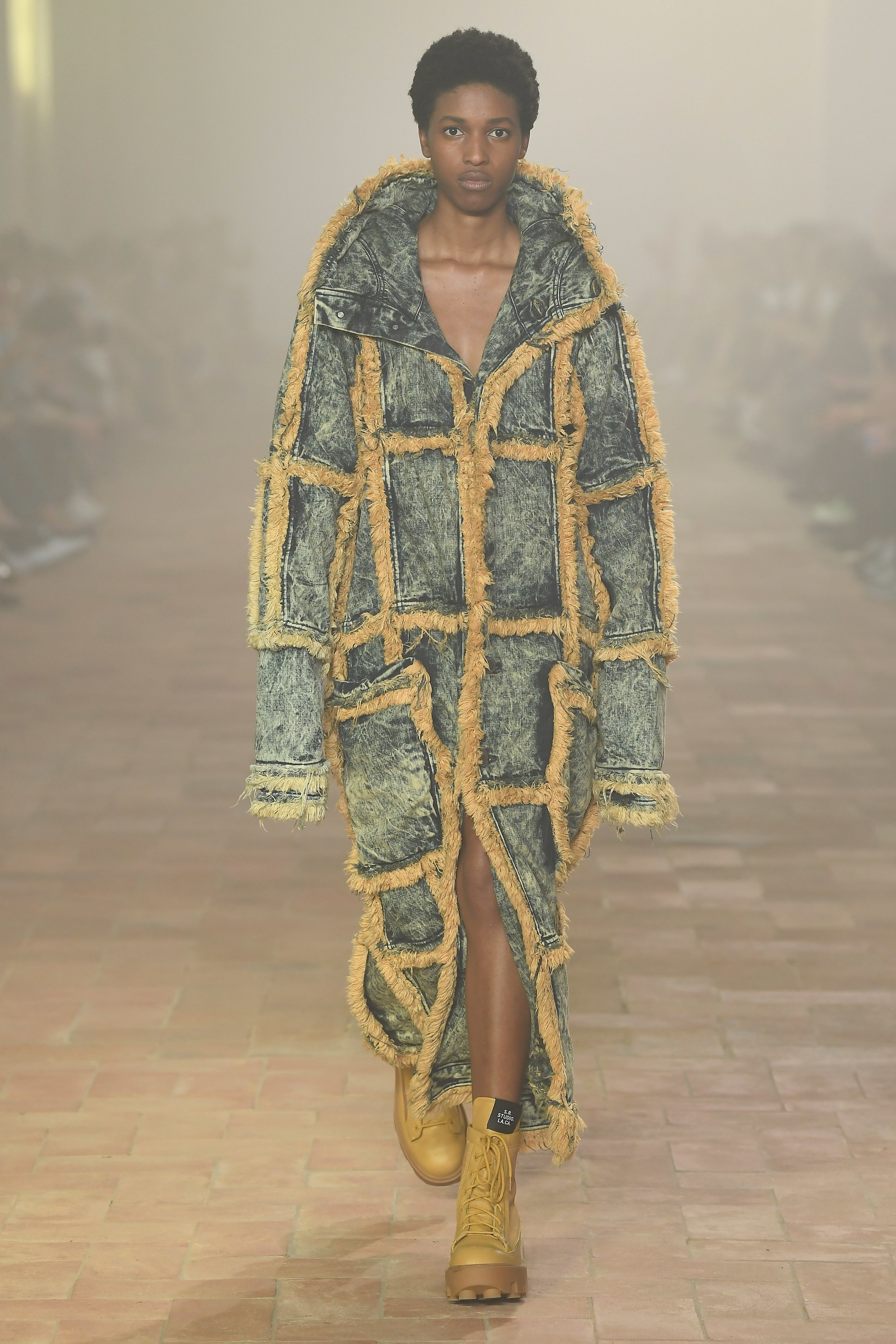
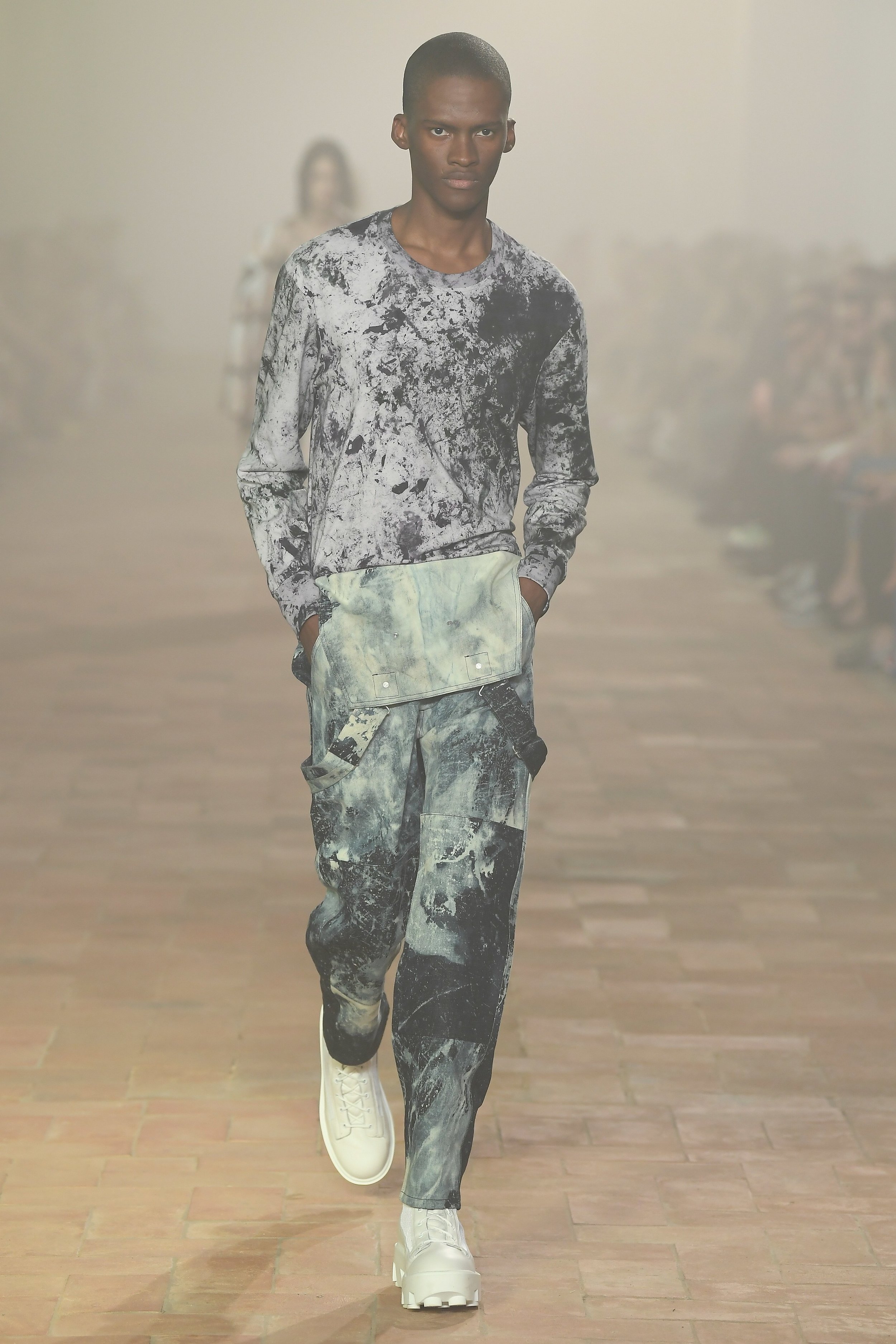
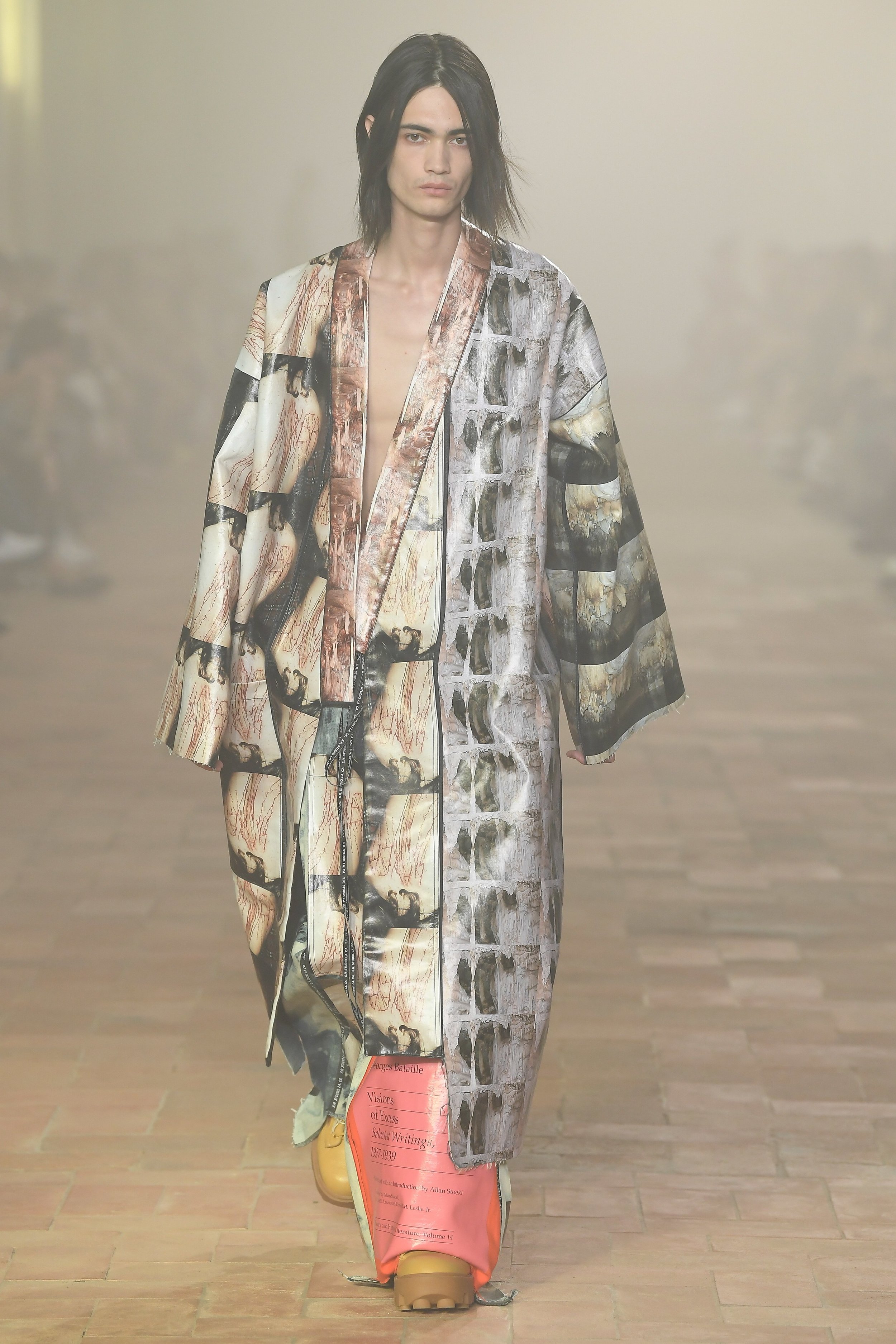
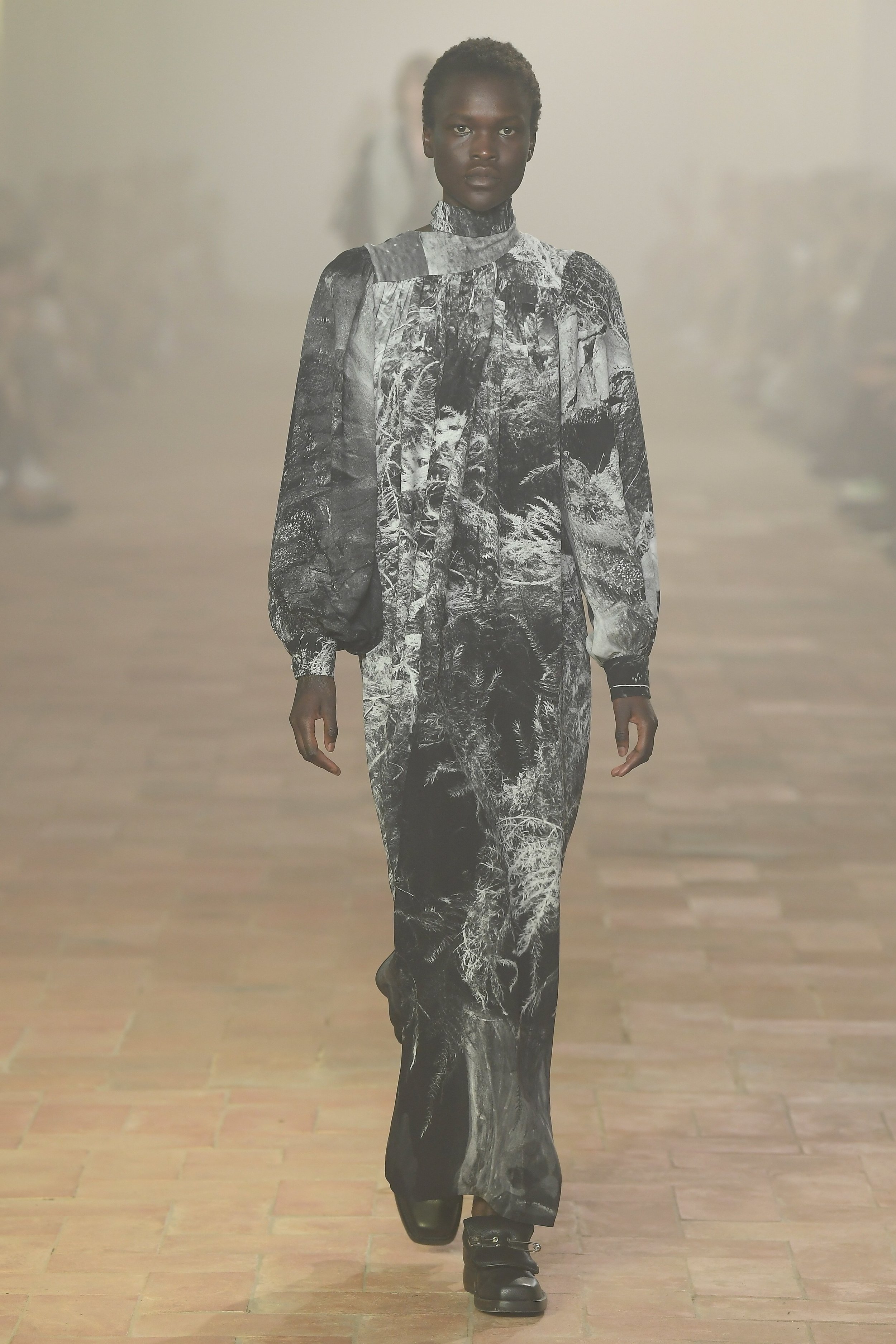
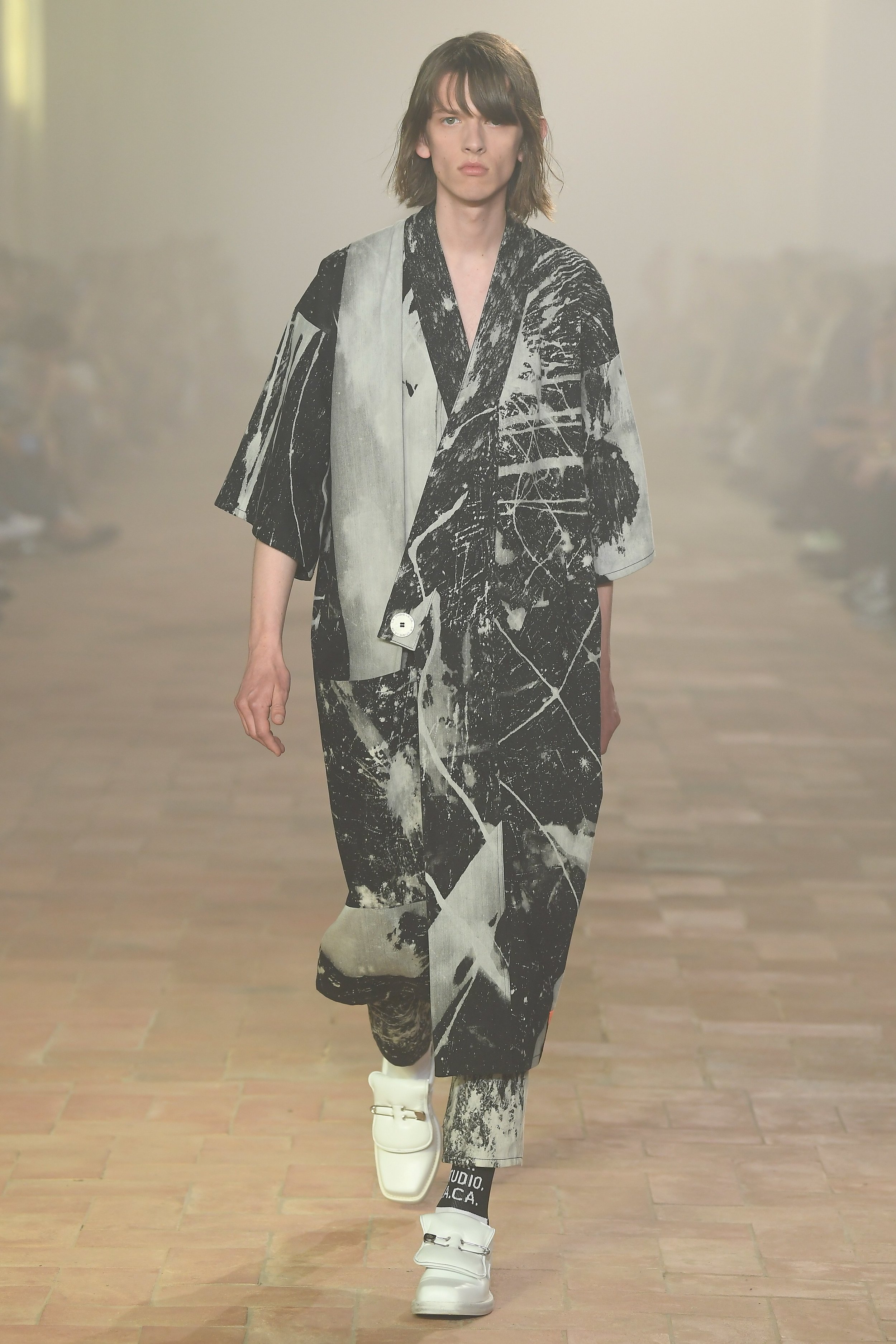
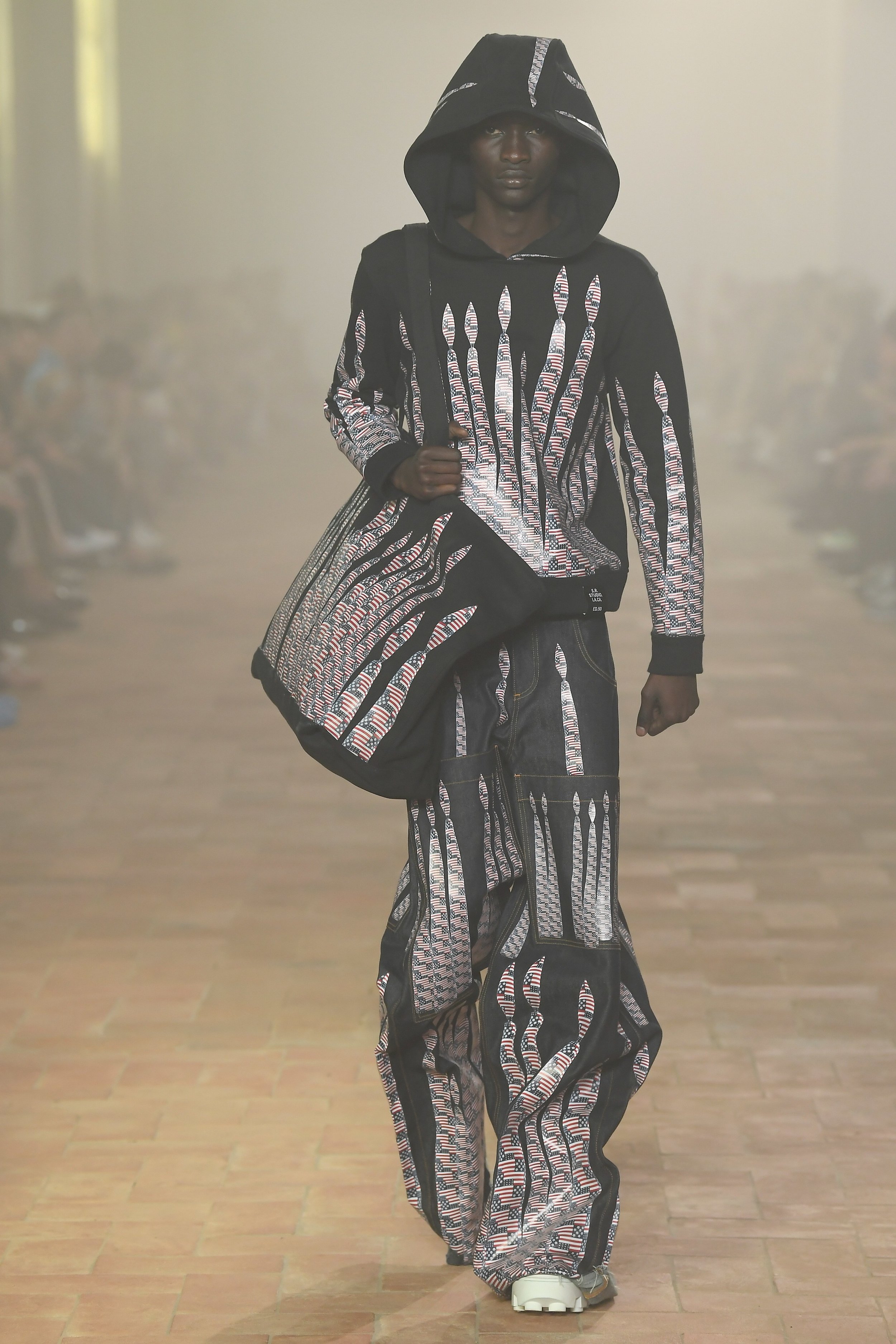
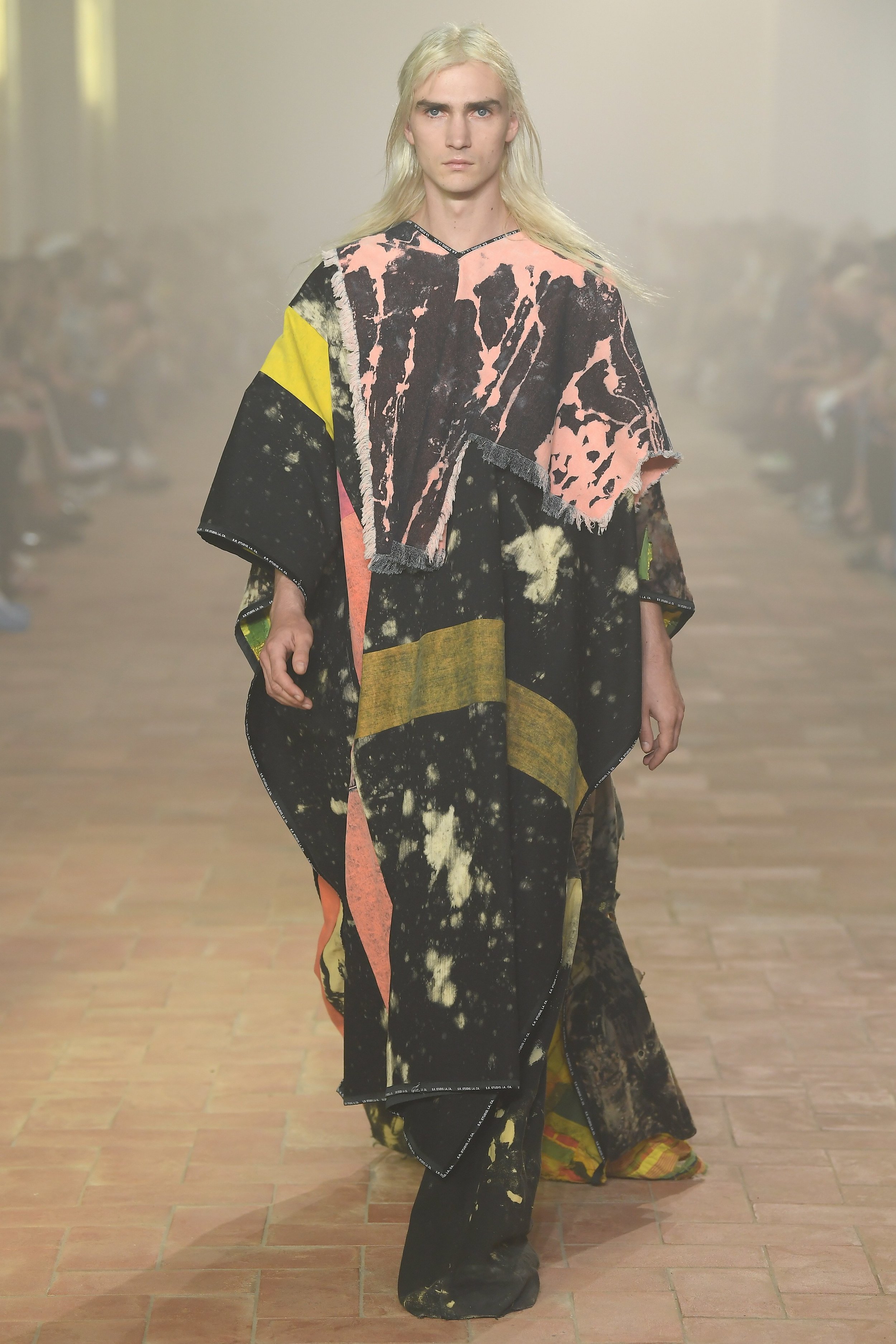
// URBAN ELEGANCE AT GIVENCHY //
Clare Waight Keller presented her first full menswear collection in the lush gardens of the Villa Palmieri in Florence and her vision of today’s modern man came to life with ease and confidence.
Inspired by the nonchalant attitude of French poet Charles Baudelaire -and the sharp style of young Korean men- the British designer focused on reinterpretations of the suit, which turned into a key message within the collection. The first look was a pale blue one worn against bare skin -and underneath a matching 3 button coat- with simple white sneakers, underlining the laid back mood of the presentation. A slouchy, double-breasted jacket worn with loose pants looked fresh and masculine, while tight, high neck tops in contrasting shades also gave the tailoring an interesting twist. Waight Keller playfully combined sportswear classics with more formal shapes, expressing the desires -and contradictions- of contemporary men.
An exclusive collaboration with Onitsuka Tiger led to brilliantly colored and graphic sneakers, complementing her strong lines and reminding us of our beloved 90s. There were, in fact, nods to The Matrix and Brit Pop mavericks within the show’s styling, which made the collection relevant. The brand’s more evocative and luxurious side became evident in the designer’s use of jacquard coats, rose printed tops, romantic flower prints and silver beads used as embellishment. One can be pragmatic and poetic at once.
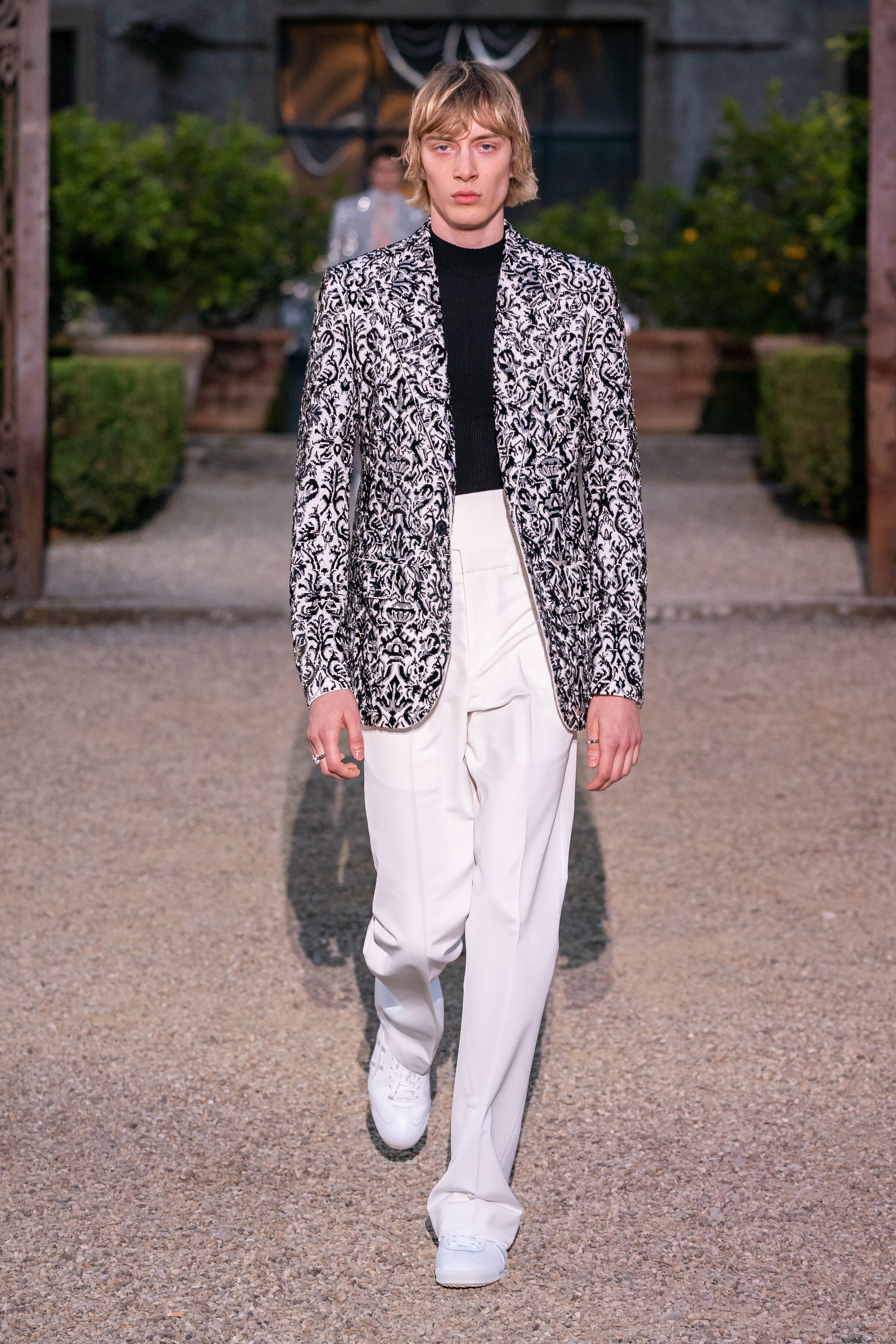
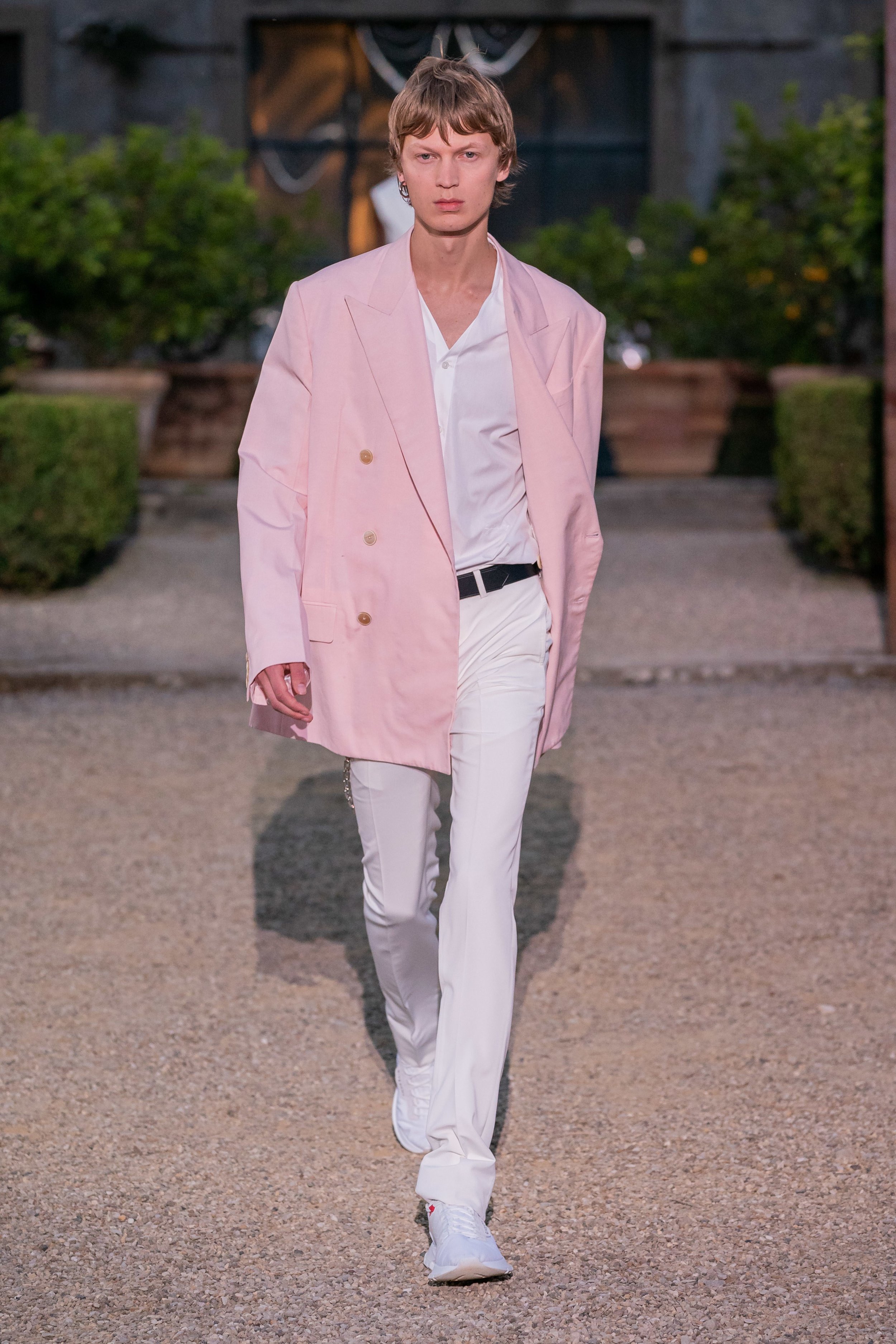
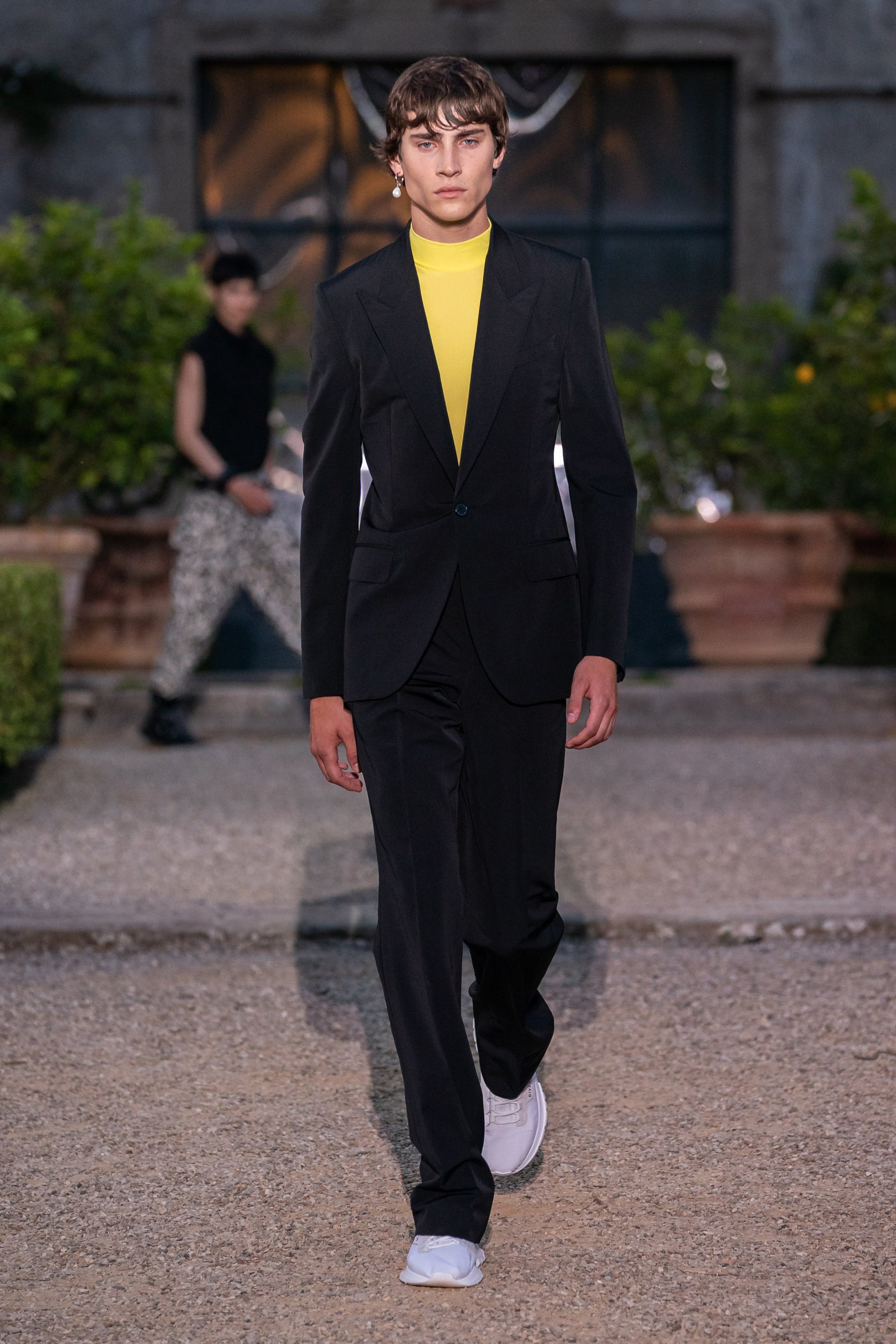
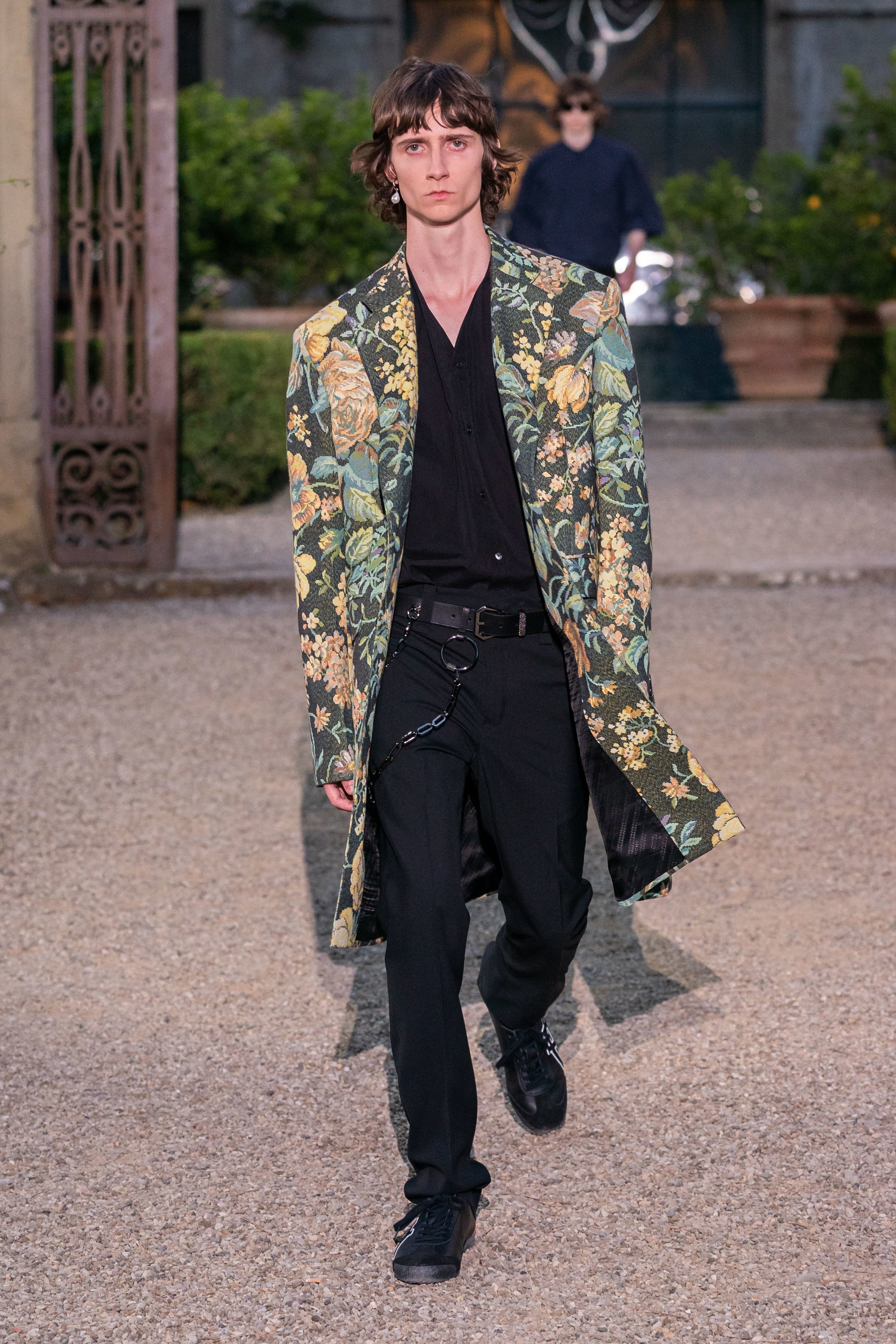
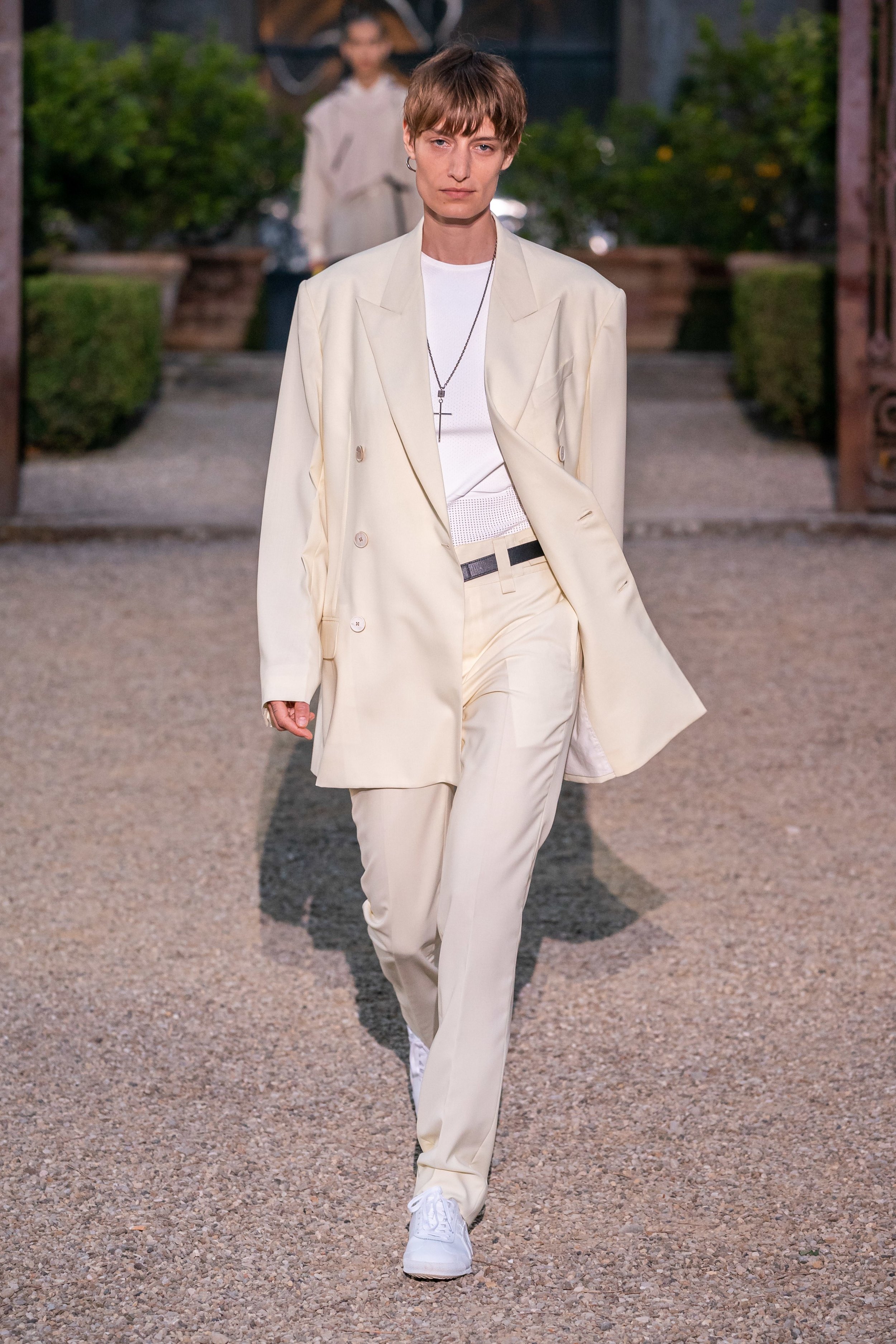

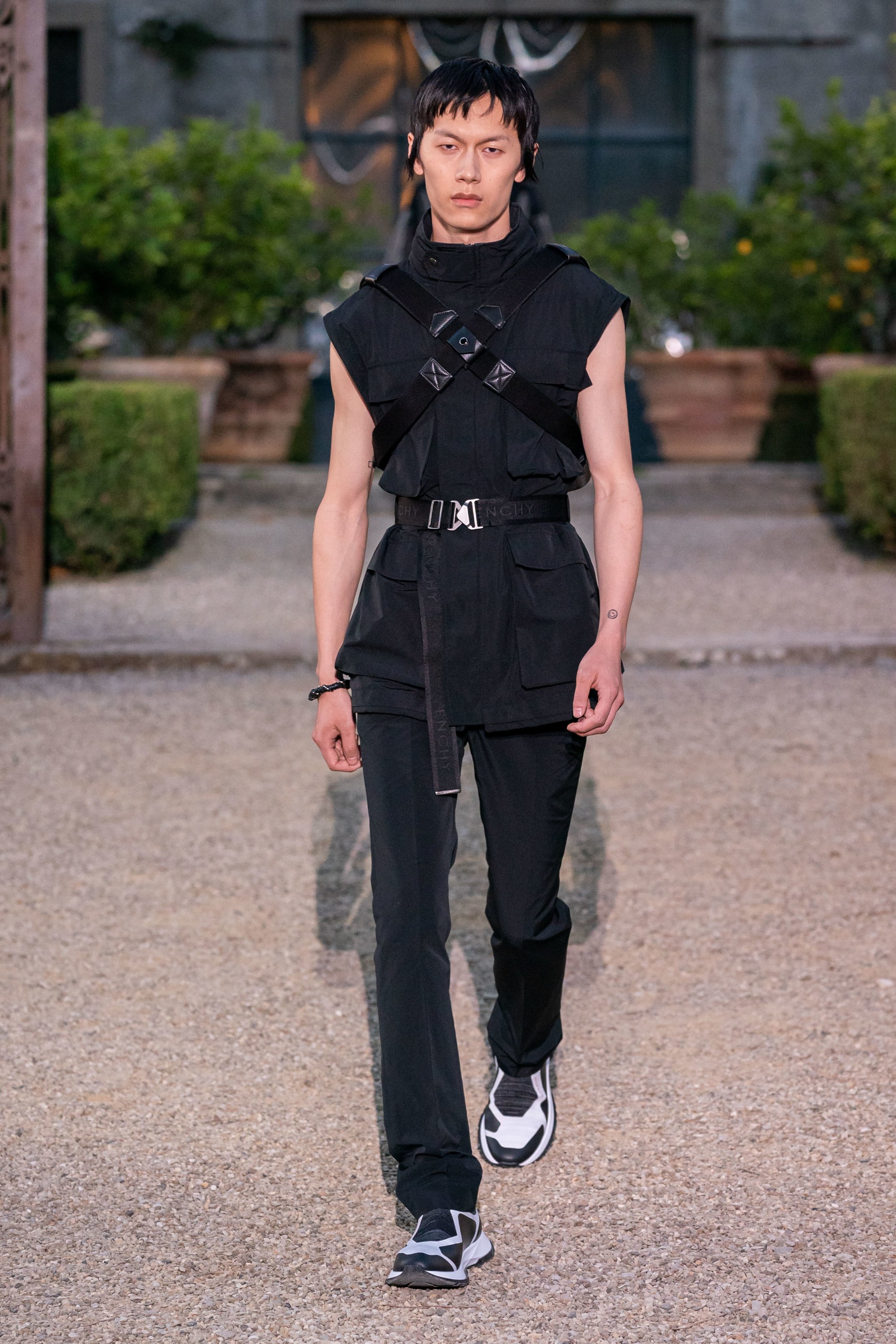
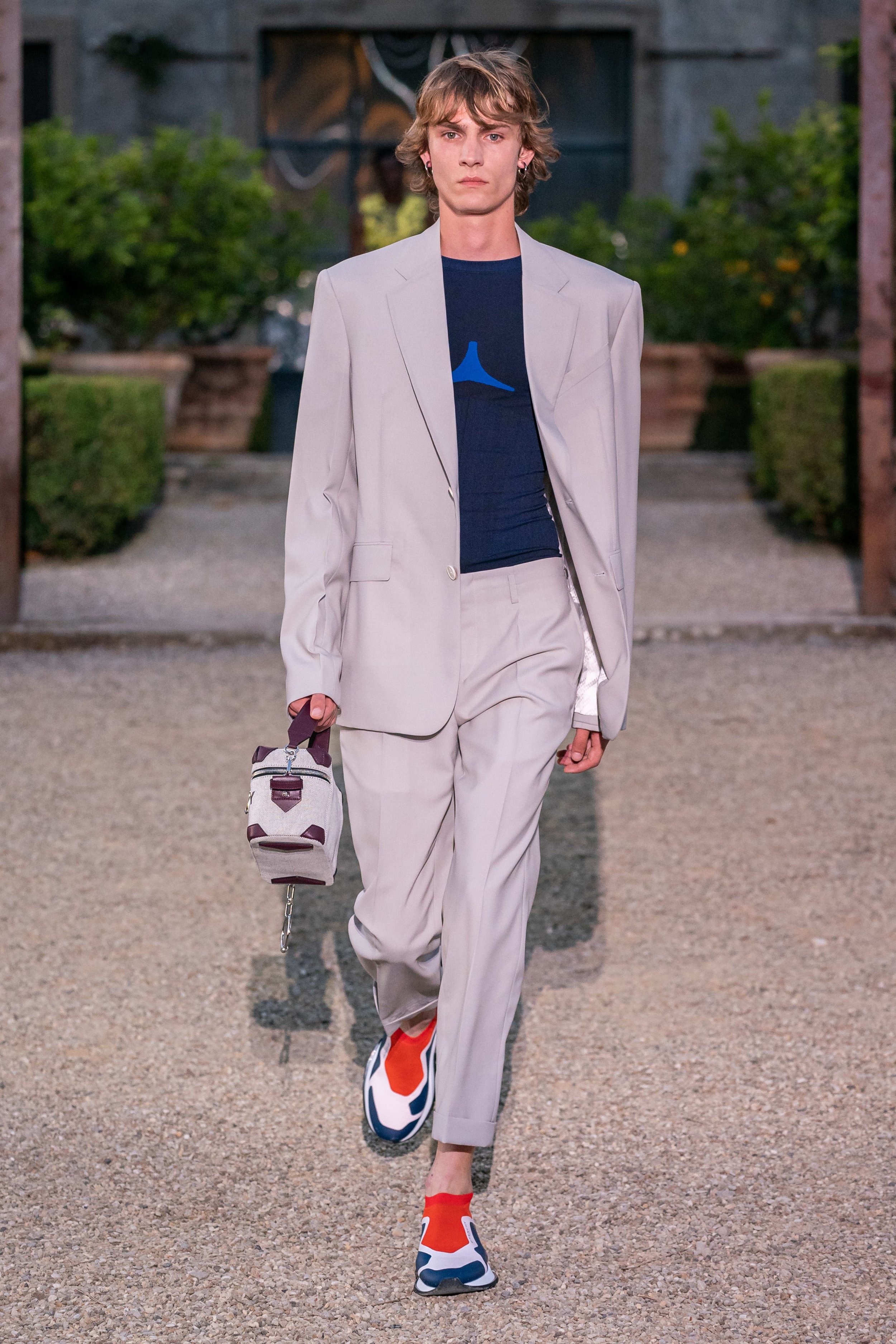
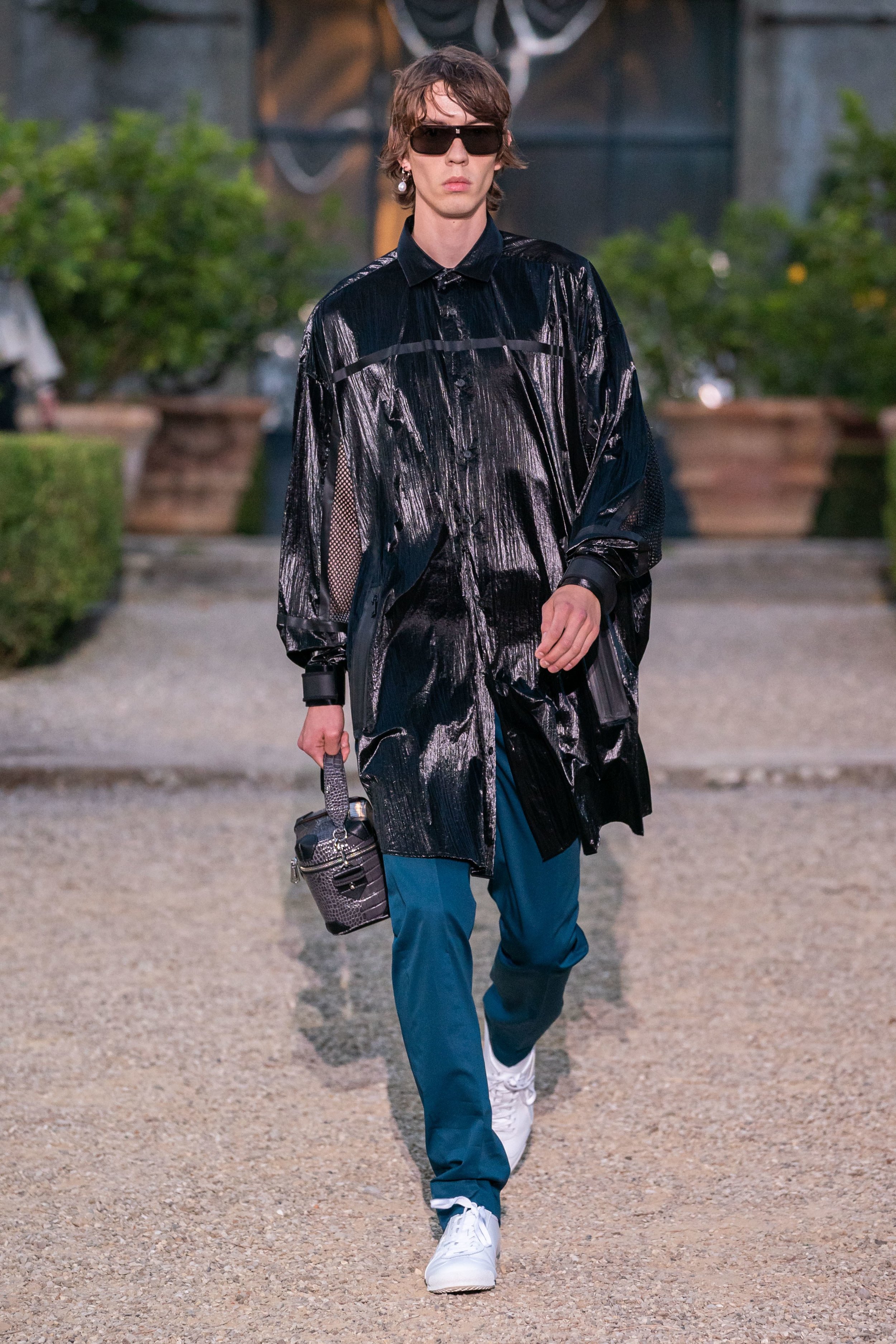
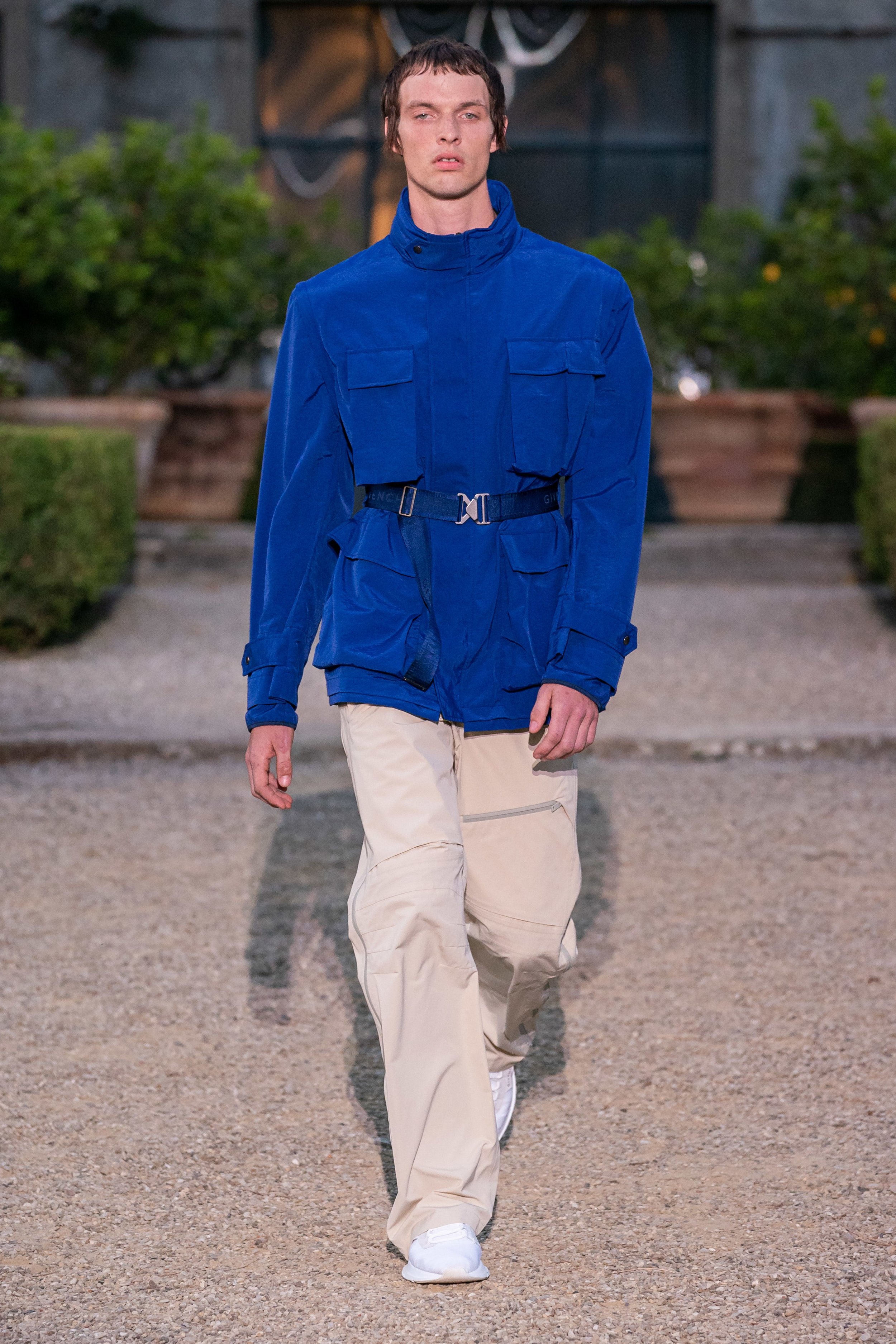

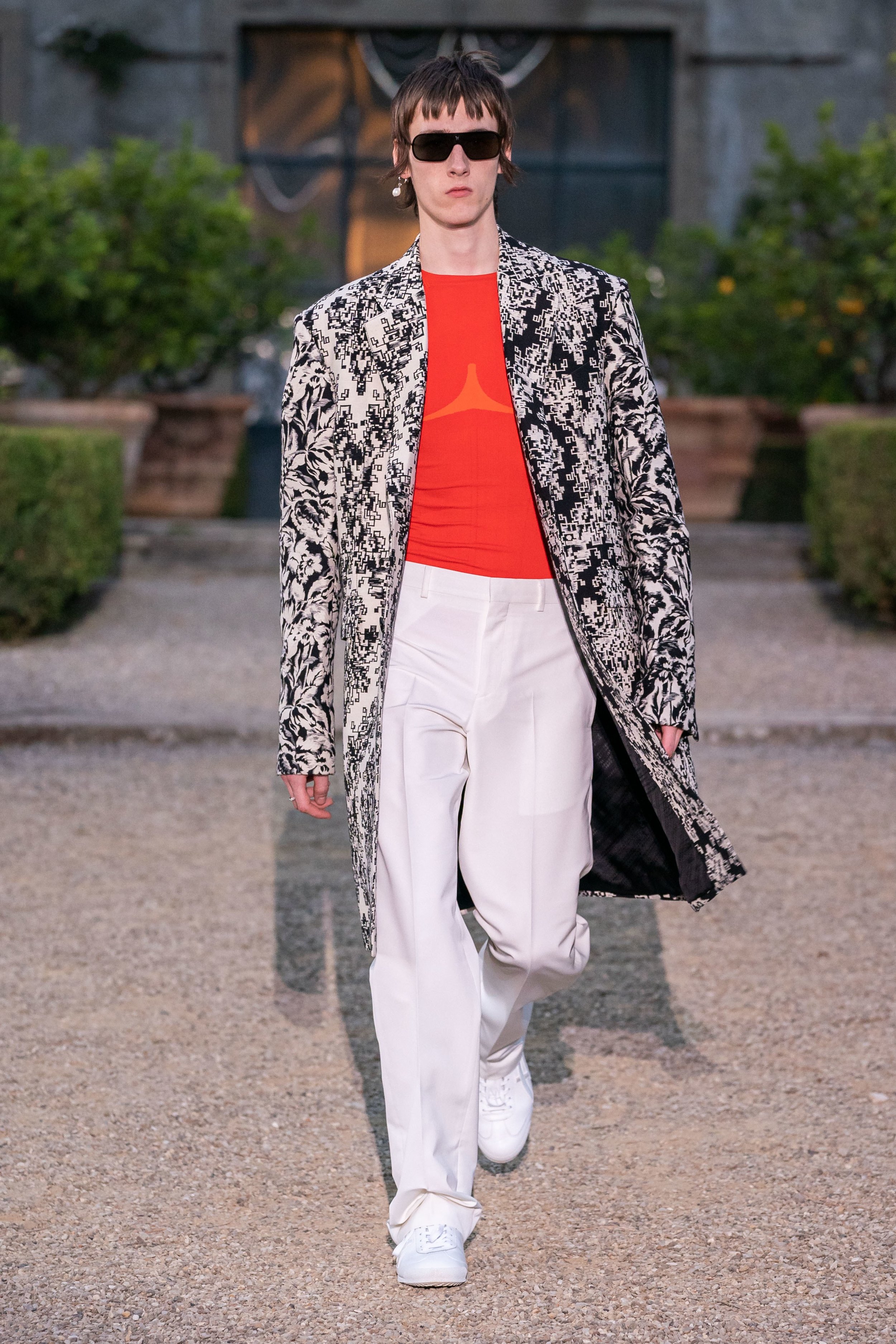
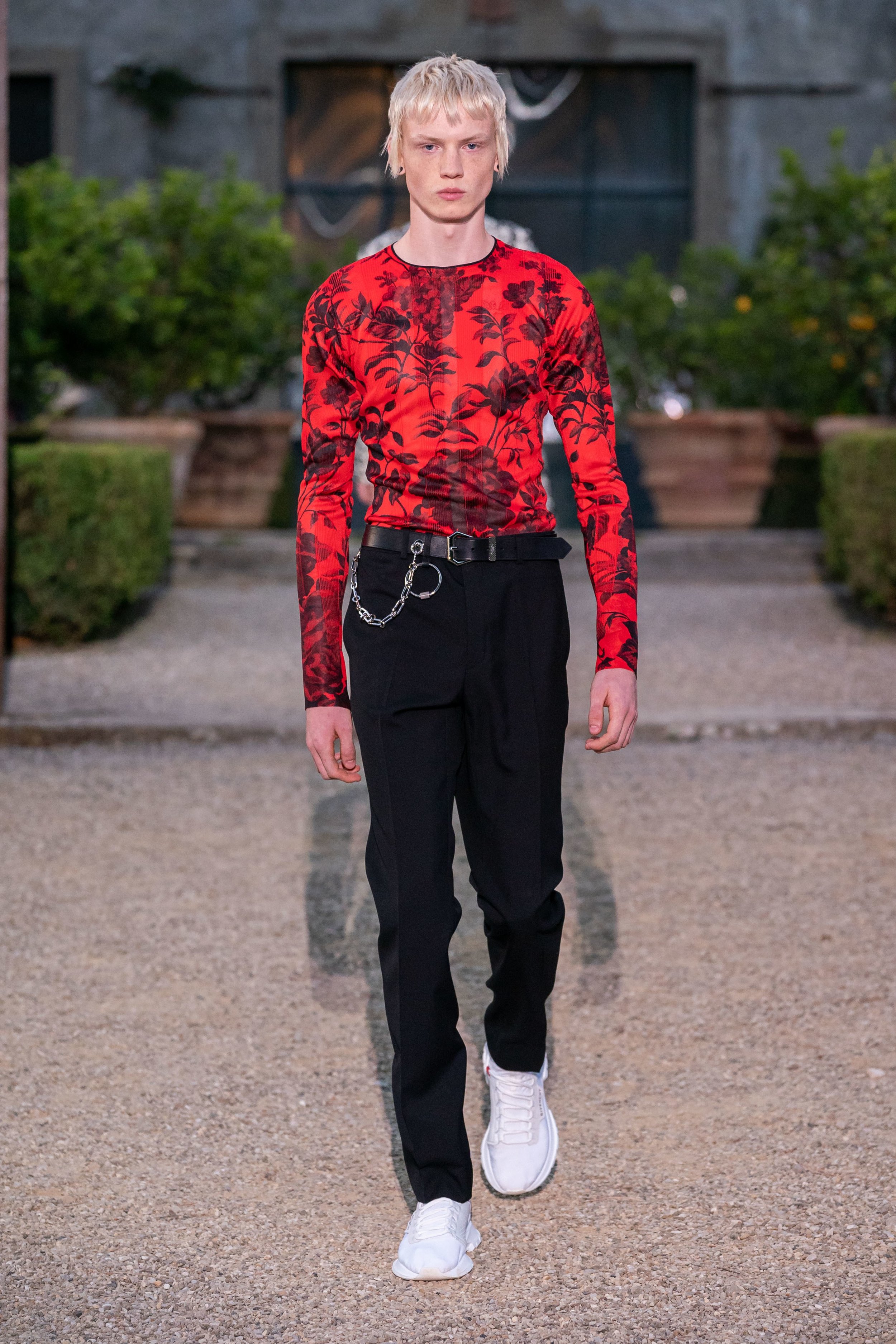
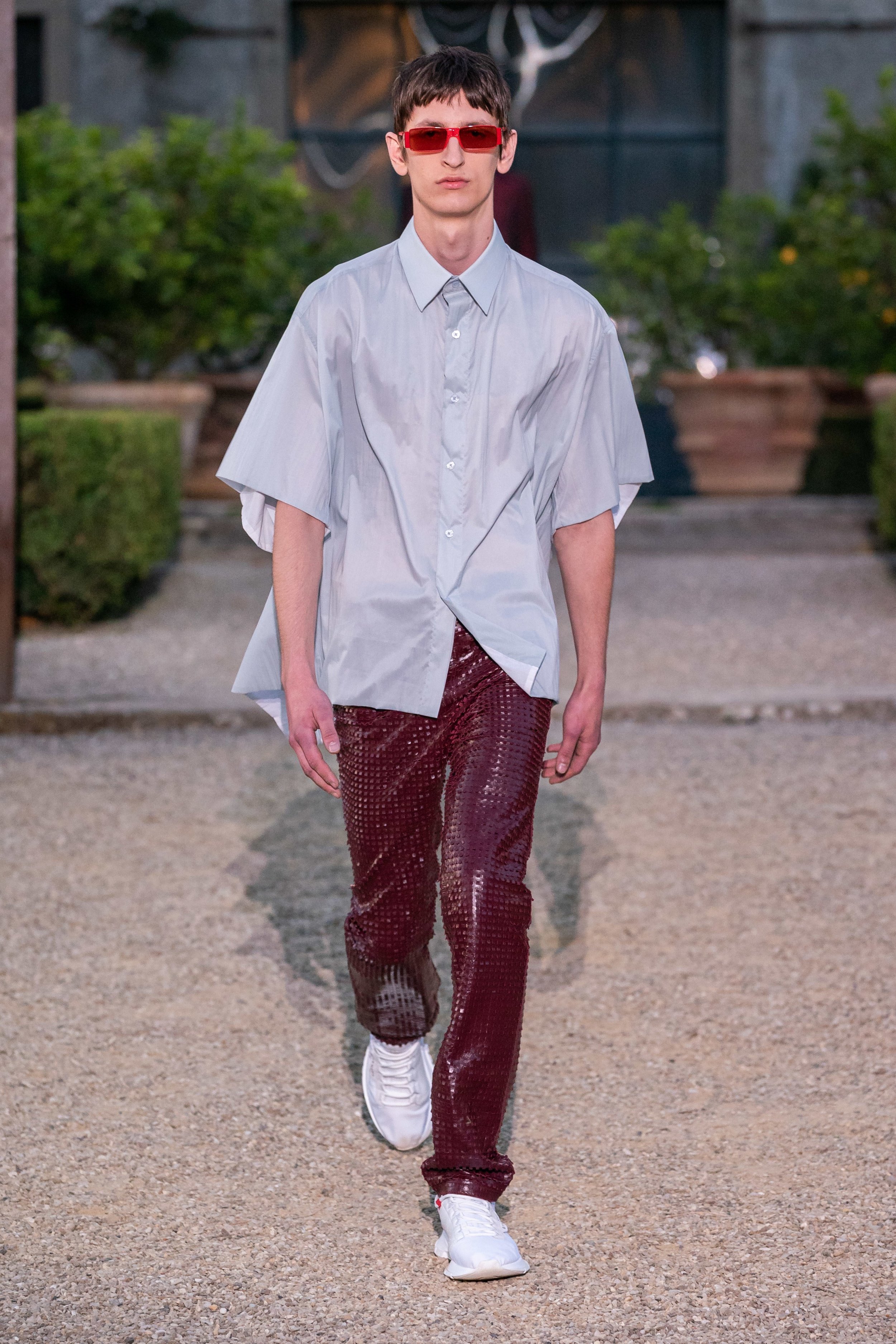
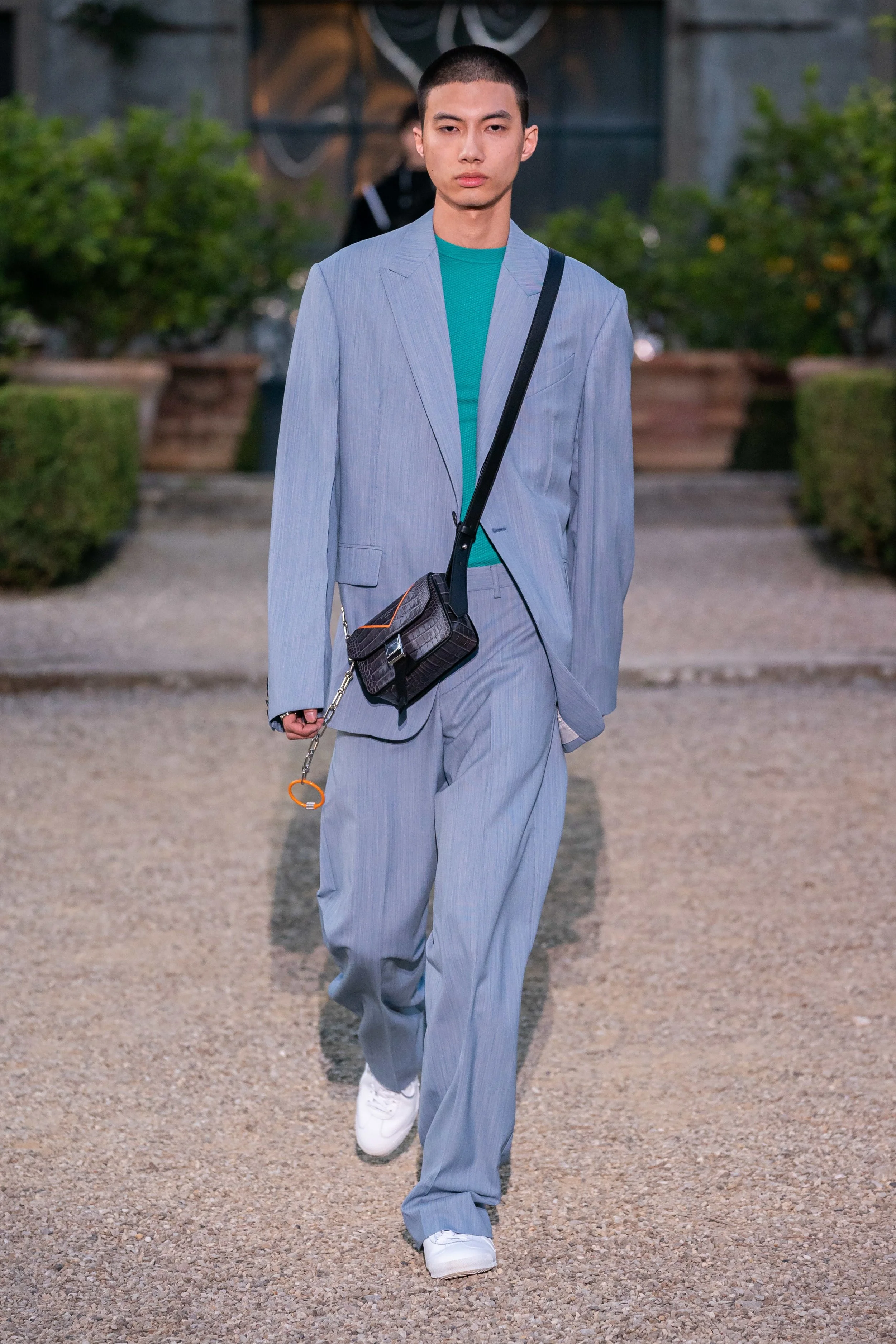
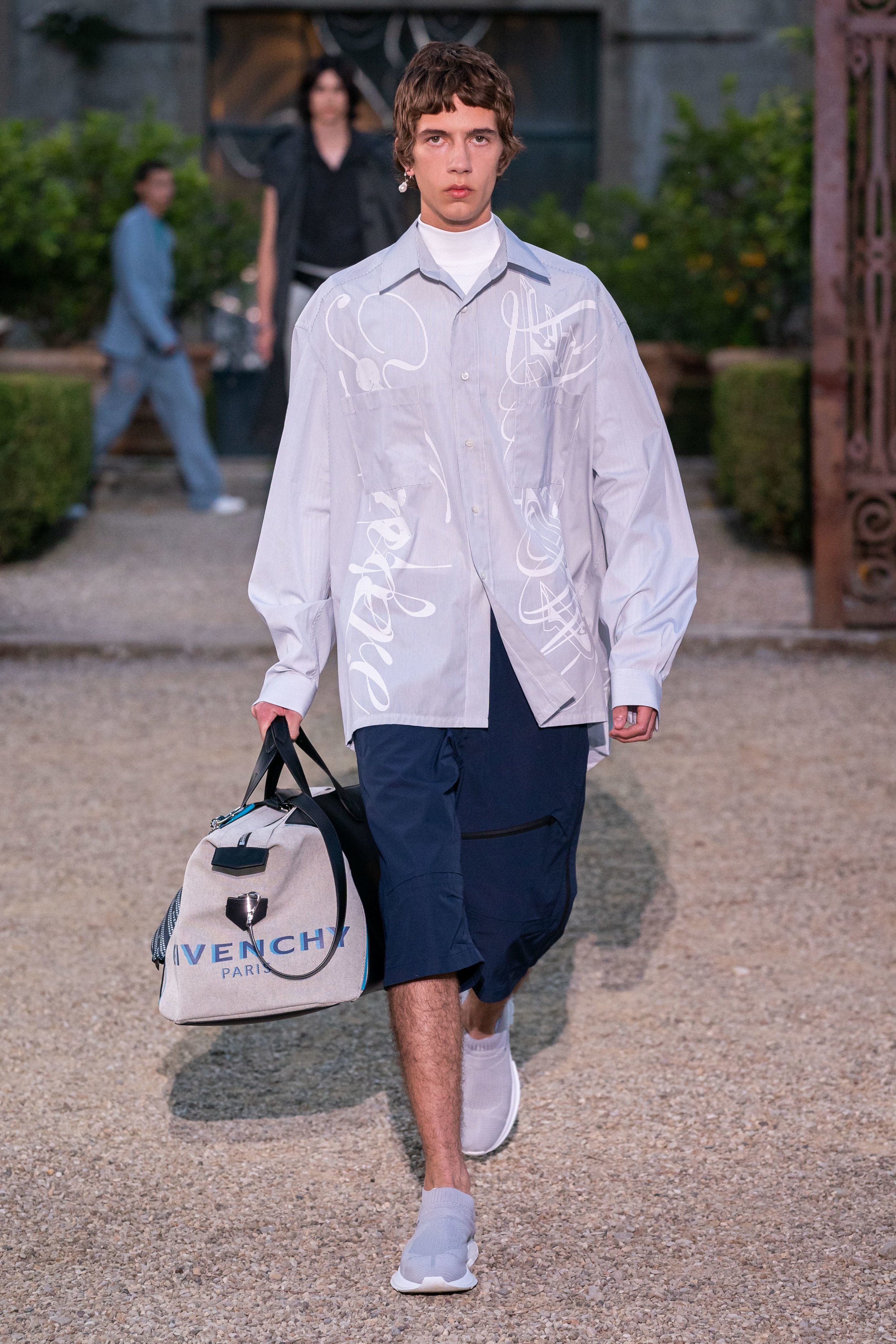
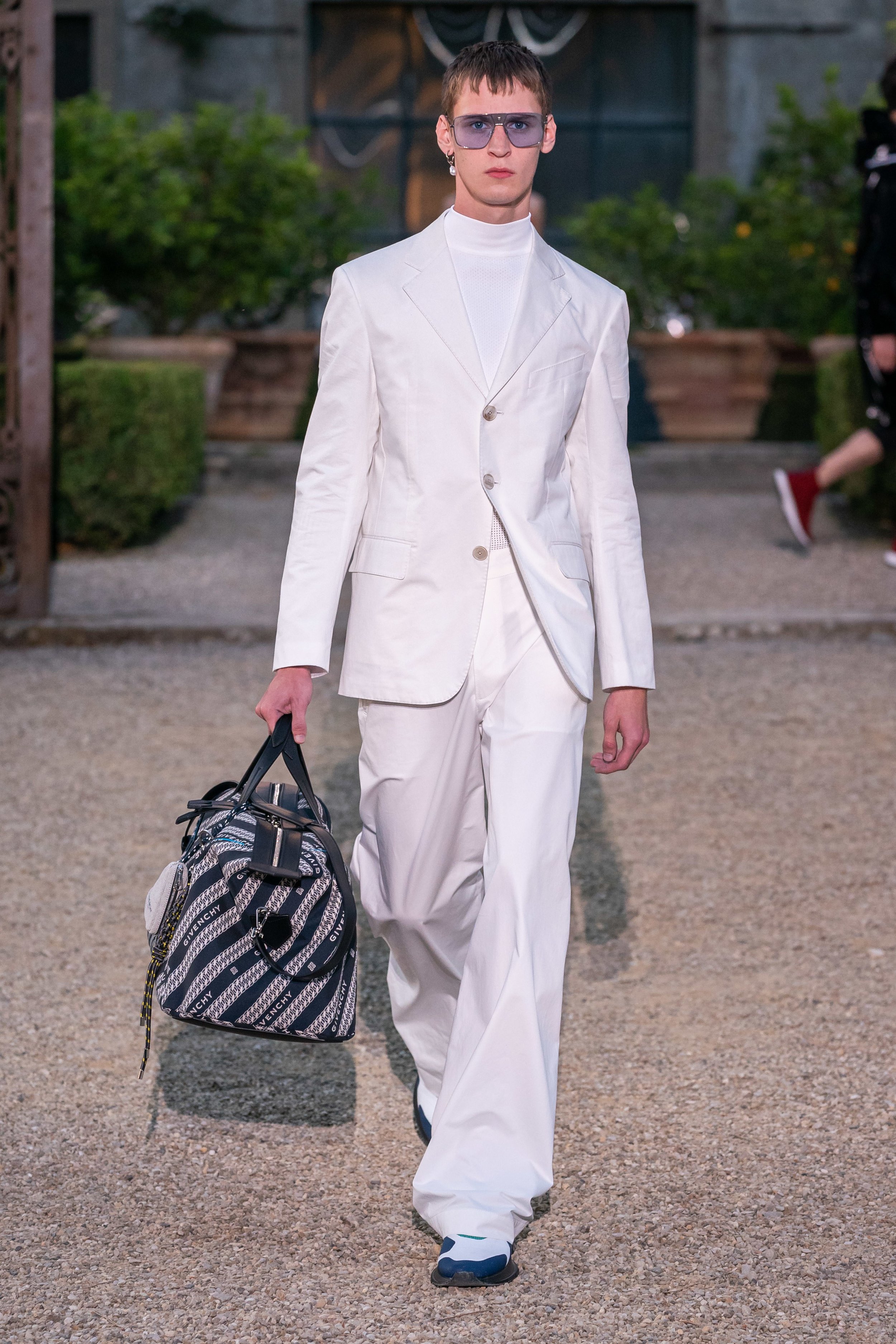
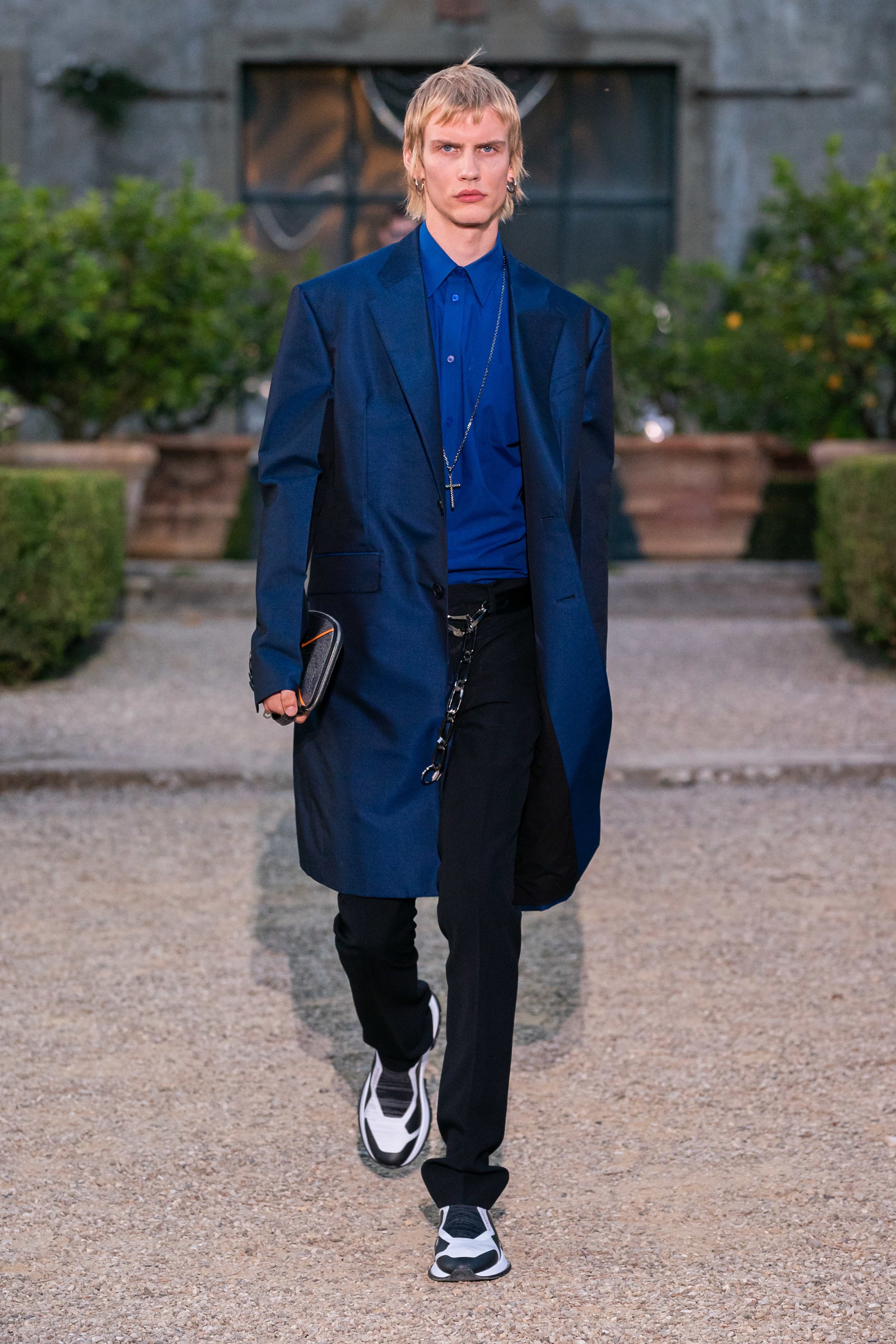
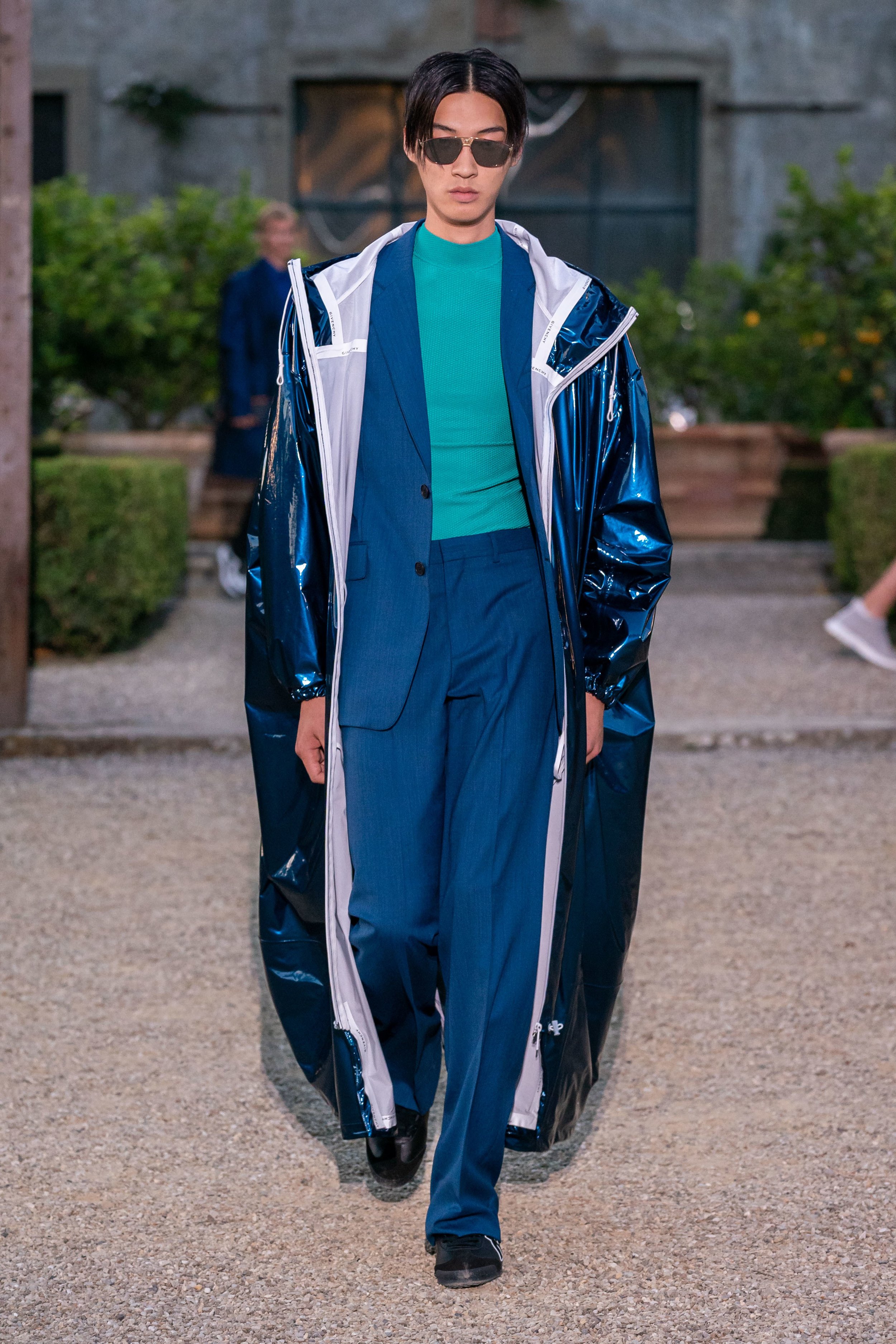
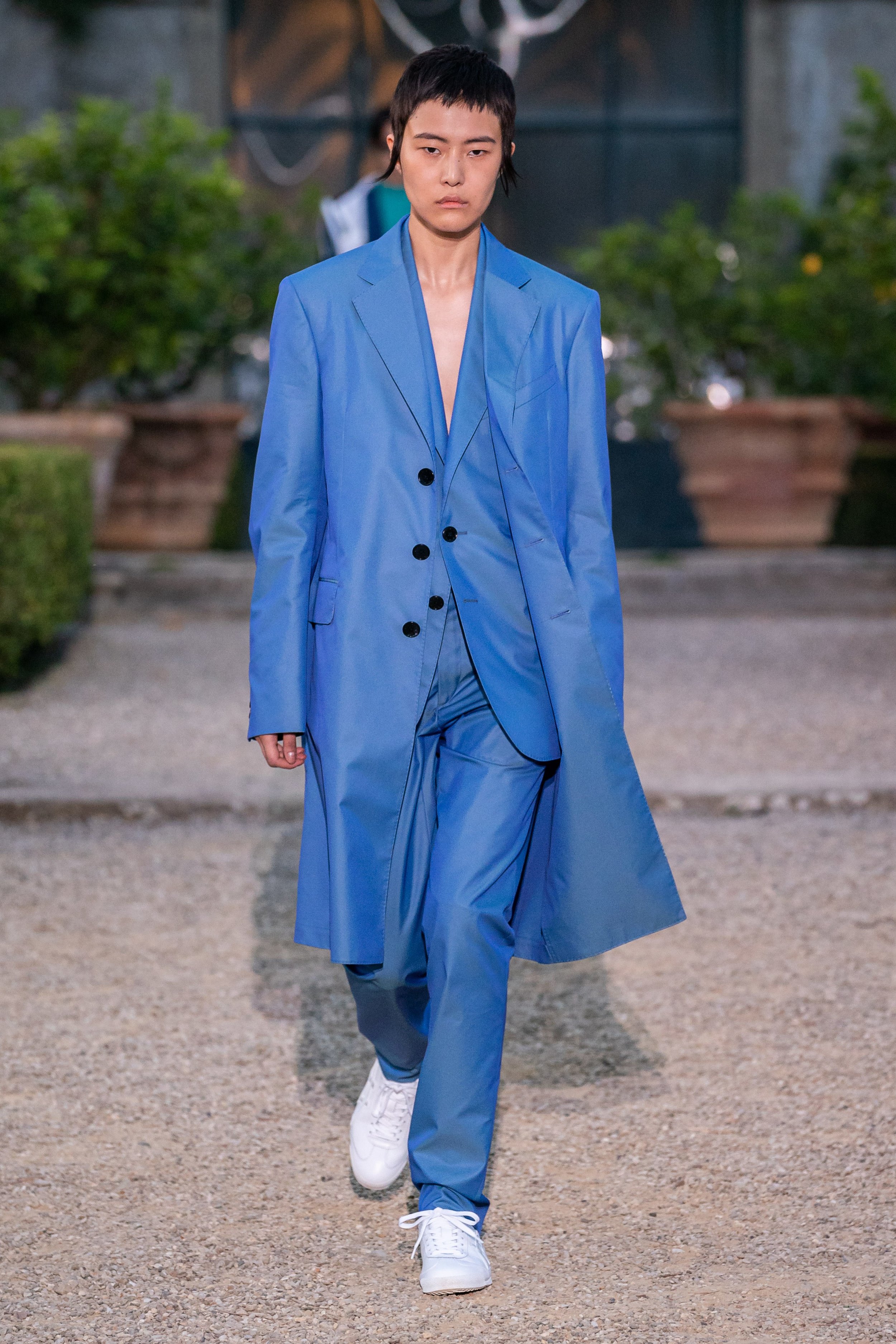
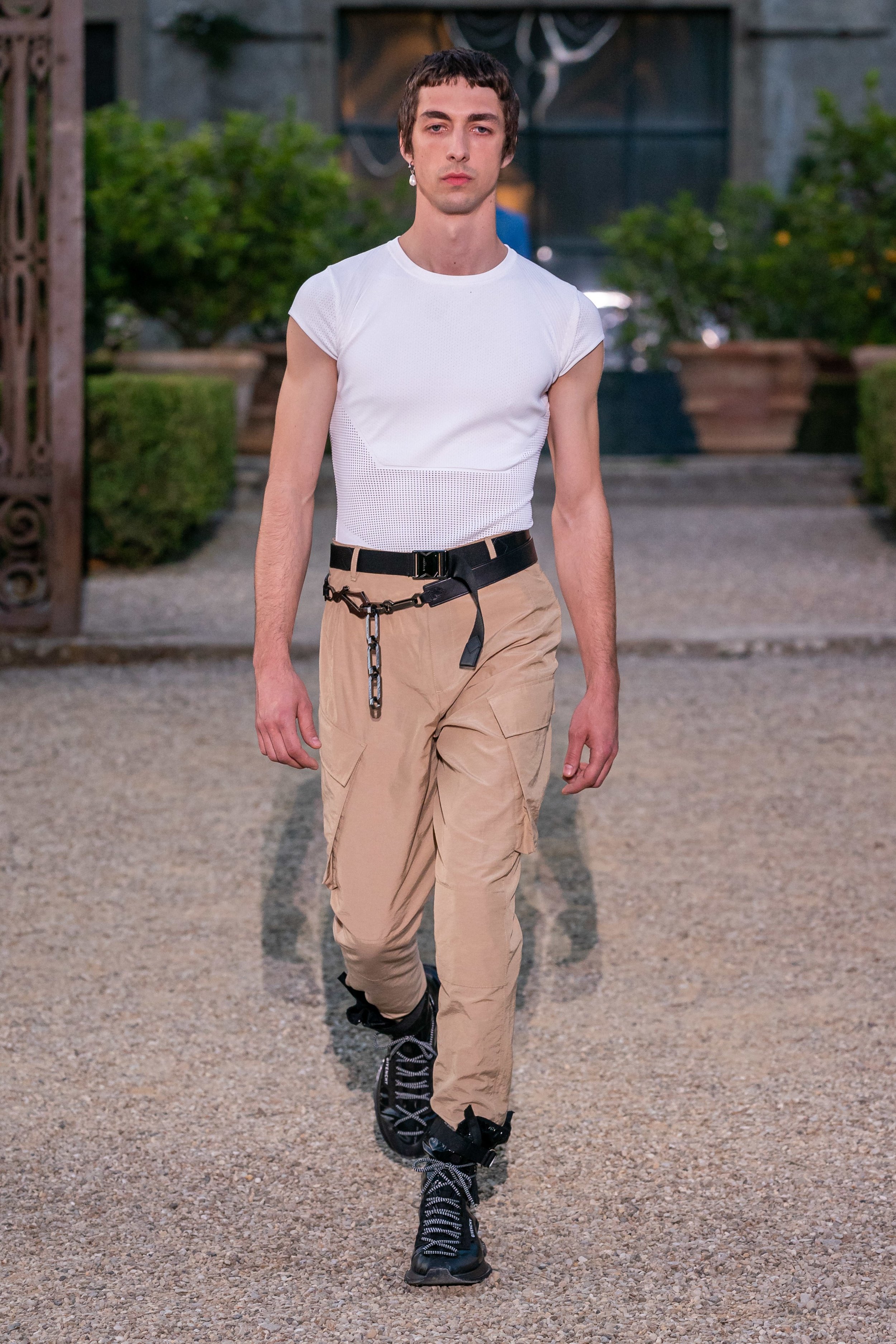
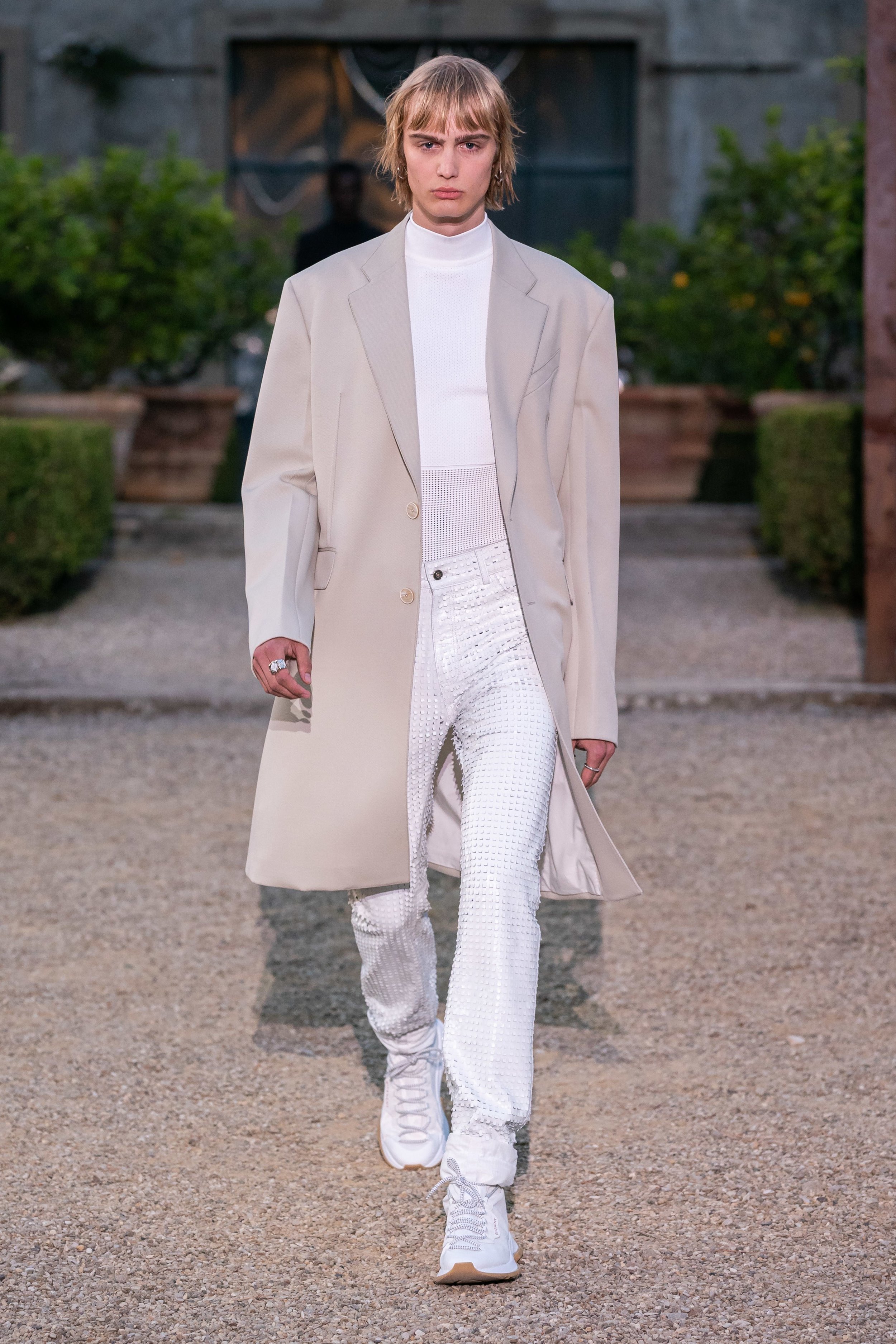
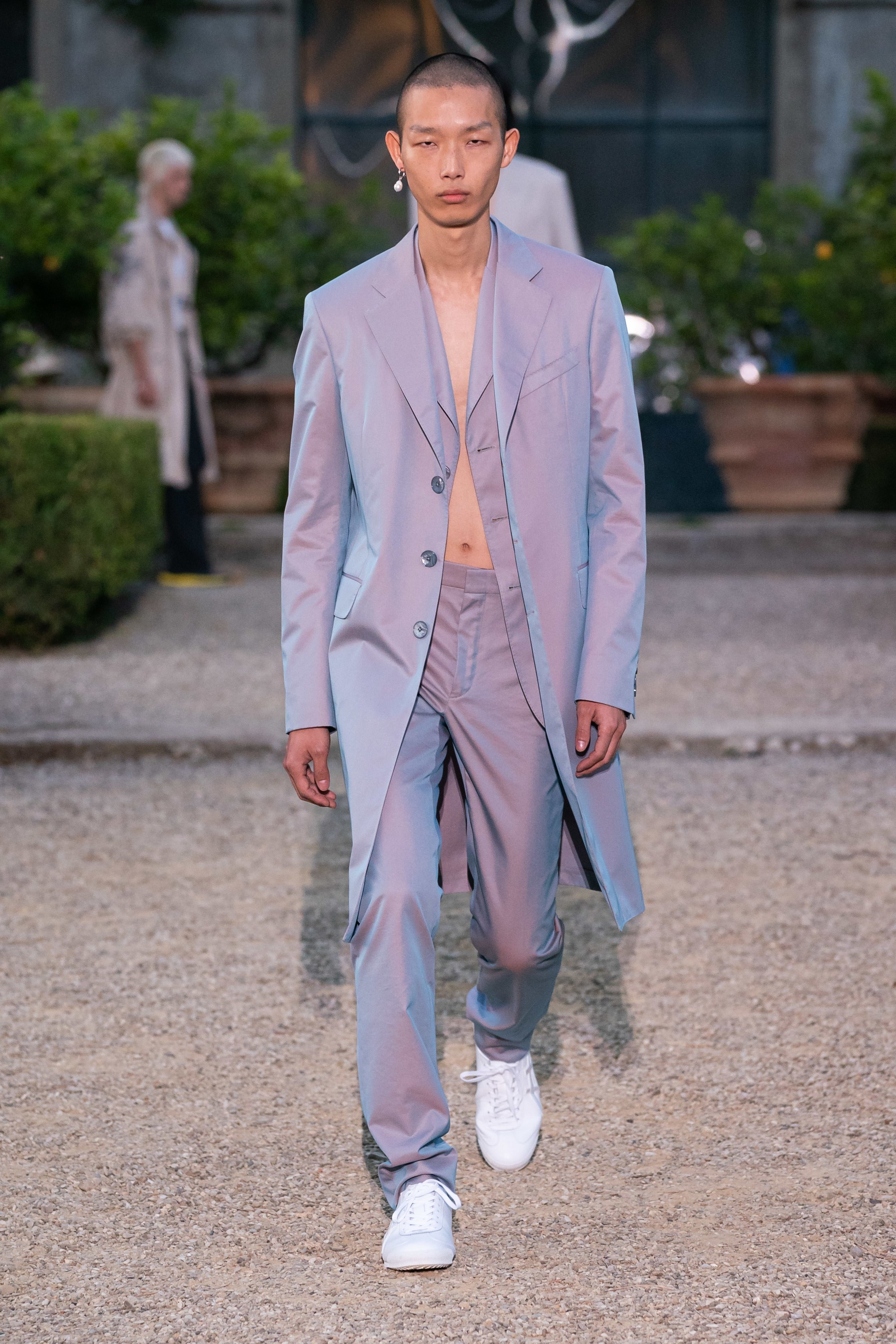
// REBELLIOUS MINDS: A REVIEW OF SHOW 2019 ROYAL ACADEMY OF FINE ARTS ANTWERP //
Antwerp fashion has often been linked with the idea of the avant-garde and a taste for provocation, as well as a refusal of the status quo. That spirit was very much alive during the show delivered by the Royal Academy of Fine Arts last weekend. Many collections were defined by their subversive appeal, as well as references to the 1990s and the 1970s, two decades famous for their social protest, sexual emancipation and extreme clothing. On the one hand, the runway was a stage for gender fluidity, personal expression and a desire for equality between the sexes, which referred directly to the “Me” decade. On the other, cross-dressers, electro hedonism and fetish-inspired clothes took us back to the risque frisson of the 1990s, and it was logical to see the students gravitate between those two spheres.
The 4th and final Year is the moment when graduates have a chance to shine, combining the strength of their inspiration with their technical abilities. 4 collections stood out, due to their precision and confident point of view.
Maximilian Rittler’s “Rock Me Amadeus” was a brilliant tribute to the spirit of rock-n-roll, which the graduate fused with an interest in the Baroque and the 18th century. Recreating stripes with zippers -and using animal print to striking effect- the Austrian walked away with the Christine Mathys prize, awarded by Dries Van Noten himself.
Nick Haemels’ “Between the Colored Lines” brought Mondrian’s architectural paintings to mind, as well as Sol LeWitt’s wall drawings. Haemels crafted beautiful men’s garments, which were making a powerful statement, while remaining surprisingly wearable.
Nel Maertens’ “Arts with Benefits” played with the idea of art in fashion through the use of painting. Collaborating with two young artists from Ghent, Maertens was looking for ways to bring the human touch into clothes, from buying knitwear yarns that were dyed by hand to reinterpreting fashion ads and iconic images with the painter’s bursh. If some of his painted accessories had a naive quality to them, they also featured powerful slogans or political situations, which reflected a critical stance towards the industry.
Representation was also key within Quinten Mestdagh’s collection, focusing on refined and dramatic womenswear clothes, which were strong and charismatic. Naming his presentation “Default by Bliss”, the Belgian graduate paired medieval aesthetics with portraits of royalty and a pixelated Kate Moss. Mestdagh’s work may also have been a comment on our obsession with celebrity culture, reinforced by our daily use of social media. With religious and social tension growing across Europe, as well as conservatism spreading around the globe, it was tempting to think that his nod to the Middle Ages was not an innocent gesture.
/ Words by Philippe Pourhashemi /
/ Runway pictures by copyright ©catwalkpictures /
// THEATRICAL FLAMBOYANCE: A REVIEW OF LA CAMBRE MODE[S] SHOW 2019 //
In a global climate of fear, political unrest and uncertainty about what’s coming next, the graduates of La Cambre Mode[s] in Brussels decided to embrace the lyrical, expressive and opulent side of fashion last weekend, delivering a show that was energetic, inspired and powerful. The creativity nurtured by the school usually leads to striking and impressive results, enhancing the individuality of each student. This year, it was lovely to see graduates purely enjoy fashion and go for it. Gangsters, rock stars, dissidents and rebels were some of the evening’s key protagonists.
The menswear collections clearly stood out, with some bold and directional proposals. Is it because we are tired of seeing so many generic -and meaningless- womenswear shows that menswear suddenly feels fresh and transgressive? From Loubna Ouaqqa’s flamboyant bad boys to Claire Delahousse’s punk renegades, it was fascinating to see 3rd year female graduates reinterpret the male wardrobe and add their own take on gender fluid looks. Presenting a stunning collection -and although still in his 3rd year- Mathieu Goosse offered dramatic shapes, refined fabrications and strong lines, which echoed traditional Couture while remaining current. The 4th year graduates also had strong messages to deliver, from Abdel El Tayeb architecturally-minded frocks -he walked away with 3 prizes- to Marguerite Tenot’s luxurious brocades and unique sense of prints, which struck a fine line between deranged and elegant.
Surprisingly perhaps, the 5th year graduates were much more subdued -and rather strategic- in their offerings, which in the end felt like an anti-climax. Even though some of the collections were beautifully put together, technically accomplished and artistically inspired, from Louis Appelmans’ exquisite tailoring to Marguerite Barroux’ deconstructed femininity, they failed to convey the necessary emotion and excess, which had been building-up throughout the presentation. We all know that final year collections are walking portfolios for the graduates -and in that sense they delivered the goods- but more madness and spontaneity would have been welcome. After all, our world has reached new heights of insanity, and fashion should have no qualms reflecting it.
/ Words by Philippe Pourhashemi /
/ Runway pictures by copyright ©catwalkpictures /
// HERMES Men's FW19 LiveStream //
// Y/PROJECT ROCKS PITTI UOMO //
Y/PROJECT FALL WINTER 19/20 AT PITTI UOMO 95
AN EXCLUSIVE INTERVIEW WITH GLENN MARTENS
Being asked to be the Guest Designer at Pitti Uomo in Florence is definitely a badge of honor for a designer, as well as a strong sign of recognition. Glenn Martens, who is only in his mid-30s, showed a powerful and directional collection within the historical walls of the Chiostro Grande del Complesso di Santa Maria Novella. We caught up with the talented Belgian to discuss his love of tradition, his ongoing vision for Y/Project and what he thinks ‘streetwear’ actually means.
Philippe Pourhashemi: How was the idea of presenting in Florence appealing to you?
Glenn Martens: I came here for the first time when I finished high school, just before my first year at university. For me, Florence remains a major cultural center in Europe, which flourished during the Renaissance. I also wanted a democratic feel for the show and picked this venue because it’s a Florentine landmark while being open to visitors. Pitti Uomo is a fair welcoming thousands of people each season and it seemed logical for me to keep that sense of openness.
PP: How did you translate this vibe within the collection?
GM: I think Y/Project speaks to very different clients and this eclecticism is reflected in the new collection. I wanted the clothes to feel opulent, but playful at the same time. There’s a whole theme in the show, which I named “Pop-Up”, where garments are doubled-up and seem to fall over the body. I also printed certain fabrics on tulle, which I layered over the originals, creating optical effects. I always like to give our clients several options to style the garments they choose, which means many pieces are pretty transformable.
PP: And you’ve expanded your line of footwear, as well as the bags. The thigh-high boots are really amazing.
GM: Yes, it’s great to have a full collection and our first one for men. The last thing I wanted to show was sneakers, so we started from this idea of a formal shoe and changing the shape, from two-tone boots and square fronts with heels to strappy sandals and sleek patent leather boots for women.
PP: There are always so many ideas in your shows, but you’ve also perfected some of the styles introduced last season.
GM: I get easily bored, but it was rewarding to be able to develop certain ideas in more depth. I showed more womenswear looks as well, which was exciting for me.
PP: Streetwear’ is as overused in fashion as the ‘luxury’ word. How do you define it?
GM: For me streetwear is a tracksuit with a print. We offer that within our collections, but now our clients also buy the tailoring and more intricate pieces. It’s important for me that they represent the brand well.
PP: What was it like working with the Pitti Uomo team?
GM: I have to say they were quite wonderful people, warm, dedicated and professional. I’m super pleased with how it’s turned out.
PP: How did you manage to get it all ready on time?
GM: Well, it was a bit of a stretch and we had to work extra hard, but somehow we managed to launch everything before the Christmas holidays.
PP: You’re not scared of the pressure, are you?
GM: Not at all. I even enjoy it.





